Find a Service Opportunity
Use the tool below to filter and search for kid-approved service opportunities!
Disclaimer - Create the Change® partners with nonprofit organizations that we believe offer age-appropriate service opportunities for youth and families. All of our partners sign a collaboration agreement promising to provide age-appropriate activities in a safe environment. Create the Change® does not run, host, or facilitate the service opportunities seen here, nor are we responsible in any way for the management (financial or otherwise) of the organizations we feature. Always be sure to research the nonprofit organization and service opportunities available to make sure it's a good fit for you before getting started. You may find the organization's contact information on their profiles.
7336049, , , [{id=141556132134, createdAt=1698057511689, updatedAt=1706198016635, path='create-personal-notes-of-inspiration', name='Create Personal Notes of Inspiration', 2='{type=string, value=School on Wheels of Massachusetts }', 34='{type=string, value=Notes can be targeted to any age group, from artwork to and from kindergarteners and elementary school students - to letters of encouragement targeting middle, high school, college or trade school students.
Create notes of inspiration to kids of any age.
Send to: School on Wheels of Massachusetts, Inspirational Notes, 100 Laurel Street, Suite 121, E. Bridgewater, MA 02333.
Please include your name, contact information and that you learned about this through Create the Change®so that we may acknowledge you accordingly.
}', 3='{type=string, value=Create Personal Notes of Inspiration}', 5='{type=list, value=[{id=3, name='People', order=2, label='People'}]}', 6='{type=list, value=[]}', 10='{type=string, value=}', 11='{type=string, value=Parent supervision suggested for younger children }', 12='{type=string, value=create-personal-notes-of-inspiration}', 14='{type=string, value=It's a great way to encourage empathy and give hope to less fortunate students. }', 16='{type=string, value=Paper, markers, crayons or colored pencils.}', 17='{type=string, value=}', 18='{type=list, value=[{id=2, name='None', order=1, label='None'}]}', 21='{type=list, value=[{id=5, name='Daily', order=4, label='Daily'}]}', 22='{type=string, value=Write letters or create artwork to add inspiration to each backpack we send! Children and teens love to receive notes from children and families and we'd love to include yours! }', 23='{type=string, value=}', 24='{type=string, value=}', 25='{type=option, value={id=1, name='From Home/Anywhere*', order=0, label='From Home/Anywhere*'}}', 27='{type=option, value={id=3, name='1 - 2 hrs', order=2, label='1 - 2 hrs'}}', 29='{type=string, value=}', 30='{type=list, value=[{id=1, name='K - 2nd', order=0, label='K - 2nd'}, {id=2, name='3rd - 5th', order=1, label='3rd - 5th'}, {id=3, name='6th - 8th', order=2, label='6th - 8th'}, {id=4, name='High School', order=3, label='High School'}]}', 31='{type=list, value=[{id=135564672330, name='School on Wheels of Massachusetts'}]}'}, {id=141556132188, createdAt=1698057512361, updatedAt=1698172691748, path='supply-drive-for-cats-and-kitties', name='Supply Drive for Cats and Kitties', 2='{type=string, value=Heaven on Earth Society & Perry's Place}', 34='{type=string, value=In-Person Drive Option:
Decide on a time frame for collecting donations and a place to do so. We suggest running your drive for a couple of weeks. You may want to consider hosting your drive at your school, place of worship, local businss or in your neighborhood. (Be sure to get permission from the necessary adults involved.)
Decorate collection boxes to be displayed.
Create flyers on a computer or decorate posters announcing the collection. You should include the items you hope to collect. Get a list of such items from https://heavenlypets.org/ways-to-give/shop-and-wishlists/" target="_blank" rel="noopenerour Wish List or check out the list below. You can also use social media and email to help promote your drive.
Wait for items to start rolling in. (You may want to collect the items from the collection boxes from time and time and move them to your house or another storage location during the course of the drive.)
When your drive is over, schedule a time to drop off all the collected materials by contacting mailto:info@heavenlypets.org" target="_blank" rel="noopenerinfo@heavenlypets.org. If you choose to conduct a virtual drive using https://smile.amazon.com/hz/charitylist/ls/2MGZA2U0SH9PE/ref=smi_ext_lnk_lcl_cl" target="_blank" rel="noopenerour Amazon Wish List, you can have items shipped directly to us (address is on file).
If you want to run a collection drive from the comfort of your home (maybe in lieu of birthday presents or at holiday time), you can do so using https://smile.amazon.com/hz/charitylist/ls/2MGZA2U0SH9PE/ref=smi_ext_lnk_lcl_cl" target="_blank" rel="noopenerour Amazon Wish List. All you need is help to get the email addresses to those you would like to send the announcement.
You may also want to consider using social media.
In your messages, explain how friends and families' support will make a difference and let them know the time frame for your drive. Be sure to also include the link to https://smile.amazon.com/hz/charitylist/ls/2MGZA2U0SH9PE/ref=smi_ext_lnk_lcl_cl" target="_blank" rel="noopenerour Amazon Wish List. The rest will be taken care of by Amazon.
Possible Drive Items:
Cat carriers, in good condition
Natural Balance dry cat food (Ultra variety preferred)
Canned cat food (any variety)
Clay cat litter
Kitten food (any variety, Royal Canin preferred)
Gift certificates to pet supply stores
Amazon gift cards
Cat furniture (uncarpeted or washable)
Cat treats
Towels and small blankets (washable fleece preferred)
}', 3='{type=string, value=Supply Drive for Cats and Kitties}', 5='{type=list, value=[{id=1, name='Animals', order=0, label='Animals'}]}', 11='{type=string, value=Drop off (by appointment only) or ship items to:
7342 Fulton Avenue, North Hollywood, CA 91605}', 12='{type=string, value=https://heavenlypets.org}', 14='{type=string, value=Heaven on Earth Society helps care for hundreds of unhoused cats every year. By helping collect items for the cats and kittens we serve, you will help make sure these animals receive the care they need and will help us serve even more feline friends.}', 16='{type=string, value=1. Collection boxes and materials to decorate them
2. Posters or flyers to let people know about your collection}', 17='{type=string, value=A little help from someone who can drive to drop off supplies at the end.}', 18='{type=list, value=[{id=1, name='Adult', order=0, label='Adult'}]}', 21='{type=list, value=[{id=5, name='Daily', order=4, label='Daily'}]}', 22='{type=string, value=It takes hundreds of pounds of food and supplies to feed and care for the many cats and kittens served by Heaven on Earth Society each year. We are always in need of the items on our wish list. You can help by asking those in your community to pick up an extra item or two on their next visit to the store.}', 25='{type=option, value={id=2, name='In-Person/On Site', order=1, label='In-Person/On Site'}}', 27='{type=option, value={id=1, name='30-Minutes or Less', order=0, label='30-Minutes or Less'}}', 29='{type=string, value=91605}', 30='{type=list, value=[{id=1, name='K - 2nd', order=0, label='K - 2nd'}, {id=2, name='3rd - 5th', order=1, label='3rd - 5th'}, {id=3, name='6th - 8th', order=2, label='6th - 8th'}, {id=4, name='High School', order=3, label='High School'}]}', 31='{type=list, value=[{id=135574278235, name='Heaven on Earth'}]}'}, {id=141556132189, createdAt=1698057512375, updatedAt=1698172694774, path='help-older-adults-with-simple-tasks-in-and-around-the-home-flexible-volunteering', name='Help older adults with simple tasks in and around the home! FLEXIBLE VOLUNTEERING', 2='{type=string, value=A Little Help}', 34='{type=string, value=Once you have your A Little Help Login
Log in to https://www.alittlehelp.org/alittlehelp.org
Navigate to https://www.alittlehelp.org/portal/volunteer-opportunities/mapalittlehelp.org/portal/help-connect
Find the request from an older adult that fits your skills/is near you and click "accept request"
You will receive an email with contact info for the older adult and will then get in touch with them to schedule your visit.
}', 3='{type=string, value=Help older adults with simple tasks in and around the home! FLEXIBLE VOLUNTEERING}', 5='{type=list, value=[{id=3, name='People', order=2, label='People'}]}', 6='{type=list, value=[{id=9, name='Help Older Adults', order=6, label='Help Older Adults'}]}', 12='{type=string, value=alittlehelp.org/Volunteering}', 14='{type=string, value=We help older adults do the little things in and around their homes that they are no longer able to do safely. Your time volunteering is crucial for them to age well and thrive in the homes they have lived in for years.}', 18='{type=list, value=[{id=1, name='Adult', order=0, label='Adult'}]}', 21='{type=list, value=[{id=5, name='Daily', order=4, label='Daily'}]}', 22='{type=string, value=A Little Help is a non-profit that connects volunteers with older adults to help them age well in their homes. We serve the Metro Denver area including Jefferson, Aurora, and Arapahoe Counties, Larimer and Weld Counties, and the Western Slope.
We need your help to volunteer with these older adults to help them with things like trasportation, yardwork, light indoor cleaning, tech support, errands, and friendly visits or calls to help meet their social needs. We have a totally flexible volunteering model where once you go through our application (including a free background check) you are able to select the opportunities that you want to do. We have no volunteer hour minimums and most of our requests are scheduled on a timeframe that works for you and the older adult.
To fill learn more and fill out our application, visit alittlehelp.org/Volunteering. Our volunteer application takes 10-15 minutes and the background check takes 2-3 days to be completed. Once you have done both of those things, you are good to volunteer!
Please email Katherine@alittlehelp.org with any questions!}', 25='{type=option, value={id=2, name='In-Person/On Site', order=1, label='In-Person/On Site'}}', 27='{type=option, value={id=3, name='1 - 2 hrs', order=2, label='1 - 2 hrs'}}', 29='{type=string, value=80222}', 30='{type=list, value=[{id=1, name='K - 2nd', order=0, label='K - 2nd'}, {id=2, name='3rd - 5th', order=1, label='3rd - 5th'}, {id=3, name='6th - 8th', order=2, label='6th - 8th'}, {id=4, name='High School', order=3, label='High School'}]}', 31='{type=list, value=[{id=135565033057, name='A Little Help'}]}'}, {id=141556132190, createdAt=1698057512388, updatedAt=1698172699769, path='lemonade-or-hot-chocolate-stand-to-help-animals', name='Lemonade or Hot Chocolate Stand to Help Animals', 2='{type=string, value=MSPCA - Boston Animal Care and Adoption Center}', 34='{type=string, value=For questions or to plan a date to do your stand, have a parent or guardian email bostonhumaneed@mspca.org.
1. Ask a parent or guardian to email mailto:bostonhumaneed@mspca.org" target="_blank" rel="noopenerbostonhumaneed@mspca.org to pick a date for your stand.
2. Make lemonade, cider or cocoa.
3. Bake cookies or snacks (optional).
4. Bring drinks, snacks and cups/napkins to the MSPCA on your scheduled date.
5. Sell as much as you can to raise money for the MSPCA!
6. Choose what kind of animals you'd like the money to go to. Funds can go to our general fund, Spike's fund for sick and injured animals, the Chaucer and Zuzu fund for older adult animals, OR our Pit Pals fund, which helps pit bull owners to get their dogs spayed and neutered.}', 3='{type=string, value=Lemonade or Hot Chocolate Stand to Help Animals}', 5='{type=list, value=[{id=1, name='Animals', order=0, label='Animals'}]}', 12='{type=string, value=https://www.mspca.org/adoption-centers/boston-adoption-center/humane-education-programs-at-mspca-boston/host-our-lemonade-stand/%20}', 14='{type=string, value=Running this stand is an awesome way to help the MSPCA to have enough money to feed, care for and medicate unhoused animals. Many of our animals need surgeries, medications and special foods to be happy and healthy. We can only provide these things for them if we have the money to do it!}', 16='{type=string, value=1. Whatever drink(s) you want to sell (Lemonade, Cider and Hot Cocoa are the most popular)
2. Baked Goods (optional)
3. Cups and napkins
4. Kettle to hold hot beverages (and/or pitchers for cold)}', 17='{type=string, value=Mom, Dad or other grown-up (some adult facilitation/involvement required)}', 18='{type=list, value=[{id=1, name='Adult', order=0, label='Adult'}]}', 21='{type=list, value=[{id=5, name='Daily', order=4, label='Daily'}]}', 22='{type=string, value=What's more fun than running a lemonade stand? How about running a lemonade stand and actually getting to see the animals you're helping with the money you raise?! At the MSPCA, one of the best ways for kids to help us is by running a lemonade or hot cocoa/cider stand at our adoption center! You can pick any day we are open (Tues-Fri from 1-5pm and weekends from 11am-4pm). Sometimes kids will bring baked goods as well, so they can raise even more money for our animals, and you get to decide where the money goes too!
}', 25='{type=option, value={id=2, name='In-Person/On Site', order=1, label='In-Person/On Site'}}', 27='{type=option, value={id=3, name='1 - 2 hrs', order=2, label='1 - 2 hrs'}}', 29='{type=string, value=02130}', 30='{type=list, value=[{id=1, name='K - 2nd', order=0, label='K - 2nd'}, {id=2, name='3rd - 5th', order=1, label='3rd - 5th'}, {id=3, name='6th - 8th', order=2, label='6th - 8th'}, {id=4, name='High School', order=3, label='High School'}]}', 31='{type=list, value=[{id=135513772450, name='MSPCA- Boston Animal Care and Adoption Center'}]}'}, {id=141556132191, createdAt=1698057512400, updatedAt=1698172702804, path='become-an-adoption-counselor', name='Become an Adoption Counselor', 2='{type=string, value=Town Cats}', 34='{type=string, value=If you are interested in working a shift at our shelter, visit our volunteer page where you'll find a link to our online registration and information about upcoming orientations. If you have questions, please email volunteers@towncats.org.
1. Decide if you have a love of cats and can commit to at least one shift a week for several months.
2. If so, visit our http://www.towncats.org/ways-to-help/volunteer/" target="_blank" rel="noopenervolunteer page where you'll find a link to our online registration and information about upcoming orientations.
3. Complete the necessary registration forms. Once approved by Town Cats staff, register for an upcoming orientation/training session.
4. Attend the orientation as scheduled, and get ready to help our cats find new, happy homes!
}', 3='{type=string, value=Become an Adoption Counselor}', 5='{type=list, value=[{id=1, name='Animals', order=0, label='Animals'}]}', 11='{type=string, value=This is an on-going volunteer opportunity for those who can commit to at least one shift a week for several months. No minimum age requirement for our main Morgan Hill location, but the role is best suited for high school students or older.
Volunteers at area Petco adoption locations must be accompanied by a parent/guardian.}', 12='{type=string, value=http://www.towncats.org}', 14='{type=string, value=Volunteers are so important to the daily operation of Town Cats. They help our cats thrive in what is typically a stressful environment, because happy and healthy cats are more likely to be adopted into loving homes. Adoption Counselors help place our cats in homes where they can be loved and well cared for.}', 16='{type=string, value=We provide all needed supplies.}', 17='{type=string, value=Volunteers under 18 must be supervised (by staff and/or parent/guardian), depending on location.}', 18='{type=list, value=[{id=1, name='Adult', order=0, label='Adult'}]}', 21='{type=list, value=[{id=5, name='Daily', order=4, label='Daily'}]}', 22='{type=string, value=Join us as an Adoption Counselor and help set up for weekend adoption fairs, interview potential adopters, and process adoption paperwork. Town Cats is a nonprofit volunteer-based no-kill cat and kitten adoption center/shelter and feral cat advocacy organization dedicated to enriching the lives of unhoused cats and kittens in the south Santa Clara County.}', 25='{type=option, value={id=2, name='In-Person/On Site', order=1, label='In-Person/On Site'}}', 29='{type=string, value=95037}', 30='{type=list, value=[{id=3, name='6th - 8th', order=2, label='6th - 8th'}, {id=4, name='High School', order=3, label='High School'}]}', 31='{type=list, value=[{id=135555346212, name='Town Cats of Morgan Hill'}]}'}, {id=141556132192, createdAt=1698057512412, updatedAt=1698172706775, path='clean-care-volunteers-needed-for-town-cats-of-morgan-hill', name='Clean Care Volunteers Needed for Town Cats of Morgan Hill', 2='{type=string, value=Town Cats}', 34='{type=string, value=If you are interested in working a shift at our shelter, visit our a style="color: #1155cc;" href="http://www.towncats.org/ways-to-help/volunteer/" target="_blank" rel="noopenervolunteer page where you'll find a link to our online registration and information about upcoming orientations. If you have questions, please email us at volunteers@towncats.orgemail us!
1. Decide if you have a love of cats and can commit to at least one shift a week for several months.
2. If so, visit our a style="color: #1155cc;" href="http://www.towncats.org/ways-to-help/volunteer/" target="_blank" rel="noopenervolunteer page where you'll find a link to our online registration and information about upcoming orientations.
3. Complete the necessary registration forms. Once approved by Town Cats staff, register for an upcoming orientation/training session.
4. Attend the orientation as scheduled, and get ready to help our cats stay healthy and happy!
}', 3='{type=string, value=Clean Care Volunteers Needed for Town Cats of Morgan Hill}', 5='{type=list, value=[{id=1, name='Animals', order=0, label='Animals'}]}', 11='{type=string, value=Training is provided but volunteers must be comfortable handling cats, and on occasion, may be asked to help administer oral or eye medication. Volunteers must also be able to climb step stools and crouch for extended periods of time.
This is an on-going volunteer opportunity for those who can commit to at least one shift a week for several months. No minimum age requirement for our main Morgan Hill location, but the role is best suited for high school students or older.
Volunteers at area Petco adoption locations must be accompanied by a parent/guardian.}', 12='{type=string, value=http://www.towncats.org}', 14='{type=string, value=Volunteers are needed to help our cats thrive in what is typically a stressful environment, because happy and healthy cats are more likely to be adopted into loving homes. By helping to keep the cats and their environment well cared for, you ensure their health and happiness!}', 16='{type=string, value=We provide all needed supplies. }', 17='{type=string, value=Volunteers under 18 must be supervised (by staff and/or parent/guardian), depending on location.}', 18='{type=list, value=[{id=1, name='Adult', order=0, label='Adult'}]}', 21='{type=list, value=[{id=5, name='Daily', order=4, label='Daily'}]}', 22='{type=string, value=Join the Town Cats team as a Clean Care Volunteer and help clean cages, feed, and socialize cats and kittens at our adoption centers. Town Cats is a nonprofit volunteer-based no-kill cat and kitten adoption center/shelter and feral cat advocacy organization dedicated to enriching the lives of unhoused cats and kittens in the south Santa Clara County.}', 25='{type=option, value={id=2, name='In-Person/On Site', order=1, label='In-Person/On Site'}}', 27='{type=option, value={id=3, name='1 - 2 hrs', order=2, label='1 - 2 hrs'}}', 29='{type=string, value=95037}', 30='{type=list, value=[{id=3, name='6th - 8th', order=2, label='6th - 8th'}, {id=4, name='High School', order=3, label='High School'}]}', 31='{type=list, value=[{id=135555346212, name='Town Cats of Morgan Hill'}]}'}, {id=141556132193, createdAt=1698057512431, updatedAt=1698172718835, path='feral-freedom-volunteer-drivers-needed-for-town-cats', name='Feral Freedom Volunteer Drivers Needed for Town Cats', 2='{type=string, value=Town Cats}', 34='{type=string, value=1. Decide if you have a love of cats and can commit to being a driver/driving family at least one afternoon a month several months.
2. If so, visit our a style="color: #1155cc;" href="http://www.towncats.org/ways-to-help/volunteer/" target="_blank" rel="noopenervolunteer page where you'll find a link to our online registration and information about upcoming orientations.
3. Complete the necessary registration forms. Once approved by Town Cats staff, register for an upcoming orientation/training session.
4. Attend the orientation as scheduled.
5. Report for duty on your designated day; pick up several cats in their crates with a list of addresses where each cat is to be released.
6. Once at the location, open the crate in a safe area away from the street to deter the cat from running in the street and into potential danger.
7. Return empty crates to the shelter in the designated return location with the required paperwork.
}', 3='{type=string, value=Feral Freedom Volunteer Drivers Needed for Town Cats}', 5='{type=list, value=[{id=1, name='Animals', order=0, label='Animals'}]}', 11='{type=string, value=Must be 18+ (or with a parent) and interested in a long term commitment.}', 12='{type=string, value=http://www.towncats.org}', 14='{type=string, value=Town Cats takes great care to ensure the cats/kittens in its care are spay/neutered, vaccinated and microchipped so that they can have a healthy and safe future. By being part of the team that transports the cats to/from the shelter for these important treatments, you can play a role in ensuring their health and safety too!}', 16='{type=string, value=1. Reliable car
2. Cell phone
3. GPS
4. Team spirit!}', 17='{type=string, value=Great for families - requires a driver with reliable transportation.}', 18='{type=list, value=[{id=1, name='Adult', order=0, label='Adult'}]}', 21='{type=list, value=[{id=5, name='Daily', order=4, label='Daily'}]}', 22='{type=string, value=As a member of the Santa Clara County WECARE Coalition, a partnership between local city shelters, Town Cats provides transportation volunteers for the spay, neuter and return Feral Freedom Program operating out of the The San Jose Animal Care Center on Monterey Road. Help drive community cats back to their original location after they have been spayed/neutered and vaccinated at the shelter. Volunteer shifts run about 2-3 hours at a time, and volunteer hours are flexible afternoons, Tuesday to Saturday.}', 25='{type=option, value={id=2, name='In-Person/On Site', order=1, label='In-Person/On Site'}}', 27='{type=option, value={id=3, name='1 - 2 hrs', order=2, label='1 - 2 hrs'}}', 29='{type=string, value=95037}', 30='{type=list, value=[{id=1, name='K - 2nd', order=0, label='K - 2nd'}, {id=2, name='3rd - 5th', order=1, label='3rd - 5th'}, {id=3, name='6th - 8th', order=2, label='6th - 8th'}, {id=4, name='High School', order=3, label='High School'}]}', 31='{type=list, value=[{id=135555346212, name='Town Cats of Morgan Hill'}]}'}, {id=141556132194, createdAt=1698057512443, updatedAt=1698172722757, path='the-teen-ambassador-program-tap', name='The Teen Ambassador Program (TAP)', 2='{type=string, value=BINA Farm Center }', 34='{type=string, value=Fore more information about the program, please email info@binafarm.org. }', 3='{type=string, value=The Teen Ambassador Program (TAP)}', 5='{type=list, value=[{id=1, name='Animals', order=0, label='Animals'}]}', 11='{type=string, value=TAP members range in age from 14-18 years old (8th grade through high school) and commit to a year in the program. }', 12='{type=string, value=http://www.binafarm.org/volunteer/teen-ambassador-program-tap}', 14='{type=string, value=BINA foresees the Teen Ambassadors as trailblazers who will contribute significantly to the mission of inclusivity and goodwill as they immerse themselves in the community and gain valuable knowledge about the operations of the non-profit sector.}', 16='{type=string, value=Fundraising?}', 18='{type=list, value=[{id=1, name='Adult', order=0, label='Adult'}]}', 21='{type=list, value=[{id=8, name='Seasonally', order=7, label='Seasonally'}]}', 22='{type=string, value=Launched in 2016, TAP offers a novel approach to youth in service. A combination of teamwork skills, education, character building and philanthropy, TAP is truly the new face of teen community service. This program has approximately 15 Ambassadors comprised of BINA participants, participants' siblings and volunteers.}', 25='{type=option, value={id=2, name='In-Person/On Site', order=1, label='In-Person/On Site'}}', 27='{type=option, value={id=5, name='Multi-day', order=4, label='Multi-day'}}', 29='{type=string, value=02421}', 30='{type=list, value=[{id=3, name='6th - 8th', order=2, label='6th - 8th'}, {id=4, name='High School', order=3, label='High School'}]}', 31='{type=list, value=[{id=135565032991, name='BINA Farm Center'}]}'}, {id=141556132195, createdAt=1698057512455, updatedAt=1698172725477, path='help-out-in-the-barn', name='Help Out in the Barn', 2='{type=string, value=Lovelane Special Needs Horseback Riding Program, Inc}', 34='{type=string, value=
Please read more about Lovelane.
Determine which day(s) of the week you can commit.
Complete our https://lovelane.org/volunteer-registration-form/volunteer application.
Be sure to let the nonprofit know this activity came from Create the Change® ® ® ®.
Fill out https://docs.google.com/forms/d/e/1FAIpQLSdLH0AcwsCixnnLVyidpD5YTu70rUb1HWl7jtL0YGpn9wLaaw/viewformthis Create the Change®impact form when you've completed the activity.
}', 3='{type=string, value=Help Out in the Barn}', 5='{type=list, value=[{id=1, name='Animals', order=0, label='Animals'}]}', 11='{type=string, value=Barn volunteers need to be at least 15 years old and have significant horse experience, and sometimes can help tack horses for lessons.}', 12='{type=string, value=https://lovelane.org/our-volunteers/}', 14='{type=string, value=We could not run our program without the many volunteers who give their time to us!}', 18='{type=list, value=[{id=2, name='None', order=1, label='None'}]}', 21='{type=list, value=[{id=5, name='Daily', order=4, label='Daily'}]}', 22='{type=string, value=Barn volunteers assist the Barn Manager with chores, such as mucking stalls, sweeping the aisle and cleaning and filling water buckets. }', 25='{type=option, value={id=2, name='In-Person/On Site', order=1, label='In-Person/On Site'}}', 27='{type=option, value={id=4, name='3 - 4+ hrs', order=3, label='3 - 4+ hrs'}}', 29='{type=string, value=01773}', 30='{type=list, value=[{id=3, name='6th - 8th', order=2, label='6th - 8th'}, {id=4, name='High School', order=3, label='High School'}]}', 31='{type=list, value=[{id=135513771957, name='Lovelane Special Needs Horseback Riding Program, Inc'}]}'}, {id=141556132196, createdAt=1698057512467, updatedAt=1698172729768, path='little-bookworms-story-time', name='Little Bookworms Story Time', 2='{type=string, value=MSPCA- Boston Animal Care and Adoption Center}', 34='{type=string, value=Advanced registration is NOT required. If you are interested in arranging an alternative story time session to accommodate a large group, such as a preschool or kindergarten class, please register by emailing bostonhumaneed@mspca.org. Please include a phone number where you can be reached.
If you plan to drive, The Boston Animal Care and Adoption Center Education Room has its own entrance at the back of the MSPCA building. To get to the entrance drive past the first parking lot on your right when you enter the driveway. Follow the driveway until it ends and bear left. Continue past the first set of double doors to the Angell Animal Medical Center and past the second set of double doors which is the main adoption center entrance. Take a left at the end of the parking lot and you will see a set of gray stairs and railing leading up to the Education Room entrance. We use this room for other activities in the mornings, so unfortunately we cannot open the doors sooner. If your child becomes disruptive, please excuse yourselves for the benefit of the group and the animals.
The stories we read include fiction, non-fiction, and poetry. Many have been awarded the Henry Bergh Children's Book Award, which honors books that promote the humane ethic of compassion and respect for all living things. If you have a great book in mind for the -Little Bookworms story time, please share it with us!
Please email any questions about the program to bostonhumaneed@mspca.org.
}', 3='{type=string, value=Little Bookworms Story Time}', 5='{type=list, value=[{id=1, name='Animals', order=0, label='Animals'}]}', 11='{type=string, value=All children must be accompanied by an adult.}', 12='{type=string, value=https://www.mspca.org/animal_care/little-bookworms-story-time-boston-adoption-center/}', 14='{type=string, value=There is a fee of $5 per child (cash only, please). 100% of proceeds goes to support the animals and the programs at the MSPCA Animal Adoption Center.}', 16='{type=string, value=A toddler who enjoys animals, story time and other children.}', 18='{type=list, value=[{id=1, name='Adult', order=0, label='Adult'}]}', 21='{type=list, value=[{id=6, name='Weekly', order=5, label='Weekly'}]}', 22='{type=string, value=The -Little Bookworms story time provides an age appropriate activity that fosters a sense of responsibility and compassion in our youngest visitors. We invite our community's youngest animal lovers to join us with their adult counterparts for weekly story time. During the hour-long session, we read stories, sing songs and play games, all with an animal theme. We bring at least one adoptable animal into the room to visit and are happy to answer questions about caring for each type of animal.}', 25='{type=option, value={id=2, name='In-Person/On Site', order=1, label='In-Person/On Site'}}', 27='{type=option, value={id=2, name='30 - 60-Minutes', order=1, label='30 - 60-Minutes'}}', 29='{type=string, value=02130}', 30='{type=list, value=[{id=1, name='K - 2nd', order=0, label='K - 2nd'}, {id=2, name='3rd - 5th', order=1, label='3rd - 5th'}]}', 31='{type=list, value=[{id=135513772450, name='MSPCA- Boston Animal Care and Adoption Center'}]}'}, {id=141556132197, createdAt=1698057512480, updatedAt=1698172732755, path='rescue-readers', name='Rescue Readers!', 2='{type=string, value=MSPCA- Boston Animal Care and Adoption Center}', 34='{type=string, value=Please decide which if the three sessions you would like to attend and register https://www.mspca.org/animal_care/rescue-readers-boston-adoption-center/.
Please be sure to register for this event.
Questions or difficulty signing up? Email us at humaneeducation@mspca.org
}', 3='{type=string, value=Rescue Readers!}', 5='{type=list, value=[{id=1, name='Animals', order=0, label='Animals'}]}', 11='{type=string, value=Each spot is for one participant and a parent/guardian; due to space constraints, we can not allow for any unregistered guests.}', 12='{type=string, value=https://www.mspca.org/animal_care/rescue-readers-boston-adoption-center/}', 14='{type=string, value=While your child practices reading, you™ll also be providing valuable social time to our adoptable animals. The program fee is $30 per session, which helps support our many animal care and adoption programs.}', 16='{type=string, value=Check website for different themes. Sometimes costumes, pajamas, or other fun ideas are presented.}', 17='{type=string, value=For children ages 6-10 with an adult.}', 18='{type=list, value=[{id=1, name='Adult', order=0, label='Adult'}]}', 21='{type=list, value=[{id=6, name='Weekly', order=5, label='Weekly'}]}', 22='{type=string, value=Looking for an activity that will boost your six- to ten-year old's reading confidence and help animals at the same time? Register for the Rescue Readers Program! Accompanied by a parent or guardian, children will read out loud to an adoring canine, feline, rabbit or even avian audience in this fun family event. While your child practices reading, you'll also be providing valuable social time to our adoptable animals. }', 25='{type=option, value={id=2, name='In-Person/On Site', order=1, label='In-Person/On Site'}}', 27='{type=option, value={id=2, name='30 - 60-Minutes', order=1, label='30 - 60-Minutes'}}', 29='{type=string, value=02130}', 30='{type=list, value=[{id=1, name='K - 2nd', order=0, label='K - 2nd'}, {id=2, name='3rd - 5th', order=1, label='3rd - 5th'}]}', 31='{type=list, value=[{id=135513772450, name='MSPCA- Boston Animal Care and Adoption Center'}]}'}, {id=141556132198, createdAt=1698057512492, updatedAt=1698172736760, path='the-junior-volunteer-program', name='The Junior Volunteer Program', 2='{type=string, value=MSPCA- Boston Animal Care and Adoption Center}', 34='{type=string, value=
In order to participate, you must register online.
The program fee is $15 per session, which helps support our many animal care and adoption programs!
This fee is due at the time of registration and is non-refundable and non-transferable.
Register for a session online.
All registered participants will be contacted via email one week prior to the session with additional program details, including safety tips.
Dates are posted one month in advance on the first Tue or Thursday of the month. If you are trying to register for a date and it does not display as an option to choose, that means the date has either sold out, or is not yet available for purchase.
Although this is a staff supervised program, we are more than happy to sign off on volunteer hours, or provide a reference letter for participants.}', 3='{type=string, value=The Junior Volunteer Program}', 5='{type=list, value=[{id=1, name='Animals', order=0, label='Animals'}]}', 11='{type=string, value=Kids must be at least 11 years old.}', 12='{type=string, value=https://www.mspca.org/animal_care/junior-volunteer-boston-adoption-center/}', 14='{type=string, value=Activities will include a combination of animal care chores and support chores. Depending on the session, these may include cleaning cages, sorting donations, washing dishes, folding laundry, giving veggies to our small animals, washing floors whatever is most needed!}', 16='{type=string, value=All materials provided by MSPCA.}', 17='{type=string, value=Kids ages 11-15.}', 18='{type=list, value=[{id=3, name='Other', order=2, label='Other'}]}', 21='{type=list, value=[{id=6, name='Weekly', order=5, label='Weekly'}]}', 22='{type=string, value=The Junior Volunteer program allows kids ages 11-15 to see what it is like to volunteer at the MSPCA Animal Care and Adoption Center. Sessions take place select Tuesday, Thursdays, Saturdays and Sundays and are 1.5 hours in length. }', 25='{type=option, value={id=2, name='In-Person/On Site', order=1, label='In-Person/On Site'}}', 27='{type=option, value={id=3, name='1 - 2 hrs', order=2, label='1 - 2 hrs'}}', 29='{type=string, value=02130}', 30='{type=list, value=[{id=2, name='3rd - 5th', order=1, label='3rd - 5th'}, {id=3, name='6th - 8th', order=2, label='6th - 8th'}, {id=4, name='High School', order=3, label='High School'}]}', 31='{type=list, value=[{id=135513772450, name='MSPCA- Boston Animal Care and Adoption Center'}]}'}, {id=141556132199, createdAt=1698057512505, updatedAt=1698172739799, path='diy-fundraisingdonation-drives-to-support-furry-friends', name='DIY Fundraising/Donation Drives to Support Furry Friends', 2='{type=string, value=Pasadena Humane Society & SPCA}', 34='{type=string, value=
Decide if you want to do a fundraiser or supply drive to benefit the animals served by PH.
Check out our DIY Fundraising page https://pasadenahumane.org/how-you-can-help/ways-to-give/diy-fundraising/ for more information. You can find tips for fundraisers as well as donation drive ideas if you'd like to collect supplies or food to benefit the animals in our care.
With the help of your parents, classmates, sports team or Scout troop, host your fundraiser or drive in your neighborhood, school, place of worship or local business, and follow the instructions provided for getting the proceeds to us when you're done.
Have fun and know you will have made a positive impact on the lives of animals in need!
}', 3='{type=string, value=DIY Fundraising/Donation Drives to Support Furry Friends}', 5='{type=list, value=[{id=1, name='Animals', order=0, label='Animals'}]}', 12='{type=string, value=https://pasadenahumane.org/how-you-can-help/ways-to-give/diy-fundraising/}', 14='{type=string, value=Do-it-yourself fundraising events can raise money and/or pet supplies that help the animals in our care. That support is critical to keeping our animals healthy and safe while they await their new homes.}', 16='{type=string, value=Required items/supplies vary depending on the fundraising project you select.}', 18='{type=list, value=[{id=4, name='Group', order=3, label='Group'}]}', 21='{type=list, value=[{id=5, name='Daily', order=4, label='Daily'}]}', 22='{type=string, value=Donations help support Pasadena Humane. Do-it-yourself fundraising events can raise money and/or pet supplies that help animals in our care. Our team is always here to help you get creative with fundraising ideas like towel and food drives or wish list collections!}', 25='{type=option, value={id=2, name='In-Person/On Site', order=1, label='In-Person/On Site'}}', 27='{type=option, value={id=5, name='Multi-day', order=4, label='Multi-day'}}', 29='{type=string, value=91105}', 30='{type=list, value=[{id=1, name='K - 2nd', order=0, label='K - 2nd'}, {id=2, name='3rd - 5th', order=1, label='3rd - 5th'}, {id=3, name='6th - 8th', order=2, label='6th - 8th'}, {id=4, name='High School', order=3, label='High School'}]}', 31='{type=list, value=[{id=135562200642, name='Pasadena Humane'}]}'}, {id=141556132200, createdAt=1698057512517, updatedAt=1698172743276, path='historic-orchard-volunteer-workday-on-hold', name='Historic Orchard Volunteer Workday - ON HOLD', 2='{type=string, value=Guadalupe River Park Conservancy}', 34='{type=string, value=For more information, please email Ricky Davis at ricky@grpg.org.
1. Sign up at http://www.grpg.org/volunteer/
2. Show up and have fun!}', 3='{type=string, value=Historic Orchard Volunteer Workday - ON HOLD}', 5='{type=list, value=[{id=2, name='Environment', order=1, label='Environment'}]}', 11='{type=string, value=Volunteers will need to fill out http://www.guadalupeconservancy.org/Files/VolunteerServiceAgreement2016.pdf Volunteer Service Agreement, and minors will need it signed by a parent or guardian. Minors 15 and under must be accompanied by an active parent, guardian, or teacher at a 1:10 ratio.}', 12='{type=string, value=http://www.grpg.org/river-park-gardens/historic-orchard/}', 14='{type=string, value=Fruit harvested from the Historic Orchard is donated to the Second Harvest Food Bank of Santa Clara and San Mateo Counties. Your work will also help preserve our community™s history.
}', 16='{type=string, value=A good attitude and ready to have some fun.}', 17='{type=string, value=Class, scout troop, or other group of like-minded kids (assumes an adult is also involved in the facilitation, but activity is geared toward group involvement and can be primarily executed by the children involved)}', 21='{type=list, value=[{id=7, name='Monthly', order=6, label='Monthly'}]}', 22='{type=string, value=The Historic Orchard is a 3.3-acre site, planted in 1994, located in Guadalupe Gardens just south of Taylor Street and adjacent to the River Park trails. The orchard contains over 200 fruit trees: cherries, apricots, prunes, apples, and more, that were grown in the Valley over the last century. It is maintained by dedicated volunteers who believe in preserving our community's history. A map of the orchard shows what kinds of trees grow where.
It is a living example of an earlier lifestyle and the economy that once drove the Santa Clara Valley. In the 1930s and '40s almost everyone who lived here was engaged in the business of fruit production: growing, picking, packing, canning, selling, or otherwise supporting the industry. Today, with very few orchards remaining, this is a place where adults and children can come to experience a piece of local history.
Fruit harvested from the Historic Orchard is donated to the Second Harvest Food Bank of Santa Clara and San Mateo Counties.}', 25='{type=option, value={id=2, name='In-Person/On Site', order=1, label='In-Person/On Site'}}', 29='{type=string, value=95110}', 30='{type=list, value=[{id=1, name='K - 2nd', order=0, label='K - 2nd'}, {id=2, name='3rd - 5th', order=1, label='3rd - 5th'}, {id=3, name='6th - 8th', order=2, label='6th - 8th'}, {id=4, name='High School', order=3, label='High School'}]}', 31='{type=list, value=[{id=135565033122, name='Guadalupe River Park Conservancy'}]}'}, {id=141556132201, createdAt=1698057512529, updatedAt=1698172747544, path='nothin-but-sand-beach-cleanup', name='Nothin' But Sand Beach Cleanup', 2='{type=string, value=Heal the Bay}', 34='{type=string, value=1. Please have a parent or guardian RSVP before each beach cleanup you plan to attend at https://healthebay.org/events/https://healthebay.org/events/. This will tell you the location of the upcoming beach cleanups too. (If you're planning to bring more than 15 volunteers in your group, please contact us the week prior to the cleanup to insure available supply quantities.)
2. Have a parent or guardian complete and sign the safety waiver for you to bring the day of the cleanup.
3. Once at the beach cleanup, we will have a short safety presentation and will handout cleanup supplies.
4. Pick up any trash (that is safe to pick up!) and tally the quantity of each trash item you find. We will provide data cards for you to tally.
5. Turn in your data cards at the end. And have fun knowing that you are helping keep our beaches clean!}', 3='{type=string, value=Nothin' But Sand Beach Cleanup}', 5='{type=list, value=[{id=2, name='Environment', order=1, label='Environment'}]}', 11='{type=string, value=All participants must complete a safety waiver form and bring it the day of the beach cleanup. Safety waiver forms can be found at www.healthebay.org/waiver.}', 12='{type=string, value=https://healthebay.org/events/category/heal-the-bay/nothin-but-sand/list/}', 14='{type=string, value=Nothin' But Sand cleanups are a great way to help keep our beaches healthy, safe and clean. By picking up the trash that ends up at our beaches, we are protecting not only the ocean, but also beachgoers and marine animals from harm.}', 16='{type=string, value=Help us make Nothin' But Sand a zero-waste event. Bags, garden gloves and water will be provided, but we encourage you to bring your own cleanup supplies and a reusable water bottle.}', 17='{type=string, value=Mom, Dad or other grown-up}', 18='{type=list, value=[{id=1, name='Adult', order=0, label='Adult'}]}', 21='{type=list, value=[{id=7, name='Monthly', order=6, label='Monthly'}]}', 22='{type=string, value=Help pick up litter and trash while having a fun day at the beach! Heal the Bay's Nothin' But Sand Beach Cleanups are a great way to complete community service hours, have fun with your friends and family, and help keep our beaches clean.}', 25='{type=option, value={id=2, name='In-Person/On Site', order=1, label='In-Person/On Site'}}', 27='{type=option, value={id=3, name='1 - 2 hrs', order=2, label='1 - 2 hrs'}}', 29='{type=string, value=90401}', 30='{type=list, value=[{id=2, name='3rd - 5th', order=1, label='3rd - 5th'}, {id=3, name='6th - 8th', order=2, label='6th - 8th'}, {id=4, name='High School', order=3, label='High School'}]}', 31='{type=list, value=[{id=135555346230, name='Heal the Bay'}]}'}, {id=141556132202, createdAt=1698057512541, updatedAt=1698172750768, path='litter-cleanup1', name='Litter CleanUp', 2='{type=string, value=Clean Planet Project Co.}', 34='{type=string, value=
Download the Litter CleanUp app
Create your account
Get outside and find some litter
Click "Start CleanUp" and use the app to take individual photos of the litter you pick up
When you're done cleaning up, click the green "submit" button on the app to submit all of the pieces in your cleanup
Optional: add a caption to your "Trash Talk" post!
Check out the "Profile" tab to track your progress and the "Connect" tab to connect with other volunteers
}', 3='{type=string, value=Litter CleanUp}', 5='{type=list, value=[{id=2, name='Environment', order=1, label='Environment'}]}', 11='{type=string, value=No prior experience is required.
Younger children will need to have guidance from an adult.}', 12='{type=string, value=https://www.cleanplanetproject.org}', 14='{type=string, value=By getting outside and cleaning up in your community, you are making the planet a cleaner, safer, and healthier place for all.
The progress that you make on the app is also contributing directly to our overall litter count as an organization. Every piece of litter counts!
You can find real-time statistics on the homepage of our https://www.cleanplanetproject.org/website if you're interested in seeing how your cleanups increase our global litter count :)}', 16='{type=string, value=Litter picking equipment is not required, but it may be helpful. If you plan to go on a larger cleanup, make sure you have a bag to store the litter until you find a garbage can. Gloves or litter picking devices can also be very helpful. Always use caution and don't use your hands to pick up litter that may be sharp. Lastly, make sure to wash your hands when you're done cleaning up!}', 17='{type=string, value=You will need to create your volunteer account on the https://www.cleanplanetproject.org/volunteerLitter CleanUp app to volunteer with Clean Planet Project. For younger children without their own phones, they can simply help use the app on a guardian's phone.
Young children should not go on cleanups alone. We always recommend larger groups - it's a perfect activity to do with friends and family!}', 18='{type=list, value=[{id=3, name='Other', order=2, label='Other'}]}', 21='{type=list, value=[{id=5, name='Daily', order=4, label='Daily'}]}', 22='{type=string, value=Volunteering with Clean Planet Project is simple... get outside and use the Litter CleanUp app to track your progress on cleanups!
The app is designed to make outdoor cleanups simple, fun, and social. You can use it to track your progress, connect with other volunteers, earn fun badges, and create your very own cleanup map! You can also check out the global Litter Leaderboard to see where you rank compared to other CleanUp Crew volunteers.
There is no application process, time commitment, or dedicated meeting spot as a Clean Planet Project volunteer. You can cleanup while taking your dog for a walk, invite friends along, go early in the morning or later in the day, spend 10 minutes or 10 hours.... whatever makes you happy and fulfilled!}', 25='{type=option, value={id=2, name='In-Person/On Site', order=1, label='In-Person/On Site'}}', 27='{type=option, value={id=1, name='30-Minutes or Less', order=0, label='30-Minutes or Less'}}', 29='{type=string, value=80014}', 30='{type=list, value=[{id=1, name='K - 2nd', order=0, label='K - 2nd'}, {id=2, name='3rd - 5th', order=1, label='3rd - 5th'}, {id=3, name='6th - 8th', order=2, label='6th - 8th'}, {id=4, name='High School', order=3, label='High School'}]}', 31='{type=list, value=[{id=135513771397, name='Clean Planet Project Co.'}]}'}, {id=141556132203, createdAt=1698057512553, updatedAt=1698172754742, path='help-beautify-our-garden', name='Help Beautify our Garden', 2='{type=string, value=Family Connections}', 18='{type=list, value=[{id=1, name='Adult', order=0, label='Adult'}]}', 3='{type=string, value=Help Beautify our Garden}', 5='{type=list, value=[{id=2, name='Environment', order=1, label='Environment'}]}', 21='{type=list, value=[{id=5, name='Daily', order=4, label='Daily'}]}', 22='{type=string, value=Do you love to garden? Well, now that we are back in-person, our garden could use some TLC. We really want to bring back the beautiful garden so our children can learn through experience! Help with weeding, planting, harvesting, or leading activities that engage the children in the love of outdoors and healthy eating.}', 25='{type=option, value={id=2, name='In-Person/On Site', order=1, label='In-Person/On Site'}}', 27='{type=option, value={id=2, name='30 - 60-Minutes', order=1, label='30 - 60-Minutes'}}', 12='{type=string, value=http://familyconnections.org/volunteer/}', 29='{type=string, value=94303}', 30='{type=list, value=[{id=1, name='K - 2nd', order=0, label='K - 2nd'}, {id=2, name='3rd - 5th', order=1, label='3rd - 5th'}, {id=3, name='6th - 8th', order=2, label='6th - 8th'}, {id=4, name='High School', order=3, label='High School'}]}', 31='{type=list, value=[{id=135574278233, name='Family Connections'}]}'}, {id=141556132204, createdAt=1698057512565, updatedAt=1698172767281, path='become-a-citizen-scientist', name='Become a Citizen Scientist', 2='{type=string, value=Friends Of The Blue Hills}', 34='{type=string, value=Download the iNaturalist app, set up an account and step outside to take photos.
-Get your parent's permission to load the free iNaturalist app on your phone or tablet.
-Look for iNaturalist in the App Store or Google Play. Load the app. Set up your account.
Having trouble? Click https://youtu.be/xENz1xRu0wIHERE.
-Step outside and start documenting!
-Open the app and select -Observe.
-Take a photo of a weed or plant outside and -Share.
-Congrats! You are now a Citizen Scientist! You helped scientists by contributing to the massive amounts of data that they need to do their work.
Remember to open the iNaturalist app before you take your photos. Once you take a photo, remember to share the photo. Your photos will become part of a global biodiversity database!
Go back and visit your photos to see if you correctly identified! Or if someone identified for you!
.
}', 3='{type=string, value=Become a Citizen Scientist}', 5='{type=list, value=[{id=2, name='Environment', order=1, label='Environment'}]}', 11='{type=string, value=If you live near us, we welcome you to visit the Blue Hills and join the https://friendsofthebluehills.org/volunBetter Forest Challenge!}', 14='{type=string, value=By photographing plants and animals, you will help scientists see the changes occurring in nature. Your photos will help biologists better understand the health of the forest, how climate change is affecting it, and how to better protect it. Each and every photo submitted becomes part of a global databank of biodiversity information used for both science and conservation.
Your iNaturalist photos will become part of a global biodiversity database!}', 16='{type=string, value=A cell phone or tablet with the iNaturalist app downloaded.
}', 18='{type=list, value=[{id=2, name='None', order=1, label='None'}]}', 21='{type=list, value=[{id=5, name='Daily', order=4, label='Daily'}]}', 22='{type=string, value=Using the iNaturalist app, take photos of plants and animals to increase theglobal databank of biodiversity information used for both science and conservation.}', 25='{type=option, value={id=2, name='In-Person/On Site', order=1, label='In-Person/On Site'}}', 27='{type=option, value={id=1, name='30-Minutes or Less', order=0, label='30-Minutes or Less'}}', 29='{type=string, value=02186}', 30='{type=list, value=[{id=1, name='K - 2nd', order=0, label='K - 2nd'}, {id=2, name='3rd - 5th', order=1, label='3rd - 5th'}, {id=3, name='6th - 8th', order=2, label='6th - 8th'}, {id=4, name='High School', order=3, label='High School'}]}', 31='{type=list, value=[{id=135562390814, name=' Friends Of The Blue Hills'}]}'}, {id=141556132205, createdAt=1698057512578, updatedAt=1698172770825, path='clear-the-trails-join-us-for-trail-maintenance', name='Clear the Trails! Join Us for Trail Maintenance', 2='{type=string, value=Friends Of The Blue Hills}', 34='{type=string, value=Sign up HERE for a trail event.
https://friendsofthebluehills.org/terms/Read and sign the electronic waiver
Sign-up for news on upcoming trail events https://friendsofthebluehills.org/trails-maintenance/HERE
Tell your friends and family to join you!
Have fun, take pictures and post to social media and perhaps enter FBH's https://www.projectgivingkids.org/activities/2021-photo-contest-submit-andor-vote/Photo Contest! @friendsoftheBlueHills @Projectgivingkids
}', 3='{type=string, value=Clear the Trails! Join Us for Trail Maintenance}', 35='{type=list, value=[{id=2, name='Spring', order=1, label='Spring'}, {id=3, name='Summer', order=2, label='Summer'}]}', 5='{type=list, value=[{id=2, name='Environment', order=1, label='Environment'}]}', 12='{type=string, value=https://friendsofthebluehills.org/trails-maintenance/}', 14='{type=string, value=Each year, people like you help to care for over 125 miles of trails in the Blue Hills Reservation. Our program depend on dedicated volunteers to keep the Blue Hills trails beautiful and safe! }', 16='{type=string, value=
https://friendsofthebluehills.org/terms/Read and sign the electronic waiver (you just need to sign once for 2021)
Sign up for a trail event in advance
Wear gloves (please bring gloves if you have them)
Do not share tools with others
Keep a physical distance of 6 feet from others (who do not live with you)
}', 17='{type=string, value=At trail events, you work under the supervision of a trail leader. If you are interested in working on a specific section of trail on your own schedule, we offer the https://friendsofthebluehills.org/adopt-a-trail/Adopt-A-Trail program.}', 18='{type=list, value=[{id=1, name='Adult', order=0, label='Adult'}]}', 21='{type=list, value=[{id=8, name='Seasonally', order=7, label='Seasonally'}]}', 22='{type=string, value=We do everything from digging in the dirt, clipping branches, painting blazes, moving rocks, building steps, changing and building trails. Every trail project is unique and we have work for volunteers of all abilities and experiences (including none). We teach you everything you need to know and why.}', 25='{type=option, value={id=2, name='In-Person/On Site', order=1, label='In-Person/On Site'}}', 27='{type=option, value={id=3, name='1 - 2 hrs', order=2, label='1 - 2 hrs'}}', 29='{type=string, value=02186}', 30='{type=list, value=[{id=1, name='K - 2nd', order=0, label='K - 2nd'}, {id=2, name='3rd - 5th', order=1, label='3rd - 5th'}, {id=3, name='6th - 8th', order=2, label='6th - 8th'}, {id=4, name='High School', order=3, label='High School'}]}', 31='{type=list, value=[{id=135562390814, name=' Friends Of The Blue Hills'}]}'}, {id=141556132206, createdAt=1698057512590, updatedAt=1698172774183, path='the-great-la-river-cleanup-2022', name='THE GREAT LA RIVER CLEANUP 2022', 2='{type=string, value=Friends of the Los Angeles River}', 34='{type=string, value=
Learn more and register online ahead of time.
Mark your calendar.
ENJOY NATURE!
}', 3='{type=string, value=THE GREAT LA RIVER CLEANUP 2022}', 35='{type=list, value=[{id=3, name='Summer', order=2, label='Summer'}]}', 5='{type=list, value=[{id=2, name='Environment', order=1, label='Environment'}]}', 11='{type=string, value=YOU MUST https://folar.org/cleanup/REGISTER!}', 12='{type=string, value=https://folar.org/cleanup/}', 14='{type=string, value=We can all do our individual parts and have a collective positive impact on the vibrant urban ecosystems that thrive throughout the LA River Watershed.}', 16='{type=string, value=We have work gloves and trash bags available at each site for volunteer use. We encourage volunteers to bring containers that can be reused as trash receptacles to reduce plastic waste (e.g., buckets, old pillow cases, empty pet food bags).
We're working to clean up our river and cut down on plastic waste, so don't forget to pack your reusable water bottle.
Each CleanUp site is very different, some with higher water levels and small rapids, others thick with vegetation. Read carefully on each site's registration page to determine if the site is good for you. Always plan to wear sturdy close-toed shoes, boots or water shoes if you have them, and clothes you can get dirty.}', 18='{type=list, value=[{id=1, name='Adult', order=0, label='Adult'}]}', 21='{type=list, value=[{id=8, name='Seasonally', order=7, label='Seasonally'}]}', 22='{type=string, value=THE GREAT LA RIVER CLEANUP RETURNS JUNE & JULY 2022
Join FoLAR and our amazing partners for our annual series of River CleanUps this summer. The CleanUp spans weekends in June and July, excluding the July 4th holiday weekend. We focus our CleanUps in the three natural-bottom sections of the River- the Sepulveda Basin, the Glendale Narrows, and the estuary in Long Beach. The verdant riparian vegetation in these sections makes it very easy for trash to get caught up and entangled in the River, polluting the water and habitat that is so important for the wildlife that calls the River home as well as the thousands of Angelenos that live and recreate along the River.
With your help, we can make an immediate, hands-on impact on LA's urban ecosystems and contribute to a healthy and thriving LA River for the benefit of River-adjacent communities, visitors to the LA River, and of course LA's urban wildlife.}', 25='{type=option, value={id=2, name='In-Person/On Site', order=1, label='In-Person/On Site'}}', 27='{type=option, value={id=4, name='3 - 4+ hrs', order=3, label='3 - 4+ hrs'}}', 29='{type=string, value=90065}', 30='{type=list, value=[{id=1, name='K - 2nd', order=0, label='K - 2nd'}, {id=2, name='3rd - 5th', order=1, label='3rd - 5th'}, {id=3, name='6th - 8th', order=2, label='6th - 8th'}, {id=4, name='High School', order=3, label='High School'}]}', 31='{type=list, value=[{id=135513771318, name='Friends of the Los Angeles River'}]}'}, {id=141556132207, createdAt=1698057512602, updatedAt=1698172778805, path='create-environmental-impact-in-your-school-or-community-with-our-toolkits', name='Create environmental impact in your school or community with our Toolkits', 2='{type=string, value=Grades of Green}', 34='{type=string, value=
Sign up at Gradesofgreen.org
Choose your Launch Eco-Toolkit
Implement your project
Check in with Grades of Green for support!
}', 3='{type=string, value=Create environmental impact in your school or community with our Toolkits}', 5='{type=list, value=[{id=2, name='Environment', order=1, label='Environment'}]}', 12='{type=string, value=https://gradesofgreen.org/launch-projects-activities/}', 14='{type=string, value=Students will create an environmental impact in their school or community that they will measure and see. }', 17='{type=string, value=Project Toolkits created for Kindergarten - 5th grade are geared towards teachers, while the 6th - 12th toolkits allow students to take the reins. }', 18='{type=list, value=[{id=1, name='Adult', order=0, label='Adult'}]}', 21='{type=list, value=[{id=5, name='Daily', order=4, label='Daily'}]}', 22='{type=string, value=Grades of Green's LAUNCH Project Toolkits are great for teachers and students and include teacher-ready materials and guides to use in the classroom. Toolkits are also designed to put the students in the driver's seat. Our Toolkits have short, flexible project timelines making easy to use multiple toolkits in a school year! }', 25='{type=option, value={id=2, name='In-Person/On Site', order=1, label='In-Person/On Site'}}', 27='{type=option, value={id=5, name='Multi-day', order=4, label='Multi-day'}}', 29='{type=string, value=90245}', 30='{type=list, value=[{id=1, name='K - 2nd', order=0, label='K - 2nd'}, {id=2, name='3rd - 5th', order=1, label='3rd - 5th'}, {id=3, name='6th - 8th', order=2, label='6th - 8th'}, {id=4, name='High School', order=3, label='High School'}]}', 31='{type=list, value=[{id=135562390821, name='Grades of Green'}]}'}, {id=141556132208, createdAt=1698057512614, updatedAt=1698172781805, path='rise-climate-solutions-campaign', name='RISE Climate Solutions Campaign', 2='{type=string, value=Grades of Green}', 34='{type=string, value=
Sign up on Grades of Green's website
Work alone or with a team (a class or club works great!)
Go through the 4 phases of the Campaign with a Grades of Green Advisor
}', 3='{type=string, value=RISE Climate Solutions Campaign}', 5='{type=list, value=[{id=2, name='Environment', order=1, label='Environment'}]}', 12='{type=string, value=https://gradesofgreen.org/campaigns/}', 14='{type=string, value=Grades of Green offers free programs for students, parents, and teachers globally. Through our programs, students will create transformational environmental change in their schools and communities. }', 17='{type=string, value=Students typically run the Campaign on their own, but an adult/teacher facilitator is helpful! }', 18='{type=list, value=[{id=1, name='Adult', order=0, label='Adult'}]}', 21='{type=list, value=[{id=5, name='Daily', order=4, label='Daily'}]}', 22='{type=string, value=Over the course of the 2021/22 School year, student teams will create their own project around an eco-topic. They will become experts on an environmental issue as they: identify a climate problem, develop of solution, enhance leadership skills, meet with experts, gain experience for college apps and receive ongoing one-on-one support from a Grades of Green Advisor. }', 25='{type=option, value={id=2, name='In-Person/On Site', order=1, label='In-Person/On Site'}}', 27='{type=option, value={id=5, name='Multi-day', order=4, label='Multi-day'}}', 29='{type=string, value=90245}', 30='{type=list, value=[{id=3, name='6th - 8th', order=2, label='6th - 8th'}, {id=4, name='High School', order=3, label='High School'}]}', 31='{type=list, value=[{id=135562390821, name='Grades of Green'}]}'}, {id=141556132209, createdAt=1698057512626, updatedAt=1698172784755, path='covid-friendly-trail-clean-up-guadalupe-river-park', name='Trail Clean Up @ Guadalupe River Park', 2='{type=string, value=Guadalupe River Park Conservancy}', 34='{type=string, value=
https://www.eventbrite.com/e/covid-friendly-trail-cleanup-at-guadalupe-river-park-first-wednesday-tickets-142132908355?aff=ebdsoporgprofileSIGN UP REQUIRED!
Visit our https://www.eventbrite.com/o/guadalupe-river-park-conservancy-30605678496Eventbrite link, chose a date that works for you and review the details/guidelines
Sign up and ENJOY THE OUTDOORS!
}', 3='{type=string, value=Trail Clean Up @ Guadalupe River Park}', 35='{type=list, value=[{id=2, name='Spring', order=1, label='Spring'}, {id=3, name='Summer', order=2, label='Summer'}]}', 5='{type=list, value=[{id=2, name='Environment', order=1, label='Environment'}]}', 11='{type=string, value=Minimum age to volunteer is 10 years old. Chaperones are required age 10-15.}', 12='{type=string, value=https://www.eventbrite.com/e/covid-friendly-trail-cleanup-at-guadalupe-river-park-first-wednesday-tickets-142132908355?aff=ebdsoporgprofile}', 14='{type=string, value=With shelter in place and a much different summer of service underway, we are hosting more community workdays at the Guadalupe River Park. Limited tickets available to keep us working safely in this time as well as abiding by County Public Health recommendations. We know you are anxious to help the Park, please join us as we practice safe measures of volunteerism.}', 16='{type=string, value=
You must bring and wear a face mask at all times during the volunteer event. If you are unable to wear a mask for any reason this event will not be a good fit for you.
Social distancing (6 feet apart) is required unless volunteers are from the same household.
}', 18='{type=list, value=[{id=1, name='Adult', order=0, label='Adult'}]}', 21='{type=list, value=[{id=8, name='Seasonally', order=7, label='Seasonally'}]}', 22='{type=string, value=The Guadalupe River Park Conservancy provides community leadership for the development and active use of the Guadalupe River Park & Gardens through education, advocacy and stewardship.
Help us clean up the Guadalupe River Park by picking up litter on the trails!!}', 25='{type=option, value={id=2, name='In-Person/On Site', order=1, label='In-Person/On Site'}}', 27='{type=option, value={id=4, name='3 - 4+ hrs', order=3, label='3 - 4+ hrs'}}', 29='{type=string, value=95110}', 30='{type=list, value=[{id=3, name='6th - 8th', order=2, label='6th - 8th'}, {id=4, name='High School', order=3, label='High School'}]}', 31='{type=list, value=[{id=135565033122, name='Guadalupe River Park Conservancy'}]}'}, {id=141556132210, createdAt=1698057512639, updatedAt=1698172790822, path='adoptabeach', name='Adopt-a-Beach', 2='{type=string, value=Heal the Bay}', 34='{type=string, value=
Visit our website.
Fill out the application and agreement online: https://healthebay.force.com/form/s/adoptabeachSign-Up
After your application is received, you will receive a confirmation with cleanup details, a virtual safety talk, and educational resources.
Cleanup time! Gather all materials needed for a safe cleanup, including PPE (masks and gloves), hand sanitizer, a bucket or bag, close-toed shoes, and a reusable water bottle.
Track your data! Download the data tracking application on your phone (Heal the Bay will provide detailed instructions).
After your cleanup, dispose items collected in the appropriate receptacle, wash your hands, and sanitize all gear used. Make sure to submit your data and a photo to our Beach Programs Manager!
https://youtu.be/vQzZfGipvxUTips for finding cleanup supplies around the house.
You are well on your way to being the SOLUTION TO OCEAN POLLUTION! The following online application is for individuals and households looking to commit to at least three cleanups per year. Follow the instructions as you go along the page and Heal the Bay will be in contact with you to confirm all the details of your adoption request. If you have any questions, please mailto:egarcia@healthebay.org?subject=Adopt-A-Beach%20Questionemail our Beach Programs Manager, mailto:egarcia@healthebay.org?subject=Adopt-A-Beach%20QuestionEmely Garcia. }', 3='{type=string, value=Adopt-a-Beach}', 5='{type=list, value=[{id=2, name='Environment', order=1, label='Environment'}]}', 11='{type=string, value=You are well on your way to being the SOLUTION TO OCEAN POLLUTION! The following online application is for individuals and households looking to commit to at least three cleanups per year. Follow the instructions as you go along the page and Heal the Bay will be in contact with you to confirm all the details of your adoption request. If you have any questions, please email our Beach Programs Manager, mailto:egarcia@healthebay.org?subject=Adopt-A-Beach%20QuestionEmely Garcia. }', 12='{type=string, value=https://healthebay.org/adopt-a-beach/}', 14='{type=string, value=Commit to showing some TLC to your favorite outdoor space and receive a virtual presentation from Heal the Bay™s Speakers Bureau before your first cleanup as well as educational resources.}', 16='{type=string, value=PPE (masks and gloves), hand sanitizer, a bucket or bag, close-toed shoes, and a reusable water bottle.}', 18='{type=list, value=[{id=1, name='Adult', order=0, label='Adult'}]}', 21='{type=list, value=[{id=5, name='Daily', order=4, label='Daily'}]}', 22='{type=string, value=Volunteer while staying safe and practicing physical distancing through Heal the Bay's Adopt a Beach program. Commit to three cleanups in one year at your chosen outdoor place (a neighborhood, beach, park, creek, or trail) anywhere in Greater Los Angeles. Use our new app to track the trash you remove and help change environmental policies locally and globally.
Heal the Bay's Adopt-a-Beach Program gives individuals and households the opportunity to learn about and participate in the conservation of our outdoor places. All participants will receive a virtual safety talk from Heal the Bay's Speakers Bureau, educational resources, and fun games, as well as an official Certificate of Completion from Heal the Bay and California Coastal Commission.
Commitment: Complete three cleanups within a year and get an official Certificate of Completion.}', 25='{type=option, value={id=2, name='In-Person/On Site', order=1, label='In-Person/On Site'}}', 27='{type=option, value={id=4, name='3 - 4+ hrs', order=3, label='3 - 4+ hrs'}}', 29='{type=string, value=90401}', 30='{type=list, value=[{id=1, name='K - 2nd', order=0, label='K - 2nd'}, {id=2, name='3rd - 5th', order=1, label='3rd - 5th'}, {id=3, name='6th - 8th', order=2, label='6th - 8th'}, {id=4, name='High School', order=3, label='High School'}]}', 31='{type=list, value=[{id=135555346230, name='Heal the Bay'}]}'}, {id=141556132211, createdAt=1698057512651, updatedAt=1698172794945, path='join-one-of-the-cleanup-events-in-your-area', name='Join one of the Clean-Up Events in your Area', 2='{type=string, value=Keep Massachusetts Beautiful}', 34='{type=string, value=Check out our https://keepmassbeautiful.org/news-events/events-calendar.htmlEvents Calendar and search for a location and date that work for you/your group. Click on the event to learn more information including the contact name and information, registration link and details for that Pick-Up. Register for the Pick-Up event.}', 3='{type=string, value=Join one of the Clean-Up Events in your Area}', 5='{type=list, value=[{id=2, name='Environment', order=1, label='Environment'}]}', 11='{type=string, value=Age requirements may vary by event. }', 12='{type=string, value=https://keepmassbeautiful.org/news-events/events-calendar.html}', 18='{type=list, value=[{id=1, name='Adult', order=0, label='Adult'}]}', 21='{type=list, value=[{id=5, name='Daily', order=4, label='Daily'}]}', 22='{type=string, value=Volunteer for a community service event in your area or register your event now to add it to our event calendar.}', 25='{type=option, value={id=2, name='In-Person/On Site', order=1, label='In-Person/On Site'}}', 27='{type=option, value={id=4, name='3 - 4+ hrs', order=3, label='3 - 4+ hrs'}}', 29='{type=string, value=02048}', 30='{type=list, value=[{id=3, name='6th - 8th', order=2, label='6th - 8th'}, {id=4, name='High School', order=3, label='High School'}]}', 31='{type=list, value=[{id=135513771848, name='Keep Massachusetts Beautiful'}]}'}, {id=141556132212, createdAt=1698057512663, updatedAt=1698172800793, path='join-the-massachusetts-litter-cleanup-crew', name='Join the Massachusetts Litter Cleanup Crew', 2='{type=string, value=Keep Massachusetts Beautiful}', 34='{type=string, value=
Signup for Cleanup http://www.keepmassbeautiful.org/lccHERE.
You will receive your kit in the mail.
Grab your equipment, which includes a pair of gloves, trash grabber tool, and a bag or bucket.
Proudly sport your Litter Cleanup Crew t-shirt (optional)
Clean up your street or neighborhood
Be aware of traffic and vehicles. Walk in the direction of oncoming vehicles (if any) so that you can see what's coming your way.
Children should be supervised by adults.
Take a photo of your collection and post to social, tagging @keepmassbeautiful, @projectgivingkids and #savetheplanet.
Preferably, recycle any materials that are recyclable and place the rest in your trash barrel.
Kindly fill out https://docs.google.com/forms/d/e/1FAIpQLSdLH0AcwsCixnnLVyidpD5YTu70rUb1HWl7jtL0YGpn9wLaaw/viewformthis Create the Change®impact form when you've completed the activity
}', 3='{type=string, value=Join the Massachusetts Litter Cleanup Crew}', 5='{type=list, value=[{id=2, name='Environment', order=1, label='Environment'}]}', 11='{type=string, value=Children under age 13 should be accompanied by an adult.}', 12='{type=string, value=www.keepmassbeautiful.org/lcc}', 14='{type=string, value=If everyone kept their own street or neighborhood litter-free, collectively, we could all keep the entire state of Massachusetts beautiful and litter-free.}', 16='{type=string, value=
A pair of gloves
A trash grabber tool
A trash bag, reusable bag, or bucket
}', 18='{type=list, value=[{id=1, name='Adult', order=0, label='Adult'}]}', 21='{type=list, value=[{id=5, name='Daily', order=4, label='Daily'}]}', 22='{type=string, value=Be an Environmental Hero in Your Community by Joining the Massachusetts Litter Cleanup Crew
Incorporate litter cleanups into your daily walks, whether those walks are by yourself, with your dog, or with your family and friends. To make the task easier for you, we'll ship you an official Massachusetts Litter Cleanup Crew Kit.
Please note: We require a minimum donation of $10 in order to ship your kit.
Each Litter Cleanup Kit includes:
A litter cleanup/grabber tool
An official Mass Litter Cleanup Crew safety T-shirt
An official Mass Litter Cleanup Crew reusable trashbag
A pair of high-quality gloves
Thank you for your support and your participation!}', 25='{type=option, value={id=2, name='In-Person/On Site', order=1, label='In-Person/On Site'}}', 27='{type=option, value={id=2, name='30 - 60-Minutes', order=1, label='30 - 60-Minutes'}}', 29='{type=string, value=02048}', 30='{type=list, value=[{id=1, name='K - 2nd', order=0, label='K - 2nd'}, {id=2, name='3rd - 5th', order=1, label='3rd - 5th'}, {id=3, name='6th - 8th', order=2, label='6th - 8th'}, {id=4, name='High School', order=3, label='High School'}]}', 31='{type=list, value=[{id=135513771848, name='Keep Massachusetts Beautiful'}]}'}, {id=141556132213, createdAt=1698057512675, updatedAt=1698172804754, path='ocean-beach-cleanup', name='Ocean Beach Cleanup', 2='{type=string, value=San Francisco Surfrider Foundation}', 34='{type=string, value=*Note* rain cancels clean-ups, please see updated information on our instagram @surfridersf or a tabindex="0" role="link" href="https://www.facebook.com/sfsurfrider/?__cft__[0]=AZUjg7a6c1_Xi4aozIjUAS4aKclai-0RRYqRPbVVgirqhmxT6Fr-sz3VARjm0uJAoSx3mv-lioiJkGdUzU1nFreuE8tz3rmxEKBrONS42k4LTO6StVB-EsLw0GpLOD4YbkKrR6D2W9WN0H2UenfRX68d&__tn__=qhttps://www.facebook.com/sfsurfrider/
Beach Cleanup Waiver Link:
a tabindex="0" role="link" href="https://waiver.smartwaiver.com/w/5faaf7498fa27/web/?fbclid=IwAR06pLyhezQRMqGANSkGmeUlX9KI63_xTOpUDeIpn-OAja9KqYkNcttUDI4" target="_blank" rel="nofollow noopenerhttps://waiver.smartwaiver.com/w/5faaf7498fa27/web/
After completing the waiver, you will receive an email confirmation with the ability to request a PDF copy. }', 3='{type=string, value=Ocean Beach Cleanup}', 5='{type=list, value=[{id=2, name='Environment', order=1, label='Environment'}]}', 12='{type=string, value=https://www.facebook.com/sfsurfrider/}', 14='{type=string, value=We are picking up trash in order to keep our beaches and oceans beautiful for all to enjoy. }', 16='{type=string, value=Bringing your own bucket, pickers, and gloves is recommended. }', 18='{type=list, value=[{id=4, name='Group', order=3, label='Group'}]}', 21='{type=list, value=[{id=7, name='Monthly', order=6, label='Monthly'}]}', 22='{type=string, value=
The San Francisco Surfrider Foundation is dedicated to the protection and enjoyment of the world's ocean, waves and beaches, for all people, through a powerful activist network.
Beach clean-up 10am-12pm. Drop-in and groups. We also encourage participants to bring their own gloves, grabbers, or buckets. Come on down and help save the beach!
}', 25='{type=option, value={id=2, name='In-Person/On Site', order=1, label='In-Person/On Site'}}', 27='{type=option, value={id=3, name='1 - 2 hrs', order=2, label='1 - 2 hrs'}}', 29='{type=string, value=94018}', 30='{type=list, value=[{id=1, name='K - 2nd', order=0, label='K - 2nd'}, {id=2, name='3rd - 5th', order=1, label='3rd - 5th'}, {id=3, name='6th - 8th', order=2, label='6th - 8th'}, {id=4, name='High School', order=3, label='High School'}]}', 31='{type=list, value=[{id=135513772069, name='San Francisco Surfrider Foundation'}]}'}, {id=141556132214, createdAt=1698057512687, updatedAt=1698172808966, path='solo-socially-distant-cleanup', name='Solo / Socially Distant CLEANUP', 2='{type=string, value=San Francisco Surfrider Foundation}', 34='{type=string, value=
Decide on your location.
Decide on a date!
Get out there with a bucket, grabber, and gloves and start picking up trash.
Track your hours.
Be sure to let us know that you found this volunteer activity through Create the Change® ® ® ®!
.
**All volunteers are encouraged to track their cleanup data https://cleanups.surfrider.org/" target="_blank" rel="noopener" data-saferedirecturl="https://www.google.com/url?q=https://cleanups.surfrider.org/&source=gmail&ust=1616867040915000&usg=AFQjCNG-U_Fp-3_Eg1UtJbzMW469NZavJghere. All information and further guidelines for hosting a safe solo cleanup can be found https://www.surfrider.org/coastal-blog/entry/solo-beach-cleanup-guidelines" target="_blank" rel="noopener" data-saferedirecturl="https://www.google.com/url?q=https://www.surfrider.org/coastal-blog/entry/solo-beach-cleanup-guidelines&source=gmail&ust=1616867040915000&usg=AFQjCNG1pz0cv6HYclT_gPeKjfa3ndgt7Ahere.}', 3='{type=string, value=Solo / Socially Distant CLEANUP}', 5='{type=list, value=[{id=2, name='Environment', order=1, label='Environment'}]}', 12='{type=string, value=https://sf.surfrider.org/beach-cleanups/}', 14='{type=string, value=As stewards of our local beaches, we take care of them through regular cleanups.}', 16='{type=string, value=We suggest all participants follow these rules for a successful solo cleanup.
What to bring: Gloves, buckets and grabbers (if you have them), hand sanitizer, face covering, and large sturdy garbage bags.
Wear gloves at all times (if you do not have access to latex disposable gloves, gardening gloves will do just fine).
Bring a few heavy duty trash bags. Smaller plastic bags can be used during the cleanup, but all trash should be collected into a large trash bag at the end of the cleanup.
Participants must follow San Francisco city regulations and wear a face covering at all times and maintain a physical distance of 6 feet.
}', 18='{type=list, value=[{id=1, name='Adult', order=0, label='Adult'}]}', 21='{type=list, value=[{id=5, name='Daily', order=4, label='Daily'}]}', 22='{type=string, value=The San Francisco Surfrider Foundation is dedicated to the protection and enjoyment of the world's ocean, waves and beaches, for all people, through a powerful activist network.
As we begin to see the light at the end of this tunnel we are still being cautious and due to city regulations the San Francisco Surfrider Foundation has suspended all in-person activities.
However, we are encouraging solo beach cleanups! JOIN US and follow some guidelines needed for people to get out and do solo/small cleanups.
All filled trash bags can be left near the trash bins on the Ocean Beach boardwalk (near stairwell 17), or near the dumpsters at Baker Beach. The National Park Service does trash removal every day BEFORE 2pm. DO NOT leave trash bags on the beach. If you decide to clean another beach you need to either pack the trash out with you or call 311 to schedule a removal service. We do not recommend leaving trash bags overnight since they can easily be torn open by critters or birds causing more garbage dispersal.
Since our SF programs are suspended at the moment, we will not be separating cigarette butts or doing data collection at this time. All trash removed can go into one bag.
All volunteers are encouraged to track their cleanup data. All information and further guidelines for hosting a safe solo cleanup can be found on our website.}', 25='{type=option, value={id=2, name='In-Person/On Site', order=1, label='In-Person/On Site'}}', 27='{type=option, value={id=3, name='1 - 2 hrs', order=2, label='1 - 2 hrs'}}', 29='{type=string, value=94018}', 30='{type=list, value=[{id=1, name='K - 2nd', order=0, label='K - 2nd'}, {id=2, name='3rd - 5th', order=1, label='3rd - 5th'}, {id=3, name='6th - 8th', order=2, label='6th - 8th'}, {id=4, name='High School', order=3, label='High School'}]}', 31='{type=list, value=[{id=135513772069, name='San Francisco Surfrider Foundation'}]}'}, {id=141556132215, createdAt=1698057512706, updatedAt=1698172812803, path='be-our-partner-in-plastic-reduction-at-our-volunteer-events', name='Be Our Partner in Plastic Reduction at our Volunteer Events', 2='{type=string, value=The Charles River Conservancy}', 34='{type=string, value=Check out the https://www.thecharles.org/wp-content/uploads/2019/11/Conservancy-Volunteers-Plan-for-Plastic-Reduction.pdfPDF which outlines:
Using 5-Gallon or 1-Gallon Water Jugs and vendors that use non-plastic products.}', 3='{type=string, value=Be Our Partner in Plastic Reduction at our Volunteer Events}', 5='{type=list, value=[{id=2, name='Environment', order=1, label='Environment'}]}', 14='{type=string, value=Reducing single-use plastic.}', 18='{type=list, value=[{id=1, name='Adult', order=0, label='Adult'}]}', 21='{type=list, value=[{id=5, name='Daily', order=4, label='Daily'}]}', 22='{type=string, value=The Charles River Conservancy invites you to be our partner in single-use plastic reduction. Check out our Plastic Reduction Plan for ideas on how to reduce single-use plastic at your volunteer event. Help us achieve our goal!}', 25='{type=option, value={id=2, name='In-Person/On Site', order=1, label='In-Person/On Site'}}', 27='{type=option, value={id=1, name='30-Minutes or Less', order=0, label='30-Minutes or Less'}}', 29='{type=string, value=02141}', 30='{type=list, value=[{id=1, name='K - 2nd', order=0, label='K - 2nd'}, {id=2, name='3rd - 5th', order=1, label='3rd - 5th'}, {id=3, name='6th - 8th', order=2, label='6th - 8th'}, {id=4, name='High School', order=3, label='High School'}]}', 31='{type=list, value=[{id=135565033054, name='The Charles River Conservancy'}]}'}, {id=141556132216, createdAt=1698057512718, updatedAt=1698172816761, path='photograph-our-parks', name='Photograph Our Parks', 2='{type=string, value=The Charles River Conservancy}', 34='{type=string, value=
To participate, please first complete the https://docs.google.com/forms/d/e/1FAIpQLSdv5p9qEMQU1GrMc28M0CYq0G5p7e_3jeOmHMdL2BtgqcmJEg/viewform?usp=sf_link" target="_blank" rel="noreferrer noopenerform.
Then email your photos to mailto:crc@thecharles.orgcrc@thecharles.org with the subject -Photography Donation.
}', 3='{type=string, value=Photograph Our Parks}', 5='{type=list, value=[{id=2, name='Environment', order=1, label='Environment'}]}', 12='{type=string, value=https://thecharles.org/photography/}', 14='{type=string, value=We are always looking for high quality photographs to use in our communications materials. If you decide to donate a photograph, you may see it on our:
social media (https://www.facebook.com/CharlesRiverConservancy" target="_blank" rel="noreferrer noopenerFacebook, https://twitter.com/CharlesRiverCRC" target="_blank" rel="noreferrer noopenerTwitter, https://www.instagram.com/charlesrivercrc/" target="_blank" rel="noreferrer noopenerInstagram, and more)
e-newsletters
website
printed materials and mailings
}', 16='{type=string, value=Though we welcome many types of photos, we're specifically interested in the following types of images:
Photos of common native and invasive plant species found in the urban Charles River parks. (Learn more about these through our https://thecharles.org/learn-and-discover/Learn & Discover series.)
Photos that highlight the natural beauty of the Charles River and its parks.
Photos that spotlight the diverse activities that take place in the Charles River parks. (Please note that we will not be able to use images that include recognizable features of an individual.)
}', 18='{type=list, value=[{id=2, name='None', order=1, label='None'}]}', 21='{type=list, value=[{id=5, name='Daily', order=4, label='Daily'}]}', 22='{type=string, value=Do you find beauty in the Charles River parks? Do you love taking photographs? Are you an aspiring photographer looking to expand your portfolio, or an experienced one looking to give back to your community? We hope you'll consider donating your photos to the Charles River Conservancy!}', 25='{type=option, value={id=2, name='In-Person/On Site', order=1, label='In-Person/On Site'}}', 27='{type=option, value={id=2, name='30 - 60-Minutes', order=1, label='30 - 60-Minutes'}}', 29='{type=string, value=02141}', 30='{type=list, value=[{id=1, name='K - 2nd', order=0, label='K - 2nd'}, {id=2, name='3rd - 5th', order=1, label='3rd - 5th'}, {id=3, name='6th - 8th', order=2, label='6th - 8th'}, {id=4, name='High School', order=3, label='High School'}]}', 31='{type=list, value=[{id=135565033054, name='The Charles River Conservancy'}]}'}, {id=141556132217, createdAt=1698057512730, updatedAt=1698172819872, path='schedule-a-volunteer-day-for-your-group', name='Schedule a Volunteer Day for your Group', 2='{type=string, value=The Charles River Conservancy}', 34='{type=string, value=Our volunteers are taking action to make Massachusetts communities cleaner, greener places to live, work, and play.}', 3='{type=string, value=Schedule a Volunteer Day for your Group}', 5='{type=list, value=[{id=2, name='Environment', order=1, label='Environment'}]}', 11='{type=string, value=Event Safety Protocols:
All volunteers will be required to wear a facemask.
All equipment, tools, and materials will be disinfected before and after use in accordance with CDC guidelines. Furthermore, participants should not share equipment, tools, or other materials. A list of tools will be provided prior to the event for participants who prefer to bring tools from home.
Alcohol-based sanitizer will be available for participants to use.
Participants must adhere to social distancing guidelines and remain at least six feet away from others.
Food and drinks should be brought from participants™ homes and not shared with individuals outside of one™s household.
}', 12='{type=string, value=https://thecharles.org/volunteer/}', 14='{type=string, value=Since 2002, more than 34,500 Conservancy Volunteers have contributed over $2.3 million of donated labor to improve the health, safety, and beauty of the Charles River parks. We are grateful!}', 18='{type=list, value=[{id=4, name='Group', order=3, label='Group'}]}', 21='{type=list, value=[{id=5, name='Daily', order=4, label='Daily'}]}', 22='{type=string, value=Each year, the Conservancy works with approximately 2,000 volunteers to perform vital park maintenance work and ensure permanent improvements in the parks. Volunteer events are a great way to get outside, learn more about the river, have fun working with friends, coworkers, and neighbors, and help restore the centerpiece of Greater Boston's urban park system. Projects may include:
Invasive plant removal
Bench, fencing, and picnic table painting
Planting and maintaining garden beds
Fall bulb planting
Mulching
Raking leaves
Removing litter and debris
}', 25='{type=option, value={id=2, name='In-Person/On Site', order=1, label='In-Person/On Site'}}', 27='{type=option, value={id=4, name='3 - 4+ hrs', order=3, label='3 - 4+ hrs'}}', 29='{type=string, value=02141}', 30='{type=list, value=[{id=1, name='K - 2nd', order=0, label='K - 2nd'}, {id=2, name='3rd - 5th', order=1, label='3rd - 5th'}, {id=3, name='6th - 8th', order=2, label='6th - 8th'}, {id=4, name='High School', order=3, label='High School'}]}', 31='{type=list, value=[{id=135565033054, name='The Charles River Conservancy'}]}'}, {id=141556132218, createdAt=1698057512741, updatedAt=1698172839921, path='revision-urban-farm1', name='ReVision Urban Farm ', 2='{type=string, value=Victory Programs}', 34='{type=string, value=To schedule a time to work at the ReVision Urban Farm email Victory Programs' Volunteer Coordinator at Mmyhra@vpi.org
Email Mackenzie Myhra at Mmyhra@vpi.org to schedule a time to start working at the Farm.
Arrive at the ReVision Urban Farm located at 38 Fabyan St, Boston, MA 02124 10minutes prior to your scheduled slot.
Bring a bottle of water, a snack, sunscreen, hat and your energy on your designated date to help us grow healthy food to feed the hungry!
Spread the word to your friends!
}', 3='{type=string, value=ReVision Urban Farm }', 35='{type=list, value=[{id=2, name='Spring', order=1, label='Spring'}, {id=3, name='Summer', order=2, label='Summer'}]}', 5='{type=list, value=[{id=2, name='Environment', order=1, label='Environment'}, {id=3, name='People', order=2, label='People'}]}', 6='{type=list, value=[{id=1, name='Food', order=4, label='Food'}]}', 12='{type=string, value=https://www.vpi.org/revision/}', 14='{type=string, value=Victory Programs' Urban Farm grew out of ReVision Family Home, a shelter for unhoused families. The farm brings fresh, locally grown produce to the Dorchester and Mattapan communities.}', 17='{type=string, value=We welcome individual volunteers or groups of up to 12 people, ages 12 and up. For volunteers ages 12 16, we require one adult for every 5 youth volunteers.}', 18='{type=list, value=[{id=4, name='Group', order=3, label='Group'}]}', 21='{type=list, value=[{id=8, name='Seasonally', order=7, label='Seasonally'}]}', 22='{type=string, value=Ongoing physically distanced volunteer opportunities are available during the spring, summer, and fall months at Victory Programs' ReVision Urban Farm. Come lend a hand and be a part of the growing local food and urban agriculture movement!Work will vary depending on the season but may include seeding, transplanting, weeding, harvesting, pruning, landscape work and general maintenance.}', 25='{type=option, value={id=2, name='In-Person/On Site', order=1, label='In-Person/On Site'}}', 27='{type=option, value={id=4, name='3 - 4+ hrs', order=3, label='3 - 4+ hrs'}}', 29='{type=string, value=02130}', 30='{type=list, value=[{id=1, name='K - 2nd', order=0, label='K - 2nd'}, {id=2, name='3rd - 5th', order=1, label='3rd - 5th'}, {id=3, name='6th - 8th', order=2, label='6th - 8th'}, {id=4, name='High School', order=3, label='High School'}]}', 31='{type=list, value=[{id=135513771357, name=' Victory Programs'}]}'}, {id=141556132219, createdAt=1698057512753, updatedAt=1698172842854, path='donate-stuff', name='Donate Stuff', 2='{type=string, value=Baby2Baby}', 34='{type=string, value=Decide the dates of your donation drive if you are inviting others to join you. We suggest drives go on for a finite amount of time to encourage quick participation, such as 2 weeks. If you are in need of any marketing materials such as a flyer, please let us know and email Lourdes at lourdes@baby2baby.org with any questions.
Email Lourdes at lourdes@baby2baby.orglourdes@baby2baby.org if you wish to receive promotional materials.
Network with your friends, family and community and explain why you are hosting a diaper drive, how long you plan to run the drive, and that it is benefiting Baby2Baby.
At the end of your drive, you can email Lourdes at lourdes@baby2baby.orglourdes@baby2baby.org to let her know how many items you donated.
Deliver your donations to: Baby2Baby
5830 Jefferson Blvd.
Culver City, CA 90016
}', 3='{type=string, value=Donate Stuff}', 5='{type=list, value=[{id=3, name='People', order=2, label='People'}]}', 6='{type=list, value=[{id=3, name='Help Other Kids', order=7, label='Help Other Kids'}, {id=12, name='Hygiene', order=10, label='Hygiene'}]}', 11='{type=string, value=We are still unable to accept donations of clothing, toys, etc. at this time.}', 12='{type=string, value=https://baby2baby.org/donate/}', 14='{type=string, value=Diapers and wipes are Baby2Baby's highest needed item so hosting a drive for these items is extremely helpful! 1 out of 3 moms has had to choose between giving their babies diapers or giving them food. }', 16='{type=string, value=NEW donations of diapers, wipes, formula and hygiene items (e.g. soap, shampoo and toothpaste). Opened boxes are okay.}', 17='{type=string, value=Mom, Dad or other grown-up (some adult facilitation/involvement may be required, depending on age of child).}', 18='{type=list, value=[{id=1, name='Adult', order=0, label='Adult'}]}', 21='{type=list, value=[{id=5, name='Daily', order=4, label='Daily'}]}', 22='{type=string, value=Hosting a donation drive is a great way to get involved and give back.
Baby2Baby is now accepting NEW donations of diapers, wipes, formula and hygiene items (e.g. soap, shampoo and toothpaste) to address the most critical needs from families at our Los Angeles headquarters through contactless drop-off. }', 25='{type=option, value={id=2, name='In-Person/On Site', order=1, label='In-Person/On Site'}}', 27='{type=option, value={id=5, name='Multi-day', order=4, label='Multi-day'}}', 29='{type=string, value=90016}', 30='{type=list, value=[{id=1, name='K - 2nd', order=0, label='K - 2nd'}, {id=2, name='3rd - 5th', order=1, label='3rd - 5th'}, {id=3, name='6th - 8th', order=2, label='6th - 8th'}, {id=4, name='High School', order=3, label='High School'}]}', 31='{type=list, value=[{id=135565034409, name='Baby2Baby'}]}'}, {id=141556132220, createdAt=1698057512765, updatedAt=1698172847756, path='cell-phone-drive', name='Cell Phone Drive', 2='{type=string, value=Cell Phones For Soldiers}', 34='{type=string, value=1. Set a time period for your cell phone drive. We suggest a month.
2. Sign up to host your drive on the http://www.cellphonesforsoldiers.com/get-involved/set-up-a-drop-off-or-drive-site" target="_blank" rel="noopenerCell Phones For Soldiers website. Once your drive is approved, you will receive a welcome email with an electronic welcome kit.
3. Find a place in your community (school, place of worship, place of business, or other facility) to house the collection bin.
4. Download fliers to distribute and post on your collection bin. (Downloadable signs available at https://www.cellphonesforsoldiers.com/volunteer-resources/www.cellphonesforsoldiers.com/volunteer-resources/.) Social media and email can also be great ways to promote your drive.
5. Tell your friends, parents, neighbors, etc. about your collection and ask them to drop their unwanted cell phones in the bin during your collection period. Encourage your parents to share this with their co-workers and friends too.
6. At the end of your drive, place the phones in a cardboard box, wrapping them with newspaper or bubble wrap to protect them during shipping. You can ship them directly to Cell Phones for Soldiers' recycling partner at:
Cell Phones For Soldiers
5665 North Commerce CourtAlpharetta, GA 30004
If you have 10 or more phones to donate, you can print a prepaid UPS mailing label https://www.cellphonesforsoldiers.com/donate/" target="_blank" rel="noopenerhere.
*Consider involving your class, Scout troop, team or other group in your drive. The more, the merrier (and the greater the number of phones)!
}', 3='{type=string, value=Cell Phone Drive}', 5='{type=list, value=[{id=3, name='People', order=2, label='People'}]}', 6='{type=list, value=[{id=14, name='Military/Veterans', order=13, label='Military/Veterans'}]}', 12='{type=string, value=http://www.cellphonesforsoldiers.com}', 14='{type=string, value=For each cell phone donated to Cell Phones For Soldiers, a member of our military can receive 30 minutes of free talk time, allowing them to connect with a loved one while they are away. Your help will help keep these relationships and connections strong when miles and months can sometimes lie in between the people on either end of that call.}', 16='{type=string, value=1. Box or bin to collect cell phones
2. Access to a printer to print fliers and return shipping label (available at https://www.cellphonesforsoldiers.com/volunteer-resources/www.cellphonesforsoldiers.com/volunteer-resources/)
3. Mailer/box to send in donated phones at the end of the collection drive}', 18='{type=list, value=[{id=1, name='Adult', order=0, label='Adult'}]}', 21='{type=list, value=[{id=5, name='Daily', order=4, label='Daily'}]}', 22='{type=string, value=Organize a cell phone drive and collect unwanted cell phones to be donated. Ask your friends, family members, classmates, and teachers OR work with your Scout troop, team, or other group to collect donations of unwanted cell phones. New, gently-used, out-dated, and broken cell phones from any carrier are accepted and appreciated. The donated phones will be recycled, and the proceeds from those donations will help connect military members with their loved ones.}', 25='{type=option, value={id=2, name='In-Person/On Site', order=1, label='In-Person/On Site'}}', 27='{type=option, value={id=5, name='Multi-day', order=4, label='Multi-day'}}', 29='{type=string, value=30004}', 30='{type=list, value=[{id=2, name='3rd - 5th', order=1, label='3rd - 5th'}, {id=3, name='6th - 8th', order=2, label='6th - 8th'}, {id=4, name='High School', order=3, label='High School'}]}', 31='{type=list, value=[{id=135565033129, name='Cell Phones For Soldiers'}]}'}, {id=141556132221, createdAt=1698057512777, updatedAt=1698172850765, path='group-volunteering', name='Group Volunteering', 2='{type=string, value=Community Servings}', 34='{type=string, value=1. Assemble your group of volunteers. This could be a Boy Scout troop, classmates, teammates or friends/family from your neighborhood.
2. Contact Nate Ross, Manager of Volunteer Services, at (617) 522-7777 X228 or mailto:afioretti@servings.org" target="_blank" rel="noopenernross@servings.org to see what shifts are available. We offer weekday group volunteer shifts from 9-12pm, 1-4pm, 4-6pm and 6-8pm, and Saturday group volunteer shifts from 9-12pm and 1-3:30pm.
3. Choose a shift that works for your group from the list available and receive the confirmation email with our volunteer waiver and policies.
4. Come to Community Servings at the start of your shift and receive our orientation and safe food training which will be provided for the whole group.
5. Volunteer for your shift time and know you've helped provide essential nutrition to those suffering from critical and/or chronic health conditions.}', 3='{type=string, value=Group Volunteering}', 5='{type=list, value=[{id=3, name='People', order=2, label='People'}]}', 6='{type=list, value=[{id=1, name='Food', order=4, label='Food'}]}', 11='{type=string, value=All volunteers for this activity must be 13 years or older.}', 12='{type=string, value=http://www.servings.org}', 14='{type=string, value=Here at Community Servings we believe in the power of food to heal and, most importantly, to bring hope to our clients who are dealing with critical or chronic illnesses. You will be preparing and packaging the food in our industrial kitchen which will then go out and be delivered to our clients. You will be directly helping those without access to healthy food, and who are too sick to go to the store or make food for their families. }', 16='{type=string, value=1. Shoes that completely cover and protect your feet (sneakers and socks recommended)
2. Long pants without rips or tears
3. A long sleeved shirt}', 17='{type=string, value=Class, scout troop, or other group of like-minded kids (assumes an adult is also involved in the facilitation, but activity is geared toward group involvement and can be primarily completed by the children involved)}', 18='{type=list, value=[{id=1, name='Adult', order=0, label='Adult'}]}', 21='{type=list, value=[{id=5, name='Daily', order=4, label='Daily'}]}', 22='{type=string, value=If you like working in a fast-paced environment, working in a kitchen with food and great people, and you have a group of friends/family members to help you, then this opportunity is for you! Volunteers need to be at least 13 years old for this activity. Volunteers will work in the kitchen to prepare and package our meals that will be delivered to our clients in the community. We prepare and package over 2500 meals per day and rely heavily on volunteer help to make it happen.}', 25='{type=option, value={id=2, name='In-Person/On Site', order=1, label='In-Person/On Site'}}', 27='{type=option, value={id=4, name='3 - 4+ hrs', order=3, label='3 - 4+ hrs'}}', 29='{type=string, value=02130}', 30='{type=list, value=[{id=2, name='3rd - 5th', order=1, label='3rd - 5th'}, {id=3, name='6th - 8th', order=2, label='6th - 8th'}, {id=4, name='High School', order=3, label='High School'}]}', 31='{type=list, value=[{id=135565034416, name='Community Servings'}]}'}, {id=141556132222, createdAt=1698057512788, updatedAt=1698172854299, path='kitchen-volunteers-needed', name='Kitchen Volunteers Needed!', 2='{type=string, value=Community Servings}', 34='{type=string, value=Sign up for a volunteer shift using Community Servings' https://www.servings.org/volunteer_calendar/online calendar.
Volunteers under the age of 18 must have their parent/guardian submit a volunteer waiver prior to their first time volunteering. New volunteers will receive a 20 minute orientation at the start of their first volunteer shift.
Be sure to let the nonprofit know this activity came from Create the Change® ® ® ®.
If you have any questions, please contact Nate Ross at (617) 522-7777 ext 228 or nross@servings.org.
}', 3='{type=string, value=Kitchen Volunteers Needed!}', 5='{type=list, value=[{id=3, name='People', order=2, label='People'}]}', 6='{type=list, value=[{id=1, name='Food', order=4, label='Food'}]}', 11='{type=string, value=You must be 13 or older to volunteer. If under 18, you must have a parent, guardian, or chaperone sign the waiver on your behalf. }', 12='{type=string, value=http://www.servings.org}', 14='{type=string, value=We believe in the power of food to heal and most importantly to bring hope to our clients who are dealing with critical or chronic illnesses. You will be preparing and packaging the food in our industrial kitchen which will then go out and be delivered to our clients. You will be directly helping those without access to healthy food, and who are too sick to go to the store or make food for their families. Every week, we prepare close to 17,000 medically-tailored meals for people and families across Massachusetts impacted by HIV/AIDS, cancer, diabetes, cardiovascular disease, and more. All 1,700 of our clients receive a weekly delivery of five days™ worth of scratch-made lunches, dinners, and snacks that YOU help prepare!}', 16='{type=string, value=
Please note that all kitchen volunteers must wear pants covering their ankles, long-sleeve shirts, and close-toed shoes.
Proof of vaccination is required.
}', 18='{type=list, value=[{id=1, name='Adult', order=0, label='Adult'}]}', 21='{type=list, value=[{id=5, name='Daily', order=4, label='Daily'}]}', 22='{type=string, value=If you are 13 years or older, you can volunteer to work in our kitchen. We are in need of 10-12 individual volunteers to join a few members of our culinary team in the kitchen.
All new kitchen volunteers receive a 20-minute orientation and food safety training at the start of their first shift. Once in the kitchen, you'll help our team peel and chop veggies, portion soups, stews, and salads, and pack meal bags for our clients.
We increased the number of volunteers we can host on-site in our kitchen to 30. We can now also host volunteer groups of up to 10 people.}', 25='{type=option, value={id=2, name='In-Person/On Site', order=1, label='In-Person/On Site'}}', 27='{type=option, value={id=4, name='3 - 4+ hrs', order=3, label='3 - 4+ hrs'}}', 29='{type=string, value=02130}', 30='{type=list, value=[{id=2, name='3rd - 5th', order=1, label='3rd - 5th'}, {id=3, name='6th - 8th', order=2, label='6th - 8th'}, {id=4, name='High School', order=3, label='High School'}]}', 31='{type=list, value=[{id=135565034416, name='Community Servings'}]}'}, {id=141556132223, createdAt=1698057512801, updatedAt=1698172858828, path='saturday-meal-delivery', name='Saturday Meal Delivery', 2='{type=string, value=Community Servings}', 34='{type=string, value=1. Identify a family member who can drive the car needed to make Saturday deliveries.
2. Volunteers (parents/guardians) must submit a CORI form which we will provide. If the CORI is passed, we will set you up with your Saturday and routes.
3. Begin your route on your designated Saturday of each month and know you are making a big difference in the lives of the hungry and homebound!}', 3='{type=string, value=Saturday Meal Delivery}', 5='{type=list, value=[{id=3, name='People', order=2, label='People'}]}', 6='{type=list, value=[{id=1, name='Food', order=4, label='Food'}]}', 11='{type=string, value=Must have a family member to drive the vehicle. }', 12='{type=string, value=http://www.servings.org}', 14='{type=string, value=At Community Servings, we believe in the power of food to heal and bring hope to our clients who are critically and chronically ill. These folks cannot get to the store or cannot prepare food for themselves or their families. That is where you come in! We need volunteers and their families to help deliver a week's worth of food to our clients. You are not only preventing them from going hungry, and bringing them delicious food, you are showing that they are not forgotten and that they are important to society.}', 16='{type=string, value=1. Parent or guardian willing to drive a vehicle for deliveries
2. CORI background check/form for the volunteer and the parent/guardian}', 18='{type=list, value=[{id=1, name='Adult', order=0, label='Adult'}]}', 21='{type=list, value=[{id=6, name='Weekly', order=5, label='Weekly'}]}', 22='{type=string, value=Do you like brightening someone's week? Help us deliver meals to our community members who are suffering from illness. You will deliver to them a week's worth of delicious food and snacks that they can enjoy all week long. Our clients cannot physically get food or provide meals for their families, so we provide them with comforting meals. You and your family can do this activity together. }', 25='{type=option, value={id=2, name='In-Person/On Site', order=1, label='In-Person/On Site'}}', 27='{type=option, value={id=4, name='3 - 4+ hrs', order=3, label='3 - 4+ hrs'}}', 29='{type=string, value=02130}', 30='{type=list, value=[{id=2, name='3rd - 5th', order=1, label='3rd - 5th'}, {id=3, name='6th - 8th', order=2, label='6th - 8th'}, {id=4, name='High School', order=3, label='High School'}]}', 31='{type=list, value=[{id=135565034416, name='Community Servings'}]}'}, {id=141556132224, createdAt=1698057512813, updatedAt=1698172862065, path='sports-tshirt-and-jersey-drive', name='Sports T-Shirt and Jersey Drive', 2='{type=string, value=Doc Wayne Youth Services}', 34='{type=string, value=Decide when and where to hold your jersey drive and follow the instructions provided. For questions or to schedule a time to drop off your donations, contact Doc Wayne at info@docwayne.org
1. Make signs or flyers letting people know you are collecting NEW sport t-shirts and jerseys for kids ages 5-18 years old.
2. Let people know how long you are running your collection (at least 2 or 3 weeks is suggested) and where they should bring their donations. Be sure to ask permission before placing donation bins in your selected location(s). Mark the bins clearly with signs telling all the details of your drive. Be sure to let people know that all items must be new and still have their tags. (We can provide you with signs and collection ideas, if desired.)
3. Put signs in visible places, as well as on your collection boxes. (Be sure to ask first before posting signs.) Electronic flyers and social media are also great ways to get the word out! Ask family and friends to help spread the word too!
4. Periodically check your donation bins during the course of your drive and empty out, as necessary (to make more room).
5. At the end of the collection period, put the donations in bags for delivery (or boxes, if mailing).
6. Mail or deliver your donations to:
Doc Wayne Youth Services
418 Commonwealth Avenue
Boston, MA 02115
*If delivering in person, please send an email to mailto:info@docwayne.org" target="_blank" rel="noopenerinfo@docwayne.org and we will gladly set up a time for you to drop off your donations.
7.
8. . }', 3='{type=string, value=Sports T-Shirt and Jersey Drive}', 5='{type=list, value=[{id=3, name='People', order=2, label='People'}]}', 6='{type=list, value=[{id=2, name='Clothing', order=2, label='Clothing'}, {id=3, name='Help Other Kids', order=7, label='Help Other Kids'}]}', 11='{type=string, value=Items must be new with tags.}', 12='{type=string, value=http://www.docwayne.org}', 14='{type=string, value=Think about how you feel playing sports when you are wearing the jersey or sports t-shirt of your favorite team or player. You probably feel confident, cool, and excited to show everyone what you are made of! For kids who enter the Doc Wayne program called "Chalk Talk," it can be hard for them to buy sports apparel to wear, as they often don't have the resources. Our kids also have another challenge. Sadly, they sometimes don't always feel loved and accepted, either by their classmates or by their families. By collecting sports t-shirts and jerseys for these kids, you show them that they belong, that people care about them AND you help them get ready to play sports. Thanks to you, they will be ready to take on their favorite sports outside at recess, at gym, and beyond.}', 16='{type=string, value=1. Computer, printer and paper to make flyers/signs
2. Large cardboard boxes or storage bins to collect donations
3. Bags or boxes for transporting (or mailing) donated items}', 17='{type=string, value=Class, troop, or other group of like-minded kids (some adult involvement may be required to help with planning and drop off of collected items).}', 18='{type=list, value=[{id=4, name='Group', order=3, label='Group'}]}', 21='{type=list, value=[{id=5, name='Daily', order=4, label='Daily'}]}', 22='{type=string, value=Do you like sports and helping other kids? Then this is the perfect activity for you! Doc Wayne helps youth who have experienced difficult life circumstances feel that they belong, that they are special, and that others care about them through the fusion of sports and therapy. You can help by collecting new sports t-shirts/ jerseys for the kids to receive when they start our program, so they start both feeling and looking good.}', 25='{type=option, value={id=2, name='In-Person/On Site', order=1, label='In-Person/On Site'}}', 27='{type=option, value={id=4, name='3 - 4+ hrs', order=3, label='3 - 4+ hrs'}}', 29='{type=string, value=02134}', 30='{type=list, value=[{id=2, name='3rd - 5th', order=1, label='3rd - 5th'}, {id=3, name='6th - 8th', order=2, label='6th - 8th'}, {id=4, name='High School', order=3, label='High School'}]}', 31='{type=list, value=[{id=135565032015, name='Doc Wayne Youth Services'}]}'}, {id=141556132225, createdAt=1698057512825, updatedAt=1698172867016, path='homework-help', name='Homework Help', 2='{type=string, value=EAH Housing}', 34='{type=string, value=1. Contact Kristin Taylor (mailto:kristin.taylor@EAHhousing.orgkristin.taylor@EAHhousing.org) and Casey Ortal (mailto:casey.ortal@EAHhousing.orgcasey.ortal@EAHhousing.org) in an email with the title "HW Help for Elena Gardens" and tell us a little bit about yourself including your age, grade, and special interests (like school subjects or other activities) and days you are interested in volunteering.
**You must be available to volunteer at least once a week for two school semesters!
2. Complete a "Volunteer Application."
3. Complete a "Consent for Background Check."
4. If over 18, complete a "Fingerprint Check" (There is a fee that you will be reimbursed for).
5. Attend a "Volunteer Orientation" prior to starting service.
}', 3='{type=string, value=Homework Help}', 5='{type=list, value=[{id=3, name='People', order=2, label='People'}]}', 6='{type=list, value=[{id=3, name='Help Other Kids', order=7, label='Help Other Kids'}]}', 11='{type=string, value=This opportunity is most appropriate for high school students. You must be able to commit to volunteering once a week for at least two school semesters (about 3-5 months) consistently.}', 12='{type=string, value=http://www.eahhousing.org/}', 14='{type=string, value=Youth living in affordable housing communities may not always have access to opportunities for after-school programs. By helping students with homework and reading, you will be helping other kids succeed in school and feel more confident in their studies!}', 16='{type=string, value=Transportation to/from our affordable housing unit in San Jose AND a positive attitude!}', 17='{type=string, value=None (project can be done with limited/no adult involvement).}', 21='{type=list, value=[{id=5, name='Daily', order=4, label='Daily'}]}', 22='{type=string, value=Assist youth living in an affordable housing community in San Jose with school work, reading, fun activities, and computers. We are looking for motivated youth to help our younger students with their homework. All you need is a positive attitude and the ability to commit to volunteering one day a week for at least two semesters.}', 25='{type=option, value={id=2, name='In-Person/On Site', order=1, label='In-Person/On Site'}}', 27='{type=option, value={id=5, name='Multi-day', order=4, label='Multi-day'}}', 29='{type=string, value=94901}', 30='{type=list, value=[{id=3, name='6th - 8th', order=2, label='6th - 8th'}, {id=4, name='High School', order=3, label='High School'}]}', 31='{type=list, value=[{id=135562390805, name='EAH Housing'}]}'}, {id=141556132226, createdAt=1698057512837, updatedAt=1698172869889, path='operation-sock-drop-especially-during-covid19', name='Operation Sock Drop', 2='{type=string, value=Friends of Boston's unhoused}', 34='{type=string, value=
Download our flyer http://www.fobh.org/wp-content/uploads/2016/10/Operation-Sock-Drop-Flyer.pdfhere. If you plan to do a larger drive, make signs indicating that you are collecting brand new socks for the unhoused as well as your collection period.
Place your collection bins and your signs in your chosen location(s) for the duration of your drive. Be sure you have received permission to put the collection bins in your chosen location(s). We recommend running a drive for at least two weeks.
Check your collection bins periodically and empty them, as necessary, to make room for new donations.
At the end of your collection period, mail or deliver your donations to: Dwayne Brown, In-Kind Donations Coordinator, Southampton Emergency Shelter, 112 Southampton Street, Boston, MA 02118
(617) 534-6130
.
}', 3='{type=string, value=Operation Sock Drop}', 5='{type=list, value=[{id=3, name='People', order=2, label='People'}]}', 6='{type=list, value=[{id=2, name='Clothing', order=2, label='Clothing'}]}', 12='{type=string, value=http://www.fobh.org/how-you-can-help}', 14='{type=string, value=By collecting new socks, often a luxury for unhoused individuals, you'll help keep vulnerable people healthy, safe, and warm AND help them maintain their dignity and comfort during a very difficult time in their lives.}', 16='{type=string, value=1. Paper and printer to make signs (or markers if making by hand)
2. Collection bins}', 17='{type=string, value=Class, troop, or other group of like-minded kids (some adult involvement may be required to help with planning and drop off of collected items).}', 21='{type=list, value=[{id=5, name='Daily', order=4, label='Daily'}]}', 22='{type=string, value=Fresh, clean socks are so important for our health, comfort, and dignity. In the winter, we also need them to keep warm. But for the Boston community's unhoused people, warm, clean socks are often a luxury. By participating in Operation Sock Drop, you not only help keep our community's neediest, most vulnerable people safe, warm, and healthy, but you will also help maintain their dignity and comfort during this most difficult time in their lives. The shelters we support give out 8,000 pairs each year, so we are always in great need!}', 25='{type=option, value={id=2, name='In-Person/On Site', order=1, label='In-Person/On Site'}}', 27='{type=option, value={id=3, name='1 - 2 hrs', order=2, label='1 - 2 hrs'}}', 29='{type=string, value=02130}', 30='{type=list, value=[{id=1, name='K - 2nd', order=0, label='K - 2nd'}, {id=2, name='3rd - 5th', order=1, label='3rd - 5th'}, {id=3, name='6th - 8th', order=2, label='6th - 8th'}, {id=4, name='High School', order=3, label='High School'}]}', 31='{type=list, value=[{id=135505750424, name='Friends of Boston's Homeless'}]}'}, {id=141556132227, createdAt=1698057512849, updatedAt=1698172872796, path='warm-hands-warm-hearts', name='Warm Hands Warm Hearts', 2='{type=string, value=Friends of Boston's unhoused}', 34='{type=string, value=1. Download our Warm Hands Warm Hearts flyer https://fobh.org/wp-content/uploads/2022/02/Warm-Hands-Warm-Hearts-Flyer-2021.pdfhere. If you plan to do a larger drive, make signs indicating what you are collecting and your collection period. Items can include brand new winter hats, scarfs, and pairs of mittens and/or gloves.
2. Place your collection bins and your signs in your chosen location(s) for the duration of your drive. Be sure you have received permission to put the collection bins in your chosen location(s). We recommend running a drive for at least two weeks.
3. Check your collection bins periodically and empty them, as necessary, to make room for new donations.
4. At the end of your collection period, mail or deliver your donations to:
Dwayne Brown
In-kind donations coordinator
Woods Mullen Women's Shelter
794 Massachusetts Avenue
Boston, MA 02118
dbrown@bphc.org
*You can drop off 24/7 at the front desk at the Woods Mullen Shelter. Staff will get your donations to Dwayne Brown for distribution to people in need.
}', 3='{type=string, value=Warm Hands Warm Hearts}', 35='{type=list, value=[{id=4, name='Fall', order=3, label='Fall'}, {id=5, name='Winter', order=4, label='Winter'}]}', 5='{type=list, value=[{id=3, name='People', order=2, label='People'}]}', 6='{type=list, value=[{id=2, name='Clothing', order=2, label='Clothing'}]}', 12='{type=string, value=https://fobh.org/ways-to-help/}', 14='{type=string, value=You'll help keep vulnerable people healthy, safe, and warm AND help them maintain their comfort and dignity during an especially difficult time of year for them.}', 16='{type=string, value=1. Paper and printer to make signs (or markers if making by hand)
2. Collection bins
3. Boxes and postage (if mailing)}', 17='{type=string, value=Class, troop, or other group of like-minded kids (some adult involvement may be required to help with planning and drop off of collected items).}', 21='{type=list, value=[{id=8, name='Seasonally', order=7, label='Seasonally'}]}', 22='{type=string, value=When it's cold outside, our vulnerable neighbors experiencing unhousedness in our community are especially at risk to the elements. You can help reduce the danger to those on the streets during the winter through our Warm Hands Warm Hearts Apparel Drive. By participating in Warm Hands Warm Hearts, you will not only help keep our community's neediest, most vulnerable citizens warm and safe, but you will also help maintain their dignity and comfort during this most difficult time of year.}', 25='{type=option, value={id=2, name='In-Person/On Site', order=1, label='In-Person/On Site'}}', 27='{type=option, value={id=3, name='1 - 2 hrs', order=2, label='1 - 2 hrs'}}', 29='{type=string, value=02130}', 30='{type=list, value=[{id=1, name='K - 2nd', order=0, label='K - 2nd'}, {id=2, name='3rd - 5th', order=1, label='3rd - 5th'}, {id=3, name='6th - 8th', order=2, label='6th - 8th'}, {id=4, name='High School', order=3, label='High School'}]}', 31='{type=list, value=[{id=135505750424, name='Friends of Boston's Homeless'}]}'}, {id=141556132228, createdAt=1698057512860, updatedAt=1698172877778, path='sole-cents-fundraising', name='Sole Cents: Fundraising', 2='{type=string, value=Gotta Have Sole}', 34='{type=string, value=1. Get a good coin-collecting tub or jar. Decorate it and write Gotta Have Sole on it - or print a Gotta Have Sole label from the website to attach.
2. Ask your family and friends to save their loose change and collect the coins in your donation jar.
3. A parent or grown up will have to help exchanging those coins for dollars at a bank. Then the grown up can keep the dollars and write a check to the Gotta Have Sole Foundation.
4. All the loose change you've collected will go towards a great cause - making sure unhoused kids can have new sneakers for school and fun.
5. Optional Extra Step: If you wish, we'll use the money you send to buy the shoes needed for kids at a unhoused shelter near you. Contact us at mailto:gottahavesole@gmail.comgottahavesole@gmail.com to find out which shelters we may be currently working with near you.
For those in the Massachusetts/Connecticut/Rhode Island area: Gotta Have Sole will purchase the needed shoes and set up a time for you and your family/friends to help us get the shoes ready for delivery, including making cards, stuffing socks and labeling the boxes. (Please note that while we are based out of Rhode Island, we can arrange a time to come to you to do this final step.)
}', 3='{type=string, value=Sole Cents: Fundraising}', 5='{type=list, value=[{id=3, name='People', order=2, label='People'}]}', 6='{type=list, value=[{id=3, name='Help Other Kids', order=7, label='Help Other Kids'}]}', 12='{type=string, value=http://www.gottahavesole.org/}', 14='{type=string, value=For every $10-20 of change that you can collect, a unhoused child receives a new pair of shoes that makes them feel special and helps provide something they need every day!}', 16='{type=string, value=1. A tub with a Gotta Have Sole Foundation label on it to collect the coins
2. Brochures from Gotta Have Sole that explain where these socks and sneakers are going. You can print these from http://www.gottahavesole.org/ghs/GottaHaveSole.org
Optional Extra Step:
3. A place to gather to make cards, stuff socks and label the boxes of the shoes purchased with the money you raised
}', 17='{type=string, value=This activity is best suited for the whole family.}', 18='{type=list, value=[{id=3, name='Other', order=2, label='Other'}]}', 21='{type=list, value=[{id=5, name='Daily', order=4, label='Daily'}]}', 22='{type=string, value=This activity is collecting pennies, nickels, dimes and quarters from family and friends! (Dollars work too!)}', 25='{type=option, value={id=2, name='In-Person/On Site', order=1, label='In-Person/On Site'}}', 27='{type=option, value={id=5, name='Multi-day', order=4, label='Multi-day'}}', 29='{type=string, value=02920}', 30='{type=list, value=[{id=1, name='K - 2nd', order=0, label='K - 2nd'}, {id=2, name='3rd - 5th', order=1, label='3rd - 5th'}, {id=3, name='6th - 8th', order=2, label='6th - 8th'}, {id=4, name='High School', order=3, label='High School'}]}', 31='{type=list, value=[{id=135555346228, name='Gotta Have Sole Foundation, Inc.'}]}'}, {id=141556132229, createdAt=1698057512872, updatedAt=1698172880885, path='start-a-gotta-have-sole-club', name='Start a Gotta Have Sole Club', 2='{type=string, value=Gotta Have Sole}', 34='{type=string, value=1. Set up a meeting with your school principal or administrator to discuss establishing a Gotta Have Sole Club at your school.
2. If they agree, fill out the application for starting a Gotta Have Sole Club available on the http://www.gottahavesole.org/ghs/start-a-club/" target="_blank" rel="noopenerGotta Have Sole website.
3. After submitting your application, Gotta Have Sole will contact you about setting up a Skype interview to discuss further.
4. Once approved, enter the access code provided by Gotta Have Sole in the http://www.gottahavesole.org/ghs/new-clubs-section/clubs-portal/" target="_blank" rel="noopenerGHS Club Portal to access all the forms you will need to get your club up and running. You will be provided with a club kit containing various materials for activities you can run at the shelter as well as marketing materials.
5. Make signs to post around your school to advertise the shoe collection. Use social media to promote your drives as well.
6. Contact Gotta Have Sole if you need additional guidance and/or mentorship during the process; and have fun knowing you are making a big difference in the lives of other kids!
*Please note each Club is asked to fill two new footwear orders a year with specific sizes from a shelter with which they are paired (by Gotta Have Sole). Depending on the shelter, it is also recommended that the Club run two separate after-school activities with the children at the designated shelter.
}', 3='{type=string, value=Start a Gotta Have Sole Club}', 5='{type=list, value=[{id=3, name='People', order=2, label='People'}]}', 6='{type=list, value=[{id=2, name='Clothing', order=2, label='Clothing'}, {id=3, name='Help Other Kids', order=7, label='Help Other Kids'}]}', 11='{type=string, value=Gotta Have Sole prefers the establishment of "legacy clubs," consisting of kids of varying ages so that the clubs can continue after the original founder(s) graduate.}', 12='{type=string, value=http://www.gottahavesole.org}', 14='{type=string, value=Gotta Have Sole Clubs are a great way for you to support children in unhoused shelters in your community and to help break down social barriers between unhoused and non-unhoused children so that all are more accepting of one another. By joining a growing list of school-based and after-school Gotta Have Sole Clubs across the country, you will open up a new way for your school community to help unhoused children through the donation of new footwear and help ensure other kids have the footwear they need to succeed!}', 16='{type=string, value=1. Access to a computer and printer
2. Paper, posterboard, markers and other sign-making supplies
3. Large collection boxes to conduct your new footwear drives}', 17='{type=string, value=Support from your principal or school administrator to establish a GHS Club.}', 18='{type=list, value=[{id=1, name='Adult', order=0, label='Adult'}]}', 21='{type=list, value=[{id=5, name='Daily', order=4, label='Daily'}]}', 22='{type=string, value=Want to develop leadership skills while making a difference in the lives of other kids? Basic footwear is something many often don't think about when it comes to growing happy, healthy kids, but not having shoes that fit and that are in good condition can prevent children from participating in school, in sports and in life. Lead a Gotta Have Sole Club at your school and help make sure kids in unhoused shelters in your community have the shoes they need to succeed.}', 25='{type=option, value={id=2, name='In-Person/On Site', order=1, label='In-Person/On Site'}}', 27='{type=option, value={id=5, name='Multi-day', order=4, label='Multi-day'}}', 29='{type=string, value=02920}', 30='{type=list, value=[{id=1, name='K - 2nd', order=0, label='K - 2nd'}, {id=2, name='3rd - 5th', order=1, label='3rd - 5th'}, {id=3, name='6th - 8th', order=2, label='6th - 8th'}, {id=4, name='High School', order=3, label='High School'}]}', 31='{type=list, value=[{id=135555346228, name='Gotta Have Sole Foundation, Inc.'}]}'}, {id=141556132230, createdAt=1698057512883, updatedAt=1698172884718, path='hope-kit-hygiene-collection-drive', name='Hope Kit Hygiene Collection Drive', 2='{type=string, value=Hope and Comfort}', 34='{type=string, value=1. Make signs and flyers letting people know you are collecting hygiene items including soap, shampoo, toothpaste, toothbrushes, and/or deodorant (travel or full-size). Toothpaste and deodorant are our most needed items, so you may want to consider doing a drive for just one or two items rather than all of the above.
Let people know how long you are running your collection (at least 2 or 3 weeks is suggested) and where they should bring their donations. Be sure to ask permission before placing donation bins in your selected location(s). Mark the bins clearly with signs telling all the details of your drive. Be sure to let people know that all items must be new and unopened. We can provide you with signs and collection ideas, if desired.
2. Put signs in visible places (and be sure to ask first). Electronic flyers and social media are also great ways to get the word out. Ask family and friends to help spread the word too!
3. Periodically check your donation bins during the course of your drive and empty out, as necessary (to make more room).
4. At the end of the collection period, put the donations in bags or boxes for transport.
5. To schedule a time to drop off your donations, contact Abby MacDonald at mailto:amacdonald@hopeandcomfort.org" target="_blank" rel="noopeneramacdonald@hopeandcomfort.org or (617) 795-1608.
6. Drop off your donations at the scheduled time at:
Hope and Comfort
659 Highland Ave. (rear lower level)
Needham, MA 02494
}', 3='{type=string, value=Hope Kit Hygiene Collection Drive}', 5='{type=list, value=[{id=3, name='People', order=2, label='People'}]}', 6='{type=list, value=[{id=4, name='Care Packages', order=1, label='Care Packages'}, {id=12, name='Hygiene', order=10, label='Hygiene'}]}', 12='{type=string, value=https://hopeandcomfort.org/get-involved/host-a-drive/}', 14='{type=string, value=When you do a drive to collect hygiene products you help kids and adults who otherwise can't afford to purchase daily items like toothpaste and deodorant. In doing so, you help people go to school and to work feeling clean and confident, so they don't have to worry about things like how they smell or if their teeth are clean.}', 16='{type=string, value=1. Computer, printer and paper to make flyers/signs
2. Large cardboard boxes or storage bins to collect donations
3. Bags or boxes for transporting donated items}', 17='{type=string, value=Class, troop, or other group of like-minded kids (some adult involvement may be required to help with planning and drop off of collected items).}', 18='{type=list, value=[{id=3, name='Other', order=2, label='Other'}]}', 21='{type=list, value=[{id=5, name='Daily', order=4, label='Daily'}]}', 22='{type=string, value=Run a collection drive to collect everyday hygiene essentials like toothpaste, deodorant and soap to make sure kids (and adults) have the basic items they need to stay clean and feel good. Drives can be done just about anywhere - at your school, in your neighborhood, at your place of worship, even a local business.}', 25='{type=option, value={id=2, name='In-Person/On Site', order=1, label='In-Person/On Site'}}', 27='{type=option, value={id=5, name='Multi-day', order=4, label='Multi-day'}}', 29='{type=string, value=02494}', 30='{type=list, value=[{id=1, name='K - 2nd', order=0, label='K - 2nd'}, {id=2, name='3rd - 5th', order=1, label='3rd - 5th'}, {id=3, name='6th - 8th', order=2, label='6th - 8th'}, {id=4, name='High School', order=3, label='High School'}]}', 31='{type=list, value=[{id=135866645406, name='Hope and Comfort'}]}'}, {id=141556132231, createdAt=1698057512895, updatedAt=1698172888773, path='community-connection-volunteer', name='Community Connection Volunteer', 2='{type=string, value=Hospitality Homes}', 34='{type=string, value=
Decide if you have 4-6 hours per month you can share with a family visiting the local area for medical treatment. (Families are typically in one of three Hospitality Homes apartment locations around Boston for about a month at a time.)
If you are willing to dedicate this time as a family, contact Denise Duclos, Director of Engagement and Outreach, at mailto:dduclos@hosp.orgdduclos@hosp.org or (888) 595-4678 ext. 1 to discuss timing, location and matching options.
Once a visiting family has been identified, contact them about setting up a time to meet.
Check in with your family regularly to see how you can help. This could be as simple as a phone call, a walk in the park, a warm meal delivered to their temporary apartment, a quick email, a ride to the hospital or whatever else may be helpful to the visiting family (and possible for you).
Continue these small acts of kindness and support throughout the duration of their stay and know you have made a time of uncertainty and stress much easier for a family. You may just make a lifelong friend too!
}', 3='{type=string, value=Community Connection Volunteer}', 5='{type=list, value=[{id=3, name='People', order=2, label='People'}]}', 6='{type=list, value=[{id=7, name='Comfort the Sick', order=3, label='Comfort the Sick'}]}', 11='{type=string, value=This is structured as a family activity. Parental involvement is required.}', 12='{type=string, value=http://www.hosp.org}', 14='{type=string, value=Imagine having to travel all of a sudden to a city you did not know in order to access medical treatment you or a family member really needed. It would probably be a scary time, and a time at which a friendly, local face might really make a difference. Well, you can be that source of comfort and support for a family visiting Boston in just that kind of situation. Simply by sharing your time and your knowledge of the local area, you can make a difficult time easier for another family.}', 16='{type=string, value=Transportation to be able to meet with the guest family with which you are matched.}', 17='{type=string, value=Your family.}', 18='{type=list, value=[{id=5, name='Family', order=4, label='Family'}]}', 21='{type=list, value=[{id=5, name='Daily', order=4, label='Daily'}]}', 22='{type=string, value=Does your family love to help people? Do you live in Boston? If so, you may want to consider becoming a community connection volunteer family! These special people are paired with out-of-town guest families visiting Boston for medical treatment. By offering a friendly ear and local advice, you can make a big difference for a family visiting the Boston area during a difficult time.}', 25='{type=option, value={id=2, name='In-Person/On Site', order=1, label='In-Person/On Site'}}', 27='{type=option, value={id=5, name='Multi-day', order=4, label='Multi-day'}}', 29='{type=string, value=02215}', 30='{type=list, value=[{id=1, name='K - 2nd', order=0, label='K - 2nd'}, {id=2, name='3rd - 5th', order=1, label='3rd - 5th'}, {id=3, name='6th - 8th', order=2, label='6th - 8th'}, {id=4, name='High School', order=3, label='High School'}]}', 31='{type=list, value=[{id=135565033051, name='Hospitality Homes'}]}'}, {id=141556132232, createdAt=1698057512907, updatedAt=1698172891759, path='polish-up-towel-off-silverware-towel-drive', name='Polish Up & Towel Off: Silverware & Towel Drive', 2='{type=string, value=Household Goods, Inc.}', 34='{type=string, value=1. Make signs letting people know you are collecting silverware and/or towels for those in need. Indicate how long you are running your collection (we recommend at least two weeks) and where items should be dropped off.
2. Put the signs wherever you are allowed to do so and where lots of people are likely to see them.
3. Tell your families and friends about it, and ask for their help in both spreading the word and collecting the donated items that come in. (We recommend checking and cleaning out your donation boxes at least once if you will be collecting items for more than one week.)
4. Collect your donation boxes and organize the towel and/or silverware donations.
5. Make sets of silverware (4, 6 or 8 forks, spoons and knives) and place each set in a zippered bag. (Remember to be very careful handling the knives.)
6. Sort towels by size and fold.
7. Ask a parent or other grown-up to schedule an appointment to drop off or mail the sorted donations to Household Goods, 530 Main Street, Acton, MA 01720.
}', 3='{type=string, value=Polish Up & Towel Off: Silverware & Towel Drive}', 5='{type=list, value=[{id=3, name='People', order=2, label='People'}]}', 6='{type=list, value=[{id=11, name='Household Items', order=9, label='Household Items'}]}', 12='{type=string, value=https://householdgoods.org/}', 14='{type=string, value=In collecting these everyday essentials, you are helping to make life a little easier for families in transition. By conducting a towel drive, families will now have towels to use when they take a shower or bath and won't have to use their clothes to dry themselves. When you conduct a silverware drive, you are providing families with forks, spoons and knives so they can comfortably eat their meals in a cleaner and safer way. What a wonderful and easy way to help make life a little better!}', 16='{type=string, value=1. Paper, along with a computer/printer or colored markers, to make flyers
2. Large plastic bags to collect towels
3. Cardboard boxes to collect silverware
4. Zipper plastic bags to make silverware sets}', 17='{type=string, value=Class, troop, or other group of like-minded kids (some adult involvement is required to help with planning and drop off of collected items).}', 18='{type=list, value=[{id=1, name='Adult', order=0, label='Adult'}]}', 21='{type=list, value=[{id=5, name='Daily', order=4, label='Daily'}]}', 22='{type=string, value=Did you know that some families in eastern Massachusetts do not have any forks or spoons to eat with, or towels to dry themselves after a bath? We collect gently used silverware and towels and then give them to families, served by our many community partners, who do not have the money to buy these everyday essentials. We need kids to collect towels, and then sort them by size and fold them. We also need donations of forks, spoons and table knives, as well as kids' help to organize them into sets of 4, 6 and 8 so that they are ready for us to give to families that need our help.}', 25='{type=option, value={id=2, name='In-Person/On Site', order=1, label='In-Person/On Site'}}', 27='{type=option, value={id=5, name='Multi-day', order=4, label='Multi-day'}}', 29='{type=string, value=01720}', 30='{type=list, value=[{id=1, name='K - 2nd', order=0, label='K - 2nd'}, {id=2, name='3rd - 5th', order=1, label='3rd - 5th'}, {id=3, name='6th - 8th', order=2, label='6th - 8th'}, {id=4, name='High School', order=3, label='High School'}]}', 31='{type=list, value=[{id=135562390794, name='Household Goods, Inc.'}]}'}, {id=141556132233, createdAt=1698057512919, updatedAt=1698172894745, path='pmc-kids-bikeathon', name='PMC Kids Bike-a-thon', 2='{type=string, value=Kids PMC Rides}', 34='{type=string, value=1. Go to the PMC Kids Ride site at http://www.kids.pmc.org" target="_blank" rel="noopenerwww.kids.pmc.org to find a ride in your neighborhood. Rides can be found under "Learn More About Fundraising" and then selecting "Find a Ride."
2. Register by clicking on the "register" link on the right side of the page and complete the step-by-step registration process.
3. Ask family and friends to support your ride (and cancer care/research!) by making a pledge.
4. Join lots of other kids for a fun day of bike riding and more on the designated date and time for your selected ride.
}', 3='{type=string, value=PMC Kids Bike-a-thon}', 5='{type=list, value=[{id=3, name='People', order=2, label='People'}]}', 6='{type=list, value=[{id=3, name='Help Other Kids', order=7, label='Help Other Kids'}]}', 12='{type=string, value=http://www.kids.pmc.org}', 14='{type=string, value=By riding or volunteering for the PMC Kids Rides program, you are contributing to the PMC's mission or raising money for adult and pediatric patient care and cancer research at Dana-Farber Cancer Institute. To date, the PMC Kids Rides program has raised more than $10 million for the PMC.}', 16='{type=string, value=To register, kids will need:
1. An adult/parent to complete the registration
2. A computer (to do the registration)
3. A credit card to pay the registration fee*
*Please note that every ride has a registration fee of $10-$20 per child, and a fundraising commitment of $30 per child.}', 18='{type=list, value=[{id=1, name='Adult', order=0, label='Adult'}]}', 21='{type=list, value=[{id=5, name='Daily', order=4, label='Daily'}]}', 22='{type=string, value=PMC Kids Rides are mini bike-a-thons that involve children ages 2 to 15 in the PMC mission by providing them the opportunity to fight cancer just like the adults. From a short obstacle course for tricycles to a 10 mile ride, the PMC Kids Rides vary in terrain and mileage. Some have music, games, and food. Others have silent auction, character appearances, and face painting.}', 25='{type=option, value={id=2, name='In-Person/On Site', order=1, label='In-Person/On Site'}}', 27='{type=option, value={id=5, name='Multi-day', order=4, label='Multi-day'}}', 29='{type=string, value=02494}', 30='{type=list, value=[{id=1, name='K - 2nd', order=0, label='K - 2nd'}, {id=2, name='3rd - 5th', order=1, label='3rd - 5th'}, {id=3, name='6th - 8th', order=2, label='6th - 8th'}, {id=4, name='High School', order=3, label='High School'}]}'}, {id=141556132234, createdAt=1698057512931, updatedAt=1698172897747, path='welcome-home-kits-for-families-with-a-new-beginning', name='Welcome Home Kits for Families with a New Beginning', 2='{type=string, value=PATH (People Assisting the unhoused)}', 34='{type=string, value=Gather friends, family, and/or members of a group to help you with this vital, important project!
Identify a group of volunteers to help you with the project. You'll want to pick people who will be able to both help you gather donations through family and friends, and also help you deliver those donations to PATH (as needed).
Identify a team leader who will act as project organizer within your volunteer group, and also serve as the central point of contact for PATH's staff member.
Contact Waverly Paradox at mailto:WaverlyP@epath.orgWaverlyP@epath.org to confirm items needed. Typically, items include kitchen essentials like
silverware/plates/cups, bathroom essentials like towel sets/toiletries, bedroom essentials like new bedding/pillows, or miscellaneous items like cleaning supplies. See the PDF below for more details.
Secure a safe, locked storage area to collect and hold donated items. Ideal locations include: an empty office, garage, tool shed, empty bedroom, rented monthly storage unit and/or a large storage closet or pantry.
Collect your items using the team you have in place. Ongoing communication among your volunteer team is very important” especially to avoid collecting duplicated items. Consider using Google Docs so you can share the list in a -live format. You may want to consider assigning each team member a list of items to collect. Be sure to give everyone a date by which their items should be collected.
Make sure the donations are in good shape. Most donated items can be gently used, except for pillows, which must be purchased new. (This is part of PATH's efforts to comply with environmental hazard and public safety rulings, as well as liability issues.)
Fill out the donation inquiry form at https://epath.org/donate/epath.org/donate to drop off your Welcome Home Kit at PATH Los Angeles! Note you MUST schedule a donation drop-off beforehand.
.
}', 3='{type=string, value=Welcome Home Kits for Families with a New Beginning}', 5='{type=list, value=[{id=3, name='People', order=2, label='People'}]}', 12='{type=string, value=http://www.epath.org}', 14='{type=string, value=The Welcome Home Program is an opportunity for our community to connect with people who have moved off the streets, out of shelters, and into their own homes. On average, we place 22 families a week into homes! But for the people who have truly "Made It Home," they need the tools to be successful in this new chapter of their lives. When you help furnish an apartment, you are helping people get a good night's sleep before a job interview. You are allowing them to save money for rent. And you are helping them live with pride and dignity.}', 16='{type=string, value=
Computer with internet access
Family & friends who can provide donations & help with pick-up/delivery
}', 17='{type=string, value=Class, troop, or other group of like-minded kids (some adult involvement is required to help with planning and drop off of collected items).}', 18='{type=list, value=[{id=3, name='Other', order=2, label='Other'}]}', 21='{type=list, value=[{id=5, name='Daily', order=4, label='Daily'}]}', 22='{type=string, value=Heading to a new home is a special event in the life of a family that has experienced unhousedness. You can help make this transition an even happier one by volunteering to collect home goods to help our recently-housed clients' move in.}', 25='{type=option, value={id=2, name='In-Person/On Site', order=1, label='In-Person/On Site'}}', 27='{type=option, value={id=5, name='Multi-day', order=4, label='Multi-day'}}', 29='{type=string, value=90004}', 30='{type=list, value=[{id=1, name='K - 2nd', order=0, label='K - 2nd'}, {id=2, name='3rd - 5th', order=1, label='3rd - 5th'}, {id=3, name='6th - 8th', order=2, label='6th - 8th'}, {id=4, name='High School', order=3, label='High School'}]}'}, {id=141556132235, createdAt=1698057512944, updatedAt=1698172901783, path='dinner-shift-for-the-shelter', name='Dinner Shift for the Shelter', 2='{type=string, value=Project WeHOPE}', 34='{type=string, value=1. Contact Project WeHOPE to sign up for a shift.
2. Show up for your designated shift!
3. Be sure to let Project WeHOPE know that you found this volunteer opportunity through Create the Change® ® ® ®!
Contact Alicia Garcia, Volunteer Coordinator, at (650)779-5049 or email agarcia@projectwehope.com.
}', 3='{type=string, value=Dinner Shift for the Shelter}', 5='{type=list, value=[{id=3, name='People', order=2, label='People'}]}', 6='{type=list, value=[{id=1, name='Food', order=4, label='Food'}]}', 11='{type=string, value=Youth under the age of 14 years need to volunteer with parent(s) or other adult. You must fill out a waiver prior to volunteering on-site. }', 12='{type=string, value=https://www.wehope.org/get-involved/volunteer}', 14='{type=string, value=Your work will support Project WeHOPE's emergency unhoused shelter which serves San Mateo County and Santa Clara County. The Shelter provides cots and hot meals nightly for up to 55 adult individuals, up to 30 of which are reserved for Transitional/Supportive Housing Clients. }', 16='{type=string, value=A positive attitude and willingness to help!}', 17='{type=string, value=Mom, dad or other grown-up if under age 14.}', 18='{type=list, value=[{id=1, name='Adult', order=0, label='Adult'}]}', 21='{type=list, value=[{id=5, name='Daily', order=4, label='Daily'}]}', 22='{type=string, value=Project WeHOPE operates as an emergency unhoused shelter serving San Mateo County and Santa Clara County. Support the shelter by volunteering to prepare, serve, and clean up dinner. We offer immediate and comprehensive shelter services to unhoused persons and persons at risk of becoming unhoused. The Shelter may provide cots and hot meals nightly for up to 55 adult individuals. Up to 30 of the cots are reserved for Transitional/Supportive Housing Clients. Dinner shift is 6:30pm-8:15pm
}', 25='{type=option, value={id=2, name='In-Person/On Site', order=1, label='In-Person/On Site'}}', 27='{type=option, value={id=4, name='3 - 4+ hrs', order=3, label='3 - 4+ hrs'}}', 29='{type=string, value=94303}', 30='{type=list, value=[{id=3, name='6th - 8th', order=2, label='6th - 8th'}, {id=4, name='High School', order=3, label='High School'}]}'}, {id=141556132236, createdAt=1698057512956, updatedAt=1698172909796, path='laundry-shift-for-the-shelter', name='Laundry Shift for the Shelter', 2='{type=string, value=Project WeHOPE}', 34='{type=string, value=1. Contact Project WeHOPE to sign up for a shift.
2. Show up for your assigned shift!
3. Be sure to let Project WeHOPE know that you found this activity through Create the Change® ® ® ®!
}', 3='{type=string, value=Laundry Shift for the Shelter}', 5='{type=list, value=[{id=3, name='People', order=2, label='People'}]}', 6='{type=list, value=[]}', 11='{type=string, value=Youth under the age of 14 years need to volunteer with parent(s) or other adult. You must fill out a waiver prior to volunteering on-site. }', 12='{type=string, value=https://www.wehope.org/get-involved/volunteer}', 14='{type=string, value=Your work will support Project WeHOPE's emergency unhoused shelter which serves San Mateo County and Santa Clara County. The Shelter provides cots and hot meals nightly for up to 55 adult individuals, up to 30 of which are reserved for Transitional/Supportive Housing Clients. }', 16='{type=string, value=A positive attitude and willingness to help!}', 17='{type=string, value=Mom, dad or other grown-up if under age 14.}', 18='{type=list, value=[{id=1, name='Adult', order=0, label='Adult'}]}', 21='{type=list, value=[{id=6, name='Weekly', order=5, label='Weekly'}]}', 22='{type=string, value=Project WeHOPE operates as an emergency unhoused shelter serving San Mateo County and Santa Clara County. Support the shelter by volunteering in our laundry facility where you will wash linens for our guests. Project WeHOPE offers immediate and comprehensive shelter services to unhoused persons and persons at risk of becoming unhoused. The Shelter may provide cots and hot meals nightly for up to 55 adult individuals. Up to 30 of the cots are reserved for Transitional/Supportive Housing Clients. Laundry shift is daily, 8:15 am to 12:00 pm.}', 25='{type=option, value={id=2, name='In-Person/On Site', order=1, label='In-Person/On Site'}}', 27='{type=option, value={id=4, name='3 - 4+ hrs', order=3, label='3 - 4+ hrs'}}', 29='{type=string, value=94303}', 30='{type=list, value=[{id=3, name='6th - 8th', order=2, label='6th - 8th'}, {id=4, name='High School', order=3, label='High School'}]}'}, {id=141556132237, createdAt=1698057512968, updatedAt=1698172913834, path='pack-groceries-for-the-kids-now-program', name='Pack Groceries for the Kids NOW Program', 2='{type=string, value=Project WeHOPE}', 34='{type=string, value=1. Contact Project WeHOPE to sign up for a shift. You can reach Nakia Davis, Volunteer Coordinator, at 650-779-4632 or email ndavis@projectwehope.com.
2. Show up at your designated time and help!
}', 3='{type=string, value=Pack Groceries for the Kids NOW Program}', 5='{type=list, value=[{id=3, name='People', order=2, label='People'}]}', 6='{type=list, value=[{id=1, name='Food', order=4, label='Food'}, {id=3, name='Help Other Kids', order=7, label='Help Other Kids'}]}', 11='{type=string, value=Youth under the age of 14 years need to volunteer with parent(s) or other adult. You must fill out a waiver prior to volunteering on-site. }', 12='{type=string, value=https://www.wehope.org/get-involved/volunteer}', 14='{type=string, value=Your work will support the Kids NOW Food Program, providing weekly fresh food for over 100 families that are in need within the community.}', 16='{type=string, value=A positive attitude and willingness to help!}', 17='{type=string, value=Mom, dad or other grown-up if under age 14.}', 18='{type=list, value=[{id=1, name='Adult', order=0, label='Adult'}]}', 21='{type=list, value=[{id=6, name='Weekly', order=5, label='Weekly'}]}', 22='{type=string, value=Assist with packing groceries for our Kids NOW Program. Project WeHOPE is the sponsor of a Kid's NOW Food Program, which stands for Nutrition on Weekends, providing weekly fresh food for 100-120 families that are in need within the community. The program is in partnership with the Second Harvest Food Bank, who provide the food, and it occurs every Thursday at the Saint Samuel Church of God in Christ in East Palo Alto. }', 25='{type=option, value={id=2, name='In-Person/On Site', order=1, label='In-Person/On Site'}}', 27='{type=option, value={id=4, name='3 - 4+ hrs', order=3, label='3 - 4+ hrs'}}', 29='{type=string, value=94303}', 30='{type=list, value=[{id=1, name='K - 2nd', order=0, label='K - 2nd'}, {id=2, name='3rd - 5th', order=1, label='3rd - 5th'}, {id=3, name='6th - 8th', order=2, label='6th - 8th'}, {id=4, name='High School', order=3, label='High School'}]}'}, {id=141556132238, createdAt=1698057512980, updatedAt=1698172916892, path='organize-a-book-drive', name='Organize a Book Drive!', 2='{type=string, value=Reading Partners San Francisco Bay Area}', 34='{type=string, value=1. Identify a location at which to collect book donations. This could be a school, a place of worship, an after-school program, a soccer tournament, or any other place where you think others can easily drop off new or gently used books. This is something a grown-up can help with.
2. Decide how long you will run your drive and make signs listing your drive details: location, duration, who will benefit from the donations, etc.
3. Tell everyone about your book drive! You can make your own posters or ask Lexy Sistrunk for help by e-mailing her at lexus.sistrunk@readingpartners.org. You may want to use social media too to help promote your drive as well.
4. Deliver the collected books to one of our Reading Partners offices. Please contact Lexy at lexus.sistrunk@readingpartners.org to schedule a drop off or for more details!
Oakland Office drop-off:
180 Grand Ave, Ste. 800
Oakland, CA 94610
SF Office drop-off:
474 Valencia St, Ste. 210
San Francisco, CA 94103
}', 3='{type=string, value=Organize a Book Drive!}', 5='{type=list, value=[{id=3, name='People', order=2, label='People'}]}', 6='{type=list, value=[{id=3, name='Help Other Kids', order=7, label='Help Other Kids'}, {id=6, name='Arts & Culture', order=0, label='Arts & Culture'}]}', 12='{type=string, value=https://readingpartners.org/location/sf-bay-area/}', 14='{type=string, value=Every child should have a book ” or many books! By gathering books for students who are learning to read, you are helping them find out all the different ways reading can be fun and helping build their reading library at the same time.}', 16='{type=string, value=1. Bins or boxes in which to collect book donations
2. Signs/posters to decorate your collection bins and to post in places where you are promoting your drive}', 17='{type=string, value=Mom, Dad or other grown-up (some adult facilitation/involvement may be required to help with book delivery).}', 18='{type=list, value=[{id=1, name='Adult', order=0, label='Adult'}]}', 21='{type=list, value=[{id=5, name='Daily', order=4, label='Daily'}]}', 22='{type=string, value=Help collect books for Kindergarten through 4th grade students who are learning how to read!}', 25='{type=option, value={id=2, name='In-Person/On Site', order=1, label='In-Person/On Site'}}', 27='{type=option, value={id=5, name='Multi-day', order=4, label='Multi-day'}}', 29='{type=string, value=94607}', 30='{type=list, value=[{id=1, name='K - 2nd', order=0, label='K - 2nd'}, {id=2, name='3rd - 5th', order=1, label='3rd - 5th'}, {id=3, name='6th - 8th', order=2, label='6th - 8th'}, {id=4, name='High School', order=3, label='High School'}]}'}, {id=141556132239, createdAt=1698057512991, updatedAt=1698172920811, path='donate-toys-books-clothes', name='Donate Toys, Books, Clothes', 2='{type=string, value=Room to Grow}', 34='{type=string, value=Check your closets, drawers, basement, attic, and more for items that might be ready to donate to Room to Grow.
Decide what baby items to donate. See our website for a full list of items we accept.
Check that the items meet Room to Grow standards for quality using the checklist.
Schedule a time to drop-off the items at Hyde Park location using this https://calendly.com/room-to-grow-boston/boston-donation-drop-off?month=2021-08calendar.
.
}', 3='{type=string, value=Donate Toys, Books, Clothes}', 5='{type=list, value=[{id=3, name='People', order=2, label='People'}]}', 6='{type=list, value=[{id=2, name='Clothing', order=2, label='Clothing'}, {id=3, name='Help Other Kids', order=7, label='Help Other Kids'}, {id=6, name='Arts & Culture', order=0, label='Arts & Culture'}]}', 11='{type=string, value=Please do not drop off items without an appointment. Thank you!}', 12='{type=string, value=http://www.roomtogrow.org}', 14='{type=string, value=Room to Grow serves about 600 families in Boston. The items you donate will go home with Room to Grow families and offer their babies and toddlers opportunities to play, read, and grow. Your items can live a second life instead of going to a landfill!}', 16='{type=string, value=
Bins, baskets and/or boxes to collect items
Computer to schedule your drop-off
}', 18='{type=list, value=[{id=1, name='Adult', order=0, label='Adult'}]}', 21='{type=list, value=[{id=5, name='Daily', order=4, label='Daily'}]}', 22='{type=string, value=We need your help securing baby essentials for the Boston babies enrolled in Room to Grow's program. We accept new and nearly new clothing, books, toys and other baby essentials in truly excellent condition. Check if you have items to donate at home using this checklist!}', 25='{type=option, value={id=2, name='In-Person/On Site', order=1, label='In-Person/On Site'}}', 27='{type=option, value={id=5, name='Multi-day', order=4, label='Multi-day'}}', 29='{type=string, value=02136}', 30='{type=list, value=[{id=1, name='K - 2nd', order=0, label='K - 2nd'}, {id=2, name='3rd - 5th', order=1, label='3rd - 5th'}, {id=3, name='6th - 8th', order=2, label='6th - 8th'}, {id=4, name='High School', order=3, label='High School'}]}', 31='{type=list, value=[{id=135513771940, name='Room to Grow'}]}'}, {id=141556132240, createdAt=1698057513003, updatedAt=1708617023020, path='host-a-book-drive-for-room-to-grow', name='Host a Book Drive for Room to Grow', 2='{type=string, value=Room to Grow}', 34='{type=string, value=Decide when and where you will host your book drive, and, with the help of an adult, https://docs.google.com/forms/d/e/1FAIpQLSdXJ6EBWCdIsHDFo3OYx0SanQeUujpUqj6HcvUOiuqPFbGr9w/viewform?usp=sf_link" target="_blank" rel="noopenerregister your drive. Choose "Books", and contact Allison Russo at mailto:allison.russo@roomtogrow.orgallison.russo@roomtogrow.org or (617) 586-4634, if you have any questions.
With adult help, https://docs.google.com/forms/d/e/1FAIpQLSdXJ6EBWCdIsHDFo3OYx0SanQeUujpUqj6HcvUOiuqPFbGr9w/viewform?usp=sf_link" target="_blank" rel="noopenerregister your book drive.
Find a bin(s) or box(es) to collect the items and attach a Collection Bin Sign to each bin. (Room to Grow staff can provide a sign.) OR use the Amazon Wish List for a virtual drive.
Promote your drive! Fill out the Book Drive Flyer Template provided by Room to Grow and send it to your community of friends/family. Post the flyer on bulletin boards, send email reminders, and/or share on social media. Don't forget to share our https://www.amazon.com/hz/wishlist/ls/1IHNOK0X5L9F6?&sort=default" target="_blank" rel="noopenerwishlist in your communications.
Collect new and nearly new Spanish and English board books and children's books. Please double-check books are appropriate for a child under age 3 and that no pages are missing or torn.
Celebrate your drive on social media - don't forget to tag @roomtogroworg and @ProjectGivingKids!
Print, complete and include this https://www.projectgivingkids.org/wp-content/uploads/Create the Change® ® ® ®-Impact-Donation-Slip.pdfdonation slip so we know you heard about us through Create the Change® ® ® ®!
Once your drive is complete, have an adult help you schedule a time to drop off the donations by contacting allison.russo@roomtogrow.org. All donations will be directed to our Hyde Park location (63 Sprague St.) and are by appointment only.
*Be sure to send us a picture of your book drive. We would love to share what you've accomplished with others!}', 3='{type=string, value=Host a Book Drive for Room to Grow}', 5='{type=list, value=[{id=3, name='People', order=2, label='People'}]}', 6='{type=list, value=[{id=3, name='Help Other Kids', order=7, label='Help Other Kids'}, {id=6, name='Arts & Culture', order=0, label='Arts & Culture'}]}', 7='{type=option, value={id=2, name='Not Active', order=1, label='Not Active'}}', 12='{type=string, value=https://www.amazon.com/hz/wishlist/ls/1IHNOK0X5L9F6?&sort=default}', 14='{type=string, value=The books you donate from your book drive will go directly to babies and toddlers to help them build a home library of 130 books by the time they graduate from Room to Grow's program. Books help promote early literacy skills and help babies learn about the world around them.}', 16='{type=string, value=1. Boxes and/or bins for your collection
2. Posters or signs for labeling the box (Room to Grow staff can provide)
3. Computer/email to promote your drive}', 17='{type=string, value=Mom, Dad or other grown-up (some adult facilitation/involvement likely required).}', 21='{type=list, value=[{id=5, name='Daily', order=4, label='Daily'}]}', 22='{type=string, value=Help Room to Grow collect thousands of English and Spanish board books for babies and toddlers living in poverty. Every baby in Room to Grow's program receives 10 books at each visit, while parents receive support and instruction on how to engage in active reading and incorporate it into their family's every-day routine. Organize a book drive in your community to help promote early literacy!}', 25='{type=option, value={id=2, name='In-Person/On Site', order=1, label='In-Person/On Site'}}', 27='{type=option, value={id=5, name='Multi-day', order=4, label='Multi-day'}}', 29='{type=string, value=02136}', 30='{type=list, value=[{id=1, name='K - 2nd', order=0, label='K - 2nd'}, {id=2, name='3rd - 5th', order=1, label='3rd - 5th'}, {id=3, name='6th - 8th', order=2, label='6th - 8th'}, {id=4, name='High School', order=3, label='High School'}]}', 31='{type=list, value=[{id=135513771940, name='Room to Grow'}]}'}, {id=141556132241, createdAt=1698057513017, updatedAt=1698172926507, path='nonperishable-food-drive-for-women-and-families-in-boston', name='Non-Perishable Food Drive for Women and Families in Boston', 2='{type=string, value=Rosie's Place}', 34='{type=string, value=1. Decide what kind of drive you would like to organize and set a time frame for when the drive will happen. (We suggest at least two weeks.) Needed items include: canned fruit (no added sugars), canned vegetables (low sodium), canned soups, stews, sauces (low sodium), canned tuna and chicken in water, canned and dry beans, peanut butter, brown rice, whole wheat pasta, oatmeal packets, cereal (corn flakes, Cheerios, Special K, Raisin Bran), granola, 100% juice and shelf-stable milk.
2. Pick a location and put out collection boxes with signs indicating what kind of items you are collecting and for how long.
3. Advertise! Put up fliers, send out emails, post on Facebook or Twitter - make sure to tag Rosie's Place and Create the Change®! @RosiesPlace, @ProjectGivingKids (Facebook) @GivingKIDS (Twitter) or create a Facebook event.
4. Keep advertising and updating the community on your progress throughout the drive.
5. Make a delivery plan to get the donations to Rosie's Place. You can drop off donations at Rosie's Place, 889 Harrison Avenue, Boston, MA location Monday-Friday, 8:30 a.m. - 4:30 p.m. (Rosie's Place is not able to do pickups.)
6. Share how much you collected and a photo of your donation on Facebook or Twitter.}', 3='{type=string, value=Non-Perishable Food Drive for Women and Families in Boston}', 5='{type=list, value=[{id=3, name='People', order=2, label='People'}]}', 6='{type=list, value=[{id=1, name='Food', order=4, label='Food'}]}', 12='{type=string, value=http://www.rosiesplace.org/drives}', 14='{type=string, value=Thousands of women every year find security, respite and a sense of normalcy in some of Rosie's Place's most basic services. Rosie's Place relies on the generosity of individuals, companies and organizations to provide non-perishable food and other essential items. Thank you for your help with this effort!}', 16='{type=string, value=1. A flyer to promote the drive
2. Boxes to collect the food (and signs to put on them)
3. Transportation to drop off the items at Rosie's Place}', 17='{type=string, value=Mom, Dad or other grown-up (some adult facilitation/involvement required)}', 18='{type=list, value=[{id=1, name='Adult', order=0, label='Adult'}]}', 21='{type=list, value=[{id=5, name='Daily', order=4, label='Daily'}]}', 22='{type=string, value=Help Rosie's Place provide 1,800 low income and unhoused women in Boston with 20 to 40 pounds of foods every month that their families prefers and enjoys. By helping to provide daily staples, good sources of protein and a consistent food source, you can help preserve the health of neighbors around the city. Needed items include: canned fruit (no added sugars), canned vegetables (low sodium), canned soups, stews, sauces (low sodium), canned tuna and chicken in water, canned and dry beans, peanut butter, brown rice, whole wheat pasta, oatmeal packets, cereal (corn flakes, Cheerios, Special K, Raisin Bran), granola, 100% juice and shelf-stable milk.}', 25='{type=option, value={id=2, name='In-Person/On Site', order=1, label='In-Person/On Site'}}', 27='{type=option, value={id=5, name='Multi-day', order=4, label='Multi-day'}}', 29='{type=string, value=02118}', 30='{type=list, value=[{id=2, name='3rd - 5th', order=1, label='3rd - 5th'}, {id=3, name='6th - 8th', order=2, label='6th - 8th'}, {id=4, name='High School', order=3, label='High School'}]}', 31='{type=list, value=[{id=135513771383, name='Rosie's Place'}]}'}, {id=141556132242, createdAt=1698057513029, updatedAt=1698172930790, path='toiletry-drive-for-homeless-women-in-boston', name='Toiletry Drive for unhoused Women in Boston', 2='{type=string, value=Rosie's Place}', 34='{type=string, value=
Decide what kind of drive you would like to organize and set a time frame for when the drive will happen. (We suggest at least two weeks.) Needed items include: shampoo, conditioner, soap, toothpaste, toothbrushes, brushes/combs, deodorant, lotion, lip balm, feminine hygiene products and new and gently used bath towels. Make a goal for how much you hope to collect.
https://docs.google.com/forms/d/1SXXyH63FdXC36U4k_cLwi4Ew12B05vNGhiVYIMilzko/viewform" target="_blank" rel="noopenerRegister your drive here!
Under "organization" you can write in Create the Change® to let us know that you found this activity through Create the Change® ® ® ®!
Pick a location and put out collection boxes with signs indicating what kind of items you are collecting and for how long.
Advertise! Put up fliers, send out emails, post on Facebook or Twitter - make sure to tag Rosie's Place and Create the Change®! @RosiesPlace, @ProjectGivingKids (Facebook) @GivingKIDS (Twitter) or create a Facebook event.
Keep advertising and updating the community on your progress throughout the drive.
Make a delivery plan to get the donations to Rosie's Place. You can drop off donations at Rosie's Place, 889 Harrison Avenue, Boston, MA location Monday-Friday, 8:30 a.m. - 4:30 p.m. (Rosie's Place is not able to do pickups.)
Share how much you collected and a photo of your donation on Facebook or Twitter.
.
}', 3='{type=string, value=Toiletry Drive for unhoused Women in Boston}', 5='{type=list, value=[{id=3, name='People', order=2, label='People'}]}', 6='{type=list, value=[{id=12, name='Hygiene', order=10, label='Hygiene'}]}', 11='{type=string, value=Please wear a mask at drop off.}', 12='{type=string, value=http://www.rosiesplace.org/drives}', 14='{type=string, value=Thousands of women every year find security, respite and a sense of normalcy in some of Rosie's Place's most basic services. Rosie's Place relies on the generosity of individuals, companies and organizations to provide toiletries and other essential items. Thank you for helping make a difference in the lives of poor and unhoused women in our community. }', 16='{type=string, value=1. A flyer to promote the drive
2. Boxes to collect the toiletries (and signs to put on them)
3. Transportation to drop off the items at Rosie's Place}', 17='{type=string, value=Mom, Dad or other grown-up (some adult facilitation/involvement required).}', 21='{type=list, value=[{id=5, name='Daily', order=4, label='Daily'}]}', 22='{type=string, value=Help Rosie's Place provide poor and unhoused women with much-needed toiletries through their many programs, such as Advocacy, Outreach and our Outreach Van. Need items include: shampoo, conditioner, soap, toothpaste, toothbrushes, brushes/combs, deodorant, lotion, lip balm, feminine hygiene products and new and gently used bath towels. Travel and full-sized items are much appreciated.}', 25='{type=option, value={id=2, name='In-Person/On Site', order=1, label='In-Person/On Site'}}', 27='{type=option, value={id=5, name='Multi-day', order=4, label='Multi-day'}}', 29='{type=string, value=02118}', 30='{type=list, value=[{id=2, name='3rd - 5th', order=1, label='3rd - 5th'}, {id=3, name='6th - 8th', order=2, label='6th - 8th'}, {id=4, name='High School', order=3, label='High School'}]}', 31='{type=list, value=[{id=135513771383, name='Rosie's Place'}]}'}, {id=141556132243, createdAt=1698057513046, updatedAt=1698172934776, path='donation-drive', name='Donation Drive', 2='{type=string, value=Sacred Heart Community Service}', 34='{type=string, value=1. Visit our website to learn a little more about which items we need most.
2. Decide which item(s) you want to collect.
3. Register your drive on our https://sacredheartcs.org/donate-stuff/" target="_blank" rel="noopenerwebsite. Click "Sign Up Here" and fill out the form. One of our Community Engagement Coordinators will reach out to help you get everything organized.
4. Involve your family and friends.
5. Collect items and arrange a drop-off.
6. Celebrate your awesome work!
}', 3='{type=string, value=Donation Drive}', 5='{type=list, value=[{id=3, name='People', order=2, label='People'}]}', 6='{type=list, value=[{id=1, name='Food', order=4, label='Food'}, {id=2, name='Clothing', order=2, label='Clothing'}]}', 12='{type=string, value=http://sacredheartcs.org/}', 14='{type=string, value=Our food pantry and clothes closet serve over 400 families a day. Your donations will help us make that possible!}', 16='{type=string, value=To start a drive check out our https://sacredheartcs.org/donate-stuff/" target="_blank" rel="noopenerwebsite and register today! The Sacred Heart Community Engagement Coordinator would love to help you organize your drive.
The items we are looking for the most change depending on the season, but our most top needed items are pop-top canned protein and food items, hygiene items (toothpaste, deodorant, shampoo, etc.), powder baby formula, shelf-stable milk, and toilet paper. }', 17='{type=string, value=Class, scout troop, or other groups of like-minded kids. (Assuming an adult is also involved in the facilitation, but activity is geared toward group involvement and can be primarily executed by the children involved.)}', 18='{type=list, value=[{id=1, name='Adult', order=0, label='Adult'}]}', 21='{type=list, value=[{id=5, name='Daily', order=4, label='Daily'}]}', 22='{type=string, value=Sacred Heart operates a food pantry and clothes closet, where we distribute essential items to over 400 families a day. We rely on donations to keep these programs going and you can help! A donation drive is an organized effort to collect and donate some of our most needed items. }', 25='{type=option, value={id=2, name='In-Person/On Site', order=1, label='In-Person/On Site'}}', 27='{type=option, value={id=5, name='Multi-day', order=4, label='Multi-day'}}', 29='{type=string, value=95110}', 30='{type=list, value=[{id=2, name='3rd - 5th', order=1, label='3rd - 5th'}, {id=3, name='6th - 8th', order=2, label='6th - 8th'}, {id=4, name='High School', order=3, label='High School'}]}', 31='{type=list, value=[{id=135513771407, name=' Sacred Heart Community Service'}]}'}, {id=141556132244, createdAt=1698057513057, updatedAt=1698172937811, path='food-pantry-at-the-warehouse-volunteer-shifts', name='Food Pantry at the Warehouse - VOLUNTEER SHIFTS', 2='{type=string, value=Sacred Heart Community Service}', 34='{type=string, value=
Complete a Sacred Heart http://sacredheartcs.org/volunteer/individual/" target="_blank" rel="noopenervolunteer application. (This can also be found by visiting our website and clicking on the "Get Involved" button.)
Once you have created an online volunteer profile, you will be asked to attend a one-hour long volunteer orientation.
Schedule a shift by either logging into your online profile or mailto:volunteers@sacredheartcs.orgemailing our Sacred Heart Volunteer Office.
Show up and make a difference!
}', 3='{type=string, value=Food Pantry at the Warehouse - VOLUNTEER SHIFTS}', 5='{type=list, value=[{id=3, name='People', order=2, label='People'}]}', 6='{type=list, value=[{id=1, name='Food', order=4, label='Food'}]}', 11='{type=string, value=All volunteers must be 9 years old or older.
Volunteers under the age of 14 must be accompanied by an adult. All warehouse volunteers must attend a volunteer orientation in order to begin volunteering in the warehouse, and minors must have a parental permission form completed and signed. }', 12='{type=string, value=http://sacredheartcs.org/volunteer/}', 14='{type=string, value=In the warehouse, we distribute food, clothing, and other essential items to over 400 families each day. This is one way in which we work to create a community united to ensure that every child and adult is free from poverty.}', 16='{type=string, value=All Sacred Heart volunteers will need to complete an online volunteer profile and a volunteer orientation in order to participate in a warehouse shift.}', 17='{type=string, value=Mom, Dad or other grown-up (some adult facilitation/involvement required).}', 18='{type=list, value=[{id=1, name='Adult', order=0, label='Adult'}]}', 21='{type=list, value=[{id=5, name='Daily', order=4, label='Daily'}]}', 22='{type=string, value=A warehouse shift is a volunteer shift in our food pantry. The responsibilities in the food pantry include greeting donors, accepting donations, unloading and sorting donated items, putting together food bags, and directly serving our families. }', 25='{type=option, value={id=2, name='In-Person/On Site', order=1, label='In-Person/On Site'}}', 27='{type=option, value={id=4, name='3 - 4+ hrs', order=3, label='3 - 4+ hrs'}}', 29='{type=string, value=95110}', 30='{type=list, value=[{id=2, name='3rd - 5th', order=1, label='3rd - 5th'}, {id=3, name='6th - 8th', order=2, label='6th - 8th'}, {id=4, name='High School', order=3, label='High School'}]}', 31='{type=list, value=[{id=135513771407, name=' Sacred Heart Community Service'}]}'}, {id=141556132245, createdAt=1698057513069, updatedAt=1698172940157, path='deliver-and-dine-dinner-hosting', name='Deliver And Dine: Dinner Hosting', 2='{type=string, value=San Fernando Valley Rescue Mission}', 34='{type=string, value=Decide on a dinner you would like to make and share. To sign up to host or for questions, contact the SFVRM Volunteer Coordinator at sfvolunteer@erescuemission.org or (818) 785-4476.
1. Contact our Volunteer Coordinator at mailto:sfvolunteer@erescuemission.orgsfvolunteer@erescuemission.org or (818) 785-4476 for more information and to get registered to volunteer. She will provide you with available dates to choose from.
2. Decide on a meal plan for the evening you are scheduled to provide dinner based on the information provided. You can choose to bring food from a restaurant or bring supplies to cook a meal at our shelter. (No home-cooked meals are allowed other than those made on site at the shelter.)
3. On your assigned date, bring dinner and/or the necessary supplies to make dinner to the shelter at the designated time. (Be sure to account for adequate preparation time if you are making the meal on site.)
4. Serve the meal and join the fun. (You are welcome to eat with the guests and enjoy their company.)
5. Help clean up and call it a day knowing you've helped make an important part of our guests' day special.
}', 3='{type=string, value=Deliver And Dine: Dinner Hosting}', 5='{type=list, value=[{id=3, name='People', order=2, label='People'}]}', 6='{type=list, value=[{id=1, name='Food', order=4, label='Food'}]}', 11='{type=string, value=Changes for Deliver and Dine:
Guest count is 40-80 guests
Groups are 10 or less
Food needs to be catered or prepared in our kitchen or other commercial kitchen.}', 12='{type=string, value=http://www.sfvrescuemission.org}', 14='{type=string, value=We rely on our volunteer dinner hosts every night to provide meals for our shelter guests. Dinner hosting at our family shelter helps provide for one of our guests' biggest needs, healthy and regular meals.}', 16='{type=string, value=Varies depending on meal provided (see instructions).}', 17='{type=string, value=Mom, Dad or other grown-up}', 18='{type=list, value=[{id=1, name='Adult', order=0, label='Adult'}]}', 21='{type=list, value=[{id=5, name='Daily', order=4, label='Daily'}]}', 22='{type=string, value=We all love a good dinner. Grab your family or a small group of friends and provide dinner for the 30 guests in our family shelter. You provide the meal, serve it, and help clean up. (You can even join the guests and eat with them too!)}', 25='{type=option, value={id=2, name='In-Person/On Site', order=1, label='In-Person/On Site'}}', 27='{type=option, value={id=4, name='3 - 4+ hrs', order=3, label='3 - 4+ hrs'}}', 29='{type=string, value=91325}', 30='{type=list, value=[{id=1, name='K - 2nd', order=0, label='K - 2nd'}, {id=2, name='3rd - 5th', order=1, label='3rd - 5th'}, {id=3, name='6th - 8th', order=2, label='6th - 8th'}, {id=4, name='High School', order=3, label='High School'}]}'}, {id=141556132246, createdAt=1698057513081, updatedAt=1698172943724, path='volunteer-in-the-warehouse-sort-pack-in-san-francisco-marin', name='VOLUNTEER IN THE WAREHOUSE: Sort & Pack in San Francisco & Marin', 2='{type=string, value=San Francisco-Marin Food Bank}', 34='{type=string, value=
Visit our website online calendar and create a new account
Find a shift that fits your schedule and make a reservation.
Come to the warehouse 15 minutes before your shift is scheduled to start and we'll show you what to do.
}', 3='{type=string, value=VOLUNTEER IN THE WAREHOUSE: Sort & Pack in San Francisco & Marin}', 5='{type=list, value=[{id=3, name='People', order=2, label='People'}]}', 6='{type=list, value=[{id=1, name='Food', order=4, label='Food'}]}', 11='{type=string, value=https://www.sfmfoodbank.org/volunteer/in-the-warehouse/ REVIEW THE WEBSITE for minimum ages at each location!
Contact us at 415-282-1900, x 244 or email volunteer@sfmfoodbank.org.
Although we have shifts 7 days a week, only certain days are open to youth. Please pay attention to the age limits when booking. Weekdays are limited to volunteers 11+. On Saturdays we welcome volunteers 8+ and Sundays are 4+.
For middle school students, we ask for a 1:5 youth to adult ratio. That decreases to 1:1 for elementary and younger youth (for a weekend). Please include adults in your reservation count when booking.}', 12='{type=string, value=https://www.sfmfoodbank.org/volunteer/in-the-warehouse/}', 14='{type=string, value=Volunteers in our warehouse are critical to getting food ready for delivery. Work done in the warehouse allows us to distribute more and different kinds of food (carrots, apples, oranges, rice, oats, etc.) and is delivered to the community in the days after a shift.}', 16='{type=string, value=Close-toed shoes (We also suggest dressing in layers since the warehouse can be cold).
MASKS REQUIRED.}', 17='{type=string, value=Mom, Dad or other grown-up (some adult facilitation/involvement required).}', 18='{type=list, value=[{id=1, name='Adult', order=0, label='Adult'}]}', 21='{type=list, value=[{id=5, name='Daily', order=4, label='Daily'}]}', 22='{type=string, value=Help us sort and pack food, usually fresh fruit or grains, into sizes that are convenient for families to receive. You'll be in our warehouse with many other volunteers together getting food ready for distribution.}', 25='{type=option, value={id=2, name='In-Person/On Site', order=1, label='In-Person/On Site'}}', 27='{type=option, value={id=4, name='3 - 4+ hrs', order=3, label='3 - 4+ hrs'}}', 29='{type=string, value=94107}', 30='{type=list, value=[{id=1, name='K - 2nd', order=0, label='K - 2nd'}, {id=2, name='3rd - 5th', order=1, label='3rd - 5th'}, {id=3, name='6th - 8th', order=2, label='6th - 8th'}, {id=4, name='High School', order=3, label='High School'}]}', 31='{type=list, value=[{id=135513771528, name='San Francisco-Marin Food Bank'}]}'}, {id=141556132247, createdAt=1698057513094, updatedAt=1698172946901, path='backpack-drive-for-the-homeless', name='Backpack Drive for the unhoused', 2='{type=string, value=St. Francis House}', 34='{type=string, value=Decide when and where to hold your backpack drive and follow the instructions provided. Contact Ashley Medlar, Volunteer Services Coordinator, at mailto:amedlar@stfrancishouse.org" target="_blank" rel="noopeneramedlar@stfrancishouse.org if you have any questions or to schedule a time to drop off your donations.
1. Make signs and flyers letting people know that you are collecting backpacks for unhoused individuals in Boston. Let them know how long you are running your collection (at least 2 or 3 weeks is suggested) and where they should bring their backpacks. Be sure to ask permission before placing donation bins in your selected location(s). Mark the bins clearly with signs telling all the details of your drive. Be sure to let people know that backpacks can be used but should be empty and in good shape.
2. Put signs where you are allowed (and be sure to ask first). Electronic flyers and social media are also great ways to get the word out. Be sure to ask family and friends to help spread the word too!
3. Periodically check your donation bins during the course of your drive and empty out, as necessary (to make more room).
4. At the end of the collection period, put the donations in plastic bags for transport. Also be sure that all backpacks are empty. If you are mailing your donations, put them in a strong shipping box.
5. Drop off or mail your donations to: St. Francis House, 39 Bolyston Street, Boston, MA 02116.
*We are able to accept donations daily between the hours of 7:00 a.m. and 3:00 p.m.
}', 3='{type=string, value=Backpack Drive for the unhoused}', 5='{type=list, value=[{id=3, name='People', order=2, label='People'}]}', 6='{type=list, value=[]}', 12='{type=string, value=http://www.stfrancishouse.org}', 14='{type=string, value=unhoused individuals often have to carry their belongings with them at all times. By providing sturdy backpacks in which to carry their things, you help safeguard their belongings and help preserve the dignity of people in need.}', 16='{type=string, value=1. Computer, printer and paper to make flyers/signs
2. Large cardboard boxes or storage bins to collect donations
3. Plastic bags for transporting items (or shipping boxes, if mailing donations)}', 17='{type=string, value=Class, troop, or other group of like-minded kids (some adult involvement may be required to help with planning and drop off of collected items).}', 21='{type=list, value=[{id=5, name='Daily', order=4, label='Daily'}]}', 22='{type=string, value=Without a place to call home, many people experiencing unhousedness must carry their belongings with them at all times. By collecting backpacks for Boston's unhoused, you help to ensure that people in need are able to safely carry their clothes, food, medications and other essential items. The end of the school year is a great time to collect old backpacks!}', 25='{type=option, value={id=2, name='In-Person/On Site', order=1, label='In-Person/On Site'}}', 27='{type=option, value={id=5, name='Multi-day', order=4, label='Multi-day'}}', 29='{type=string, value=02116}', 30='{type=list, value=[{id=1, name='K - 2nd', order=0, label='K - 2nd'}, {id=2, name='3rd - 5th', order=1, label='3rd - 5th'}, {id=3, name='6th - 8th', order=2, label='6th - 8th'}, {id=4, name='High School', order=3, label='High School'}]}', 31='{type=list, value=[{id=135574278936, name='St. Francis House'}]}'}, {id=141556132248, createdAt=1698057513107, updatedAt=1698172950648, path='teeing-up-the-basics-collection-drive', name='Teeing Up the Basics Collection Drive', 2='{type=string, value=St. Francis House}', 34='{type=string, value=1. Make signs and flyers letting people know that you are collecting adult sized t-shirts and NEW AND UNOPENED packages of socks and underwear for unhoused men and women in Boston. Let them know how long you are running your collection (at least 2 or 3 weeks is suggested) and where they should bring their donations. Be sure to ask permission before placing donation bins in your selected location(s). Mark the bins clearly with signs telling all the details of your drive.
2. Put signs where you are allowed. (Be sure to ask first.) Electronic flyers and social media are also great ways to get the word out. Ask family and friends to help spread the word too!
3. Periodically check your donation bins during the course of your drive and empty out, as necessary (to make more room).
4. At the end of the collection period, put the donations in bags or boxes for transport. Again, please be sure that all items are new and unopened. (We cannot accept used t-shirts or underwear.) If you are mailing your donations, put them in a strong shipping box.
5. Drop off or mail your donations to:
St. Francis House
Clothing Department
39 Bolyston Street
Boston, MA 02116
*We are able to accept donations daily between the hours of 7:00 a.m. and 3:00 p.m.
6.
7. . }', 3='{type=string, value=Teeing Up the Basics Collection Drive}', 5='{type=list, value=[{id=3, name='People', order=2, label='People'}]}', 6='{type=list, value=[{id=2, name='Clothing', order=2, label='Clothing'}]}', 12='{type=string, value=http://www.stfrancishouse.org}', 14='{type=string, value=Imagine getting dressed every day and not having a clean pair of underwear or a t-shirt to put on. Those experiencing unhousedness may not have a place to store or wash clothing. They may also not have the means to purchase these daily basics when they run out or when the items become worn. In order to make sure our guests have clean clothing to wear, St. Francis House serves approximately 50 clothing appointments per day (M-F), which is 250 full sets of clothing per week! Your efforts and generosity are appreciated by the thousands who come to St. Francis House each year for a fresh pair of clothes, including these daily basics, in times of need.}', 16='{type=string, value=1. Computer, printer and paper to make flyers/signs
2. Large cardboard boxes or storage bins to collect donations
3. Plastic bags for transporting items (or shipping boxes, if mailing donations)}', 17='{type=string, value=Class, troop, or other group of like-minded kids (some adult involvement may be required to help with planning and drop off of collected items).}', 18='{type=list, value=[{id=1, name='Adult', order=0, label='Adult'}]}', 21='{type=list, value=[{id=5, name='Daily', order=4, label='Daily'}]}', 22='{type=string, value=St. Francis House provides 10,000 changes of clothes every year to unhoused people in Boston. By hosting a collection drive for new t-shirts, socks, and/or underwear, you will help fill a need we never have quite enough of. These daily essentials will help keep poor and unhoused individuals around Boston clean and healthy.}', 25='{type=option, value={id=2, name='In-Person/On Site', order=1, label='In-Person/On Site'}}', 27='{type=option, value={id=5, name='Multi-day', order=4, label='Multi-day'}}', 29='{type=string, value=02116}', 30='{type=list, value=[{id=1, name='K - 2nd', order=0, label='K - 2nd'}, {id=2, name='3rd - 5th', order=1, label='3rd - 5th'}, {id=3, name='6th - 8th', order=2, label='6th - 8th'}, {id=4, name='High School', order=3, label='High School'}]}', 31='{type=list, value=[{id=135574278936, name='St. Francis House'}]}'}, {id=141556132249, createdAt=1698057513119, updatedAt=1698172955791, path='host-a-bake-sale-to-feed-hungry-seniors', name='Host a Bake Sale to Feed Hungry older adults', 2='{type=string, value=St. Vincent Meals on Wheels}', 34='{type=string, value=1. Identify a date and location for your bake sale. (If doing it on public property, be sure to get permission from any necessary parties.)
2. Decide what you will make and gather the necessary ingredients and supplies.
3. Advertise your upcoming bake sell by emailing family and friends, sharing on social media, etc.
4. Bake your sweet treats; package them; and make signs to advertise what you have available.
5. Conduct your bake sale and HAVE FUN knowing you are making a difference in the lives of hungry older adults.
6. Mail a check for the amount of the donations collected to:
St. Vincent Meals on Wheels
2303 Miramar Street
Los Angeles, CA 90057
*Tip: You may want to price your individual items, or simply tell buyers you are accepting donations for St. Vincent Meals on Wheels. Sometimes offering items for free but giving people the opportunity to donate to a good cause is even more effective!
}', 3='{type=string, value=Host a Bake Sale to Feed Hungry older adults}', 5='{type=list, value=[{id=3, name='People', order=2, label='People'}]}', 6='{type=list, value=[{id=1, name='Food', order=4, label='Food'}, {id=9, name='Help Older Adults', order=6, label='Help Older Adults'}]}', 12='{type=string, value=http://www.stvincentmow.org}', 14='{type=string, value=Getting proper nutrition can be a challenge for older adults, especially those who are homebound or living alone. Cooking, even getting to the grocery store, can be difficult. By hosting a bake sale and donating the proceeds to St. Vincent Meals on Wheels, you will help provide daily nutrition for a older adult who might otherwise go without. We deliver over 3,000 meals to older adults every day, and you can help make sure that continues. For every $7.85 you raise, we can feed a older adult for a whole day.}', 16='{type=string, value=1. Home baked goods
2. A table and chairs for your stand
3. Signs advertising your sweet event}', 18='{type=list, value=[{id=1, name='Adult', order=0, label='Adult'}]}', 21='{type=list, value=[{id=5, name='Daily', order=4, label='Daily'}]}', 22='{type=string, value=Hold your very own bake sale with proceeds and donations going to St. Vincent Meals on Wheels to help feel our older adults. For every $7.85 you raise, you can feed a homebound older adult for a day. A few cookies and a little bit of your time could change a older adult's life!}', 25='{type=option, value={id=2, name='In-Person/On Site', order=1, label='In-Person/On Site'}}', 27='{type=option, value={id=4, name='3 - 4+ hrs', order=3, label='3 - 4+ hrs'}}', 29='{type=string, value=90057}', 30='{type=list, value=[{id=1, name='K - 2nd', order=0, label='K - 2nd'}, {id=2, name='3rd - 5th', order=1, label='3rd - 5th'}, {id=3, name='6th - 8th', order=2, label='6th - 8th'}]}', 31='{type=list, value=[{id=135513771420, name='St. Vincent Meals on Wheels'}]}'}, {id=141556132250, createdAt=1698057513131, updatedAt=1698172958789, path='volunteer-with-us-on-sundays-ca-tn-or-mo', name='Volunteer with us on Sundays - CA, TN or MO', 2='{type=string, value=The Gentle Barn}', 34='{type=string, value=1. Pick a Sunday to come in during normal visitor hours (between 10:00 a.m. and 2:00 p.m.) to fill out a volunteer application and watch a training presentation.
2. Complete our volunteer application and work with The Gentle Barn staff to identify a volunteer schedule that works for you.
3. Show up for your designated volunteer shifts and make a difference in the lives of animals and The Gentle Barn!}', 3='{type=string, value=Volunteer with us on Sundays - CA, TN or MO}', 5='{type=list, value=[{id=3, name='People', order=2, label='People'}]}', 11='{type=string, value=Volunteers must be 14 years of age or older }', 12='{type=string, value=http://www.gentlebarn.org}', 14='{type=string, value=We simply cannot run our public days without volunteers! By lending your time and love for animals to The Gentle Barn, you will help us educate visitors on what we do and where our animals come from. By being a voice for our animals, you will help build the public's understanding of our healing work and the beautiful animals and people we serve.}', 16='{type=string, value=Just an outgoing personality, a passion for animals, and a high level of comfort speaking with strangers!}', 17='{type=string, value=None (unless you do not drive and need transportation assistance)}', 18='{type=list, value=[{id=1, name='Adult', order=0, label='Adult'}]}', 21='{type=list, value=[{id=6, name='Weekly', order=5, label='Weekly'}]}', 22='{type=string, value=Volunteer support is essential to our organization and our 170 animals. The Gentle Barn is always looking for amazing volunteers to help us on Sundays when we are open to the public and throughout the week.
Our volunteers provide extra care and attention to all of our animals, they introduce the animals to the public on Sundays by telling their stories, and offer additional help wherever needed.
Volunteering at The Gentle Barn is truly a rewarding experience, one that you will soon not forget!
We have many opportunities available, including Sunday Docents, Horse Groomers, Barnyard Buddies, Barn Hands, Office Support, and more!}', 25='{type=option, value={id=2, name='In-Person/On Site', order=1, label='In-Person/On Site'}}', 27='{type=option, value={id=5, name='Multi-day', order=4, label='Multi-day'}}', 29='{type=string, value=91390}', 30='{type=list, value=[{id=3, name='6th - 8th', order=2, label='6th - 8th'}]}', 31='{type=list, value=[{id=135513771936, name='The Gentle Barn'}]}'}, {id=141556132251, createdAt=1698057513143, updatedAt=1698172961756, path='make-jared-boxes-for-kids', name='Make Jared Boxes for Kids', 2='{type=string, value=The Jared Box Project}', 34='{type=string, value=1. Purchase a clear, plastic shoe box size storage bin at a local craft, department, or dollar store OR online.
2. Select whether you want to make a box for a boy or a girl and the approximate age of the child.
3. Go to a local craft, department and/or dollar store OR online to select some items for your box. Items can include books, small games, stuffed animals, toys, balls, stickers, arts and crafts and anything else you think might be fun and easy for a child in the hospital to enjoy. PLEASE DO NOT INCLUDE ANY FOOD OR CANDY.
4. Once your box is full, download the Jared Box labels and standard note card at http://www.thejaredbox.com" target="_blank" rel="noopenerwww.thejaredbox.com. Put the labels on the box and write a card with special well wishes and warm thoughts from you.
5. Check the hospital directory on our website: http://www.thejaredbox.com" target="_blank" rel="noopenerwww.thejaredbox.com to find a local hospital near you that could benefit from your donation (if you don't have one in mind already). If you run into any problems finding a hospital, please email us at mailto:thejaredbox@gmail.com" target="_blank" rel="noopenerthejaredbox@gmail.com and we can help!
6. Contact the hospital and ask if they would like to receive your special box of toys for one (or more) of their patients. Find a time to make the delivery.
7. Drop off your Jared Box and know you helped brighten the day of another child!
}', 3='{type=string, value=Make Jared Boxes for Kids}', 5='{type=list, value=[{id=3, name='People', order=2, label='People'}]}', 6='{type=list, value=[{id=7, name='Comfort the Sick', order=3, label='Comfort the Sick'}]}', 12='{type=string, value=http://www.thejaredbox.com}', 14='{type=string, value=Your Jared Box will entertain and lift the spirits of a child in the hospital. It can be difficult and sometimes scary to be in a hospital when you're a kid. Your box filled with well wishes, fun and love will make a child feel special and help them feel better during a difficult time in their lives.}', 16='{type=string, value=1. Shoe box sized clear plastic container with lid (or multiple if making more than one)
2. Small toys, games, stuffed animals, art supplies, books, stickers, etc. for a selected age group (i.e., boy, age 4-8)
3. Stickers to decorate your box
4. A printer, peel-and-stick labels and card stock}', 18='{type=list, value=[{id=1, name='Adult', order=0, label='Adult'}]}', 21='{type=list, value=[{id=5, name='Daily', order=4, label='Daily'}]}', 22='{type=string, value=Make an easy, no-sew blanket!
}', 25='{type=option, value={id=2, name='In-Person/On Site', order=1, label='In-Person/On Site'}}', 27='{type=option, value={id=3, name='1 - 2 hrs', order=2, label='1 - 2 hrs'}}', 29='{type=string, value=16870}', 30='{type=list, value=[{id=1, name='K - 2nd', order=0, label='K - 2nd'}, {id=2, name='3rd - 5th', order=1, label='3rd - 5th'}, {id=3, name='6th - 8th', order=2, label='6th - 8th'}]}', 31='{type=list, value=[{id=135555346213, name='The Jared Box Project'}]}'}, {id=141556132252, createdAt=1698057513157, updatedAt=1698172964746, path='summer-camp-administrative-volunteer', name='Summer Camp Administrative Volunteer', 2='{type=string, value=The Trust for Hidden Villa}', 34='{type=string, value=1. Reach out to Hidden Villa's Volunteer Coordinator at mailto:volunteers@hiddenvilla.org" target="_blank" rel="noopenervolunteers@hiddenvilla.org.
2. Complete Volunteer Application.
3. Be interviewed by Summer Camp Admissions Manager.
}', 3='{type=string, value=Summer Camp Administrative Volunteer}', 35='{type=list, value=[{id=3, name='Summer', order=2, label='Summer'}]}', 5='{type=list, value=[{id=3, name='People', order=2, label='People'}]}', 6='{type=list, value=[{id=3, name='Help Other Kids', order=7, label='Help Other Kids'}]}', 11='{type=string, value=Volunteer Role is specific to High School students, ages 15 and older.}', 12='{type=string, value=http://www.hiddenvilla.org}', 14='{type=string, value=Hidden Villa's Summer Camp program began in 1945. It is the first multi-racial summer camp in the United States and was started by Josephine Duveneck in response to the discriminatory laws of the United States at that time. Its intention is to bring children from different backgrounds together to have shared experiences and build friendships.
The Summer Camp Administrative Volunteer supports the work of the Summer Camp Director, Assistant Director, and Admissions Manager and facilitates an efficient office workspace.}', 16='{type=string, value=Ideal candidates are highly organized, detail-oriented, can juggle multiple tasks, have excellent written and verbal communication skills, can appropriately handle sensitive and confidential information, are eager to learn new skills and participate in our camp office environment.
If interested, please reach out to Hidden Villa's Volunteer Coordinator at mailto:volunteers@hiddenvilla.org" target="_blank" rel="noopenervolunteers@hiddenvilla.org}', 17='{type=string, value=None (project can be done by an individual child with limited/no adult involvement).}', 18='{type=list, value=[{id=2, name='None', order=1, label='None'}]}', 21='{type=list, value=[{id=8, name='Seasonally', order=7, label='Seasonally'}]}', 22='{type=string, value=The Summer Camp Administrative Volunteer role is perfect for High School students looking to get work experience. General responsibilities include administrative support, filing, organizing, processing incoming/outgoing mail, data entry, customer service, checking campers in/out of camp, photography, and uploading pictures to Hidden Villa's online camp management system.}', 25='{type=option, value={id=2, name='In-Person/On Site', order=1, label='In-Person/On Site'}}', 27='{type=option, value={id=5, name='Multi-day', order=4, label='Multi-day'}}', 29='{type=string, value=94022}', 30='{type=list, value=[{id=3, name='6th - 8th', order=2, label='6th - 8th'}, {id=4, name='High School', order=3, label='High School'}]}'}, {id=141556132253, createdAt=1698057513168, updatedAt=1698172974789, path='volunteer-to-help-students-tell-their-stories', name='Volunteer to help students tell their stories', 2='{type=string, value=826 Boston}', 34='{type=string, value=
Check out our https://826boston.org/programs/Programs Page to read all about the different tutoring opportunities available. Our programs vary in structure, and a tutor's responsibilities can differ depending on the program they participate in.
Attend one of our https://826boston.org/get-involved/volunteer/Volunteer Info Sessions at the Greater Boston Bigfoot Research Institute in Egleston Square. We'll give you an overview of 826 Boston, review our different programs, and discuss the many different ways you can get involved.
You'll need to bring a government-issued photo ID, as well as the last 6 digits of your Social Security Number. We will use this information to run a Criminal Offender Record Information (CORI) check.
Anyone interested in volunteering directly with our students must also attend a Tutoring Training (offered weekly)!
Check your email inbox for next steps!
Sign up for shifts using our Handy Dandy Volunteer Calendar. You can use your mouse to hover over a shift to see how many volunteers we still need, then click and follow the instructions. You'll only be able to sign-up if you've completed our Tutor Training, otherwise you will receive an error message.
I have a question but it must be infrequent because it doesn't appear in this list. How can I ask? Shoot us an volunteer@826boston.orgemail or call us at 617.442.5400.
}', 3='{type=string, value=Volunteer to help students tell their stories}', 5='{type=list, value=[{id=3, name='People', order=2, label='People'}]}', 6='{type=list, value=[{id=3, name='Help Other Kids', order=7, label='Help Other Kids'}]}', 11='{type=string, value=Volunteers must be 16 or older to participate as a tutor in our programming. }', 12='{type=string, value=https://www.826boston.org/volunteer}', 14='{type=string, value=826 Boston is a nonprofit youth writing and publishing organization that empowers traditionally underserved students ages 6-18 to find their voices, tell their stories, and gain communication skills to succeed in school and in life.
Our services are structured around the understanding that great leaps in learning can happen with one-on-one attention and that strong writing skills are fundamental to future success. With this understanding in mind, we provide after-school tutoring, field trips, creative writing workshops, in-school tutoring, help for English Language Learners, and in-depth publishing projects.}', 16='{type=string, value=Volunteers will be the subject of a CORI background check, and should be prepared to provide proof of identity (via passport, driver's license, or official state ID) at the volunteer info session. }', 18='{type=list, value=[{id=1, name='Adult', order=0, label='Adult'}]}', 21='{type=list, value=[{id=5, name='Daily', order=4, label='Daily'}]}', 22='{type=string, value=826 Boston is a nonprofit youth writing and publishing organization that empowers traditionally underserved students ages 6-18 to find their voices, tell their stories, and gain communication skills to succeed in school and in life.
What it's like to volunteer
Build community and have fun while mentoring the next generation of writers.
Work with students individually and in small groups to help them express their ideas creatively, confidently, and in their own voices in one of our imagination-inducing spaces.
Volunteer once a week, once a month, or once a semester. Shifts can vary between one and three hours.
We provide support, coaching, tutoring techniques and resources to help you keep growing and learning.
Volunteer Opportunities
After-School Tutoring: Support students through tutoring, homework help, subject-specific support, and creative writing projects on weekday afternoons and evenings in Egleston Square.
In-Schools Projects:Support special projects and class assignments at local schools in Dorchester, Roxbury, and Jamaica Plain on weekday mornings and afternoons.
Field Trips: Support our storytelling and bookmaking field trips on Tuesday and Thursday mornings in Egleston Square or remotely.
Special Projects: Plan and support events, facilitate a creative workshop, help students write and revise college essays, volunteer as an illustrator, designer, or photographer, and much more.
To get started, sign up to attend an info session at www.826boston.org/volunteer.}', 25='{type=option, value={id=2, name='In-Person/On Site', order=1, label='In-Person/On Site'}}', 27='{type=option, value={id=3, name='1 - 2 hrs', order=2, label='1 - 2 hrs'}}', 29='{type=string, value=02119}', 30='{type=list, value=[{id=1, name='K - 2nd', order=0, label='K - 2nd'}, {id=2, name='3rd - 5th', order=1, label='3rd - 5th'}, {id=3, name='6th - 8th', order=2, label='6th - 8th'}, {id=4, name='High School', order=3, label='High School'}]}', 31='{type=list, value=[{id=135513771302, name='826 Boston'}]}'}, {id=141556132254, createdAt=1698057513180, updatedAt=1698172977739, path='donation-center-volunteer-colorado', name='Donation Center Volunteer - Colorado', 2='{type=string, value=A Precious Child}', 34='{type=string, value=
To get started as an individual volunteer, please create an account on our volunteer site www.APreciousChild.VolunteerHub.com
You will be able to sign up for shifts in our Donation Center, offered Monday-Friday from 9:00AM - 5:00PM. Shifts are booked in two-hour increments from 9-11AM, 11-1PM, 1-3PM, & 3-5PM.
If you are interested in bringing a group in to volunteer, please email Volunteer@APreciousChild.org}', 3='{type=string, value=Donation Center Volunteer - Colorado}', 5='{type=list, value=[{id=3, name='People', order=2, label='People'}]}', 6='{type=list, value=[{id=3, name='Help Other Kids', order=7, label='Help Other Kids'}]}', 12='{type=string, value=www.APreciousChild.VolunteerHub.com}', 14='{type=string, value=In 2020, we distributed 333,539 lbs of goods to families! Volunteers were an integral part in helping us sort and prepare all of these items to be distributed. By volunteer in our Donation Center, you can make an impact too!}', 17='{type=string, value=Volunteers aged 5-12 can serve with an adult. Volunteers age 13+ care able to volunteer on their own. We can also accommodate groups!}', 18='{type=list, value=[{id=3, name='Other', order=2, label='Other'}]}', 21='{type=list, value=[{id=5, name='Daily', order=4, label='Daily'}]}', 22='{type=string, value=Help process incoming donations and prepare them for distribution to the children and caregivers that we support!}', 25='{type=option, value={id=2, name='In-Person/On Site', order=1, label='In-Person/On Site'}}', 27='{type=option, value={id=4, name='3 - 4+ hrs', order=3, label='3 - 4+ hrs'}}', 29='{type=string, value=80020}', 30='{type=list, value=[{id=2, name='3rd - 5th', order=1, label='3rd - 5th'}, {id=3, name='6th - 8th', order=2, label='6th - 8th'}, {id=4, name='High School', order=3, label='High School'}]}', 31='{type=list, value=[{id=135565032030, name='A Precious Child'}]}'}, {id=141556132255, createdAt=1698057513192, updatedAt=1698172981758, path='help-students-in-our-afterschool-program', name='Help Students in our After-School Program', 2='{type=string, value=African Community Education}', 34='{type=string, value=
Let us know you're interested in volunteering by completing this https://www.africancommunityeducation.org/Contact/?topic=volunteeronline form; calling us at 508-459-2284; or stopping in and saying hello at 484 Main St. Suite #355 Worcester, MA 01608.
Let us know you learned about this opportunity through Create the Change® ® ® ®.
Schedule an orientation.
Complete paperwork that we will provide.
Get started!
Welcome to the ACE Community!
}', 3='{type=string, value=Help Students in our After-School Program}', 35='{type=list, value=[{id=2, name='Spring', order=1, label='Spring'}, {id=3, name='Summer', order=2, label='Summer'}, {id=4, name='Fall', order=3, label='Fall'}]}', 5='{type=list, value=[{id=3, name='People', order=2, label='People'}]}', 6='{type=list, value=[{id=3, name='Help Other Kids', order=7, label='Help Other Kids'}]}', 11='{type=string, value=16 and older}', 12='{type=string, value=https://www.africancommunityeducation.org/Get-Involved/}', 14='{type=string, value=Students participate in a wide range of activities to expose them to diverse learning opportunities, including physical education, dance, and art.
Students also have the opportunity to develop skills as leaders by serving on the Student Leadership Council. The council takes on special initiatives such as facilitating student discussions, planning community service projects and gathering student input on program activities.}', 16='{type=string, value=Transportation.}', 18='{type=list, value=[{id=2, name='None', order=1, label='None'}]}', 21='{type=list, value=[{id=8, name='Seasonally', order=7, label='Seasonally'}]}', 22='{type=string, value=Our After School Program (ASP) provides academic support, one-on-one tutoring, and activity-based learning for our students. Through trained staff and volunteers, students receive personal help with their homework in all subjects. Students also learn about best practices and study habits to help them succeed in school.}', 25='{type=option, value={id=2, name='In-Person/On Site', order=1, label='In-Person/On Site'}}', 27='{type=option, value={id=4, name='3 - 4+ hrs', order=3, label='3 - 4+ hrs'}}', 29='{type=string, value=01605}', 30='{type=list, value=[{id=3, name='6th - 8th', order=2, label='6th - 8th'}, {id=4, name='High School', order=3, label='High School'}]}', 31='{type=list, value=[{id=135555346236, name='African Community Education'}]}'}, {id=141556132256, createdAt=1698057513203, updatedAt=1698172985815, path='create-inspirational-art-to-share-in-your-community', name='Create Inspirational Art to Share in Your Community', 2='{type=string, value=Art Resource Collaborative for Kids (ARCK), Inc.}', 34='{type=string, value=
Get creative! What message do you want to share with your community? Draw or paint your message on paper, cardboard, poster board, or even a rock! You can also use sidewalk chalk and put your message anywhere!
Share your message! Find a good place in your community that people will see your message and art, and feel encouraged or inspired.
Take a picture and post to social media and feel free to tag @ARCKBoston and @ProjectGivingKids.
Repeat, as many times as you want!
}', 3='{type=string, value=Create Inspirational Art to Share in Your Community}', 5='{type=list, value=[{id=3, name='People', order=2, label='People'}]}', 6='{type=list, value=[{id=6, name='Arts & Culture', order=0, label='Arts & Culture'}]}', 14='{type=string, value=Public art reflects a community and its surroundings working to cultivate a cultural identity by setting a community apart and attracting people to its uniqueness. Artwork helps express a community's values and creates an elevated sense of awareness for community members and visitors. }', 16='{type=string, value=Any items found around house that you can use to get creative with, such as paper, crayons, markers, pens, rocks, paint, poster board, a piece of wood, yarn, etc. If using paint, you should also have brushes, a cup of water, and paper plate.
Just make sure items are approved by a parent or caregiver.}', 18='{type=list, value=[{id=1, name='Adult', order=0, label='Adult'}]}', 21='{type=list, value=[{id=5, name='Daily', order=4, label='Daily'}]}', 22='{type=string, value=Send a message to your community through art! Whether it be painted rocks, posters, sidewalk chalk drawings, mosaics or coloring - you can create a message to share with your community. Public art reflects a community and its surroundings working to cultivate a cultural identity by setting a community apart and attracting people to its uniqueness. Artwork helps express a community's values and creates an elevated sense of awareness for community members and visitors. Art represents life in many ways.}', 25='{type=option, value={id=2, name='In-Person/On Site', order=1, label='In-Person/On Site'}}', 27='{type=option, value={id=3, name='1 - 2 hrs', order=2, label='1 - 2 hrs'}}', 29='{type=string, value=02108}', 30='{type=list, value=[{id=1, name='K - 2nd', order=0, label='K - 2nd'}, {id=2, name='3rd - 5th', order=1, label='3rd - 5th'}, {id=3, name='6th - 8th', order=2, label='6th - 8th'}, {id=4, name='High School', order=3, label='High School'}]}', 31='{type=list, value=[{id=135555346233, name='Art Resource Collaborative for Kids (ARCK), Inc.'}]}'}, {id=141556132257, createdAt=1698057513214, updatedAt=1698172988767, path='we-need-warehouse-volunteers', name='We Need Warehouse Volunteers', 2='{type=string, value=Austin Diaper Bank}', 34='{type=string, value=Now that you know more about Austin Diaper Bank and want to volunteer, please register https://austindiapers.org/volunteer/here. Scroll down, enter your contact information and click -Sign-Up. Make sure to check your inbox for a confirmation email!
Return to our https://austindiapers.org/volunteer/website to select a date and time that works best for you.
Sign up via POINT.
All tasks are easy to accomplish and will be demonstrated before you start your shift.
Questions, please contact our Program and Volunteer Manager, Heather Trent by email -heathertrent@austindiapers.org.}', 3='{type=string, value=We Need Warehouse Volunteers}', 5='{type=list, value=[{id=3, name='People', order=2, label='People'}]}', 6='{type=list, value=[{id=3, name='Help Other Kids', order=7, label='Help Other Kids'}]}', 11='{type=string, value=The minimum age to volunteer is 13. Since volunteering with Austin Diaper Bank is easy, no experience is required. We will teach you everything you'll need to know. }', 12='{type=string, value=https://austindiapers.org/volunteer/}', 14='{type=string, value=We give out over 140,000 diapers each month. Volunteers help get the diapers ready for distribution to our community partners. The impact volunteers make for Austin Diaper Bank is truly incredible and we are grateful to have your support! }', 16='{type=string, value=Everything you'll need to complete volunteer tasks is provided by Austin Diaper Bank. }', 18='{type=list, value=[{id=1, name='Adult', order=0, label='Adult'}]}', 21='{type=list, value=[{id=5, name='Daily', order=4, label='Daily'}]}', 22='{type=string, value=The Austin Diaper Bank relies on volunteers all year long to help us sort, count and package diapers before they go out to Central Texas families through our partner organizations. We hope you will join us at the diaper bank warehouse for a volunteer shift and become part a great community of volunteers!
Volunteers help with different tasks including wrapping diapers, inventory, packaging period supplies and distributions.}', 25='{type=option, value={id=2, name='In-Person/On Site', order=1, label='In-Person/On Site'}}', 27='{type=option, value={id=3, name='1 - 2 hrs', order=2, label='1 - 2 hrs'}}', 29='{type=string, value=78758}', 30='{type=list, value=[{id=1, name='K - 2nd', order=0, label='K - 2nd'}, {id=2, name='3rd - 5th', order=1, label='3rd - 5th'}, {id=3, name='6th - 8th', order=2, label='6th - 8th'}, {id=4, name='High School', order=3, label='High School'}]}', 31='{type=list, value=[{id=135574278238, name='Austin Diaper Bank'}]}'}, {id=141556132258, createdAt=1698057513226, updatedAt=1698172992744, path='volunteer-onsite-at-baby2baby-hq1', name='Volunteer On-Site at Baby2Baby HQ!', 2='{type=string, value=Baby2Baby}', 34='{type=string, value=Contact Baby2Baby's Volunteer Team at volunteer@baby2baby.org if you have questions or to sign up.
Identify a day in which you may be able to come to Baby2Baby.
Visit a style="font-family: georgia, palatino, serif; font-size: 12pt;" href="https://baby2baby.volunteerlocal.com/volunteer/?id=27386" target="_blank" rel="noopenerour website to sign-up for a session or email us at volunteer@baby2baby.org to coordinate a group session. If none of the dates that are available work with your schedule, please contact us.
Arrive on your designated date and time and help us ensure that low-income children around Los Angeles receive their necessary essential items.
Give Back Wednesday runs from 10AM to 12PM on Wednesdays, and Monday sessions run from 3PM to 5PM. - See more at: http://baby2baby.org/get-involved/#sthash.TUYsnONd.dpuf}', 3='{type=string, value=Volunteer On-Site at Baby2Baby HQ!}', 5='{type=list, value=[{id=3, name='People', order=2, label='People'}]}', 6='{type=list, value=[{id=3, name='Help Other Kids', order=7, label='Help Other Kids'}]}', 11='{type=string, value=Age Requirements:
-Minimum age requirement is 7.
-Volunteers ages 7 to 13 must be accompanied by an adult.
-Volunteers ages 13 to 17 must have our waiver signed by parent or guardian.}', 12='{type=string, value=https://baby2baby.volunteerlocal.com/volunteer/?id=27386}', 14='{type=string, value=These sessions are two hours long and provide our generous volunteers the opportunity to prepare and assemble basic essentials to send to the children and families in Los Angeles and across the country.}', 16='{type=string, value=A signed waiver, parent or guardian if under 13.
Additional Information: We recommend you dress for the weather because all sessions are outdoors (i.e. sunscreen, hat, jacket, etc.). Activewear and closed-toe shoes are preferred - our volunteer projects involves a lot of moving so we want you to be comfortable! We also encourage you to bring a filled reusable water bottle to stay hydrated.}', 17='{type=string, value=Mom, Dad or other grown-up (some adult facilitation and involvement may be required, depending on age of child)}', 18='{type=list, value=[{id=1, name='Adult', order=0, label='Adult'}]}', 21='{type=list, value=[{id=5, name='Daily', order=4, label='Daily'}]}', 22='{type=string, value=Volunteer at Baby2Baby's headquarters for in-person and outdoor volunteer sessions for individuals and groups of 10 people or less.
Individual open sessions will have a maximum of 10 people.
All volunteers are required to be fully vaccinated and boosters are required for anyone eligible, regardless of age. Proof of vaccination is required upon arrival.
All volunteers will remain masked with a KN95 or surgical grade mask throughout the volunteer session.
No entry into the warehouse will be permitted.
}', 25='{type=option, value={id=2, name='In-Person/On Site', order=1, label='In-Person/On Site'}}', 27='{type=option, value={id=4, name='3 - 4+ hrs', order=3, label='3 - 4+ hrs'}}', 29='{type=string, value=90016}', 30='{type=list, value=[{id=2, name='3rd - 5th', order=1, label='3rd - 5th'}, {id=3, name='6th - 8th', order=2, label='6th - 8th'}, {id=4, name='High School', order=3, label='High School'}]}', 31='{type=list, value=[{id=135565034409, name='Baby2Baby'}]}'}, {id=141556132259, createdAt=1698057513238, updatedAt=1698172996777, path='help-decorate-sites-for-individuals-experiencing-homelessness', name='Help decorate sites for individuals experiencing unhousedness!', 2='{type=string, value=Bethesda Project}', 34='{type=string, value=You could either make or buy decorations at the store. Items that could be hung easily on the wall/doors are preferred, such as banners or cards. Contact Jeffrey at communitylife@bethesdaproject.org for scheduling.}', 3='{type=string, value=Help decorate sites for individuals experiencing unhousedness!}', 5='{type=list, value=[{id=3, name='People', order=2, label='People'}]}', 6='{type=list, value=[{id=6, name='Arts & Culture', order=0, label='Arts & Culture'}]}', 11='{type=string, value=No minimum age, but require at least one person over 18. Maximum group size 5 individuals, and everyone must be vaccinated and wearing masks at all times.}', 14='{type=string, value=Many of our guests and residents have been feeling down the last couple of years, and this would really brighten their days and let them know they are not alone!}', 16='{type=string, value=Items for making decorations (or store-bought decorations); making/painter's tape, but we can provide if necessary.}', 18='{type=list, value=[{id=5, name='Family', order=4, label='Family'}]}', 21='{type=list, value=[{id=5, name='Daily', order=4, label='Daily'}]}', 22='{type=string, value=Bethesda Project is a nonprofit organization that provides shelter, housing and supportive services across 15 locations to adults experiencing unhousedness in Philadelphia. Many of our sites are old and gray and we would love for families/groups to come in with decorations to help brighten the space! Could do something related to a specific holiday/season, or just colorful! We can be flexible on time/scheduling.}', 25='{type=option, value={id=2, name='In-Person/On Site', order=1, label='In-Person/On Site'}}', 27='{type=option, value={id=2, name='30 - 60-Minutes', order=1, label='30 - 60-Minutes'}}', 29='{type=string, value=19146}', 30='{type=list, value=[{id=2, name='3rd - 5th', order=1, label='3rd - 5th'}, {id=3, name='6th - 8th', order=2, label='6th - 8th'}, {id=4, name='High School', order=3, label='High School'}]}', 31='{type=list, value=[{id=135513771348, name='Bethesda Project'}]}'}, {id=141556132260, createdAt=1698057513250, updatedAt=1698173000129, path='create-a-birthdayinabox', name='Create a Birthday-in-a-Box', 2='{type=string, value=Birthday Wishes}', 34='{type=string, value=
A Birthday Box must include one of each of the following:
Baking Supplies & Beverages: - Box of Cake Mix (chocolate, vanilla, marble, or Funfetti) - Jar of Frosting (chocolate, vanilla, marble, or Funfetti) - Disposable Cake Pan (size: 8 x 8 or 13 x 9)
Party Supplies: Birthday-themed or solid color - Box of candles (24 count or less) - Pack of disposable forks (12 count or less) - Pack of paper plates (12 count or less) - Pack of paper napkins (24 count or less) - Disposable Tablecloth
Decorations: Birthday themed or solid color - Pack of party hats (8 count) - Pack of balloons (24 count or less) - Pack of blowouts (12 count or less) - Roll of crepe paper streamers - Small birthday banner.
Schedule a drop-off for your BIAB: https://birthdaywishes.org/contactwww.birthdaywishes.org/contact/
.
}', 3='{type=string, value=Create a Birthday-in-a-Box}', 5='{type=list, value=[{id=3, name='People', order=2, label='People'}]}', 6='{type=list, value=[{id=3, name='Help Other Kids', order=7, label='Help Other Kids'}]}', 11='{type=string, value=Please https://birthdaywishes.org/contactcontact us to confirm our real-time needs before planning to build and deliver boxes. In order to remain in compliance with current health and safety regulations we can only accept approved donations via a scheduled, no-contact drop-off appointment.
}', 12='{type=string, value=https://birthdaywishes.org/birthdayinabox}', 14='{type=string, value=The Birthday-in-a-Box (BIAB) program was created in 2005 to serve unhoused children in domestic violence shelters, scattered sites, motels, and other locations which cannot accommodate Birthday Wishes Party Coordinators. The BIAB Program allows Birthday Wishes to reach unhoused children in almost any living situation.
Party supplies are carefully packaged inside a brightly wrapped box and delivered to the program, agency, motel, or other facility for distribution to families, along with a bag of wrapped gifts for the birthday celebrant. Each birthday box contains everything necessary for a great birthday celebration. This program empowers and bonds families, helping them maintain this important tradition while in a shelter.
We rely on volunteer groups to fill and assemble the hundreds of birthday boxes we send out each month. For consistency purposes, please follow the instructions closely.}', 16='{type=string, value=
Use 10-ream paper boxes and lids from Staples, Hammerill, etc. for the box.
The box and lid need to be wrapped separately in birthday-themed paper.
All supplies must be brand new and in original packaging.
We cannot accept any cake mix or frosting with expiration dates within 3 months of the donation date.
}', 18='{type=list, value=[{id=1, name='Adult', order=0, label='Adult'}]}', 21='{type=list, value=[{id=5, name='Daily', order=4, label='Daily'}]}', 22='{type=string, value=Create a BIRTHDAY BOX! Collect party supplies and carefully package them inside a brightly wrapped box. Your box will be delivered to a program, agency, motel, or other facility for distribution to families, along with a bag of wrapped gifts for the birthday celebrant. }', 25='{type=option, value={id=2, name='In-Person/On Site', order=1, label='In-Person/On Site'}}', 27='{type=option, value={id=3, name='1 - 2 hrs', order=2, label='1 - 2 hrs'}}', 29='{type=string, value=01760}', 30='{type=list, value=[{id=1, name='K - 2nd', order=0, label='K - 2nd'}, {id=2, name='3rd - 5th', order=1, label='3rd - 5th'}, {id=3, name='6th - 8th', order=2, label='6th - 8th'}, {id=4, name='High School', order=3, label='High School'}]}', 31='{type=list, value=[{id=135565034412, name='Birthday Wishes'}]}'}, {id=141556132261, createdAt=1698057513262, updatedAt=1698173003865, path='register-to-serve-your-community', name='Register to Serve YOUR Community!', 2='{type=string, value=CarePortal LA}', 34='{type=string, value=Step 1 - Visit http://www.careportal.orgCarePortal to sign up.
Step 2 - You will receive emails of children and families in need in your area.
Step 3 - You can choose to respond and help the children and/or family in need, and you will be connected to caseworker who input the need. Caseworker and CarePortal Regional Manager can assist and guide you if you have questions.
Step 4 - Need met!
}', 3='{type=string, value=Register to Serve YOUR Community!}', 5='{type=list, value=[{id=3, name='People', order=2, label='People'}]}', 6='{type=list, value=[{id=3, name='Help Other Kids', order=7, label='Help Other Kids'}]}', 11='{type=string, value=Please be compassionate. }', 12='{type=string, value=https://www.careportal.org/sign-up/}', 14='{type=string, value=First and foremost, CarePortal exists to help vulnerable children and families. Requests submitted through CarePortal come from caseworkers at government child welfare agencies or other child-serving organizations approved by CarePortal to vet needs.}', 16='{type=string, value=Access to the internet. Families are often in need of beds, car seats, groceries, unpaid bills, car repairs, etc. }', 18='{type=list, value=[{id=1, name='Adult', order=0, label='Adult'}]}', 21='{type=list, value=[{id=5, name='Daily', order=4, label='Daily'}]}', 22='{type=string, value=CarePortal is a technology connecting platform that brings the needs of hurting children and families in your community to your attention. Caseworkers uncover the needs. CarePortal makes local churches and community members aware, giving them a real-time opportunity to respond.
Sign up to help kids in YOUR community!
CarePortal is a child-centered technology platform that facilitates real-time care connections. CarePortal allows child serving agencies to enter real-time needs of children and families in crisis into the platform, digitally delivering those needs to local churches and community members who have said "Yes" to help.}', 25='{type=option, value={id=2, name='In-Person/On Site', order=1, label='In-Person/On Site'}}', 27='{type=option, value={id=2, name='30 - 60-Minutes', order=1, label='30 - 60-Minutes'}}', 29='{type=string, value=64111}', 30='{type=list, value=[{id=2, name='3rd - 5th', order=1, label='3rd - 5th'}, {id=3, name='6th - 8th', order=2, label='6th - 8th'}, {id=4, name='High School', order=3, label='High School'}]}', 31='{type=list, value=[{id=135565032987, name='CarePortal LA'}]}'}, {id=141556132262, createdAt=1698057513275, updatedAt=1698173005777, path='student-ambassador-program', name='Student Ambassador Program', 2='{type=string, value=Cell Phones For Soldiers}', 34='{type=string, value=
https://www.cellphonesforsoldiers.com/volunteeropportunities/Register your school into the Student Ambassador Program. This entails creating a drop-off site if there is not one already near your school.
Use the tool kit found https://www.cellphonesforsoldiers.com/volunteer-resources/collection-toolkit/here.
Promote the events, drives and drop off location that your school intends to organize.
Download the Cell Phones For https://www.cellphonesforsoldiers.com/wp-content/uploads/2020/01/Press_Release_pdf_newest.pdfSoldiers' Press Release Template to send to local television, radio and newspaper outlets. Please be sure to include your drop-off location information in your press release. For help with your press release, please contact a member of our mailto:rob@cellphonesforsoldiers.compress team.
Make collection boxes available at one or more schools in your district.
Parents and students are encouraged to donate their old cell phones.
Continue collecting old cell phones through the end of the school year in June.
Contact Cell Phones for Soldiers for the closest place to drop off or ship the collection bins.
.
.
}', 3='{type=string, value=Student Ambassador Program}', 5='{type=list, value=[{id=3, name='People', order=2, label='People'}]}', 6='{type=list, value=[{id=14, name='Military/Veterans', order=13, label='Military/Veterans'}]}', 12='{type=string, value=https://www.cellphonesforsoldiers.com/volunteeropportunities/}', 14='{type=string, value=Your commitment connects lives and sends strength to our servicemen and servicewomen all over the world. Each contribution provides military members with precious talk time through our Minutes That Matter program, and it gives one-time emergency financial assistance to returning veterans through our Helping Heroes Home program.}', 16='{type=string, value=Collection bins, posters and banners, email notices to staff and school community, shipment to designated location.}', 17='{type=string, value=Students, teachers and parents can all participate in the student ambassador program! Signing up is easy and all resources are available online.}', 18='{type=list, value=[{id=4, name='Group', order=3, label='Group'}]}', 21='{type=list, value=[{id=5, name='Daily', order=4, label='Daily'}]}', 22='{type=string, value=Students, teachers and parents can all participate in the student ambassador program! Signing up is easy and all resources are available online.}', 25='{type=option, value={id=2, name='In-Person/On Site', order=1, label='In-Person/On Site'}}', 27='{type=option, value={id=5, name='Multi-day', order=4, label='Multi-day'}}', 29='{type=string, value=30004}', 30='{type=list, value=[{id=2, name='3rd - 5th', order=1, label='3rd - 5th'}, {id=3, name='6th - 8th', order=2, label='6th - 8th'}, {id=4, name='High School', order=3, label='High School'}]}', 31='{type=list, value=[{id=135565033129, name='Cell Phones For Soldiers'}]}'}, {id=141556132263, createdAt=1698057513287, updatedAt=1710798177524, path='group-opportunities-various-activities', name='Group Opportunities - Various Activities', 2='{type=string, value=Community Services Agency (CSA) }', 34='{type=string, value=Want to find the perfect opportunity for your group? Please coordinate with Maria Ferreira, Volunteer Coordinator, 650-986-0836 ext. 108 or mailto:mferreira@csacares.org" data-v-feeaf4d8="mferreira@csacares.org.}', 3='{type=string, value=Group Opportunities - Various Activities}', 5='{type=list, value=[{id=3, name='People', order=2, label='People'}]}', 6='{type=list, value=[{id=1, name='Food', order=4, label='Food'}, {id=5, name='Make Cards', order=12, label='Make Cards'}]}', 7='{type=option, value={id=2, name='Not Active', order=1, label='Not Active'}}', 11='{type=string, value=14 and above}', 12='{type=string, value=https://www.csacares.org/volunteer}', 14='{type=string, value=Each year hundreds of volunteers support Community Services Agency of Mountain View and Los Altos in nearly every program and department.}', 16='{type=string, value=Please download and complete the following forms. Depending on the volunteer opportunities you're interested in, you may be required to complete additional forms.
https://douc8k1vush4j.cloudfront.net/wp-content/uploads/2019/03/VOLUNTEER-APPLICATION-2019.pdf" target="_blank" rel="noopenerVolunteer Application
https://douc8k1vush4j.cloudfront.net/wp-content/uploads/2022/02/Volunteer-Release-and-Confidential-Information-Agreement-Jan-2022-rev.pdf" target="_blank" rel="noopenerVolunteer Release and Confidential Information Agreement
https://douc8k1vush4j.cloudfront.net/wp-content/uploads/2018/01/Background-Check.pdf" target="_blank" rel="noopenerBackground Check
https://douc8k1vush4j.cloudfront.net/wp-content/uploads/2018/01/Volunteer-Emergency-Contact.pdf" target="_blank" rel="noopenerVolunteer Emergency Contact
All short-term volunteers must complete the following forms:
https://douc8k1vush4j.cloudfront.net/wp-content/uploads/2019/03/VOLUNTEER-APPLICATION-2019.pdf" target="_blank" rel="noopenerShort-Term Volunteer Application
https://douc8k1vush4j.cloudfront.net/wp-content/uploads/2019/03/Volunteer-Release-and-Confidential-Information-Agreement-3.28.2019.pdf" target="_blank" rel="noopenerVolunteer Release and Confidential Information Agreement
https://douc8k1vush4j.cloudfront.net/wp-content/uploads/2018/01/Youth-Agreement-Waiver.pdf" target="_blank" rel="noopenerYouth Agreement Waiver}', 18='{type=list, value=[{id=2, name='None', order=1, label='None'}]}', 21='{type=list, value=[{id=5, name='Daily', order=4, label='Daily'}]}', 22='{type=string, value=Group opportunities vary and can include:
Wash our vans! We need help keeping them clean. (Group Size: 5 people)
Clean our walk-in refrigerators. (Group Size: 5 people)
Crate cleaning! It may not be glamorous, but these do need to be cleaned once a month. (Group Size: 5-10 people)
Produce Mobile Volunteers first Tuesday or third Wednesday of the month. (Group size: 10-15 people)
Challenge Diabetes Program monthly food bag prep third Tuesday of the month. (Group Size: 5 people)
Castro School food bag prep every other Wednesday we need help! (Group size: 5 people)
Make cards or placemats for the older adults at our older adult lunch program.
Arrange an ice cream social for the older adult lunch program.
}', 25='{type=option, value={id=2, name='In-Person/On Site', order=1, label='In-Person/On Site'}}', 27='{type=option, value={id=3, name='1 - 2 hrs', order=2, label='1 - 2 hrs'}}', 29='{type=string, value=94043}', 30='{type=list, value=[{id=2, name='3rd - 5th', order=1, label='3rd - 5th'}, {id=3, name='6th - 8th', order=2, label='6th - 8th'}, {id=4, name='High School', order=3, label='High School'}]}', 31='{type=list, value=[{id=135574278237, name='Community Services Agency (CSA)'}]}'}, {id=141556132264, createdAt=1698057513299, updatedAt=1710798179976, path='food-and-nutrition-center-assistant', name='Food and Nutrition Center Assistant ', 2='{type=string, value=Community Services Agency of Mountain View, Los Altos and Los Altos Hills}', 34='{type=string, value=Please scroll down to the bottom of the page to fill out the volunteer application materials located https://www.csacares.org/volunteer/here.}', 3='{type=string, value=Food and Nutrition Center Assistant }', 5='{type=list, value=[{id=3, name='People', order=2, label='People'}]}', 6='{type=list, value=[{id=1, name='Food', order=4, label='Food'}]}', 7='{type=option, value={id=2, name='Not Active', order=1, label='Not Active'}}', 11='{type=string, value=Volunteers must be at least 14 years old}', 12='{type=string, value=https://www.csacares.org/volunteer/}', 16='{type=string, value=Please download and complete the following forms. Depending on the volunteer opportunities you're interested in, you may be required to complete additional forms.
Volunteer Application
https://douc8k1vush4j.cloudfront.net/wp-content/uploads/2019/03/VOLUNTEER-APPLICATION-2019.pdf" target="_blank" rel="noopener
Volunteer Release and Confidential Information Agreement
https://douc8k1vush4j.cloudfront.net/wp-content/uploads/2022/02/Volunteer-Release-and-Confidential-Information-Agreement-Jan-2022-rev.pdf" target="_blank" rel="noopener
Background Check
https://douc8k1vush4j.cloudfront.net/wp-content/uploads/2018/01/Background-Check.pdf" target="_blank" rel="noopener
Volunteer Emergency Contact
https://douc8k1vush4j.cloudfront.net/wp-content/uploads/2018/01/Volunteer-Emergency-Contact.pdf" target="_blank" rel="noopener
All short-term volunteers must complete the following forms:
Short-Term Volunteer Application
https://douc8k1vush4j.cloudfront.net/wp-content/uploads/2019/03/VOLUNTEER-APPLICATION-2019.pdf" target="_blank" rel="noopener
Volunteer Release and Confidential Information Agreement
https://douc8k1vush4j.cloudfront.net/wp-content/uploads/2019/03/Volunteer-Release-and-Confidential-Information-Agreement-3.28.2019.pdf" target="_blank" rel="noopener
Youth Agreement Waiver
https://douc8k1vush4j.cloudfront.net/wp-content/uploads/2018/01/Youth-Agreement-Waiver.pdf" target="_blank" rel="noopener}', 18='{type=list, value=[{id=1, name='Adult', order=0, label='Adult'}]}', 21='{type=list, value=[{id=5, name='Daily', order=4, label='Daily'}]}', 22='{type=string, value=Help sort and shelve donated food, assist clients with their food selection and help with clean-up of food sorting and distribution areas.
Friendly volunteer note: this work can be a bit more physically demanding than other volunteer opportunities!}', 25='{type=option, value={id=2, name='In-Person/On Site', order=1, label='In-Person/On Site'}}', 27='{type=option, value={id=4, name='3 - 4+ hrs', order=3, label='3 - 4+ hrs'}}', 29='{type=string, value=94043}', 30='{type=list, value=[{id=2, name='3rd - 5th', order=1, label='3rd - 5th'}, {id=3, name='6th - 8th', order=2, label='6th - 8th'}, {id=4, name='High School', order=3, label='High School'}]}', 31='{type=list, value=[{id=135574278237, name='Community Services Agency (CSA)'}]}'}, {id=141556132265, createdAt=1698057513310, updatedAt=1698173016060, path='help-hand-out-computers', name='Help Hand Out Computers!', 2='{type=string, value=COMP-U-DOPT INC.}', 34='{type=string, value=
Visit https://www.compudopt.org/www.compudopt.org then click on the city or state you live in.
Look for an announcement of an upcoming computer lottery distribution.
Contact us at mailto:info@compudopt.orginfo@compudopt.org to let us know that you're interested. You will need to include the following: Age of your student, number of volunteers, date you are available.
Wait for a reply email from one of our team to confirm you for the event. Please note that spaces are limited and fill quickly.
}', 3='{type=string, value=Help Hand Out Computers!}', 5='{type=list, value=[{id=3, name='People', order=2, label='People'}]}', 6='{type=list, value=[{id=3, name='Help Other Kids', order=7, label='Help Other Kids'}]}', 11='{type=string, value=Youth under 16 are required to be accompanied by an adult at the event. We ask that if you sign up to volunteer that you stay for the duration of the event. Should you need to cancel please do so as soon as possible by calling (not emailing) the Comp-U-Dopt contact. }', 12='{type=string, value=www.compudopt.org}', 14='{type=string, value=46% of low-income families still lack access to a computer at home. By participating in this event you help to open a world of content and knowledge that is otherwise beyond reach for the families we serve.}', 16='{type=string, value=Close-toed shoes, hat, sunscreen, and water.}', 18='{type=list, value=[{id=1, name='Adult', order=0, label='Adult'}]}', 21='{type=list, value=[{id=5, name='Daily', order=4, label='Daily'}]}', 22='{type=string, value=Join us for a computer distribution drive-thru!
Comp-U-Dopt will be in a neighborhood near you to help give computers to other kids who don't have one at home. You can volunteer and help us sticker and prepare the computers, set up for the drive-thru, and then hand the computers to the families who are in need. }', 25='{type=option, value={id=2, name='In-Person/On Site', order=1, label='In-Person/On Site'}}', 27='{type=option, value={id=3, name='1 - 2 hrs', order=2, label='1 - 2 hrs'}}', 29='{type=string, value=77009}', 30='{type=list, value=[{id=2, name='3rd - 5th', order=1, label='3rd - 5th'}, {id=3, name='6th - 8th', order=2, label='6th - 8th'}, {id=4, name='High School', order=3, label='High School'}]}', 31='{type=list, value=[{id=135574278232, name='COMP-U-DOPT INC.'}]}'}, {id=141556132266, createdAt=1698057513321, updatedAt=1698173019409, path='lemonade-stand-for-connors-kindness-project', name='Lemonade Stand for Connor's Kindness Project', 2='{type=string, value=Connor's Kindness Project, Inc.}', 34='{type=string, value=1. Pick a date, time and location to host your stand.
2. Ask friends and family to join in to help.
3. Make signs and advertise your stand.
4. On the chosen date/time, make lemonade and set up the stand.
5. When finished, count your sales/donations and donate to CKP https://www.connorskindnessproject.com/donatehere.}', 3='{type=string, value=Lemonade Stand for Connor's Kindness Project}', 35='{type=list, value=[{id=2, name='Spring', order=1, label='Spring'}, {id=3, name='Summer', order=2, label='Summer'}]}', 5='{type=list, value=[{id=3, name='People', order=2, label='People'}]}', 6='{type=list, value=[{id=3, name='Help Other Kids', order=7, label='Help Other Kids'}, {id=7, name='Comfort the Sick', order=3, label='Comfort the Sick'}]}', 11='{type=string, value=Any age - no experience necessary!
Flyer available upon request for your use.}', 14='{type=string, value=Every penny you raise will go into our Kindness Kit Program that helps children in vulnerable and challenging situations.}', 16='{type=string, value=
Water, lemonade mix, pitcher & cups
Paper and markers (or printer) to make your signs
}', 18='{type=list, value=[{id=1, name='Adult', order=0, label='Adult'}]}', 21='{type=list, value=[{id=8, name='Seasonally', order=7, label='Seasonally'}]}', 22='{type=string, value=Hold a Lemonade Stand in your community to support CKP's efforts to help children in hospitals and shelters}', 25='{type=option, value={id=2, name='In-Person/On Site', order=1, label='In-Person/On Site'}}', 27='{type=option, value={id=3, name='1 - 2 hrs', order=2, label='1 - 2 hrs'}}', 29='{type=string, value=01940}', 30='{type=list, value=[{id=2, name='3rd - 5th', order=1, label='3rd - 5th'}, {id=3, name='6th - 8th', order=2, label='6th - 8th'}, {id=4, name='High School', order=3, label='High School'}]}', 31='{type=list, value=[{id=135555346216, name=' Connor's Kindness Project, Inc.'}]}'}, {id=141556132267, createdAt=1698057513332, updatedAt=1698173024734, path='product-drive-for-kindness-kits', name='Product Drive for Kindness Kits', 2='{type=string, value=Connor's Kindness Project, Inc.}', 34='{type=string, value=1. Email CKP at mailto:connorskindnessproject@yahoo.comconnorskindnessproject@yahoo.com to get a list of requested items and other information needed to host a successful drive. We have flyers and ideas we can share!
2. Decide how you will hold the drive - will it be 100% virtual or will you ask people to drop off items in person?
3. If virtual, set up an Amazon Wish List or other online shopping option for needed items. If in person, decide on a time frame and location for collections.
4. If in person, decorate collection bins with signs showing the collection period and items requested.
5. Promote your drive via email, social media, flyers, etc. Ask a parent (or aunt/uncle/grandparent) to share at work or within their community.
6. After the collection period, contact CKP at mailto:connorskindnessproject@yahoo.comconnorskindnessproject@yahoo.com to set up a time to drop off the collected items.
*Note: If you wish to conduct a 100% virtual drive, you can also set up your Wish List to deliver directly to us. Contact us at mailto:connorskindnessproject@yahoo.comconnorskindnessproject@yahoo.com for more detail.}', 3='{type=string, value=Product Drive for Kindness Kits}', 5='{type=list, value=[{id=3, name='People', order=2, label='People'}]}', 6='{type=list, value=[{id=3, name='Help Other Kids', order=7, label='Help Other Kids'}, {id=4, name='Care Packages', order=1, label='Care Packages'}]}', 14='{type=string, value=We are continuously looking for ways to lower the cost of our kits so we can reach more children. This project will help us do just that- because the more in kind donations we receive, the more product we can purchase which will increase our delivery numbers.}', 16='{type=string, value=Collection bins and signs, if doing an in person collection}', 18='{type=list, value=[{id=1, name='Adult', order=0, label='Adult'}]}', 21='{type=list, value=[{id=5, name='Daily', order=4, label='Daily'}]}', 22='{type=string, value=Hold a product collection drive for items that go into Connor's Kindness Kits. For more on what goes into a Kindness Kit, visit https://youtu.be/M6Y6ECdtEQc .}', 25='{type=option, value={id=2, name='In-Person/On Site', order=1, label='In-Person/On Site'}}', 27='{type=option, value={id=3, name='1 - 2 hrs', order=2, label='1 - 2 hrs'}}', 29='{type=string, value=01940}', 30='{type=list, value=[{id=2, name='3rd - 5th', order=1, label='3rd - 5th'}, {id=3, name='6th - 8th', order=2, label='6th - 8th'}, {id=4, name='High School', order=3, label='High School'}]}', 31='{type=list, value=[{id=135555346216, name=' Connor's Kindness Project, Inc.'}]}'}, {id=141556132268, createdAt=1698057513343, updatedAt=1698173027498, path='volunteer-at-the-giving-factory1', name='Volunteer at The Giving Factory', 2='{type=string, value=Cradles to Crayons}', 34='{type=string, value=Getting Started
Fill out the inquiry form on our https://www.cradlestocrayons.org/boston/take-action/volunteer/in-the-giving-factory/website. Please let us know you heard about us through Create the Change®!
In just 3-5 business days, you'll receive an email from one of our volunteer coordinators with more details including the day/time for a scheduled visit.
Pre-register before your visit: It is crucial that all volunteers pre-register by using the link and registration code in the confirmation email received by the group leader. By pre-registering, you provide information that allows us to communicate helpful reminders prior to the visit. Only pre-registered volunteers will be allowed inside The Giving Factory.
Follow the C2C safety guidelines provided by your Volunteer Coordinator provided when you are confirmed for a visit.
We encourage you to bring a reusable water bottle. We do not have water bottles, but you will be able to refill your bottles at our water stations.
Eat before your shift. Regrettably, no eating is allowed in The Giving Factory at this time.
We ask all of our volunteer groups to consider hosting a product collection prior to their visit to help us further our mission. There is no minimum requirement, but we ask each person to donate at least one children's item. Please note our donation guidelines have changed. View our https://cradlestocrayons.app.box.com/file/679175812318current guidelines here and https://www.cradlestocrayons.org/boston/take-action/donate-goods/host-a-drive/learn more about hosting a successful drive herhttps://www.cradlestocrayons.org/boston/take-action/donate-goods/host-a-drive/e.
}', 3='{type=string, value=Volunteer at The Giving Factory}', 5='{type=list, value=[{id=3, name='People', order=2, label='People'}]}', 6='{type=list, value=[{id=3, name='Help Other Kids', order=7, label='Help Other Kids'}]}', 11='{type=string, value=Our current volunteer capacity is 120 people per shift and all volunteers must be at least 5 years old. }', 12='{type=string, value=https://www.cradlestocrayons.org/boston/take-action/volunteer/in-the-giving-factory/}', 14='{type=string, value=Our volunteers - both adult and children - are the engine that powers Cradles to Crayons™ mission. We rely on thousands of volunteers every year to help ensure the quality of items that are distributed to children in need across the state.}', 18='{type=list, value=[{id=1, name='Adult', order=0, label='Adult'}]}', 21='{type=list, value=[{id=5, name='Daily', order=4, label='Daily'}]}', 22='{type=string, value=A volunteer shift in The Giving Factory Warehouse involves hands-on processing of the donated goods that flow in on a regular basis. Each station in our warehouse includes inspecting, sorting, and packaging donations to ultimately be distributed to the children we serve.}', 25='{type=option, value={id=2, name='In-Person/On Site', order=1, label='In-Person/On Site'}}', 27='{type=option, value={id=3, name='1 - 2 hrs', order=2, label='1 - 2 hrs'}}', 29='{type=string, value=02460}', 30='{type=list, value=[{id=1, name='K - 2nd', order=0, label='K - 2nd'}, {id=2, name='3rd - 5th', order=1, label='3rd - 5th'}, {id=3, name='6th - 8th', order=2, label='6th - 8th'}, {id=4, name='High School', order=3, label='High School'}]}', 31='{type=list, value=[{id=135565034403, name='Cradles to Crayons'}]}'}, {id=141556132269, createdAt=1698057513355, updatedAt=1698173030780, path='volunteer-at-one-of-our-signature-events', name='Volunteer at one of our Signature Events', 2='{type=string, value=Create Now}', 34='{type=string, value=To volunteer, all you need to do is to fill out Create Now's https://www.tfaforms.com/412623volunteer application.
Or please contact Lola Kate at: (213) 747-2777 x 3 or lola@createnow.org}', 3='{type=string, value=Volunteer at one of our Signature Events}', 5='{type=list, value=[{id=3, name='People', order=2, label='People'}]}', 6='{type=list, value=[{id=6, name='Arts & Culture', order=0, label='Arts & Culture'}]}', 12='{type=string, value=https://createnow.org/getinvolved/volunteer/}', 18='{type=list, value=[{id=1, name='Adult', order=0, label='Adult'}]}', 21='{type=list, value=[{id=5, name='Daily', order=4, label='Daily'}]}', 22='{type=string, value=Whether it is planning, fundraising, or participating with the kids, Create Now often needs extra hands for our events
Create Now hosts Community Arts Projects in various communities. For example, each year we host a Power of the Arts Festival and a Holiday Party where we invite youth from the agencies with whom we work and children from our local community. Youth experience arts and crafts, games, an open mic to explore their spoken-work and vocal skills. }', 25='{type=option, value={id=2, name='In-Person/On Site', order=1, label='In-Person/On Site'}}', 27='{type=option, value={id=3, name='1 - 2 hrs', order=2, label='1 - 2 hrs'}}', 29='{type=string, value=90015}', 30='{type=list, value=[{id=3, name='6th - 8th', order=2, label='6th - 8th'}, {id=4, name='High School', order=3, label='High School'}]}', 31='{type=list, value=[{id=135565033055, name='Create Now'}]}'}, {id=141556132270, createdAt=1698057513367, updatedAt=1698173034781, path='be-a-yardbuster-boulder-county-colorado', name='Be a YardBuster - Boulder County, Colorado', 2='{type=string, value=Cultivate}', 34='{type=string, value=Sign up today as a volunteer and bring peace of mind to your older adult neighbors!
Fill out our https://docs.google.com/forms/d/e/1FAIpQLSfNPtSmtD4RT3W1MBwtjfSN12EA3SnaxW6mBuSZZiaCwVkQgw/viewformVolunteer Application and/or Parental Consent and Liability Form.
Please let us know you learned about this opportunity through Create the Change® ® ® ®.
Select a date and time you would like to volunteer.
Show up and have fun giving back!
Tell your friends and family about your experience and ask them to join you next time!}', 3='{type=string, value=Be a YardBuster - Boulder County, Colorado}', 35='{type=list, value=[{id=2, name='Spring', order=1, label='Spring'}, {id=3, name='Summer', order=2, label='Summer'}, {id=4, name='Fall', order=3, label='Fall'}]}', 5='{type=list, value=[{id=3, name='People', order=2, label='People'}]}', 6='{type=list, value=[{id=9, name='Help Older Adults', order=6, label='Help Older Adults'}]}', 11='{type=string, value=All volunteers under 14 years of age need to be accompanied by an adult.}', 12='{type=string, value=https://cultivate.ngo/programs/yardbusters}', 14='{type=string, value=This program allows our clients to stay safe in their own homes longer. Yard clean-ups can help them avoid falls, fines and embarrassment.}', 18='{type=list, value=[{id=1, name='Adult', order=0, label='Adult'}]}', 21='{type=list, value=[{id=8, name='Seasonally', order=7, label='Seasonally'}]}', 22='{type=string, value=As older adults try to stay in their homes longer, yard work is often one of the first tasks that become very difficult for a older adult to keep up with. This can cause fines from the city or HOA, bad feelings with neighbors, etc.
Help a older adult near you stay safe and cared-for by volunteering in the beautiful Colorado sun!
Cultivate's Yardbusters program is designed to work with individual volunteers, families and groups. }', 25='{type=option, value={id=2, name='In-Person/On Site', order=1, label='In-Person/On Site'}}', 27='{type=option, value={id=5, name='Multi-day', order=4, label='Multi-day'}}', 29='{type=string, value=80301}', 30='{type=list, value=[{id=2, name='3rd - 5th', order=1, label='3rd - 5th'}, {id=3, name='6th - 8th', order=2, label='6th - 8th'}, {id=4, name='High School', order=3, label='High School'}]}', 31='{type=list, value=[{id=135565033049, name='Cultivate'}]}'}, {id=141556132271, createdAt=1698057513378, updatedAt=1698173039845, path='carryout-caravan-boulder-county-colorado', name='Carry-Out Caravan - Boulder County, Colorado', 2='{type=string, value=Cultivate}', 34='{type=string, value=
Fill out our https://docs.google.com/forms/d/e/1FAIpQLSfNPtSmtD4RT3W1MBwtjfSN12EA3SnaxW6mBuSZZiaCwVkQgw/viewformVolunteer Application and/or Parental Consent and Liability Form.
Attend an in-person or virtual orientation.
Select the shopping date that works best for you.
Come and join our shopping team!}', 3='{type=string, value=Carry-Out Caravan - Boulder County, Colorado}', 5='{type=list, value=[{id=3, name='People', order=2, label='People'}]}', 6='{type=list, value=[{id=1, name='Food', order=4, label='Food'}, {id=9, name='Help Older Adults', order=6, label='Help Older Adults'}]}', 11='{type=string, value=All volunteers under 14 years of age need to be accompanied by an adult.}', 12='{type=string, value=https://cultivate.ngo/programs/carry-out-caravan}', 14='{type=string, value=This program allows our clients to have access to food. Many of our clients are homebound and this is allows them to age in place.}', 18='{type=list, value=[{id=1, name='Adult', order=0, label='Adult'}]}', 21='{type=list, value=[{id=5, name='Daily', order=4, label='Daily'}]}', 22='{type=string, value=Help older adults in your community get the groceries they need. Our clients are not able to grocery shop for themselves, so this service is vital.
This is a great opportunity for you to give back while working with a great community of volunteers. You can help with shopping, double checking, bagging or a combination of all three!}', 25='{type=option, value={id=2, name='In-Person/On Site', order=1, label='In-Person/On Site'}}', 27='{type=option, value={id=3, name='1 - 2 hrs', order=2, label='1 - 2 hrs'}}', 29='{type=string, value=80301}', 30='{type=list, value=[{id=2, name='3rd - 5th', order=1, label='3rd - 5th'}, {id=3, name='6th - 8th', order=2, label='6th - 8th'}, {id=4, name='High School', order=3, label='High School'}]}', 31='{type=list, value=[{id=135565033049, name='Cultivate'}]}'}, {id=141556132272, createdAt=1698057513389, updatedAt=1698173043771, path='food-distributions', name='Food Distributions', 2='{type=string, value=EAH Housing }', 34='{type=string, value=
Find the apartments community closest to you
Contact the Resident Service Coordinator on site
Learn what days food distributions take place and when you can help
Sign and return volunteer forms (1 time and long term volunteer opportunities are available)
Long term volunteer opportunities require background check clearance
Complete volunteer orientation
Join us on site and spread some joy!
}', 3='{type=string, value=Food Distributions}', 5='{type=list, value=[{id=3, name='People', order=2, label='People'}]}', 6='{type=list, value=[{id=1, name='Food', order=4, label='Food'}]}', 11='{type=string, value=Youth under 13 must be accompanied by an adult. }', 14='{type=string, value=Our food programs promote healthy communities and provide educational and nutritional resources to our residents to increase food security and access to healthy meals. Volunteers help speed up the process and increase the impact! }', 16='{type=string, value=Closed toe shoes and appropriate clothing are a must. }', 17='{type=string, value=Adults and youth are welcome. Role will be assigned based on personal capabilities. }', 18='{type=list, value=[{id=1, name='Adult', order=0, label='Adult'}]}', 21='{type=list, value=[{id=5, name='Daily', order=4, label='Daily'}]}', 22='{type=string, value=Food distributions take place on a monthly and sometimes biweekly basis. }', 25='{type=option, value={id=2, name='In-Person/On Site', order=1, label='In-Person/On Site'}}', 27='{type=option, value={id=3, name='1 - 2 hrs', order=2, label='1 - 2 hrs'}}', 29='{type=string, value=94901}', 30='{type=list, value=[{id=2, name='3rd - 5th', order=1, label='3rd - 5th'}, {id=3, name='6th - 8th', order=2, label='6th - 8th'}, {id=4, name='High School', order=3, label='High School'}]}', 31='{type=list, value=[{id=135562390805, name='EAH Housing'}]}'}, {id=141556132273, createdAt=1698057513403, updatedAt=1698173048016, path='holiday-activities', name='Holiday Activities ', 2='{type=string, value=EAH Housing }', 34='{type=string, value=
Find the apartments community closest to you
Contact the Resident Service Coordinator on site
Decide what event and volunteer opportunities are coming up that you can join
Sign and return volunteer forms
Join us on site and spread some joy!
}', 3='{type=string, value=Holiday Activities }', 5='{type=list, value=[{id=3, name='People', order=2, label='People'}]}', 6='{type=list, value=[{id=6, name='Arts & Culture', order=0, label='Arts & Culture'}]}', 11='{type=string, value=Youth under 12 may volunteer, but may need adult supervision. All volunteers will need to sign a one-time volunteer form.}', 14='{type=string, value=EAH serves many working families, older adults and youth. We love showing our appreciation and promoting community by offering free, safe, holiday events and activities families can engage in. When we have volunteers working alongside, we can expand our impact! }', 16='{type=string, value=Supplies and instructions will be available per site and holiday event.
Contact the site to learn more about donation opportunities for upcoming events*** }', 17='{type=string, value=Holiday activities are filled with to do lists! Families, adults and youth individuals who want to help lend a hand are welcomed! }', 18='{type=list, value=[{id=3, name='Other', order=2, label='Other'}]}', 21='{type=list, value=[{id=5, name='Daily', order=4, label='Daily'}]}', 22='{type=string, value=Volunteers can support in between events; through event prep, decorating for the season, sorting and pre-packing kits or goodies.
Day of the event support: set-up/ clean up, hosting a table, distributing goodies, safety monitors, other support as needed.
Holiday event examples: Trunk or Treat, Holiday Giveaways, Toys for Tots Giveaways, Holiday Decorating Competitions, and more! }', 25='{type=option, value={id=2, name='In-Person/On Site', order=1, label='In-Person/On Site'}}', 27='{type=option, value={id=5, name='Multi-day', order=4, label='Multi-day'}}', 29='{type=string, value=94901}', 30='{type=list, value=[{id=1, name='K - 2nd', order=0, label='K - 2nd'}, {id=2, name='3rd - 5th', order=1, label='3rd - 5th'}, {id=3, name='6th - 8th', order=2, label='6th - 8th'}, {id=4, name='High School', order=3, label='High School'}]}', 31='{type=list, value=[{id=135562390805, name='EAH Housing'}]}'}, {id=141556132274, createdAt=1698057513419, updatedAt=1698173051731, path='therapeutic-riding-volunteer-new-york', name='Therapeutic Riding Volunteer - New York', 2='{type=string, value=Endeavor Therapeutic Horsemanship Inc.}', 34='{type=string, value=
Email volunteer@endeavorth.org for paperwork and to confirm the next orientation date. All paperwork MUST be completed in order to RSVP for Orientation
A completed volunteer application & vaccination status
Attend a Volunteer Orientation which includes learning about our work, farm & equine safety, the role of a sidewalker, and how to set up our participants for success. A Volunteer Orientation must be completed to volunteer in any capacity at Endeavor. Orientations take place at our farm on the first Saturday of every month from 2-3pm. Email volunteer@endeavorth.org to RSVP!
After completing Orientation, join us for Horse 101 & Horse Leader training to learn more about working with our equine partners
In Horse 101 you will learn how we work with our horses at Endeavor including about equine body language, paddock safety, grooming, and tacking. Horse 101s take place at our farm on the second Saturday of every month from 2-3pm. Email volunteer@endeavorth.org to RSVP!
In the Horse Leader training, you will attend a session to learn how we lead horses in program at Endeavor. This training must be completed to volunteer as a leader in the therapeutic horsemanship, physical therapy, or occupational therapy program. The Horse Leader training takes place at our farm on the third Saturday of every month from 2-3pm. Email volunteer@endeavorth.org to RSVP!
}', 3='{type=string, value=Therapeutic Riding Volunteer - New York}', 5='{type=list, value=[{id=3, name='People', order=2, label='People'}]}', 11='{type=string, value=All volunteers must be a minimum of 14 years of age. }', 12='{type=string, value=https://www.endeavorth.org/}', 14='{type=string, value=Volunteers are the lifeblood of Endeavor. We have over 100 volunteer spots each week to serve over 500 individuals a year. We could not accomplish our mission without every single volunteer.}', 16='{type=string, value=Volunteer Orientation/Training.}', 18='{type=list, value=[{id=1, name='Adult', order=0, label='Adult'}]}', 21='{type=list, value=[{id=5, name='Daily', order=4, label='Daily'}]}', 22='{type=string, value=Love horses and helping people? Volunteers support all aspects of our program whether teaching a residential youth how to groom; physically supporting a participant during physical therapy; or leading a horse in a therapeutic riding session. Volunteers also help us in the office and around the farm. While horse experience is helpful, Endeavor provides trainings for all volunteers interested in working with our horses.}', 25='{type=option, value={id=2, name='In-Person/On Site', order=1, label='In-Person/On Site'}}', 27='{type=option, value={id=3, name='1 - 2 hrs', order=2, label='1 - 2 hrs'}}', 29='{type=string, value=10549}', 30='{type=list, value=[{id=3, name='6th - 8th', order=2, label='6th - 8th'}, {id=4, name='High School', order=3, label='High School'}]}', 31='{type=list, value=[{id=135565033128, name='Endeavor Therapeutic Horsemanship Inc.'}]}'}, {id=141556132275, createdAt=1698057513430, updatedAt=1698173054734, path='summer-of-2022-tutors-needed-appreciated-apply-before-june-17', name='Summer of 2022 Tutors Needed & Appreciated - Apply before June 17', 2='{type=string, value=Family Connections}', 34='{type=string, value=If interested, please complete this https://docs.google.com/forms/d/e/1FAIpQLSd-AR47Kym9NunFykBUakRKUY0JgkFqIvBHmiGmzofrgp6fOQ/viewform?usp=sf_linkAPPLICATION BEFORE 6/17/2022.
Required Orientation: Virtual orientation will be offered on 6/22/2022 from 6-7pm
Have questions? Contact Peter Ehrhorn at mailto:pehrhorn@familyconnections.orgpehrhorn@familyconnections.org or (669) 237-8911.}', 3='{type=string, value=Summer of 2022 Tutors Needed & Appreciated - Apply before June 17}', 35='{type=list, value=[{id=3, name='Summer', order=2, label='Summer'}]}', 5='{type=list, value=[{id=3, name='People', order=2, label='People'}]}', 6='{type=list, value=[{id=3, name='Help Other Kids', order=7, label='Help Other Kids'}]}', 11='{type=string, value=Age requirement: 15+ years old
Bilingual a plus! (English/Spanish)
Ability to speak Spanish a plus?}', 14='{type=string, value=Volunteer tutors support our mission to create the highest quality family learning community too underserved children. }', 18='{type=list, value=[{id=1, name='Adult', order=0, label='Adult'}]}', 21='{type=list, value=[{id=8, name='Seasonally', order=7, label='Seasonally'}]}', 22='{type=string, value=We are seeking volunteer tutors to help with our summer program for children in Kindergarten through 5th grade. You would engage students for four sessions each day, each session lasting 30 min.
Subjects include reading, writing, math and science.
Super fun!}', 25='{type=option, value={id=2, name='In-Person/On Site', order=1, label='In-Person/On Site'}}', 27='{type=option, value={id=5, name='Multi-day', order=4, label='Multi-day'}}', 29='{type=string, value=94303}', 30='{type=list, value=[{id=1, name='K - 2nd', order=0, label='K - 2nd'}, {id=2, name='3rd - 5th', order=1, label='3rd - 5th'}, {id=3, name='6th - 8th', order=2, label='6th - 8th'}, {id=4, name='High School', order=3, label='High School'}]}', 31='{type=list, value=[{id=135574278233, name='Family Connections'}]}'}, {id=141556132276, createdAt=1698057513447, updatedAt=1698173059781, path='become-an-fpm-advocate', name='Become an FPM Advocate', 2='{type=string, value=Family Promise Metrowest}', 34='{type=string, value=Create a profile in https://www.cervistech.com/acts/console.php?console_id=0002&console_type=event&ht=1CERVIS, our volunteer database. You will receive a series of emails walking you through the orientation process.
Complete the orientation process. Start by clicking the link above to register in CERVIS, our volunteer database.
Identify outreach opportunities in your community. For example, Natick Days is an annual event for non-profits to share their mission with local residents. Does your community have a similar event? Perhaps you belong to a professional group that would benefit from knowing about us - educators, first responders, realtors/property managers, etc.
Represent FPM at your local outreach event. We can provide marketing collateral and activities to support you!
}', 3='{type=string, value=Become an FPM Advocate}', 5='{type=list, value=[{id=3, name='People', order=2, label='People'}]}', 12='{type=string, value=Start by registering as a volunteer here: https://www.cervistech.com/acts/console.php?console_id=0002&console_type=event&ht=1}', 14='{type=string, value=Time and again we witness synchronicities when individuals like you are in the right place at the right time and are able to communicate our mission and the needs of our families. Whether you share your FPM knowledge with friends/family/neighbors or to more formal audiences, miracles happen when our volunteers share what they learn. }', 16='{type=string, value=We will provide everything you will need: a tablecloth, marketing collateral, children's activities as appropriate, etc. All you need is a passion and willingness to spread the word about the needs of our families and the work Family Promise is doing to help.}', 17='{type=string, value=Adults aren't the only ones who can effectively communicate about Family Promise. Our teen-aged volunteers have a way of attracting huge swaths of people to our booths at outreach events.}', 18='{type=list, value=[{id=3, name='Other', order=2, label='Other'}]}', 21='{type=list, value=[{id=5, name='Daily', order=4, label='Daily'}]}', 22='{type=string, value=Complete Volunteer Orientation and become an FPM advocate. Family unhousedness is best addressed when members of the community are educated and aware of the complexity of the issue and are willing to help us make connections in their communities.}', 25='{type=option, value={id=2, name='In-Person/On Site', order=1, label='In-Person/On Site'}}', 27='{type=option, value={id=5, name='Multi-day', order=4, label='Multi-day'}}', 29='{type=string, value=01760}', 30='{type=list, value=[{id=1, name='K - 2nd', order=0, label='K - 2nd'}, {id=2, name='3rd - 5th', order=1, label='3rd - 5th'}, {id=3, name='6th - 8th', order=2, label='6th - 8th'}, {id=4, name='High School', order=3, label='High School'}]}', 31='{type=list, value=[{id=135564672323, name='Family Promise Metrowest'}]}'}, {id=141556132277, createdAt=1698057513458, updatedAt=1698173063699, path='set-up-outdoor-play-space', name='Set up outdoor play space', 2='{type=string, value=Family Promise Metrowest}', 34='{type=string, value=Call paula@familypromisemetrowest.org to schedule a call for more information. Roughly, the following steps would need to take place:
Complete online orientation
Buy sand for sandbox
Bring sand and a toolbox (screw drivers and hammer) to our Day Center in Natick
Use hoses (onsite) to clean toys and toy box
Assemble small soccer net (already purchased and on-site)
Optionally, use colored chalk (already purchased and onsite) to draw welcome message for our newest residents
}', 3='{type=string, value=Set up outdoor play space}', 5='{type=list, value=[{id=3, name='People', order=2, label='People'}]}', 11='{type=string, value=Individuals 14 and older must complete our Volunteer Orientation.}', 12='{type=string, value=https://www.cervistech.com/acts/console.php?console_id=0002&console_type=event&ht=1}', 14='{type=string, value=This outdoor play space is a safe place for kids to play outdoors while they are residing in our unhoused shelter.}', 16='{type=string, value=Sand for sandbox
Hammer and screwdrivers for soccer net assembly}', 18='{type=list, value=[{id=5, name='Family', order=4, label='Family'}]}', 21='{type=list, value=[{id=5, name='Daily', order=4, label='Daily'}]}', 22='{type=string, value=We need approx. 2 individuals 14 or older (younger children also welcome) to engage in activities such as putting together our mini-soccer net, clean out the outdoor toy bin, draw welcome pictures with chalk on the driveway, and add play sand for the sand box.}', 25='{type=option, value={id=2, name='In-Person/On Site', order=1, label='In-Person/On Site'}}', 27='{type=option, value={id=3, name='1 - 2 hrs', order=2, label='1 - 2 hrs'}}', 29='{type=string, value=01760}', 30='{type=list, value=[{id=1, name='K - 2nd', order=0, label='K - 2nd'}, {id=2, name='3rd - 5th', order=1, label='3rd - 5th'}, {id=3, name='6th - 8th', order=2, label='6th - 8th'}, {id=4, name='High School', order=3, label='High School'}]}', 31='{type=list, value=[{id=135564672323, name='Family Promise Metrowest'}]}'}, {id=141556132278, createdAt=1698057513470, updatedAt=1698173065502, path='delivery-of-healthy-eats-to-peoples-homes', name='Food Rescue Hero', 2='{type=string, value=Food Finders}', 34='{type=string, value=
Download the Food Finders App
Create a profile and verify your email address
Set your app preferences
Complete the food safety training sent to you
Watch our App Tutorial on Youtube https://www.youtube.com/watch?v=gz92-nKWYcw&t=2shere
Visit Available Rescue Tab in your app
Start claiming available food rescues in your area
Be sure to let us know this activity came from Create the Change® ® ® ®
Fill out https://docs.google.com/forms/d/e/1FAIpQLSdLH0AcwsCixnnLVyidpD5YTu70rUb1HWl7jtL0YGpn9wLaaw/viewformthis Create the Change®impact form when you've completed the activity
p style="text-align: center;For further assistance please contact Sylvia Rosas at (562) 283 1400 x112 or email at mailto:srosas@foodfinders.orgsrosas@foodfinders.org}', 3='{type=string, value=Food Rescue Hero}', 5='{type=list, value=[{id=3, name='People', order=2, label='People'}]}', 11='{type=string, value=This volunteer experience is great for the whole family or high school students and up (with a valid driver's license looking to make an impact on their community).}', 12='{type=string, value=https://play.google.com/store/apps/details?id=org.foodfinders.app}', 14='{type=string, value=Food rescue is the heart of our organization. It's the original mission of Food Finders and you will be helping us fulfill that mission by taking surplus food and placing it in the hands of people who need it most. Without our food rescue volunteers our food rescue model wouldn't be possible!}', 16='{type=string, value=The car driver MUST have a valid driver's license and proof of insurance.}', 17='{type=string, value=Some adult help may be required as an automobile driver is required. All drivers must have a valid driver's license and car insurance. }', 18='{type=list, value=[{id=1, name='Adult', order=0, label='Adult'}]}', 21='{type=list, value=[{id=5, name='Daily', order=4, label='Daily'}]}', 22='{type=string, value=Food Finders is in need of volunteers to pick up and From Home/Anywhere* and wholesome food to charities across Southern California. Volunteers will be claiming food rescues in their general area; using our free app; and receiving 1-2 volunteer hours per route.}', 25='{type=option, value={id=2, name='In-Person/On Site', order=1, label='In-Person/On Site'}}', 27='{type=option, value={id=3, name='1 - 2 hrs', order=2, label='1 - 2 hrs'}}', 29='{type=string, value=90720}', 30='{type=list, value=[{id=3, name='6th - 8th', order=2, label='6th - 8th'}, {id=4, name='High School', order=3, label='High School'}]}', 31='{type=list, value=[{id=135565033090, name='Food Finders'}]}'}, {id=141556132279, createdAt=1698057513481, updatedAt=1698173069782, path='help-us-end-food-waste', name='Help us End Food Waste ', 2='{type=string, value=Food For Free}', 34='{type=string, value=Know of a food service that doesn't donate their leftover food? Contact them and let them know we make food donation easy. Reach out to a food service or while at a restaurant, ask if they donate their food.
Let them know about Food for Free and how easy we make it for them to donate their food. Our Operations Director will work with them to establish a convenient schedule for pick-up of your excess food based on the amounts available, your storage capacity, and our vehicle availability. Excess food should be stored in a safe manner. When our drivers arrive, they will place that food in boxes provided by Food For Free and transport them in refrigerated trucks to our own cooler and freezer storage or directly to one of our recipient agencies.We track all donations, both in and out, for safe record keeping and by request can provide you with how much food your organization has donated by weight.
The Harvard Food Law and Policy Clinic offers this a style="font-family: georgia, palatino, serif; font-size: 12pt;" href="http://www.recyclingworksma.com/wp-content/uploads/2015/07/Legal_Fact_Sheet_-_MA_Donation_Tax_Incentives-FINAL_RWF.pdf" target="_blank" rel="noopenerfact sheet with further information.
For more information, please contact Ben Engle, Operations Director: (857) 529-7762, mailto:operations@foodforfree.orgoperations@foodforfree.org.
}', 3='{type=string, value=Help us End Food Waste }', 5='{type=list, value=[{id=3, name='People', order=2, label='People'}]}', 6='{type=list, value=[{id=1, name='Food', order=4, label='Food'}]}', 11='{type=string, value=
We accept any non-plated food that has been handled in accordance with standard food-safety regulations”this can include grocery items, produce, wrapped sandwiches, salads, or prepared food that has been safely brought down to temperature (40 degrees or below). Please do not donate food that you would not be willing to serve to your clients.
}', 12='{type=string, value=https://foodforfree.org/donate-food/}', 14='{type=string, value=500,000 people in Eastern Massachusetts struggle with food insecurity. That™s 1 in 9 members of our community. And yet every day, businesses in Massachusetts throw away thousands of pounds of healthy, edible food.
By donating your excess food, you are helping the environment and ensuring that more people have access to healthy food.
Additionally, donating your excess food rather than sending it to compost or landfill can save you waste-hauling costs and you may be eligible for tax incentives. }', 18='{type=list, value=[{id=1, name='Adult', order=0, label='Adult'}]}', 21='{type=list, value=[{id=5, name='Daily', order=4, label='Daily'}]}', 22='{type=string, value=Tell a Food Establishment to Donate Food to Us
Food For Free can accept food donations from licensed food service establishments. We cannot accept individual donations. }', 25='{type=option, value={id=2, name='In-Person/On Site', order=1, label='In-Person/On Site'}}', 27='{type=option, value={id=3, name='1 - 2 hrs', order=2, label='1 - 2 hrs'}}', 29='{type=string, value=02143}', 30='{type=list, value=[{id=2, name='3rd - 5th', order=1, label='3rd - 5th'}, {id=3, name='6th - 8th', order=2, label='6th - 8th'}, {id=4, name='High School', order=3, label='High School'}]}', 31='{type=list, value=[{id=135565033085, name='Food For Free'}]}'}, {id=141556132280, createdAt=1698057513493, updatedAt=1698173074614, path='help-with-the-heatneats-program', name='Help with the Heat-N-Eats Program', 2='{type=string, value=Food For Free}', 34='{type=string, value=To start volunteering with us, Food For Free requires that individuals https://food-for-free-committee.volunteerlocal.com/volunteer/?id=52025create an account and attend a New Volunteer Orientation. The orientation session provides valuable information about Food For Free and our programs and how to get the most out of your volunteer experience.
Update your profile if you have not. Use http://food-for-free-committee.volunteerlocal.com/volunteer/confirm.php?e=Gk9yBNP8K0rzZmaFEvxlluffhKgw2uwYOpybVGzb44%2Buf1yZGOV6Q0UDmExabPSi96ftWTnTkPHtVUmyMn8IlQ%3D%3DVolunteer Profile Link
Sign up for shifts using this https://food-for-free-committee.volunteerlocal.com/volunteer/?id=53093link or select "I am a current volunteer" on FFF's website volunteer page
If you have not attended an onboarding/orientation call with our Volunteer Manager. You will get an email to connect with them before your first shift.
If you have any questions or challenges signing up for shifts, please volunteers@foodforfree.orgemail us. }', 3='{type=string, value=Help with the Heat-N-Eats Program}', 5='{type=list, value=[{id=3, name='People', order=2, label='People'}]}', 12='{type=string, value=https://foodforfree.org/heat-n-eats/}', 14='{type=string, value=Food For Free™s Heat-N-Eats Program uses rescued food from university and corporate dining halls and repackages it into balanced, healthy meals, each comprised of protein, starch, and vegetables. The very same mixed vegetables, brown rice, salmon, lasagna, or chicken that would have gone to compost are instead flash frozen, split up, and sealed into microwaveable meal trays. If not rescued by Food For Free, this fresh, wholesome food, bringing much-needed nutrition to those in need, would end up in landfills.}', 17='{type=string, value=Transportation Needed}', 18='{type=list, value=[{id=1, name='Adult', order=0, label='Adult'}]}', 21='{type=list, value=[{id=6, name='Weekly', order=5, label='Weekly'}]}', 22='{type=string, value=You will repackage rescued food into about 150 meals each shift. A fantastic opportunity to reduce food waste and hunger at the same time! }', 25='{type=option, value={id=2, name='In-Person/On Site', order=1, label='In-Person/On Site'}}', 27='{type=option, value={id=3, name='1 - 2 hrs', order=2, label='1 - 2 hrs'}}', 29='{type=string, value=02143}', 30='{type=list, value=[{id=2, name='3rd - 5th', order=1, label='3rd - 5th'}, {id=3, name='6th - 8th', order=2, label='6th - 8th'}, {id=4, name='High School', order=3, label='High School'}]}', 31='{type=list, value=[{id=135565033085, name='Food For Free'}]}'}, {id=141556132281, createdAt=1698057513505, updatedAt=1698173077740, path='pack-food-for-our-just-eats-grocery-box-program', name='Pack Food for our Just Eats Grocery Box Program', 2='{type=string, value=Food For Free}', 34='{type=string, value=
Please complete and submit https://foodforfree.org/volunteer/the volunteer form. Let us know that you found this service activity through Create the Change® ® ® ®. Onboarding occurs within a month of filling out the volunteer form on the Food For Free website.
Our Volunteer Manager will reach out to schedule an orientation call after reviewing your application and looking at our program needs.
All volunteers must go through this mandatory -onboarding call before volunteering in person.
You will receive the rest of your volunteer training on-site at the program.
.
}', 3='{type=string, value=Pack Food for our Just Eats Grocery Box Program}', 5='{type=list, value=[{id=3, name='People', order=2, label='People'}]}', 11='{type=string, value=Ability to lift 30 pound boxes.}', 12='{type=string, value=https://foodforfree.org/volunteer/}', 14='{type=string, value=Our Just Eats Grocery Box Program provides healthy food to over 3,000 Boston area families and individuals each week!
As an ever-evolving program, Just Eats is always striving to better understand how to serve community groups in addressing and meeting their needs. Now requiring over 65 volunteers each week to help pack boxes, the Just Eats program volunteers have packed over 78,260 boxes full of nutritious food for distribution to communities in the Greater Boston area since February 2021.
}', 16='{type=string, value=Transportation to packing site, and ability to follow easy instructions.}', 18='{type=list, value=[{id=1, name='Adult', order=0, label='Adult'}]}', 21='{type=list, value=[{id=5, name='Daily', order=4, label='Daily'}]}', 22='{type=string, value=Volunteers are needed to help pack boxes of produce & dry goods in an assembly-line style as part of our Just Eats Grocery Box Program. These grocery boxes are distributed to Food Pantries, Housing Sites, Schools in different parts of MA.}', 25='{type=option, value={id=2, name='In-Person/On Site', order=1, label='In-Person/On Site'}}', 27='{type=option, value={id=4, name='3 - 4+ hrs', order=3, label='3 - 4+ hrs'}}', 29='{type=string, value=02143}', 30='{type=list, value=[{id=2, name='3rd - 5th', order=1, label='3rd - 5th'}, {id=3, name='6th - 8th', order=2, label='6th - 8th'}, {id=4, name='High School', order=3, label='High School'}]}', 31='{type=list, value=[{id=135565033085, name='Food For Free'}]}'}, {id=141556132352, createdAt=1698057513516, updatedAt=1698173080800, path='help-out-at-the-hub', name='Help Out at the Hub', 2='{type=string, value=Food Link}', 34='{type=string, value=
Please fill out our https://secure.lglforms.com/form_engine/s/HumHGRDCc3SMVUt0cMbHygvolunteer interest form, and our staff will contact you to find a shift that works in your schedule.
Let them know you learned about this activity through "Other" - Create the Change®in the "Anything else you wish us to know" section.
Let them know your general times of availability and any special interests or skills you have.
Email volunteercoordinator@foodlinkma.org for more information or to schedule a group.
.
}', 3='{type=string, value=Help Out at the Hub}', 5='{type=list, value=[{id=3, name='People', order=2, label='People'}]}', 6='{type=list, value=[{id=1, name='Food', order=4, label='Food'}]}', 11='{type=string, value=There are opportunities for kids under 16 (must be at least 9 years old to volunteer with Food Link).}', 14='{type=string, value=As a volunteer-powered organization, we couldn't do any of this without you!}', 17='{type=string, value=Need transportation to our facility.}', 18='{type=list, value=[{id=1, name='Adult', order=0, label='Adult'}]}', 21='{type=list, value=[{id=5, name='Daily', order=4, label='Daily'}]}', 22='{type=string, value=Can't do an ongoing volunteer commitment? Want to volunteer with friends or with a group? Come work at the Food Link Hub, to help us with daily operating tasks.
Opportunities include:
Sorting non-perishable food
Repacking food and bagging bread
De-packaging/composting
Cleaning Food Link's operations center
Other needs that arise
}', 25='{type=option, value={id=2, name='In-Person/On Site', order=1, label='In-Person/On Site'}}', 27='{type=option, value={id=3, name='1 - 2 hrs', order=2, label='1 - 2 hrs'}}', 29='{type=string, value=02474}', 30='{type=list, value=[{id=2, name='3rd - 5th', order=1, label='3rd - 5th'}, {id=3, name='6th - 8th', order=2, label='6th - 8th'}, {id=4, name='High School', order=3, label='High School'}]}', 31='{type=list, value=[{id=135565032989, name='Food Link'}]}'}, {id=141556132353, createdAt=1698057513528, updatedAt=1698173084738, path='sunday-afternoon-volunteers-needed', name='Sunday Afternoon Volunteers Needed', 2='{type=string, value=Food on Foot}', 34='{type=string, value=Signing up is quick and easy. Please visit https://www.foodonfoot.org/volunteer/foodonfoot.org/volunteer. Volunteers arrive promptly at 12:30pm at our serving location. After a quick orientation, volunteers are assigned to stations where they will distribute food, clothing, and essential supplies such as hand-sanitizer, masks, and other hygiene products. }', 3='{type=string, value=Sunday Afternoon Volunteers Needed}', 5='{type=list, value=[{id=3, name='People', order=2, label='People'}]}', 6='{type=list, value=[{id=1, name='Food', order=4, label='Food'}]}', 11='{type=string, value=Free Parking!
Masks Required}', 12='{type=string, value=https://www.foodonfoot.org/volunteer/}', 14='{type=string, value=Distributing food, clothing and supplies helps strengthen our community by providing immediate help to those who need it the most. For many people in our food line, you will be one of the only people interacting with them all week. This simple gesture of kindness goes a long way!}', 16='{type=string, value=Please wear comfortable clothing and shoes. We will provide everything you will distribute that day. You may also bring bags of new or gently used clothing and shoes. All clothing will be distributed that day.}', 17='{type=string, value=Children ages 6 and up are welcome. All children under 18 must be accompanied by an adult.}', 18='{type=list, value=[{id=5, name='Family', order=4, label='Family'}]}', 21='{type=list, value=[{id=6, name='Weekly', order=5, label='Weekly'}]}', 22='{type=string, value=Every Sunday, Food on Foot volunteers distribute food, clothing and essential supplies to 280+ unhoused and low-income neighbors. Volunteering is kid-friendly and a great way to give back as a family.
As a volunteer, you will also meet and hear stories from the participants in our larger Jobs & Housing program. Graduates earn their way off the streets with full-time jobs, fully-furnished apartments, and life-skills training. }', 25='{type=option, value={id=2, name='In-Person/On Site', order=1, label='In-Person/On Site'}}', 27='{type=option, value={id=4, name='3 - 4+ hrs', order=3, label='3 - 4+ hrs'}}', 29='{type=string, value=90046}', 30='{type=list, value=[{id=1, name='K - 2nd', order=0, label='K - 2nd'}, {id=2, name='3rd - 5th', order=1, label='3rd - 5th'}, {id=3, name='6th - 8th', order=2, label='6th - 8th'}, {id=4, name='High School', order=3, label='High School'}]}', 31='{type=list, value=[{id=135513771315, name='Food on Foot'}]}'}, {id=141556132354, createdAt=1698057513539, updatedAt=1707405277511, path='office-and-special-projects-volunteer', name='Office and Special Projects Volunteer', 2='{type=string, value=Gaining Ground}', 34='{type=string, value=
If you have skills, energy, and time to share, please contact Program Manager, Allison Goodwin, allison@gainingground.org to discuss the possibilities.
Arrive at out office on the farm and begin!
.
}', 3='{type=string, value=Office and Special Projects Volunteer}', 5='{type=list, value=[{id=2, name='Environment', order=1, label='Environment'}, {id=3, name='People', order=2, label='People'}]}', 6='{type=list, value=[{id=1, name='Food', order=4, label='Food'}, {id=8, name='Help Fight Hunger', order=5, label='Help Fight Hunger'}]}', 10='{type=string, value=}', 11='{type=string, value=Office-related tasks are ideal for middle school-aged children, high school youth, and adults.}', 12='{type=string, value=office-and-special-projects-volunteer}', 14='{type=string, value=Many hands make light work! Without the help of dedicated volunteers like you we would not be able to grow healthy food and give it away to people who need it.}', 16='{type=string, value=Supplies and instructions will be provided depending on task.}', 17='{type=string, value=}', 18='{type=list, value=[{id=2, name='None', order=1, label='None'}]}', 21='{type=list, value=[{id=8, name='Seasonally', order=7, label='Seasonally'}]}', 22='{type=string, value=Most of our volunteers work outside on the farm, but there are times when we welcome help with indoor projects such as mailings, data entry, research, IT and social media support, event organization, etc. Please contact Allison at allison@gainingground.org to learn more.}', 23='{type=string, value=341 Virginia Road, Concord, MA 01742}', 24='{type=string, value=}', 25='{type=option, value={id=2, name='In-Person/On Site', order=1, label='In-Person/On Site'}}', 27='{type=option, value={id=3, name='1 - 2 hrs', order=2, label='1 - 2 hrs'}}', 29='{type=string, value=01742}', 30='{type=list, value=[{id=3, name='6th - 8th', order=2, label='6th - 8th'}, {id=4, name='High School', order=3, label='High School'}]}', 31='{type=list, value=[{id=135562390797, name='Gaining Ground'}]}'}, {id=141556132355, createdAt=1698057513551, updatedAt=1698173091772, path='cafe-clayton-florida', name='Cafe Clayton - Florida', 2='{type=string, value=Give Kids The World Village}', 34='{type=string, value=To volunteer with us, please visit our website, www.gktw.org/volunteer, to submit a volunteer application. Once submitted, please allow 24-48 hours for processing and we will be in touch via email with next steps in the onboarding process, which includes completing our virtual, on-demand orientation. For any questions, please call us at (407) 396-0770 or email Volunteer@gktw.org.}', 3='{type=string, value=Cafe Clayton - Florida}', 5='{type=list, value=[{id=3, name='People', order=2, label='People'}]}', 6='{type=list, value=[{id=3, name='Help Other Kids', order=7, label='Help Other Kids'}, {id=7, name='Comfort the Sick', order=3, label='Comfort the Sick'}]}', 11='{type=string, value=Age requirement: 10+ with an adult; 16+}', 14='{type=string, value=Give Kids The World is committed to providing weeklong, cost-free vacations for children battling critical illnesses and their families. Volunteers help us fulfill our mission each and every day by serving meals, operating our attractions, hosting nightly entertainment parties, and so much more! Our volunteers are the heart and soul of the Village, and we truly could not create the happiness that inspires hope for our wish families without your help!}', 16='{type=string, value=Volunteers in this position are required to wear family-friendly attire, closed-toe shoes and a provided name badge. For all food service positions, please wear shirts with sleeves. Volunteers may wear a hat at this location or use a provided hairnet.}', 17='{type=string, value=The age requirement for this position is 10+ with an adult; 16+. Any volunteers under the age of 16 will need to be accompanied by an adult 18 years of age or older at each shift.}', 18='{type=list, value=[{id=5, name='Family', order=4, label='Family'}]}', 21='{type=list, value=[{id=5, name='Daily', order=4, label='Daily'}]}', 22='{type=string, value=Cafe Clayton volunteers serve breakfast, lunch and dinner every day to our wish families! Tasks can include food preparation, serving food, busing tables and cleaning dishes.}', 25='{type=option, value={id=2, name='In-Person/On Site', order=1, label='In-Person/On Site'}}', 27='{type=option, value={id=5, name='Multi-day', order=4, label='Multi-day'}}', 29='{type=string, value=34746}', 30='{type=list, value=[{id=3, name='6th - 8th', order=2, label='6th - 8th'}, {id=4, name='High School', order=3, label='High School'}]}', 31='{type=list, value=[{id=135565033120, name='Give Kids The World Village'}]}'}, {id=141556132356, createdAt=1698057513568, updatedAt=1698173094769, path='disney-character-photos-florida', name='Disney Character Photos - Florida', 2='{type=string, value=Give Kids The World Village}', 34='{type=string, value=To volunteer with us, please visit our website, www.gktw.org/volunteer, to submit a volunteer application. Once submitted, please allow 24-48 hours for processing and we will be in touch via email with next steps in the onboarding process, which includes completing our virtual, on-demand orientation. For any questions, please call us at (407) 396-0770 or email Volunteer@gktw.org.}', 3='{type=string, value=Disney Character Photos - Florida}', 5='{type=list, value=[{id=3, name='People', order=2, label='People'}]}', 6='{type=list, value=[{id=3, name='Help Other Kids', order=7, label='Help Other Kids'}, {id=7, name='Comfort the Sick', order=3, label='Comfort the Sick'}]}', 11='{type=string, value=Age requirement: 12+ with an adult; 16+}', 14='{type=string, value=Give Kids The World is committed to providing weeklong, cost-free vacations for children battling critical illnesses and their families. Volunteers help us fulfill our mission each and every day by serving meals, operating our attractions, hosting nightly entertainment parties, and so much more! Our volunteers are the heart and soul of the Village, and we truly could not create the happiness that inspires hope for our wish families without your help!}', 16='{type=string, value=Volunteers in this position are required to wear family-friendly attire, closed-toe shoes and a provided name badge.}', 17='{type=string, value=The age requirement for this position is 12+ with an adult; 16+. Any volunteers under the age of 16 will need to be accompanied by an adult 18 years of age or older at each shift.}', 18='{type=list, value=[{id=5, name='Family', order=4, label='Family'}]}', 21='{type=list, value=[{id=5, name='Daily', order=4, label='Daily'}]}', 22='{type=string, value=Share that special moment when children come face to face with their favorite characters. Weekly visits are made by Disney characters. Volunteers assist with the photo sessions by greeting families, calling names, positioning families for photos, and running line control.}', 25='{type=option, value={id=2, name='In-Person/On Site', order=1, label='In-Person/On Site'}}', 27='{type=option, value={id=5, name='Multi-day', order=4, label='Multi-day'}}', 29='{type=string, value=34746}', 30='{type=list, value=[{id=3, name='6th - 8th', order=2, label='6th - 8th'}, {id=4, name='High School', order=3, label='High School'}]}', 31='{type=list, value=[{id=135565033120, name='Give Kids The World Village'}]}'}, {id=141556132357, createdAt=1698057513580, updatedAt=1698173097805, path='express-start-breakfast-florida', name='Express Start Breakfast - Florida', 2='{type=string, value=Give Kids The World Village}', 34='{type=string, value=To volunteer with us, please visit our website, www.gktw.org/volunteer, to submit a volunteer application. Once submitted, please allow 24-48 hours for processing and we will be in touch via email with next steps in the onboarding process, which includes completing our virtual, on-demand orientation. For any questions, please call us at (407) 396-0770 or email Volunteer@gktw.org.}', 3='{type=string, value=Express Start Breakfast - Florida}', 5='{type=list, value=[{id=3, name='People', order=2, label='People'}]}', 6='{type=list, value=[{id=3, name='Help Other Kids', order=7, label='Help Other Kids'}, {id=7, name='Comfort the Sick', order=3, label='Comfort the Sick'}]}', 11='{type=string, value=Age requirement: 12+ with an adult; 16+}', 14='{type=string, value=Give Kids The World is committed to providing weeklong, cost-free vacations for children battling critical illnesses and their families. Volunteers help us fulfill our mission each and every day by serving meals, operating our attractions, hosting nightly entertainment parties, and so much more! Our volunteers are the heart and soul of the Village, and we truly could not create the happiness that inspires hope for our wish families without your help!}', 16='{type=string, value=Volunteers in this position are required to wear family-friendly attire, closed-toe shoes and a provided name badge. Food service positions require volunteers to wear shirts with sleeves. Volunteers may wear a hat at this location or use a provided hairnet.}', 17='{type=string, value=The age requirement for this position is 12+ with an adult; 16+. Any volunteers under the age of 16 will need to be accompanied by an adult 18 years of age or older at each shift.}', 18='{type=list, value=[{id=5, name='Family', order=4, label='Family'}]}', 21='{type=list, value=[{id=5, name='Daily', order=4, label='Daily'}]}', 22='{type=string, value=Serve breakfast to go to our wish families at the Express Start Breakfast Station in Café Clayton. Responsibilities include greeting guests, taking orders, packaging meals, restocking food items and light cleaning. This shift also includes the preparation and heating of food items.}', 25='{type=option, value={id=2, name='In-Person/On Site', order=1, label='In-Person/On Site'}}', 27='{type=option, value={id=5, name='Multi-day', order=4, label='Multi-day'}}', 29='{type=string, value=34746}', 30='{type=list, value=[{id=3, name='6th - 8th', order=2, label='6th - 8th'}, {id=4, name='High School', order=3, label='High School'}]}', 31='{type=list, value=[{id=135565033120, name='Give Kids The World Village'}]}'}, {id=141556132358, createdAt=1698057513591, updatedAt=1698173103799, path='henris-starlite-scoops-florida', name='Henri's Starlite Scoops - Florida', 2='{type=string, value=Give Kids The World Village}', 34='{type=string, value=To volunteer with us, please visit our website, www.gktw.org/volunteer, to submit a volunteer application. Once submitted, please allow 24-48 hours for processing and we will be in touch via email with next steps in the onboarding process, which includes completing our virtual, on-demand orientation. For any questions, please call us at (407) 396-0770 or email Volunteer@gktw.org.}', 3='{type=string, value=Henri's Starlite Scoops - Florida}', 5='{type=list, value=[{id=3, name='People', order=2, label='People'}]}', 6='{type=list, value=[{id=3, name='Help Other Kids', order=7, label='Help Other Kids'}, {id=7, name='Comfort the Sick', order=3, label='Comfort the Sick'}]}', 11='{type=string, value=Age requirement: 10+ with an adult; 16+}', 14='{type=string, value=Give Kids The World is committed to providing weeklong, cost-free vacations for children battling critical illnesses and their families. Volunteers help us fulfill our mission each and every day by serving meals, operating our attractions, hosting nightly entertainment parties, and so much more! Our volunteers are the heart and soul of the Village, and we truly could not create the happiness that inspires hope for our wish families without your help!}', 16='{type=string, value=Volunteers in this position are required to wear family-friendly attire, closed-toe shoes and a provided name badge. Food service positions require volunteers to wear shirts with sleeves. Volunteers may wear a hat at this location or use a provided hairnet.}', 17='{type=string, value=The age requirement for this position is 10+ with an adult; 16+. Any volunteers under the age of 16 will need to be accompanied by an adult 18 years of age or older at each shift.}', 21='{type=list, value=[{id=5, name='Daily', order=4, label='Daily'}]}', 22='{type=string, value=Serve ice cream and treats to the families, bus tables, restock items and keep the venue clean and sanitary. This shift is a sweet gig and the families love it! "Ice Cream for Breakfast" is a big deal here at Give Kids The World!}', 25='{type=option, value={id=2, name='In-Person/On Site', order=1, label='In-Person/On Site'}}', 27='{type=option, value={id=5, name='Multi-day', order=4, label='Multi-day'}}', 29='{type=string, value=34746}', 30='{type=list, value=[{id=3, name='6th - 8th', order=2, label='6th - 8th'}, {id=4, name='High School', order=3, label='High School'}]}', 31='{type=list, value=[{id=135565033120, name='Give Kids The World Village'}]}'}, {id=141556132359, createdAt=1698057513604, updatedAt=1698173110735, path='horse-and-pony-rides-florida', name='Horse and Pony Rides - Florida', 2='{type=string, value=Give Kids The World Village}', 34='{type=string, value=To volunteer with us, please visit our website, www.gktw.org/volunteer, to submit a volunteer application. Once submitted, please allow 24-48 hours for processing and we will be in touch via email with next steps in the onboarding process, which includes completing our virtual, on-demand orientation. For any questions, please call us at (407) 396-0770 or email Volunteer@gktw.org.}', 3='{type=string, value=Horse and Pony Rides - Florida}', 5='{type=list, value=[{id=3, name='People', order=2, label='People'}]}', 6='{type=list, value=[{id=3, name='Help Other Kids', order=7, label='Help Other Kids'}, {id=7, name='Comfort the Sick', order=3, label='Comfort the Sick'}]}', 11='{type=string, value=Age requirement: 14+ with an adult; 16+}', 14='{type=string, value=Give Kids The World is committed to providing weeklong, cost-free vacations for children battling critical illnesses and their families. Volunteers help us fulfill our mission each and every day by serving meals, operating our attractions, hosting nightly entertainment parties, and so much more! Our volunteers are the heart and soul of the Village, and we truly could not create the happiness that inspires hope for our wish families without your help!}', 16='{type=string, value=Volunteers in this position are required to wear family-friendly attire, closed-toe shoes and a provided name badge.}', 17='{type=string, value=The age requirement for this position is 14+ with an adult; 16+. Any volunteers under the age of 16 will need to be accompanied by an adult 18 years of age or older at each shift.}', 18='{type=list, value=[{id=5, name='Family', order=4, label='Family'}]}', 21='{type=list, value=[{id=5, name='Daily', order=4, label='Daily'}]}', 22='{type=string, value=Volunteers at the Horse and Pony Rides will assist with signing in families, help children put on safety helmets, assist riders with mounting on horses, lead/guide horses, side walk horses and distribute hats. Volunteers must be able to physically do each job to meet safety regulations.}', 25='{type=option, value={id=2, name='In-Person/On Site', order=1, label='In-Person/On Site'}}', 27='{type=option, value={id=5, name='Multi-day', order=4, label='Multi-day'}}', 29='{type=string, value=34746}', 30='{type=list, value=[{id=3, name='6th - 8th', order=2, label='6th - 8th'}, {id=4, name='High School', order=3, label='High School'}]}', 31='{type=list, value=[{id=135565033120, name='Give Kids The World Village'}]}'}, {id=141556132360, createdAt=1698057513619, updatedAt=1698173114819, path='julies-safari-theater-concessions', name='Julie's Safari Theater Concessions', 2='{type=string, value=Give Kids The World Village}', 34='{type=string, value=To volunteer with us, please visit our website, www.gktw.org/volunteer, to submit a volunteer application. Once submitted, please allow 24-48 hours for processing and we will be in touch via email with next steps in the onboarding process, which includes completing our virtual, on-demand orientation. For any questions, please call us at (407) 396-0770 or email Volunteer@gktw.org.}', 3='{type=string, value=Julie's Safari Theater Concessions}', 5='{type=list, value=[{id=3, name='People', order=2, label='People'}]}', 6='{type=list, value=[{id=3, name='Help Other Kids', order=7, label='Help Other Kids'}, {id=7, name='Comfort the Sick', order=3, label='Comfort the Sick'}]}', 11='{type=string, value=Age requirement: 12+ with an adult; 16+}', 14='{type=string, value=Give Kids The World is committed to providing weeklong, cost-free vacations for children battling critical illnesses and their families. Volunteers help us fulfill our mission each and every day by serving meals, operating our attractions, hosting nightly entertainment parties, and so much more! Our volunteers are the heart and soul of the Village, and we truly could not create the happiness that inspires hope for our wish families without your help!}', 16='{type=string, value=Volunteers in this position are required to wear family-friendly attire, closed-toe shoes and a provided name badge.}', 17='{type=string, value=The age requirement for this position is 12+ with an adult; 16+. Any volunteers under the age of 16 will need to be accompanied by an adult 18 years of age or older at each shift.}', 18='{type=list, value=[{id=5, name='Family', order=4, label='Family'}]}', 21='{type=list, value=[{id=5, name='Daily', order=4, label='Daily'}]}', 22='{type=string, value=At the Julie's Safari Theater Concessions stand, volunteers will serve snacks to families, including popcorn, candy and drinks during Stellar's Star Search!}', 25='{type=option, value={id=2, name='In-Person/On Site', order=1, label='In-Person/On Site'}}', 27='{type=option, value={id=5, name='Multi-day', order=4, label='Multi-day'}}', 29='{type=string, value=34746}', 30='{type=list, value=[{id=3, name='6th - 8th', order=2, label='6th - 8th'}, {id=4, name='High School', order=3, label='High School'}]}', 31='{type=list, value=[{id=135565033120, name='Give Kids The World Village'}]}'}, {id=141556132361, createdAt=1698057513632, updatedAt=1698173118655, path='julies-safari-theater-concessions-florida', name='Julie's Safari Theater Concessions - Florida', 2='{type=string, value=Give Kids The World Village}', 34='{type=string, value=To volunteer with us, please visit our website, www.gktw.org/volunteer, to submit a volunteer application. Once submitted, please allow 24-48 hours for processing and we will be in touch via email with next steps in the onboarding process, which includes completing our virtual, on-demand orientation. For any questions, please call us at (407) 396-0770 or email Volunteer@gktw.org.}', 3='{type=string, value=Julie's Safari Theater Concessions - Florida}', 5='{type=list, value=[{id=3, name='People', order=2, label='People'}]}', 6='{type=list, value=[{id=3, name='Help Other Kids', order=7, label='Help Other Kids'}, {id=7, name='Comfort the Sick', order=3, label='Comfort the Sick'}]}', 11='{type=string, value=Age requirement: 12+ with an adult; 16+}', 14='{type=string, value=Give Kids The World is committed to providing weeklong, cost-free vacations for children battling critical illnesses and their families. Volunteers help us fulfill our mission each and every day by serving meals, operating our attractions, hosting nightly entertainment parties, and so much more! Our volunteers are the heart and soul of the Village, and we truly could not create the happiness that inspires hope for our wish families without your help!}', 16='{type=string, value=Volunteers in this position are required to wear family-friendly attire, closed-toe shoes and a provided name badge.}', 17='{type=string, value=The age requirement for this position is 12+ with an adult; 16+. Any volunteers under the age of 16 will need to be accompanied by an adult 18 years of age or older at each shift.}', 18='{type=list, value=[{id=5, name='Family', order=4, label='Family'}]}', 21='{type=list, value=[{id=5, name='Daily', order=4, label='Daily'}]}', 22='{type=string, value=At the Julie's Safari Theater Concessions stand, volunteers will serve snacks to families, including popcorn, candy and drinks during Stellar's Star Search!}', 25='{type=option, value={id=2, name='In-Person/On Site', order=1, label='In-Person/On Site'}}', 27='{type=option, value={id=5, name='Multi-day', order=4, label='Multi-day'}}', 29='{type=string, value=34746}', 30='{type=list, value=[{id=3, name='6th - 8th', order=2, label='6th - 8th'}, {id=4, name='High School', order=3, label='High School'}]}', 31='{type=list, value=[{id=135565033120, name='Give Kids The World Village'}]}'}, {id=141556132362, createdAt=1698057513643, updatedAt=1698173122773, path='katies-kitchen-florida', name='Katie's Kitchen - Florida', 2='{type=string, value=Give Kids The World Village}', 34='{type=string, value=To volunteer with us, please visit our website, www.gktw.org/volunteer, to submit a volunteer application. Once submitted, please allow 24-48 hours for processing and we will be in touch via email with next steps in the onboarding process, which includes completing our virtual, on-demand orientation. For any questions, please call us at (407) 396-0770 or email Volunteer@gktw.org.}', 3='{type=string, value=Katie's Kitchen - Florida}', 5='{type=list, value=[{id=3, name='People', order=2, label='People'}]}', 6='{type=list, value=[{id=3, name='Help Other Kids', order=7, label='Help Other Kids'}, {id=7, name='Comfort the Sick', order=3, label='Comfort the Sick'}]}', 11='{type=string, value=Age requirement: 14+ with an adult; 16+}', 14='{type=string, value=Give Kids The World is committed to providing weeklong, cost-free vacations for children battling critical illnesses and their families. Volunteers help us fulfill our mission each and every day by serving meals, operating our attractions, hosting nightly entertainment parties, and so much more! Our volunteers are the heart and soul of the Village, and we truly could not create the happiness that inspires hope for our wish families without your help!}', 16='{type=string, value=Volunteers in this position are required to wear family-friendly attire, closed-toe shoes and a provided name badge. Food service positions require volunteers to wear shirts with sleeves. Volunteers may wear a hat at this location or use a provided hairnet.}', 17='{type=string, value=The age requirement for this position is 14+ with an adult; 16+. Any volunteers under the age of 16 will need to be accompanied by an adult 18 years of age or older at each shift.}', 18='{type=list, value=[{id=5, name='Family', order=4, label='Family'}]}', 21='{type=list, value=[{id=5, name='Daily', order=4, label='Daily'}]}', 22='{type=string, value=Volunteers help serve meals from the buffet line and package orders for pick-up and delivery, maintain food service standards set forth by Boston Market and help with service set-up and clean-up.}', 25='{type=option, value={id=2, name='In-Person/On Site', order=1, label='In-Person/On Site'}}', 27='{type=option, value={id=5, name='Multi-day', order=4, label='Multi-day'}}', 29='{type=string, value=34746}', 30='{type=list, value=[{id=3, name='6th - 8th', order=2, label='6th - 8th'}, {id=4, name='High School', order=3, label='High School'}]}', 31='{type=list, value=[{id=135565033120, name='Give Kids The World Village'}]}'}, {id=141556132363, createdAt=1698057513654, updatedAt=1698173125790, path='nightly-entertainment-parties-florida', name='Nightly Entertainment Parties - Florida', 2='{type=string, value=Give Kids The World Village}', 34='{type=string, value=To volunteer with us, please visit our website, www.gktw.org/volunteer, to submit a volunteer application. Once submitted, please allow 24-48 hours for processing and we will be in touch via email with next steps in the onboarding process, which includes completing our virtual, on-demand orientation. For any questions, please call us at (407) 396-0770 or email Volunteer@gktw.org.}', 3='{type=string, value=Nightly Entertainment Parties - Florida}', 5='{type=list, value=[{id=3, name='People', order=2, label='People'}]}', 6='{type=list, value=[{id=3, name='Help Other Kids', order=7, label='Help Other Kids'}, {id=7, name='Comfort the Sick', order=3, label='Comfort the Sick'}]}', 11='{type=string, value=Age requirement: 12+ with an adult; 16+}', 14='{type=string, value=Give Kids The World is committed to providing weeklong, cost-free vacations for children battling critical illnesses and their families. Volunteers help us fulfill our mission each and every day by serving meals, operating our attractions, hosting nightly entertainment parties, and so much more! Our volunteers are the heart and soul of the Village, and we truly could not create the happiness that inspires hope for our wish families without your help!}', 16='{type=string, value=Volunteers in this position are required to wear family-friendly attire, closed-toe shoes and a provided name badge.
}', 17='{type=string, value=The age requirement for this position is 12+ with an adult; 16+. Any volunteers under the age of 16 will need to be accompanied by an adult 18 years of age or older at each shift.}', 18='{type=list, value=[{id=5, name='Family', order=4, label='Family'}]}', 21='{type=list, value=[{id=5, name='Daily', order=4, label='Daily'}]}', 22='{type=string, value=-Volunteers at our nightly entertainment parties assist with games, songs, and dances and encourage families to join in the fun.
-Our parties include:
-Sunday - Big Splash Bash
-Monday - Halloween Extravaganza
-Tuesday - Stellar's Star Search
-Wednesday - Mayor Clayton's Surprise Birthday Bash
-Thursday - Winter Wonderland
-Friday - Once Upon A Village
-Saturday - Silly Science Spectacular}', 25='{type=option, value={id=2, name='In-Person/On Site', order=1, label='In-Person/On Site'}}', 27='{type=option, value={id=5, name='Multi-day', order=4, label='Multi-day'}}', 29='{type=string, value=34746}', 30='{type=list, value=[{id=3, name='6th - 8th', order=2, label='6th - 8th'}, {id=4, name='High School', order=3, label='High School'}]}', 31='{type=list, value=[{id=135565033120, name='Give Kids The World Village'}]}'}, {id=141556132364, createdAt=1698057513665, updatedAt=1698173128784, path='noahs-nook-attendant-florida', name='Noah's Nook Attendant - Florida', 2='{type=string, value=Give Kids The World Village}', 34='{type=string, value=To volunteer with us, please visit our website, www.gktw.org/volunteer, to submit a volunteer application. Once submitted, please allow 24-48 hours for processing and we will be in touch via email with next steps in the onboarding process, which includes completing our virtual, on-demand orientation. For any questions, please call us at (407) 396-0770 or email Volunteer@gktw.org.}', 3='{type=string, value=Noah's Nook Attendant - Florida}', 5='{type=list, value=[{id=3, name='People', order=2, label='People'}]}', 6='{type=list, value=[{id=3, name='Help Other Kids', order=7, label='Help Other Kids'}, {id=7, name='Comfort the Sick', order=3, label='Comfort the Sick'}]}', 11='{type=string, value=Age requirement: 10+ with an adult; 16+}', 14='{type=string, value=Give Kids The World is committed to providing weeklong, cost-free vacations for children battling critical illnesses and their families. Volunteers help us fulfill our mission each and every day by serving meals, operating our attractions, hosting nightly entertainment parties, and so much more! Our volunteers are the heart and soul of the Village, and we truly could not create the happiness that inspires hope for our wish families without your help!}', 16='{type=string, value=Volunteers in this position are required to wear family-friendly attire, closed-toe shoes and a provided name badge. Food service positions require volunteers to wear shirts with sleeves. Volunteers may wear a hat at this location or use a provided hairnet.}', 17='{type=string, value=The age requirement for this position is 10+ with an adult; 16+. Any volunteers under the age of 16 will need to be accompanied by an adult 18 years of age or older at each shift.}', 18='{type=list, value=[{id=5, name='Family', order=4, label='Family'}]}', 21='{type=list, value=[{id=5, name='Daily', order=4, label='Daily'}]}', 22='{type=string, value=Volunteers serve refreshments, ice cream and other treats to guests at the Park of Dreams Pool.}', 25='{type=option, value={id=2, name='In-Person/On Site', order=1, label='In-Person/On Site'}}', 27='{type=option, value={id=5, name='Multi-day', order=4, label='Multi-day'}}', 29='{type=string, value=34746}', 30='{type=list, value=[{id=3, name='6th - 8th', order=2, label='6th - 8th'}, {id=4, name='High School', order=3, label='High School'}]}', 31='{type=list, value=[{id=135565033120, name='Give Kids The World Village'}]}'}, {id=141556132365, createdAt=1698057513677, updatedAt=1698173132776, path='universal-character-photos-florida', name='Universal Character Photos - Florida', 2='{type=string, value=Give Kids The World Village}', 34='{type=string, value=To volunteer with us, please visit our website, www.gktw.org/volunteer, to submit a volunteer application. Once submitted, please allow 24-48 hours for processing and we will be in touch via email with next steps in the onboarding process, which includes completing our virtual, on-demand orientation. For any questions, please call us at (407) 396-0770 or email Volunteer@gktw.org.}', 3='{type=string, value=Universal Character Photos - Florida}', 5='{type=list, value=[{id=3, name='People', order=2, label='People'}]}', 6='{type=list, value=[{id=3, name='Help Other Kids', order=7, label='Help Other Kids'}, {id=7, name='Comfort the Sick', order=3, label='Comfort the Sick'}]}', 11='{type=string, value=Age requirement: 12+ with an adult; 16+}', 14='{type=string, value=Give Kids The World is committed to providing weeklong, cost-free vacations for children battling critical illnesses and their families. Volunteers help us fulfill our mission each and every day by serving meals, operating our attractions, hosting nightly entertainment parties, and so much more! Our volunteers are the heart and soul of the Village, and we truly could not create the happiness that inspires hope for our wish families without your help!}', 16='{type=string, value=Volunteers in this position are required to wear family-friendly attire, closed-toe shoes and a provided name badge.}', 17='{type=string, value=The age requirement for this position is 12+ with an adult; 16+. Any volunteers under the age of 16 will need to be accompanied by an adult 18 years of age or older at each shift.}', 18='{type=list, value=[{id=5, name='Family', order=4, label='Family'}]}', 21='{type=list, value=[{id=6, name='Weekly', order=5, label='Weekly'}]}', 22='{type=string, value=-Share that special moment when children come face to face with their favorite characters. Weekly visits are made by Universal characters. Volunteers assist with the photo sessions by greeting families, calling names, positioning families for photos, and running line control.}', 25='{type=option, value={id=2, name='In-Person/On Site', order=1, label='In-Person/On Site'}}', 27='{type=option, value={id=5, name='Multi-day', order=4, label='Multi-day'}}', 29='{type=string, value=34746}', 30='{type=list, value=[{id=3, name='6th - 8th', order=2, label='6th - 8th'}, {id=4, name='High School', order=3, label='High School'}]}', 31='{type=list, value=[{id=135565033120, name='Give Kids The World Village'}]}'}, {id=141556132366, createdAt=1698057513689, updatedAt=1698173135762, path='become-a-spark-leader', name='Become a Spark Leader!', 2='{type=string, value=GivingTuesdaySpark}', 34='{type=string, value=Go to our website www.givingtuesdayspark.org , click on "sign up", and then fill out our form to join the movement!
Sign up on our website to join the movement!
Plan and lead your acts of generosity and service projects with your friends throughout the year, at your own pace. Use our Discord server to share ideas, resources, and questions with other Spark leaders. Collaborate on a project with other Spark leaders from time to time when you see fit!
Use our monthly brag sheet forms to let HQ know what projects you led last month, what projects you plan to lead this month, what goals you accomplished, what you found challenging, and what help and support you can use to continue making change and spreading generosity!
Be an active member: Attend our bi-monthly meetings and annual summits, lead a service/generosity project for the big GivingTuesday Day, and try your best to participate in some of our Spark wide challenges and activities!
}', 3='{type=string, value=Become a Spark Leader!}', 5='{type=list, value=[{id=3, name='People', order=2, label='People'}]}', 6='{type=list, value=[{id=16, name='Social Justice', order=15, label='Social Justice'}]}', 12='{type=string, value=https://givingtuesdayspark.org/}', 14='{type=string, value=Encouraging more and more young people to normalize spreading generosity throughout the year and to make change in their communities will eventually lead to a more just, generous, and understanding world that will give voiced to the traditionally unheard!}', 18='{type=list, value=[{id=2, name='None', order=1, label='None'}]}', 21='{type=list, value=[{id=5, name='Daily', order=4, label='Daily'}]}', 22='{type=string, value=Join our GivingTuesdaySpark community and commit to spreading generosity and making change in your community year round! }', 25='{type=option, value={id=2, name='In-Person/On Site', order=1, label='In-Person/On Site'}}', 27='{type=option, value={id=5, name='Multi-day', order=4, label='Multi-day'}}', 29='{type=string, value=11201}', 30='{type=list, value=[{id=3, name='6th - 8th', order=2, label='6th - 8th'}, {id=4, name='High School', order=3, label='High School'}]}', 31='{type=list, value=[{id=135565032054, name='GivingTuesdaySpark'}]}'}, {id=141556132367, createdAt=1698057513700, updatedAt=1698173138750, path='nest-kares-random-acts-of-kindness', name='NEST Kares - Random Acts of Kindness', 2='{type=string, value=GivingTuesdaySpark}', 34='{type=string, value=Complete any act of kindness that you can do!
Email info@nest4us.org to state your interest or ideas for your random acts of kindness. Let us know you learned about this opportunity through Create the Change® ® ® ®. Ideas include but are not limited to:
Doing a https://www.projectgivingkids.org/activities/Create the Change®Activity or two based on your interest, time, availability, location.
Hold the door open for your teacher or headteacher.
Let someone else go in front in the queue to go out to play.
Help a friend who's stuck on their classwork.
Clear up a mess you didn't make.
Offer to hand out the fruit and milk at snack time.
Hang up someone's coat if it's fallen off its peg.}', 3='{type=string, value=NEST Kares - Random Acts of Kindness}', 5='{type=list, value=[{id=3, name='People', order=2, label='People'}]}', 12='{type=string, value=https://www.nest4us.org/programs-nest-kares.html}', 14='{type=string, value=Mission: Instill a passion for service worldwide through random acts of kindness!}', 18='{type=list, value=[{id=2, name='None', order=1, label='None'}]}', 21='{type=list, value=[{id=5, name='Daily', order=4, label='Daily'}]}', 22='{type=string, value=The goal of NEST Kares is to instill kindness as a lifestyle rather than a one-time action within the greater community through engagement in blessing bag projects, the creation of kindness notes, and the execution of random acts of kindness.
There's a common misconception that only big actions can make a true impact. However, we believe that kind acts, no matter how big or small, when multiplied by millions of people, can transform the world for the better.}', 25='{type=option, value={id=2, name='In-Person/On Site', order=1, label='In-Person/On Site'}}', 27='{type=option, value={id=1, name='30-Minutes or Less', order=0, label='30-Minutes or Less'}}', 29='{type=string, value=11201}', 30='{type=list, value=[{id=3, name='6th - 8th', order=2, label='6th - 8th'}, {id=4, name='High School', order=3, label='High School'}]}', 31='{type=list, value=[{id=135565032054, name='GivingTuesdaySpark'}]}'}, {id=141556132368, createdAt=1698057513712, updatedAt=1698173143747, path='nest-nurtures-pledge-to-reduce-food-waste-now', name='NEST Nurtures: Pledge to Reduce Food Waste Now', 2='{type=string, value=GivingTuesdaySpark}', 34='{type=string, value=Did you know that half the world wastes enough food to feed the other half?
Take the pledge today and make every day -Stop Food Waste Day!
I pledge to do at least two of the following:
* Buy items only when you have a plan for using them
* Designate one meal each week as a -use-it-up meal (eat leftovers)
* Donate food before it expires so it can be consumed by someone in need
* Properly store fruits and vegetables to extend shelf life
* Practice FIFO (First In, First Out)- use older products first before using newer items
* Volunteer at a food rescue event
* Share food with family, friends, and neighbors
* Spread awareness- make people more attentive to wasting less
It is time for us to come together to solve this social and environmental crisis!}', 3='{type=string, value=NEST Nurtures: Pledge to Reduce Food Waste Now}', 5='{type=list, value=[{id=3, name='People', order=2, label='People'}]}', 6='{type=list, value=[{id=1, name='Food', order=4, label='Food'}]}', 12='{type=string, value=https://www.nest4us.org/programs-nest-nurtures.html}', 14='{type=string, value=Pledge
Did you know that half the world wastes enough food to feed the other half? We believe food is too good to waste. Take our pledge today and make every day "Stop Food Waste Day!"}', 16='{type=string, value=computer}', 18='{type=list, value=[{id=2, name='None', order=1, label='None'}]}', 21='{type=list, value=[{id=5, name='Daily', order=4, label='Daily'}]}', 22='{type=string, value=Via our NEST Nurtures zero hunger program, we tackle global hunger, poverty, and food waste through feeding the hungry initiatives, food rescues, and hunger-based service projects. Our main goal is to increase awareness and action around food waste reduction by maximizing opportunities to connect surplus food to people in need. By organizing zero hunger service opportunities, hosting sustainability workshops, and advocating for zero waste through awareness campaigns, we engage the public to drive collaborative civic action. }', 25='{type=option, value={id=2, name='In-Person/On Site', order=1, label='In-Person/On Site'}}', 27='{type=option, value={id=1, name='30-Minutes or Less', order=0, label='30-Minutes or Less'}}', 29='{type=string, value=11201}', 30='{type=list, value=[{id=2, name='3rd - 5th', order=1, label='3rd - 5th'}, {id=3, name='6th - 8th', order=2, label='6th - 8th'}, {id=4, name='High School', order=3, label='High School'}]}', 31='{type=list, value=[{id=135565032054, name='GivingTuesdaySpark'}]}'}, {id=141556132369, createdAt=1698057513723, updatedAt=1698173147907, path='assembling-box-sets-remotely-or-at-our-facility', name='Assembling Box Sets Remotely or at our Facility', 2='{type=string, value=Household Goods, Inc.}', 34='{type=string, value=New volunteers, get started by https://householdgoods.volunteerhub.com/account/signin?returnUrl=%2fregistering here for a Zoom orientation. For any questions or help with registration, https://householdgoods.org/volunteering/#volunteerformplease click here. .
Create or sign-into your existing https://householdgoods.volunteerhub.com/account/signin?returnUrl=%2faccount.
New volunteers need to complete a quick orientation via Zoom.
With training, create your box sets of household items a) at home or in your community and plan to drop off during times listed or b) schedule your session to assemble boxes in our facility.
Take a picture of the box sets you created and post to social media with hashtags #HouseholdGoods and #ProjectGivingKids.
}', 3='{type=string, value=Assembling Box Sets Remotely or at our Facility}', 5='{type=list, value=[{id=3, name='People', order=2, label='People'}]}', 11='{type=string, value=
We disinfect frequently touched surfaces throughout the day with CDC approved cleaning solutions.
We require face masks to be worn covering the nose and mouth.
We encourage everyone to maintain a safe social distance of at least six feet whenever possible.
We encourage staff and volunteers to clean their hands frequently with soap and water or hand sanitizer.
}', 12='{type=string, value=https://householdgoods.org/volunteering/}', 14='{type=string, value=We serve thousands of families who are in need of basic household items. Creating pre-boxed sets will make it faster and easier for our clients to get what they need.}', 16='{type=string, value=New Volunteers: create an account at our website and attend a virtual volunteer orientation.}', 17='{type=string, value=Solo or with your family, group.}', 18='{type=list, value=[{id=1, name='Adult', order=0, label='Adult'}]}', 21='{type=list, value=[{id=5, name='Daily', order=4, label='Daily'}]}', 22='{type=string, value=Make box sets of dishes, cookware and bakeware for our clients. This time-saving task is a great opportunity to work solo, with your family or community group.}', 25='{type=option, value={id=2, name='In-Person/On Site', order=1, label='In-Person/On Site'}}', 27='{type=option, value={id=4, name='3 - 4+ hrs', order=3, label='3 - 4+ hrs'}}', 29='{type=string, value=01720}', 30='{type=list, value=[{id=2, name='3rd - 5th', order=1, label='3rd - 5th'}, {id=3, name='6th - 8th', order=2, label='6th - 8th'}, {id=4, name='High School', order=3, label='High School'}]}', 31='{type=list, value=[{id=135562390794, name='Household Goods, Inc.'}]}'}, {id=141556132370, createdAt=1698057513735, updatedAt=1698173150742, path='gather-your-group-for-good', name='Gather Your Group for Good', 2='{type=string, value=Household Goods, Inc.}', 34='{type=string, value=Groups looking to volunteer should email Laura Scirocco at volunteer@householdgoods.org or call 978-635-1710 x6 or sign up online today
We can tell you the types of group opportunities based on your age, size, interest, time available and skills.
Assess your group's time, abilities, interests and skills.
Email volunteer@householdgoods.org to find the most meaningful and helpful volunteer activity.
}', 3='{type=string, value=Gather Your Group for Good}', 5='{type=list, value=[{id=3, name='People', order=2, label='People'}]}', 6='{type=list, value=[{id=11, name='Household Items', order=9, label='Household Items'}]}', 11='{type=string, value=Volunteers should be at least 14 years old, if not accompanied by an adult. }', 12='{type=string, value=https://householdgoods.org/volunteering/volunteer-groups/}', 14='{type=string, value=Household Goods relies on volunteers to help us make a difference for many families-in-need.}', 16='{type=string, value=A group of ready, willing and able volunteers that is ready to make a difference in the lives of others. }', 17='{type=string, value=Volunteers must be 14 years of age or older to volunteer without a parent/guardian present. }', 18='{type=list, value=[{id=4, name='Group', order=3, label='Group'}]}', 21='{type=list, value=[{id=5, name='Daily', order=4, label='Daily'}]}', 22='{type=string, value=Would your book group, faith group, newcomer group, high school club, bridge group (you get the idea!) like to try a new way to spend time together while helping others?
We are now actively recruiting groups to process our incoming Saturday morning donations. With hundreds of donors coming in every Saturday, there is never a dull moment!
A group of up to 10 people is perfect, and no heavy lifting is required.
Teens in need of community service hours? Scouts, teams, other youth groups are welcome, too!
}', 25='{type=option, value={id=2, name='In-Person/On Site', order=1, label='In-Person/On Site'}}', 27='{type=option, value={id=4, name='3 - 4+ hrs', order=3, label='3 - 4+ hrs'}}', 29='{type=string, value=01720}', 30='{type=list, value=[{id=3, name='6th - 8th', order=2, label='6th - 8th'}, {id=4, name='High School', order=3, label='High School'}]}', 31='{type=list, value=[{id=135562390794, name='Household Goods, Inc.'}]}'}, {id=141556132371, createdAt=1698057513747, updatedAt=1698173154842, path='individual-volunteering-at-household-goods', name='Individual Volunteering at Household Goods', 2='{type=string, value=Household Goods, Inc.}', 34='{type=string, value=Learn about the various types of volunteer activities on our site.
Visit the https://householdgoods.org/volunteering/volunteer section of our website to learn about different volunteer opportunities.
Complete the online registration volunteer https://householdgoods.volunteerhub.com/account/signin?ReturnUrl=%2fform.
Once you have completed the form, you will be asked to select an orientation session.
Click on one of the upcoming orientation https://householdgoods.org/volunteering/sessions to sign-up for an Orientation Session. Or, call 978-635-1710 ext. 6 with any questions or for help with registration.
.
}', 3='{type=string, value=Individual Volunteering at Household Goods}', 5='{type=list, value=[{id=3, name='People', order=2, label='People'}]}', 11='{type=string, value=Volunteers must be willing to commit at least 30 hours their first year. Most volunteer shifts are 3 hours, so this is about 1 shift per month for a year or one shift a week for a few months.}', 12='{type=string, value=https://householdgoods.org/volunteering/}', 14='{type=string, value=We rely on hundreds of volunteers to help receive goods from donors and then distribute them to people in need. Every year, we help 7000 people from 2500 homes!}', 16='{type=string, value=We welcome your time, energy and enthusiasm for making a difference in our community. Which clothes/shoes to wear will be based on which job you select, as well as the season. }', 17='{type=string, value=Volunteers must be age 14 or older. }', 18='{type=list, value=[{id=3, name='Other', order=2, label='Other'}]}', 21='{type=list, value=[{id=5, name='Daily', order=4, label='Daily'}]}', 22='{type=string, value=Volunteer with Household Goods and become part of our success in the community. Volunteer opportunities are varied and the hours are flexible. Whether you can spare three hours a week or a month, we invite you to join us in our mission to assist those in need in our community. Volunteers must attend an orientation session at which they will learn about the different types of volunteer opportunities. }', 25='{type=option, value={id=2, name='In-Person/On Site', order=1, label='In-Person/On Site'}}', 27='{type=option, value={id=5, name='Multi-day', order=4, label='Multi-day'}}', 29='{type=string, value=01720}', 30='{type=list, value=[{id=3, name='6th - 8th', order=2, label='6th - 8th'}, {id=4, name='High School', order=3, label='High School'}]}', 31='{type=list, value=[{id=135562390794, name='Household Goods, Inc.'}]}'}, {id=141556132372, createdAt=1698057513759, updatedAt=1698173157759, path='ink-theater-summer-camp', name='Ink Theater Summer Camp', 2='{type=string, value=Ink Theater}', 34='{type=string, value=1. Contact Kat at mailto:kat@inktheater.orgkat@inktheater.org with:
Name
Age
Phone number
Email Address
2. After submitting your email, Kat will reply to you with specific instructions!}', 3='{type=string, value=Ink Theater Summer Camp}', 35='{type=list, value=[{id=3, name='Summer', order=2, label='Summer'}]}', 5='{type=list, value=[{id=3, name='People', order=2, label='People'}]}', 6='{type=list, value=[{id=3, name='Help Other Kids', order=7, label='Help Other Kids'}, {id=6, name='Arts & Culture', order=0, label='Arts & Culture'}]}', 12='{type=string, value=https://www.inktheater.org/}', 14='{type=string, value=By creating original content, we are able to share the stories of our future generation to create an impact in our community.}', 16='{type=string, value=Details will be provided when you sign up with Kat!}', 18='{type=list, value=[{id=1, name='Adult', order=0, label='Adult'}]}', 21='{type=list, value=[{id=8, name='Seasonally', order=7, label='Seasonally'}]}', 22='{type=string, value=WE BELIEVE THERE IS GREATNESS IN EVERY CHILD
HELP KIDS FIND CONNECTION WITH OTHERS AND WITH THEMSELVES. INK IGNITES THE STORIES OF THE FUTURE GENERATION BY EMPOWERING TODAY'S YOUTH TO CREATE ORIGINAL ARTISTIC MATERIAL WHILE SUPPORTING THEIR EMOTIONAL DEVELOPMENT AND INTERNAL GROWTH.}', 25='{type=option, value={id=2, name='In-Person/On Site', order=1, label='In-Person/On Site'}}', 27='{type=option, value={id=5, name='Multi-day', order=4, label='Multi-day'}}', 29='{type=string, value=02460}', 30='{type=list, value=[{id=1, name='K - 2nd', order=0, label='K - 2nd'}, {id=2, name='3rd - 5th', order=1, label='3rd - 5th'}, {id=3, name='6th - 8th', order=2, label='6th - 8th'}, {id=4, name='High School', order=3, label='High School'}]}', 31='{type=list, value=[{id=135565032012, name='Ink Theater'}]}'}, {id=141556132373, createdAt=1698057513771, updatedAt=1698173160791, path='pack-deliver-groceries-with-family-table', name='Pack & Deliver Groceries with Family Table', 2='{type=string, value=Jewish Family & Children's Service of Greater Boston}', 34='{type=string, value=Sign Up to Volunteer: If you would like to help, please fill out this https://www.volgistics.com/ex/portal.dll/ap?AP=192551753" target="_blank" rel="noopenerapplication form. If you have questions, contact Family Table at mailto:familytable@jfcsboston.org" target="_blank" rel="noopenerfamilytable@jfcsboston.org or 781-693-5593.
Choose a https://www.jfcsboston.org/About/Upcoming-Events/Upcoming-Events/family-table-distribution-day-scheduledate and location that works for you.
Ask your grown-up to fill out an https://www.volgistics.com/ex/portal.dll/ap?AP=192551753" target="_blank" rel="noopenerapplication form or contact us with any questions at mailto:familytable@jfcsboston.org" target="_blank" rel="noopenerfamilytable@jfcsboston.org or 781-693-5593.
Please let us know you learned about this opportunity through Create the Change® ® ® ®.
Once you fill out an application, you or your grown-up will be sent a Volunteer Forms Packet (including CORI background check) which must be completed by anyone 18+ and returned 2 weeks before your planned volunteer date.
You will receive an email with instructions and social distancing guidelines for the day of your event.
Enjoy!
.
}', 3='{type=string, value=Pack & Deliver Groceries with Family Table}', 5='{type=list, value=[{id=3, name='People', order=2, label='People'}]}', 6='{type=list, value=[{id=1, name='Food', order=4, label='Food'}]}', 11='{type=string, value=All volunteers 18 and older must undergo a CORI (Criminal Offender Record Information) background check processed by JF&CS and completed approximately two weeks prior to the distribution.}', 12='{type=string, value=https://www.jfcsboston.org/Our-Services/Community-Services/Center-for-Basic-Needs-Assistance/Family-Table}', 14='{type=string, value=The mission of Family Table is to end hunger in the Greater Boston Jewish community while serving people who need our assistance regardless of religious affiliation.
Family Table fulfills its mission by providing kosher food, creating a caring Jewish connection, and empowering people to make healthy eating a part of their daily lives.}', 16='{type=string, value=An automobile for grocery deliveries.}', 18='{type=list, value=[{id=1, name='Adult', order=0, label='Adult'}]}', 21='{type=list, value=[{id=6, name='Weekly', order=5, label='Weekly'}]}', 22='{type=string, value=Volunteers are needed to:
Pack and deliver groceries on Sunday distribution days. Children are welcome. See our upcoming distribution dates in the chart below.
Pack bags - We need help carefully pre-packing hundreds of bags on weekdays. Adults are preferred but a supervised child, age 12+, may participate (due to space limitations, only one volunteer under 17 years old per family).
Assist during Marketplace ”Volunteers help with set up, packing groceries, and distributing them during our curbside pick-up distribution for our clients on one Tuesday and/or Wednesday each month. Volunteers must be at least 17 years old. A supervised child, age 14+, may participate (due to space limitations, only one volunteer under 17 years old per family).}', 25='{type=option, value={id=2, name='In-Person/On Site', order=1, label='In-Person/On Site'}}', 27='{type=option, value={id=4, name='3 - 4+ hrs', order=3, label='3 - 4+ hrs'}}', 29='{type=string, value=02451}', 30='{type=list, value=[{id=1, name='K - 2nd', order=0, label='K - 2nd'}, {id=2, name='3rd - 5th', order=1, label='3rd - 5th'}, {id=3, name='6th - 8th', order=2, label='6th - 8th'}, {id=4, name='High School', order=3, label='High School'}]}', 31='{type=list, value=[{id=135513772044, name='Jewish Family & Children's Service of Greater Boston'}]}'}, {id=141556132374, createdAt=1698057513782, updatedAt=1698173164854, path='jra-bnai-mitzvah-program', name='JRA B'nai Mitzvah Program ', 2='{type=string, value=Jewish Relief Agency (JRA)}', 34='{type=string, value=Email Volunteer Program Manager, Jenny Rubin, at volunteering@jewishrelief.org.
Through 10 hours of service, students can participate in the following volunteer opportunities:
Pack and/or deliver at 3 JRA Food Distributions.
Organize a kosher canned food or toiletry donation drive.
Create artwork for JRA recipients.
Customize your project for an even more meaningful and personal experience.
After completing your project, JRA will honor you with a certificate of completion and a t-shirt!
}', 3='{type=string, value=JRA B'nai Mitzvah Program }', 5='{type=list, value=[{id=3, name='People', order=2, label='People'}]}', 6='{type=list, value=[{id=1, name='Food', order=4, label='Food'}, {id=3, name='Help Other Kids', order=7, label='Help Other Kids'}, {id=5, name='Make Cards', order=12, label='Make Cards'}, {id=16, name='Social Justice', order=15, label='Social Justice'}]}', 11='{type=string, value=This program is specifically for B'nai Mitzvah students, if you're interested in participating with JRA for another service project, contact Jenny Rubin at volunteering@jewishrelief.org}', 12='{type=string, value=https://jewishrelief.org/volunteer-1}', 14='{type=string, value=JRA packs and delivers boxes of nutritious, kosher food, and every day household items to low-income families and individuals in the Philadelphia area. B'nai Mitzvah Program participants engage hands-on in the community by volunteering with JRA for at least 10 hours through food packing, food delivery, food and toiletry collection, and Caring Card creation. }', 18='{type=list, value=[{id=1, name='Adult', order=0, label='Adult'}]}', 21='{type=list, value=[{id=5, name='Daily', order=4, label='Daily'}]}', 22='{type=string, value=Passionate about social justice? Want to help those in need? Want a hands-on community service experience? Then a JRA B'nai Mitzvah project is right for you!
Through 1-10 hours of service, students can participate in the following volunteer opportunities:
Pack and/or deliver at 3 JRA Food Distributions.
Organize a kosher canned food or toiletry donation drive.
Create artwork for JRA recipients through JRA's Caring Cards program (off-site option).
Customize your project for an even more meaningful and personal experience.
After completing your project, JRA will honor you with a certificate of completion and a t-shirt!}', 25='{type=option, value={id=2, name='In-Person/On Site', order=1, label='In-Person/On Site'}}', 27='{type=option, value={id=5, name='Multi-day', order=4, label='Multi-day'}}', 29='{type=string, value=19004}', 30='{type=list, value=[{id=3, name='6th - 8th', order=2, label='6th - 8th'}]}', 31='{type=list, value=[{id=135513771934, name='Jewish Relief Agency (JRA)'}]}'}, {id=141556132375, createdAt=1698057513794, updatedAt=1698173168740, path='pack-deliver-boxes-of-nutritious-kosher-food', name='Pack & Deliver Boxes of Nutritious Kosher Food', 2='{type=string, value=Jewish Relief Agency (JRA)}', 34='{type=string, value=Visit https://jewishrelief.org/calendarthe schedule and click the sign-up form for the date you wish to volunteer.
Any questions can be directed to Jenny Rubin, Volunteer Program Manager, at mailto:volunteering@jewishrelief.orgvolunteering@jewishrelief.org.
Decide if you wish to pack boxes, deliver groceries (based on your age and availability)
Check the schedule for the dates and times
Sign-up for a shift
}', 3='{type=string, value=Pack & Deliver Boxes of Nutritious Kosher Food}', 5='{type=list, value=[{id=3, name='People', order=2, label='People'}]}', 6='{type=list, value=[{id=1, name='Food', order=4, label='Food'}, {id=3, name='Help Other Kids', order=7, label='Help Other Kids'}]}', 12='{type=string, value=https://jewishrelief.org/volunteer-1}', 14='{type=string, value=JRA's work is fueled by volunteers of many ages and backgrounds - from students to older adults, Jews and non-Jews - all united by a common commitment to help those in need to strengthen our community. Through community service, JRA nourishes body and soul.}', 18='{type=list, value=[{id=5, name='Family', order=4, label='Family'}]}', 21='{type=list, value=[{id=5, name='Daily', order=4, label='Daily'}]}', 22='{type=string, value=Every month volunteers pack and deliver boxes of nutritious kosher food to low-income individuals and families in Greater Philadelphia. Volunteers can register in advance to pack and/or deliver. For deliveries, individuals pick up the packed boxes, along with select additional items, from our warehouse in Northeast Philadelphia and follow a "route packet" of directions to recipient homes. }', 25='{type=option, value={id=2, name='In-Person/On Site', order=1, label='In-Person/On Site'}}', 27='{type=option, value={id=4, name='3 - 4+ hrs', order=3, label='3 - 4+ hrs'}}', 29='{type=string, value=19004}', 30='{type=list, value=[{id=3, name='6th - 8th', order=2, label='6th - 8th'}, {id=4, name='High School', order=3, label='High School'}]}', 31='{type=list, value=[{id=135513771934, name='Jewish Relief Agency (JRA)'}]}'}, {id=141556132376, createdAt=1698057513805, updatedAt=1698173171829, path='volunteer-at-our-baltimore-warehouse', name='Volunteer at our Baltimore Warehouse', 2='{type=string, value=Leveling the Playing Field}', 34='{type=string, value=Volunteering is by appointment only. You can register and sign up for a specific volunteer shift https://levelingtheplayingfield.volunteerhub.com/lp/Baltimore/here.
Questions? Call 301-844-5620 or Email: mailto:Baltimore@levelingtheplayingfield.org" target="_blank" rel="noopener noreferrer" data-behavior="truncateBaltimore@levelingtheplayingfield.org}', 3='{type=string, value=Volunteer at our Baltimore Warehouse}', 5='{type=list, value=[{id=3, name='People', order=2, label='People'}]}', 6='{type=list, value=[{id=3, name='Help Other Kids', order=7, label='Help Other Kids'}]}', 11='{type=string, value=A basic understanding of sports equipment is preferred but not required. Typical volunteer shifts last two hours. This opportunity is open to individuals and groups. The age minimum to volunteer is 10 years old. All volunteers under the age of 15 must be accompanied by an adult.}', 12='{type=string, value=https://www.levelingtheplayingfield.org/volunteer-center/baltimore-md/}', 14='{type=string, value=Every day, donations of sporting equipment are dropped off at our warehouse and sent out into the community. In order to sort and organize all of these donations, we rely heavily on volunteers.}', 18='{type=list, value=[{id=1, name='Adult', order=0, label='Adult'}]}', 21='{type=list, value=[{id=5, name='Daily', order=4, label='Daily'}]}', 22='{type=string, value=Volunteers will inventory and sort sports equipment donations from our intake bins. Volunteers will also help staff maintain the organization of the warehouse space by sorting through current inventory and making sure all equipment is in good condition.}', 25='{type=option, value={id=2, name='In-Person/On Site', order=1, label='In-Person/On Site'}}', 27='{type=option, value={id=4, name='3 - 4+ hrs', order=3, label='3 - 4+ hrs'}}', 29='{type=string, value=20910}', 30='{type=list, value=[{id=2, name='3rd - 5th', order=1, label='3rd - 5th'}, {id=3, name='6th - 8th', order=2, label='6th - 8th'}, {id=4, name='High School', order=3, label='High School'}]}', 31='{type=list, value=[{id=135513771943, name='Leveling the Playing Field'}]}'}, {id=141556132377, createdAt=1698057513817, updatedAt=1698173174824, path='volunteer-in-our-philadelphia-warehouse', name='Volunteer in our Philadelphia Warehouse', 2='{type=string, value=Leveling the Playing Field}', 34='{type=string, value=Volunteering is by appointment only. You can register and sign up for a specific volunteer shift https://levelingtheplayingfield.volunteerhub.com/lp/philadelphia/here. Got questions? Email: mailto:Washington@levelingtheplayingfield.org" target="_blank" rel="noopener noreferrer" data-behavior="truncatePhiladelphia@levelingtheplayingfield.org}', 3='{type=string, value=Volunteer in our Philadelphia Warehouse}', 5='{type=list, value=[{id=3, name='People', order=2, label='People'}]}', 6='{type=list, value=[{id=3, name='Help Other Kids', order=7, label='Help Other Kids'}]}', 11='{type=string, value=A basic understanding of sports equipment is preferred but not required. Typical volunteer shifts last two hours. This opportunity is open to individuals and groups. The age minimum to volunteer is 10 years old. All volunteers under the age of 15 must be accompanied by an adult.}', 12='{type=string, value=https://www.levelingtheplayingfield.org/volunteer-center/philadelphia-pa/}', 14='{type=string, value=Every day, donations of sporting equipment are dropped off at our warehouse and sent out into the community. In order to sort and organize all of these donations, we rely heavily on volunteers.}', 18='{type=list, value=[{id=1, name='Adult', order=0, label='Adult'}]}', 21='{type=list, value=[{id=5, name='Daily', order=4, label='Daily'}]}', 22='{type=string, value=Volunteers will inventory and sort sports equipment donations from our intake bins. Volunteers will also help staff maintain the organization of the warehouse space by sorting through current inventory and making sure all equipment is in good condition.}', 25='{type=option, value={id=2, name='In-Person/On Site', order=1, label='In-Person/On Site'}}', 27='{type=option, value={id=4, name='3 - 4+ hrs', order=3, label='3 - 4+ hrs'}}', 29='{type=string, value=20910}', 30='{type=list, value=[{id=2, name='3rd - 5th', order=1, label='3rd - 5th'}, {id=3, name='6th - 8th', order=2, label='6th - 8th'}, {id=4, name='High School', order=3, label='High School'}]}', 31='{type=list, value=[{id=135513771943, name='Leveling the Playing Field'}]}'}, {id=141556132378, createdAt=1698057513828, updatedAt=1698173177749, path='volunteer-in-our-washington-dc-warehouse', name='Volunteer in our Washington DC Warehouse', 2='{type=string, value=Leveling the Playing Field}', 34='{type=string, value=Volunteering is by appointment only. You can register and sign up for a specific volunteer shift https://levelingtheplayingfield.volunteerhub.com/lp/Washington/here.
Questions? Call 301-844-5620 or Email mailto:Washington@levelingtheplayingfield.org" target="_blank" rel="noopener noreferrer" data-behavior="truncateWashington@levelingtheplayingfield.org}', 3='{type=string, value=Volunteer in our Washington DC Warehouse}', 5='{type=list, value=[{id=3, name='People', order=2, label='People'}]}', 6='{type=list, value=[{id=3, name='Help Other Kids', order=7, label='Help Other Kids'}]}', 11='{type=string, value=A basic understanding of sports equipment is preferred but not required. Typical volunteer shifts last two hours. This opportunity is open to individuals and groups. The age minimum to volunteer is 10 years old. All volunteers under the age of 15 must be accompanied by an adult.}', 12='{type=string, value=https://www.levelingtheplayingfield.org/volunteer-center/washington-dc/}', 14='{type=string, value=Every day, donations of sporting equipment are dropped off at our warehouse and sent out into the community. In order to sort and organize all of these donations, we rely heavily on volunteers.}', 18='{type=list, value=[{id=1, name='Adult', order=0, label='Adult'}]}', 21='{type=list, value=[{id=5, name='Daily', order=4, label='Daily'}]}', 22='{type=string, value=Volunteers will inventory and sort sports equipment donations from our intake bins. Volunteers will also help staff maintain the organization of the warehouse space by sorting through current inventory and making sure all equipment is in good condition.}', 25='{type=option, value={id=2, name='In-Person/On Site', order=1, label='In-Person/On Site'}}', 27='{type=option, value={id=4, name='3 - 4+ hrs', order=3, label='3 - 4+ hrs'}}', 29='{type=string, value=20910}', 30='{type=list, value=[{id=2, name='3rd - 5th', order=1, label='3rd - 5th'}, {id=3, name='6th - 8th', order=2, label='6th - 8th'}, {id=4, name='High School', order=3, label='High School'}]}', 31='{type=list, value=[{id=135513771943, name='Leveling the Playing Field'}]}'}, {id=141556132379, createdAt=1698057513839, updatedAt=1698173181875, path='deliver-meals-to-older-adults-in-need', name='Deliver Meals to Older Adults in Need', 2='{type=string, value=Meals on Wheels of West Los Angeles}', 34='{type=string, value=Interested in volunteering for Meals on Wheels? to learn more details.
Complete the https://www.mealsonwheelswla.org/volunteersVolunteer Registration Form and our team will be in touch with more details.
Monday through Friday at 10:15 am volunteers meet at our office. Eight teams of two are organized and take the meals (one hot one cold) for each person on their route. These meals are prepared and packaged by St. Vincent's Nutrition Program under strict dietary supervision. We accommodate almost every diet plan.
Each driver then proceeds along their well-diagramed route to deliver to our clients in homes and apartments within the Westwood (90024), Bel Air (90077), Brentwood (90049), and West Los Angeles area (90025,90064).
}', 3='{type=string, value=Deliver Meals to Older Adults in Need}', 5='{type=list, value=[{id=3, name='People', order=2, label='People'}]}', 6='{type=list, value=[{id=1, name='Food', order=4, label='Food'}, {id=9, name='Help Older Adults', order=6, label='Help Older Adults'}]}', 11='{type=string, value=Student volunteers are always welcome at Meals on Wheels of West LA. Younger students can help with various tasks in our office or be paired with one of our regular drivers or with a parent to help deliver food to our clients. High school and college students who already are licensed drivers are especially appreciated as reinforcements to our regular corps of volunteers. We will be happy to record your community service hours for you and send that information to your school.}', 12='{type=string, value=https://www.mealsonwheelswla.org/volunteers}', 14='{type=string, value=We deliver over 85,000 meals a year. Our volunteers deliver 5 days a week. By giving their time as well as the use of their vehicles, our volunteers help ease any loneliness or isolation a client may feel. They serve as a critical link between the client and his/her family, loved ones, and neighbors.}', 16='{type=string, value=Our volunteer drivers use their own cars. We require proof of insurance and a drivers license.}', 18='{type=list, value=[{id=1, name='Adult', order=0, label='Adult'}]}', 21='{type=list, value=[{id=5, name='Daily', order=4, label='Daily'}]}', 22='{type=string, value=We need your help to deliver meals. Monday through Friday, our volunteers deliver a hot midday meal and a cold supper to older adults and disabled individuals.}', 25='{type=option, value={id=2, name='In-Person/On Site', order=1, label='In-Person/On Site'}}', 27='{type=option, value={id=3, name='1 - 2 hrs', order=2, label='1 - 2 hrs'}}', 29='{type=string, value=90815}', 30='{type=list, value=[{id=1, name='K - 2nd', order=0, label='K - 2nd'}, {id=2, name='3rd - 5th', order=1, label='3rd - 5th'}, {id=3, name='6th - 8th', order=2, label='6th - 8th'}, {id=4, name='High School', order=3, label='High School'}]}', 31='{type=list, value=[{id=135513771862, name='Meals on Wheels of West Los Angeles'}]}'}, {id=141556132380, createdAt=1698057513851, updatedAt=1698173184747, path='sorting-medical-supplies-to-improve-global-health', name='Sorting Medical Supplies to Improve Global Health', 2='{type=string, value=MedShare}', 34='{type=string, value=
To sign-up for a volunteer session: Go to https://www.medshare.org/volunteer-san-leandro/https://www.medshare.org/volunteer-san-leandro/
Click on -Sorting medical supplies to improve global health to view the schedule of available sessions.
After clicking on the session you want to sign-up for, you will be prompted to enter your email address and first name to create a volunteer account and complete the sign-up process.
.
}', 3='{type=string, value=Sorting Medical Supplies to Improve Global Health}', 5='{type=list, value=[{id=3, name='People', order=2, label='People'}]}', 6='{type=list, value=[{id=7, name='Comfort the Sick', order=3, label='Comfort the Sick'}]}', 11='{type=string, value=Our minimum volunteer age is 10. Volunteers age 10 - 13 are required to volunteer with a parent/guardian. Volunteers age 14 or older may volunteer without a parent/guardian.}', 12='{type=string, value=https://www.medshare.org/volunteer-san-leandro/}', 16='{type=string, value=All youth under 18 are required to bring a signed https://www.medshare.org/wp-content/uploads/2019/08/Parent-Permission-Form-2019.pdfparent permission form to their first volunteer session.}', 18='{type=list, value=[{id=1, name='Adult', order=0, label='Adult'}]}', 21='{type=list, value=[{id=5, name='Daily', order=4, label='Daily'}]}', 22='{type=string, value=MedShare collects surplus medical supplies from local hospitals and distributes them to hospitals in developing countries as well as Bay Area free clinics that treat low income and uninsured members of our community.
Volunteers improve the quality of life of people and our planet by helping to sort, identify, and package critical medical supplies that will be distributed to these communities in need around the world. }', 25='{type=option, value={id=2, name='In-Person/On Site', order=1, label='In-Person/On Site'}}', 27='{type=option, value={id=4, name='3 - 4+ hrs', order=3, label='3 - 4+ hrs'}}', 29='{type=string, value=94577}', 30='{type=list, value=[{id=3, name='6th - 8th', order=2, label='6th - 8th'}, {id=4, name='High School', order=3, label='High School'}]}', 31='{type=list, value=[{id=135564672328, name='MedShare'}]}'}, {id=141556132381, createdAt=1698057513863, updatedAt=1700161007333, path='bring-fresh-produce-into-the-heart-of-underserved-communities-new-york', name='Bring Fresh Produce into the Heart of Underserved Communities - New York', 2='{type=string, value=Mott Haven Fridge Network}', 34='{type=string, value=
To volunteer, please complete https://airtable.com/shr5I0oya0nkalNIEthis volunteer application form.
Once completed, you will get an automatic text and/or email response: "Welcome to the #neighborshelpingneighbors team! We will start sending you volunteer opportunities as soon as possible.
To best personalize your volunteer experience, we will ask a few more questions about what types of events you would like to volunteer for and when. Answering these questions will ensure you have the best volunteer experience.
Please select "Other" when asked how you heard about us and then fill in "Create the Change® ® ® ®".
You will get this message: We'll be in touch shortly with volunteering options that match your preferences and availability.
On Saturday, we'll greet you at your chosen time with a smile, boxes of fresh produce, and 1-2 delivery locations where you'll bring produce the last mile to neighbors in need.
Kindly fill out https://docs.google.com/forms/d/e/1FAIpQLSdLH0AcwsCixnnLVyidpD5YTu70rUb1HWl7jtL0YGpn9wLaaw/viewformthis Create the Change®impact form when you've completed the activity.
}', 3='{type=string, value=Bring Fresh Produce into the Heart of Underserved Communities - New York}', 5='{type=list, value=[{id=3, name='People', order=2, label='People'}]}', 6='{type=list, value=[{id=1, name='Food', order=4, label='Food'}]}', 11='{type=string, value=A vehicle, a big heart, and some free time on the weekend!}', 12='{type=string, value=https://www.motthavenfridge.com/}', 14='{type=string, value=The Bronx is home to the biggest produce market in the world, but more than 1 in 4 of its residents are food insecure. You can help us change that by helping us bring fresh produce into the heart of underserved communities.}', 16='{type=string, value=Driver's License Needed}', 17='{type=string, value=We love individuals and groups of any size. Groups will need to reserve a Saturday!}', 18='{type=list, value=[{id=1, name='Adult', order=0, label='Adult'}]}', 21='{type=list, value=[{id=5, name='Daily', order=4, label='Daily'}]}', 22='{type=string, value=Drive to our Bronx parking lot on Saturday morning, pick up some fresh, unsold, rescued produce, and deliver it to a hyper-local hub (a community fridge or grassroots site) serving communities in need. }', 25='{type=option, value={id=2, name='In-Person/On Site', order=1, label='In-Person/On Site'}}', 27='{type=option, value={id=3, name='1 - 2 hrs', order=2, label='1 - 2 hrs'}}', 29='{type=string, value=10451}', 30='{type=list, value=[{id=2, name='3rd - 5th', order=1, label='3rd - 5th'}, {id=3, name='6th - 8th', order=2, label='6th - 8th'}, {id=4, name='High School', order=3, label='High School'}]}', 31='{type=list, value=[{id=135505750423, name='Mott Haven Fridge Network'}]}'}, {id=141556132382, createdAt=1698057513874, updatedAt=1700159721772, path='for-goodness-bake-new-york', name='For Goodness Bake - New York', 2='{type=string, value=Mott Haven Fridge Network}', 3='{type=string, value=For Goodness Bake - New York}', 5='{type=list, value=[{id=3, name='People', order=2, label='People'}]}', 6='{type=list, value=[{id=1, name='Food', order=4, label='Food'}]}', 7='{type=option, value={id=2, name='Not Active', order=1, label='Not Active'}}', 12='{type=string, value=https://www.motthavenfridge.com/}', 14='{type=string, value="Neighbors Helping Neighbors" is our motto. Let's work together to help feed people who are hungry and also reduce food waste.}', 16='{type=string, value=The time, ingredients and oven to bake something and then the means to deliver to one of our Fridges.}', 18='{type=list, value=[{id=1, name='Adult', order=0, label='Adult'}]}', 21='{type=list, value=[{id=5, name='Daily', order=4, label='Daily'}]}', 22='{type=string, value=Love to bake? Use your time and talents to bake something and deliver to one our community fridges.}', 25='{type=option, value={id=2, name='In-Person/On Site', order=1, label='In-Person/On Site'}}', 27='{type=option, value={id=3, name='1 - 2 hrs', order=2, label='1 - 2 hrs'}}', 29='{type=string, value=10451}', 30='{type=list, value=[{id=3, name='6th - 8th', order=2, label='6th - 8th'}, {id=4, name='High School', order=3, label='High School'}]}', 31='{type=list, value=[{id=135505750423, name='Mott Haven Fridge Network'}]}'}, {id=141556132383, createdAt=1698057513886, updatedAt=1700161096066, path='host-a-fridge-painting-new-york', name='Host a Fridge Painting - New York', 2='{type=string, value=Mott Haven Fridge Network}', 34='{type=string, value=
Text Dan and let him know you want to paint a fridge!
Tell him:
you heard about this from Create the Change® ® ® ®
your group, location, dates interested
you can commit to the funds needed
Agree upon a time, location, etc.
Gather your group, collect your funds, donate to Mott.
Take pictures the day of, with the work in progress and the final production.
Be sure to Tag the Fridge with your Group Name!
Post to Social.
Kindly fill out https://docs.google.com/forms/d/e/1FAIpQLSdLH0AcwsCixnnLVyidpD5YTu70rUb1HWl7jtL0YGpn9wLaaw/viewformthis Create the Change®impact form when you've completed the activity.
}', 3='{type=string, value=Host a Fridge Painting - New York}', 5='{type=list, value=[{id=3, name='People', order=2, label='People'}]}', 6='{type=list, value=[{id=1, name='Food', order=4, label='Food'}, {id=6, name='Arts & Culture', order=0, label='Arts & Culture'}]}', 11='{type=string, value=All ages welcome!}', 12='{type=string, value=https://www.motthavenfridge.com/}', 14='{type=string, value=We love the beautification of creative, public art on our fridges. And the funds raised in this group event help us expand dignified access to healthy food in under-resourced communities. }', 16='{type=string, value=We supply the works. Basically we'll show up in a U-Haul with everything--the fridge, all painting supplies, transportation and installation. Our fridges each have 160 squares to be painted! Each square requires a tax-deductible donation of $25 or a minimum of $1000 a fridge.}', 17='{type=string, value=Someone to manage the sign-ups and manage the proceeds.}', 18='{type=list, value=[{id=1, name='Adult', order=0, label='Adult'}]}', 21='{type=list, value=[{id=5, name='Daily', order=4, label='Daily'}]}', 22='{type=string, value=That's Right! We said PAINT a fridge! You can organize a group to transform a residential refrigerator to functional public art! This is fundraising and community art project all in one.}', 25='{type=option, value={id=2, name='In-Person/On Site', order=1, label='In-Person/On Site'}}', 27='{type=option, value={id=5, name='Multi-day', order=4, label='Multi-day'}}', 29='{type=string, value=10451}', 30='{type=list, value=[{id=2, name='3rd - 5th', order=1, label='3rd - 5th'}, {id=3, name='6th - 8th', order=2, label='6th - 8th'}, {id=4, name='High School', order=3, label='High School'}]}', 31='{type=list, value=[{id=135505750423, name='Mott Haven Fridge Network'}]}'}, {id=141556132384, createdAt=1698057513898, updatedAt=1698173202421, path='become-a-welcome-home-helper-assisting-our-youth-in-turning-a-house-into-a-home', name='Become a Welcome Home Helper - assisting our youth in turning a house into a home.', 16='{type=string, value=List provided upon contacting us.}', 2='{type=string, value=My Friend's Place}', 3='{type=string, value=Become a Welcome Home Helper - assisting our youth in turning a house into a home.}', 5='{type=list, value=[{id=3, name='People', order=2, label='People'}]}', 21='{type=list, value=[{id=5, name='Daily', order=4, label='Daily'}]}', 22='{type=string, value=When our youth transition off the streets and into permanent housing, many are lacking the
basic necessities to set up a comfortable space to call their own.
From sheets and towels to pillows and placemats, our Welcome Home Helpers assist our youth in turning a house into a home.}', 25='{type=option, value={id=2, name='In-Person/On Site', order=1, label='In-Person/On Site'}}', 27='{type=option, value={id=5, name='Multi-day', order=4, label='Multi-day'}}', 12='{type=string, value=https://www.myfriendsplace.org/welcome-home-helpers}', 29='{type=string, value=90028}', 30='{type=list, value=[{id=2, name='3rd - 5th', order=1, label='3rd - 5th'}, {id=3, name='6th - 8th', order=2, label='6th - 8th'}, {id=4, name='High School', order=3, label='High School'}]}', 31='{type=list, value=[{id=135513771412, name='My Friend's Place'}]}'}, {id=141556132385, createdAt=1698057513910, updatedAt=1698173205865, path='contribute-essential-items-for-homeless-youth', name='Contribute Essential Items for unhoused Youth', 2='{type=string, value=My Friend's Place}', 3='{type=string, value=Contribute Essential Items for unhoused Youth}', 5='{type=list, value=[{id=3, name='People', order=2, label='People'}]}', 6='{type=list, value=[{id=3, name='Help Other Kids', order=7, label='Help Other Kids'}]}', 12='{type=string, value=https://www.myfriendsplace.org/youth-wish-list}', 16='{type=string, value=We ask that all clothing donations be
new or gently used and laundered.
Due to space limitations, we are not able to
accept furniture, home goods, sports
equipment, or other items not listed above.
If you have something to donate that you do
not see on our list, please contact us first.}', 21='{type=list, value=[{id=5, name='Daily', order=4, label='Daily'}]}', 22='{type=string, value=Contribute items including clothing, backpacks, sleeping bags and other essential items to support young people experiencing unhousedness.}', 25='{type=option, value={id=2, name='In-Person/On Site', order=1, label='In-Person/On Site'}}', 27='{type=option, value={id=3, name='1 - 2 hrs', order=2, label='1 - 2 hrs'}}', 29='{type=string, value=90028}', 30='{type=list, value=[{id=2, name='3rd - 5th', order=1, label='3rd - 5th'}, {id=3, name='6th - 8th', order=2, label='6th - 8th'}, {id=4, name='High School', order=3, label='High School'}]}', 31='{type=list, value=[{id=135513771412, name='My Friend's Place'}]}'}, {id=141556132386, createdAt=1698057513921, updatedAt=1698173208901, path='donate-food-personal-care-items-to-the-newton-freedge', name='Donate food & personal care items to the Newton Freedge', 2='{type=string, value=Newton Food Pantry}', 34='{type=string, value=Collect or purchase fresh and non-perishable food and/or supplies such as diapers and hygiene items. Donate anytime to the Freedge.
Start a Volunteer Team
Volunteer teams keep the freedge clean and stocked!? Rally the troops and start your own team. An overview of team responsibilities can be found https://newtonfoodpantry.org/wp-content/uploads/2021/06/newton-freedge-overview-partner-roles-resposnibilities.pdf" target="_blank" rel="noopenerhere. Contact the Newton Community freedge Volunteer Coordinator via our https://newtonfoodpantry.org/contact/" target="_blank" rel="noopenerContact page to get started.
Join a Community Partner Volunteer Team
Looking for a team to join? Be sure to check out our list of community partners who are always looking for new members! Reach out to us via our https://newtonfoodpantry.org/contact/" target="_blank" rel="noopenerContact page to connect with any of the Community Partners below:
Buddhist Tzu Chi Foundation
Christ the King Church
NewCity Church
Newton Centre Minyan
Newton Food Pantry
Newton Neighbors Helping Neighbors
Rotary Club of Newton
Parish of the Good Shepherd, Waban
Saint Mary's Episcopal Church
Temple Shalom
Union Church, Waban
West Suburban YMCA
Allowed/Recommended Donations Include: Fresh fruits and vegetables; Dairy products: milk, cheese, yogurt etc; Eggs, bread, orange juice; Pantry staples, such as rice, beans, pasta, flour, cooking oil, and shelf-stable milk; Prepared and packaged meals/baked goods MUST BE from a commercial kitchen, MUST be labeled with a description of the item and date prepared, and MUST follow all Freedge donation guidelines. New/unopened personal care items including: diapers, baby wipes, toilet paper, menstrual supplies, bar soap, and other personal hygiene items; Cleaning supplies, hand sanitizer, laundry detergent.
You can leave a "Happy Note" with your items if you wish. }', 3='{type=string, value=Donate food & personal care items to the Newton Freedge}', 5='{type=list, value=[{id=3, name='People', order=2, label='People'}]}', 6='{type=list, value=[{id=1, name='Food', order=4, label='Food'}]}', 11='{type=string, value=Learn more by viewing our multilingual freedge flyer.}', 12='{type=string, value=https://newtonfoodpantry.org/get-involved/newton-freedge/}', 14='{type=string, value=This volunteer-led initiative, organized by the Newton Food Pantry in collaboration with other local organizations, joins a growing network of free refrigerators in the Greater Boston area and throughout the country.}', 16='{type=string, value=Prohibited Donations Include: No meat of any kind, fish, or seafood UNLESS it was cooked, prepared, and donated by a Freedge Business Partner; No frozen food of any kind; No homemade meals or baked goods or leftovers from events or restaurants. Prepared and packaged meals/baked goods MUST BE from a commercial kitchen, MUST be labeled with a description of the item and date prepared, and MUST follow all Freedge donation guidelines. No unlabeled, open, or expired meals, food, pantry, or personal care items; No alcoholic beverages; No over the counter or prescription medications; No pet food.}', 18='{type=list, value=[{id=1, name='Adult', order=0, label='Adult'}]}', 21='{type=list, value=[{id=5, name='Daily', order=4, label='Daily'}]}', 22='{type=string, value=On average, 11 shoppers per hour visit the Freedge for supplemental food and personal care items. It takes a village to fulfill this community demand. Individuals, families, and businesses are welcome to donate fresh and non-perishable food as well as supplies such as diapers and hygiene items. Please review the Freedge Donation Guidelines prior to donating.}', 25='{type=option, value={id=2, name='In-Person/On Site', order=1, label='In-Person/On Site'}}', 27='{type=option, value={id=3, name='1 - 2 hrs', order=2, label='1 - 2 hrs'}}', 29='{type=string, value=02459}', 30='{type=list, value=[{id=2, name='3rd - 5th', order=1, label='3rd - 5th'}, {id=3, name='6th - 8th', order=2, label='6th - 8th'}, {id=4, name='High School', order=3, label='High School'}]}', 31='{type=list, value=[{id=135513771948, name='Newton Food Pantry'}]}'}, {id=141556132387, createdAt=1698057513932, updatedAt=1698173212787, path='one-warm-coat-drive', name='One Warm Coat Drive', 2='{type=string, value=One Warm Coat}', 34='{type=string, value=Please visit onewarmocat.org to register to hold a coat drive in your community and receive free tools and resources to assist you, or to find a map of active coat drives near you where you can drop off your donation. Our website has https://www.onewarmcoat.org/give-warmth/hold-a-coat-drive/" target="_blank" rel="noopener" data-saferedirecturl="https://www.google.com/url?q=https://www.onewarmcoat.org/give-warmth/hold-a-coat-drive/&source=gmail&ust=1646939814070000&usg=AOvVaw2SUK_x_rOBvQRSz3qeF9Mya 6-step process for holding a coat drive.}', 3='{type=string, value=One Warm Coat Drive}', 5='{type=list, value=[{id=3, name='People', order=2, label='People'}]}', 6='{type=list, value=[{id=2, name='Clothing', order=2, label='Clothing'}]}', 11='{type=string, value=No special requirements}', 12='{type=string, value=https://www.onewarmcoat.org/}', 14='{type=string, value=You will be sharing warmth with those in need.}', 16='{type=string, value=One Warm Coat provides many free tools and resources to help you hold a successful drive.}', 18='{type=list, value=[{id=1, name='Adult', order=0, label='Adult'}]}', 21='{type=list, value=[{id=5, name='Daily', order=4, label='Daily'}]}', 22='{type=string, value=Partner with One Warm Coat to hold a coat drive or to donate your gently used coats to an on-going coat drive. Holding a coat drive is a fun, engaging (and free) way for students of all ages and their families to make a real difference in their communities. Coat drives can be easily adapted to allow for social distancing, or even completely virtual.}', 25='{type=option, value={id=2, name='In-Person/On Site', order=1, label='In-Person/On Site'}}', 27='{type=option, value={id=5, name='Multi-day', order=4, label='Multi-day'}}', 29='{type=string, value=94115}', 30='{type=list, value=[{id=1, name='K - 2nd', order=0, label='K - 2nd'}, {id=2, name='3rd - 5th', order=1, label='3rd - 5th'}, {id=3, name='6th - 8th', order=2, label='6th - 8th'}, {id=4, name='High School', order=3, label='High School'}]}', 31='{type=list, value=[{id=135505750425, name='One Warm Coat'}]}'}, {id=141556132388, createdAt=1698057513943, updatedAt=1698173216785, path='volunteer-at-a-chapter-near-you', name='Volunteer at a Chapter Near You', 2='{type=string, value=Pajama Program}', 34='{type=string, value=Search for the chapter nearest you HERE. You can connect with the local chapter president and/or complete https://pajamaprogram.org/volunteer/this Volunteer Application form. On the form, let us know you heard about this from "Other" and write in Create the Change® ® ® ®!}', 3='{type=string, value=Volunteer at a Chapter Near You}', 5='{type=list, value=[{id=3, name='People', order=2, label='People'}]}', 6='{type=list, value=[{id=3, name='Help Other Kids', order=7, label='Help Other Kids'}]}', 12='{type=string, value=https://pajamaprogram.org/local-chapters/}', 16='{type=string, value=An interest in supporting children with a happy and healthy night-time ritual through pajamas and book reading!}', 18='{type=list, value=[{id=1, name='Adult', order=0, label='Adult'}]}', 21='{type=list, value=[{id=5, name='Daily', order=4, label='Daily'}]}', 22='{type=string, value=Join a local chapter near you! Chapters are critical to Pajama Program's nationwide impact. By connecting with local communities across the United States, Chapters allow us to remain in touch with the needs of the people we support. Local Chapters are managed by volunteer Chapter Presidents and the National Office.}', 25='{type=option, value={id=2, name='In-Person/On Site', order=1, label='In-Person/On Site'}}', 27='{type=option, value={id=4, name='3 - 4+ hrs', order=3, label='3 - 4+ hrs'}}', 29='{type=string, value=10016}', 30='{type=list, value=[{id=3, name='6th - 8th', order=2, label='6th - 8th'}, {id=4, name='High School', order=3, label='High School'}]}', 31='{type=list, value=[{id=135513772041, name='Pajama Program'}]}'}, {id=141556132389, createdAt=1698057513955, updatedAt=1698173219766, path='food-rescuer-ma1', name='Food Rescuer - MA', 2='{type=string, value=Rescuing Leftover Cuisine Massachusetts}', 34='{type=string, value=Each RESCUE EVENT comes with a unique set of instructions to pick up food from our food donor parters and deliver it to our nonprofit recipient partners.}', 3='{type=string, value=Food Rescuer - MA}', 5='{type=list, value=[{id=3, name='People', order=2, label='People'}]}', 6='{type=list, value=[{id=1, name='Food', order=4, label='Food'}]}', 11='{type=string, value=For kind kids under 16, an adult must be present, making this a gratifying family effort. Young adults under 18 must sign a https://www.rescuingleftovercuisine.org/assets/parents_guardian_form-7a3396d3b92321228a3f00df756a9feaa31d0c61702ae9ee3b1bc561fbaf7ef0.pdf" target="_blank" rel="noopenerparental consent form. }', 12='{type=string, value=www.rescuingleftovercuisine.org/volunteer}', 14='{type=string, value=Safety guidelines are in place to ensure zero person-to-person contact.
Rescue via 2 feet, 2 wheels, 4 wheels, or MBTA Subway.
A typical Rescue Event averages less than one hour of volunteering time.
FulfillCommunity Service Hours: Documentation for proof of volunteering is available upon request.}', 17='{type=string, value=All Ages welcome! Go solo or as a team of family members, friends, co-workers, etc.}', 18='{type=list, value=[{id=3, name='Other', order=2, label='Other'}]}', 21='{type=list, value=[{id=5, name='Daily', order=4, label='Daily'}]}', 22='{type=string, value=Volunteer as a FOOD RESCUER to rescue surplus food from businesses and deliver it to nearby nonprofits that serve the underserved.
Signup at http://www.rescuingleftovercuisine.org/volunteer}', 25='{type=option, value={id=2, name='In-Person/On Site', order=1, label='In-Person/On Site'}}', 27='{type=option, value={id=5, name='Multi-day', order=4, label='Multi-day'}}', 29='{type=string, value=02149}', 30='{type=list, value=[{id=2, name='3rd - 5th', order=1, label='3rd - 5th'}, {id=3, name='6th - 8th', order=2, label='6th - 8th'}, {id=4, name='High School', order=3, label='High School'}]}'}, {id=141556132390, createdAt=1698057513966, updatedAt=1698173222774, path='volunteer-as-a-food-rescuer-and-do-big-work-in-little-time1', name='Volunteer as a Food Rescuer and do BIG Work in Little Time!', 2='{type=string, value=Rescuing Leftover Cuisine Rhode Island}', 34='{type=string, value=
Create your https://www.rescuingleftovercuisine.org/volunteerRescuer Account to get started.
Check your email and follow instructions provided.
.
.
}', 3='{type=string, value=Volunteer as a Food Rescuer and do BIG Work in Little Time!}', 5='{type=list, value=[{id=3, name='People', order=2, label='People'}]}', 6='{type=list, value=[{id=1, name='Food', order=4, label='Food'}]}', 12='{type=string, value=www.rescuingleftovercuisine.org/volunteer}', 14='{type=string, value=Rescuers help bring food from our partners to a local unhoused shelter. For every six pounds you save, you feed five people. Volunteering less than one hour donates food for an average of 40 people.
No minimum time commitment is required: volunteer one-time, sporadically or on a recurring basis.
Fulfill Community Service Hours: Documentation for proof of volunteering is available upon request.
Safety guidelines are in place to ensure zero person-to-person contact.
Go solo or as a team of family members, friends, co-workers, etc.
Rescue via 2 feet, 2 wheels, 4 wheels, or MBTA Subway.
}', 17='{type=string, value=All Ages encouraged!
Go solo or as a team of family members, friends, co-workers, etc.}', 18='{type=list, value=[{id=4, name='Group', order=3, label='Group'}]}', 21='{type=list, value=[{id=5, name='Daily', order=4, label='Daily'}]}', 22='{type=string, value=FEED PEOPLE, NOT LANDFILLS!
Volunteer as a FOOD RESCUER to rescue surplus food from businesses and deliver it to nearby nonprofits that serve people suffering from hunger and food insecurity.}', 25='{type=option, value={id=2, name='In-Person/On Site', order=1, label='In-Person/On Site'}}', 27='{type=option, value={id=3, name='1 - 2 hrs', order=2, label='1 - 2 hrs'}}', 29='{type=string, value=02801 }', 30='{type=list, value=[{id=2, name='3rd - 5th', order=1, label='3rd - 5th'}, {id=3, name='6th - 8th', order=2, label='6th - 8th'}, {id=4, name='High School', order=3, label='High School'}]}'}, {id=141556132391, createdAt=1698057513978, updatedAt=1698173226804, path='prepare-a-meal-with-love', name='Prepare a 'Meal with Love'', 2='{type=string, value=Ronald McDonald House at Boston Harbor}', 34='{type=string, value=Please email the RMH Boston Harbor Volunteer Coordinator at volunteerboston@rmhcne.org who will provide you with all details, forms and dates available.
Repeat or returning volunteers will have access to an account with us through our volunteer database system to access our meal prep calendar to volunteer in the future
One week prior to your visit, we will email you with information regarding headcount, family allerg,ies and a list of previous meals made from the week before to avoid repetition.
}', 3='{type=string, value=Prepare a 'Meal with Love'}', 5='{type=list, value=[{id=3, name='People', order=2, label='People'}]}', 6='{type=list, value=[{id=1, name='Food', order=4, label='Food'}, {id=7, name='Comfort the Sick', order=3, label='Comfort the Sick'}]}', 12='{type=string, value=https://rmhbostonharbor.org/volunteer/}', 14='{type=string, value=After spending a long day at the hospital by their child's side, families appreciate coming back to a warm meal at our House. When dealing with a child™s illness, often times families do not have the time or energy to prepare a healthy meal for themselves. With the help from our Meals with Love volunteers, you can support our families by providing them with a delicious and healthy home cooked meal that will be ready for them when they return from long days at the hospital.
}', 16='{type=string, value=
All volunteers will need to be fully vaccinated and provide us with documentation of this (please note: RMH does not copy/scan or take photos of your vaccination card)
All ingredients needed for your meal will need to be purchased by you
Volunteers must wear face masks at all times, and maintain a social distance of 3' while in the building.
All meals must be portioned out in individual to-go containers. You are responsible for purchasing the containers.
All food/ingredients must arrive at the House unaltered from the time of purchase.
All food must be prepared in the kitchen of the Ronald McDonald House. Our kitchen is fully equipped.
Catered food is allowed if prepared in a commercial kitchen and transported directly
Anyone exposed to an infectious disease or experiencing any symptoms may not participate.
The kitchen will be open to meal prep volunteers from 3-4:30pm only (unless otherwise specified with RMH Staff)
Please leave the kitchen in the condition you found it. Wipe down cabinets and counters with approved disinfectant, place used dishes in dishwasher and start the dishwasher if it is full.
Tours will not be given at this time.
}', 17='{type=string, value=Parents/guardians need to accompany kids under the age of 18}', 18='{type=list, value=[{id=1, name='Adult', order=0, label='Adult'}]}', 21='{type=list, value=[{id=5, name='Daily', order=4, label='Daily'}]}', 22='{type=string, value=Whether it is 5 PM or 2 AM, families appreciate coming home from the hospital to a warm meal. Our House provides families a home cooked meal at least 3 times a week. }', 25='{type=option, value={id=2, name='In-Person/On Site', order=1, label='In-Person/On Site'}}', 27='{type=option, value={id=3, name='1 - 2 hrs', order=2, label='1 - 2 hrs'}}', 29='{type=string, value=02129}', 30='{type=list, value=[{id=1, name='K - 2nd', order=0, label='K - 2nd'}, {id=2, name='3rd - 5th', order=1, label='3rd - 5th'}, {id=3, name='6th - 8th', order=2, label='6th - 8th'}, {id=4, name='High School', order=3, label='High School'}]}', 31='{type=list, value=[{id=135513771386, name='Ronald McDonald House at Boston Harbor'}]}'}, {id=141556132392, createdAt=1698057513990, updatedAt=1698173231766, path='playing-it-forward-music-or-dance-group-performance', name='Playing it Forward - Music or Dance Group Performance', 2='{type=string, value=Rosie's Place}', 34='{type=string, value=Determine if your group is available and interested in lifting the spirits of Boston's women-in-need. And ensure you have a ride to and from.
Rally your artistic group to perform an act of kindness.
Contact Ruthie McDonough at 617-318-0217 or rmcdonough@rosiesplace.org to coordinate and schedule a mutually-agreed upon day (Mon-Thurs) from 5pm-6pm.
Be sure to let Rosie's know that you found this opportunity through Create the Change®!
With advance notice, Rosie's Place can provide volunteers with a Rosie's Place Community Service Verification letter documenting the hours they have logged and how they have helped.
}', 3='{type=string, value=Playing it Forward - Music or Dance Group Performance}', 5='{type=list, value=[{id=3, name='People', order=2, label='People'}]}', 6='{type=list, value=[{id=6, name='Arts & Culture', order=0, label='Arts & Culture'}]}', 11='{type=string, value=A group of approximately 12 performers is ideal.}', 14='{type=string, value=Sharing your talents lift the spirits and provides cultural arts for Rosie's guests to enjoy during their evenings.}', 16='{type=string, value=Transportation to and from. Please arrive at 4:45pm.
A commitment to be on-time for your performance.
Your group's artistic talent(s).}', 18='{type=list, value=[{id=1, name='Adult', order=0, label='Adult'}]}', 21='{type=list, value=[{id=5, name='Daily', order=4, label='Daily'}]}', 22='{type=string, value=Are you part of a chorus, a cappella, quartet, dance or another performance group? We welcome you to perform at Rosie's!}', 25='{type=option, value={id=2, name='In-Person/On Site', order=1, label='In-Person/On Site'}}', 27='{type=option, value={id=3, name='1 - 2 hrs', order=2, label='1 - 2 hrs'}}', 29='{type=string, value=02118}', 30='{type=list, value=[{id=2, name='3rd - 5th', order=1, label='3rd - 5th'}, {id=3, name='6th - 8th', order=2, label='6th - 8th'}, {id=4, name='High School', order=3, label='High School'}]}', 31='{type=list, value=[{id=135513771383, name='Rosie's Place'}]}'}, {id=141556132393, createdAt=1698057514002, updatedAt=1698173235806, path='feed-the-need-in-the-winterholiday-season', name='Feed The Need in the Winter/Holiday Season', 2='{type=string, value=San Francisco-Marin Food Bank}', 34='{type=string, value=
Arrive at the store during your selected time.
Find a Safeway staff person to get set up.
Encourage shoppers to buy a bag of groceries!
Report back to Cody who volunteered: mailto:cjang@sfmfoodbank.orgcjang@sfmfoodbank.org.
Be sure to let Cody know that you found this volunteer opportunity through Create the Change® ® ® ®!
.
}', 3='{type=string, value=Feed The Need in the Winter/Holiday Season}', 35='{type=list, value=[{id=5, name='Winter', order=4, label='Winter'}]}', 5='{type=list, value=[{id=3, name='People', order=2, label='People'}]}', 6='{type=list, value=[{id=1, name='Food', order=4, label='Food'}]}', 11='{type=string, value=All ages are welcome at these opportunities! We have found youth to be the best fit for this drive.
Please plan to have 2-6 people at each shift.}', 12='{type=string, value=https://www.sfmfoodbank.org/volunteer/seasonal/}', 14='{type=string, value=The San Francisco - Marin Food Bank will be able to build more complete non-perishable meals for our neighbors in need. This will save us valuable funds to purchase other types of food as well.}', 16='{type=string, value=Nothing is required, but many groups make signs and/or post on social media to help promote.}', 18='{type=list, value=[{id=1, name='Adult', order=0, label='Adult'}]}', 21='{type=list, value=[{id=8, name='Seasonally', order=7, label='Seasonally'}]}', 22='{type=string, value=Encourage your neighbors to donate food for our community!
Each year, we partner with our friends at NBC Bay Area and Safeway for the Feed The Need holiday food drive.
Volunteers are stationed in a Safeway store encouraging shoppers to purchase a bag of items for donation to a local food bank. Your group may also be featured live on NBC Bay Area!}', 25='{type=option, value={id=2, name='In-Person/On Site', order=1, label='In-Person/On Site'}}', 27='{type=option, value={id=3, name='1 - 2 hrs', order=2, label='1 - 2 hrs'}}', 29='{type=string, value=94107}', 30='{type=list, value=[{id=1, name='K - 2nd', order=0, label='K - 2nd'}, {id=2, name='3rd - 5th', order=1, label='3rd - 5th'}, {id=3, name='6th - 8th', order=2, label='6th - 8th'}, {id=4, name='High School', order=3, label='High School'}]}', 31='{type=list, value=[{id=135513771528, name='San Francisco-Marin Food Bank'}]}'}, {id=141556132394, createdAt=1698057514013, updatedAt=1698173238411, path='volunteer-at-a-pantry', name='Volunteer at a Pantry ', 2='{type=string, value=San Francisco-Marin Food Bank}', 34='{type=string, value=1. Visit our https://www.sfmfoodbank.org/volunteer/pantry/website.
2. Sign up to learn more about volunteering at a pantry.
3. Interview with a partner organization.
4. Complete any necessary requirements (i.e. TB test or fingerprinting).
5. Commit weekly for three months.
6. Show up for your assigned shift and know that you are making an impact.
7.
8. .}', 3='{type=string, value=Volunteer at a Pantry }', 5='{type=list, value=[{id=3, name='People', order=2, label='People'}]}', 6='{type=list, value=[{id=1, name='Food', order=4, label='Food'}]}', 11='{type=string, value=All volunteers Must:
Be at least 18 years old
Interview with a partner organization
}', 12='{type=string, value=https://www.sfmfoodbank.org/volunteer/pantry/}', 14='{type=string, value=The Food Bank distributes food through a network of 450+ partners. These organizations, for example, schools, churches, and community centers, are located throughout San Francisco and Marin, aiming to provide accessibility to community members where they live or work. These partners are responsible for organizing, staffing, and leading their distribution. In general, our partners receive and distribute food on a weekly schedule, and some would benefit from a long-term volunteer.}', 18='{type=list, value=[{id=1, name='Adult', order=0, label='Adult'}]}', 21='{type=list, value=[{id=6, name='Weekly', order=5, label='Weekly'}]}', 22='{type=string, value=Get involved in the community help a partner on a long-term basis with their weekly pantry distributions.}', 25='{type=option, value={id=2, name='In-Person/On Site', order=1, label='In-Person/On Site'}}', 27='{type=option, value={id=4, name='3 - 4+ hrs', order=3, label='3 - 4+ hrs'}}', 29='{type=string, value=94107}', 30='{type=list, value=[{id=3, name='6th - 8th', order=2, label='6th - 8th'}, {id=4, name='High School', order=3, label='High School'}]}', 31='{type=list, value=[{id=135513771528, name='San Francisco-Marin Food Bank'}]}'}, {id=141556132395, createdAt=1698057514024, updatedAt=1698173243111, path='food-pantry-support', name='Food Pantry Support', 2='{type=string, value=Santa Maria Urban Ministry}', 34='{type=string, value=
Contact mailto:alfonso.mendez@santamariasj.orgalfonso.mendez@santamariasj.org or give us a call at 408-292-3314 to sign up for a shift!
Make sure you have a mask.
Be sure to coordinate with a parent/guardian.
Let us know that you found this volunteer opportunity through Create the Change® ® ® ®!
.
}', 3='{type=string, value=Food Pantry Support}', 5='{type=list, value=[{id=3, name='People', order=2, label='People'}]}', 6='{type=list, value=[{id=1, name='Food', order=4, label='Food'}]}', 11='{type=string, value=No experience necessary.
Youth age 10-12 preferably should have an adult chaperone, Youth 13- adult can volunteer on their own.
For more information about becoming a volunteer, contact alfonso.mendez@santamariasj.org or give us a call at 408-292-3314}', 12='{type=string, value=www.santamariasj.org}', 14='{type=string, value=Every day Santa Maria Urban Ministry feeds more than 50 individuals and families. With a very small staff, we are dependent on the help of volunteers to pack food to feed the hungry.}', 16='{type=string, value=Closed toed shoes and layered casual clothing (the warehouse can be cold!) and MASKS REQUIRED!}', 17='{type=string, value=Can accommodate individual volunteers or group projects.}', 18='{type=list, value=[{id=1, name='Adult', order=0, label='Adult'}]}', 21='{type=list, value=[{id=6, name='Weekly', order=5, label='Weekly'}]}', 22='{type=string, value=
We know our clients by name; we know their children and their grandchildren. We now have families with children attending college.
Santa Maria Urban Ministry was founded in 1983 to provide emergency food to impoverished families in downtown San Jose, California. Santa Maria has provided a food pantry continuously for 37 years.
Volunteers are always needed for our Food Pantry Support!
Organizing, distributing, loading food boxes, etc.
Spanish-speaking is NOT a requirement for any of these volunteer opportunities.
Sort food
help with free farmer's market
make bagged lunches for the unhoused
}', 25='{type=option, value={id=2, name='In-Person/On Site', order=1, label='In-Person/On Site'}}', 27='{type=option, value={id=4, name='3 - 4+ hrs', order=3, label='3 - 4+ hrs'}}', 29='{type=string, value=95110}', 30='{type=list, value=[{id=3, name='6th - 8th', order=2, label='6th - 8th'}, {id=4, name='High School', order=3, label='High School'}]}', 31='{type=list, value=[{id=135513771947, name='Santa Maria Urban Ministry'}]}'}, {id=141556132396, createdAt=1698057514036, updatedAt=1698173246778, path='collect-school-supplies-for-homeless-students-in-ma1', name='Collect School Supplies for unhoused Students in MA', 2='{type=string, value=School on Wheels of Massachusetts }', 34='{type=string, value=Decide when and where to hold your supply drive.
To schedule your drive or visit, contact School on Wheels at 508-587-9091 or email mailto:mal@sowma.orgmal@sowma.org to let us know you heard about us through Create the Change® ® ® ®! We will add you to our "Kids Helping Kids" program, create a flyer with your details (dates, drop-off locations, your group logo if applicable, supplies needed,) and send to you via email. From there you c share your personalized flyer within your community or with friends, family,schoolo,l or club! Some suggestionsare provide below, but you can also visit the https://www.sowma.org/get-involved/donate/supply-drive" target="_blank" rel="noopenerSchool on Wheels' website to get a list of the most up-to-date needs.
Be sure to ask permission before placing donation bins in your selected location(s). Mark the bins clearly with your flyer telling all the details of your drive. Be sure to let people know that items should be new.
Put flyers in visible places, as well as on your collection boxes. (Be sure to ask first before posting signs.) Ask family and friends to help spread the word too.
At the end of the collection period, complete our online material donation form so we can send you a receipt/thank you. If you have people who would like a personal receipt/thank you for tax purposes, please list their names and contact details.
Mail or schedule a drop off or pick up of your donations to the address below.
School on Wheels of Massachusetts
100 Laurel Street
Suite 121
East Bridgewater, MA 02333
mailto:mal@sowma.orgmal@sowma.org
span class="phone508.587.9091
SUGGESTED SCHOOL SUPPLIES NEEDED - ALL ITEMS MUST BE NEW
Quality backpacks for boys & girls K-3, 4-6, and 7-12 grades.
Books (new) for boys & girls K - 12
Large Pencil Boxes
Zippered Pencil Pouches
Fun Pencils
Large Erasers
Glue Sticks
Blunt Children's Scissors
Pencil Sharpeners (with cover)
Washable Markers Broad Tip (8 pack)
Colored Pencils
Red Pens
Highlighters
Flexible Plastic Rulers
Mechanical Pencils
Index Cards (100 pack)
Calculators (square root & scientific)
Shiny Pocket Folders
Composition Notebooks
Single Subject Notebooks
1" Binders
Binder Dividers
3-Holed, Lined Paper
}', 3='{type=string, value=Collect School Supplies for unhoused Students in MA}', 35='{type=list, value=[{id=3, name='Summer', order=2, label='Summer'}]}', 5='{type=list, value=[{id=3, name='People', order=2, label='People'}]}', 6='{type=list, value=[{id=3, name='Help Other Kids', order=7, label='Help Other Kids'}, {id=15, name='School Supplies', order=14, label='School Supplies'}]}', 11='{type=string, value=All items must be NEW.}', 12='{type=string, value=https://www.sowma.org/get-involved/donate/supply-drive}', 14='{type=string, value=You can make a difference for kids by collecting new backpacks and school supplies for children and teens facing unhousedness to ensure they have what they need to succeed in school. }', 16='{type=string, value=Computer, printer, and paper to make flyers/signs.
Large cardboard boxes or storage bins to collect donations.
Bags or boxes for transporting (or mailing) donated items.
}', 17='{type=string, value=School, club, business, or any group of children or teens (some adult involvement may be required to help with planning and drop off of collected items).}', 18='{type=list, value=[{id=1, name='Adult', order=0, label='Adult'}]}', 21='{type=list, value=[{id=8, name='Seasonally', order=7, label='Seasonally'}]}', 22='{type=string, value=More than 24,000 students enrolled in Massachusetts public schools are identified as unhousedness. In addition to tutoring and mentoring, we provide customized backpacks, grade-level books and academic supplies to support more than 6,000 students each year. Volunteer your family, group or company to stage a supply drive - or visit our headquarters to help customize backpacks for students in grades K - college. For a supply drive of your own, we will produce your personal flyer to help get you started. In addition to grade-level books and supplies, our volunteers add a personal note of inspiration into each backpack. }', 25='{type=option, value={id=2, name='In-Person/On Site', order=1, label='In-Person/On Site'}}', 27='{type=option, value={id=5, name='Multi-day', order=4, label='Multi-day'}}', 29='{type=string, value=02333}', 30='{type=list, value=[{id=1, name='K - 2nd', order=0, label='K - 2nd'}, {id=2, name='3rd - 5th', order=1, label='3rd - 5th'}, {id=3, name='6th - 8th', order=2, label='6th - 8th'}, {id=4, name='High School', order=3, label='High School'}]}', 31='{type=list, value=[{id=135564672330, name='School on Wheels of Massachusetts'}]}'}, {id=141556132397, createdAt=1698057514047, updatedAt=1698173250773, path='create-a-sowma-club', name='Create a SOWMA Club', 2='{type=string, value=School on Wheels of Massachusetts }', 34='{type=string, value=Work with an existing group at your school (Community Service Club, National Honor Society, your teacher) or start a new club to support the unhoused student recipients of School on Wheels MA.
Let us know you are setting up a club so we can support you with logos, a schedule of volunteer opportunities, an educational tour of our facility if you would like.
Contact us at: span id="cloakcb616434a7a136afff3b5e5025b35166mailto:schoolonwheels@sowma.orgschoolonwheels@sowma.org or 508.587.9091.
Be sure to let us know you found this opportunity through Create the Change® ® ® ®.
.
}', 3='{type=string, value=Create a SOWMA Club}', 35='{type=list, value=[{id=2, name='Spring', order=1, label='Spring'}, {id=4, name='Fall', order=3, label='Fall'}]}', 5='{type=list, value=[{id=3, name='People', order=2, label='People'}]}', 6='{type=list, value=[]}', 12='{type=string, value=https://www.sowma.org/get-involved/individual-group-volunteers}', 14='{type=string, value=Kids Helping Kids! Now that makes our hearts smile! By creating a Schools on Wheels MA Club you help continue to promote and support the needs of children in school without homes. }', 17='{type=string, value=Seek the support of a School advisor.}', 18='{type=list, value=[{id=1, name='Adult', order=0, label='Adult'}]}', 21='{type=list, value=[{id=8, name='Seasonally', order=7, label='Seasonally'}]}', 22='{type=string, value=Students can join together and make a difference in the lives of peers impacted by unhousedness by forming a School on Wheels Club at their school. SOWMA Clubs coordinate school supply drives, car washes, and other fundraisers to support the services we provide to our students. SOWMA Club leaders gain valuable leadership, philanthropic and team building skills. }', 25='{type=option, value={id=2, name='In-Person/On Site', order=1, label='In-Person/On Site'}}', 27='{type=option, value={id=5, name='Multi-day', order=4, label='Multi-day'}}', 29='{type=string, value=02333}', 30='{type=list, value=[{id=3, name='6th - 8th', order=2, label='6th - 8th'}, {id=4, name='High School', order=3, label='High School'}]}', 31='{type=list, value=[{id=135564672330, name='School on Wheels of Massachusetts'}]}'}, {id=141556132398, createdAt=1698057514059, updatedAt=1707404536751, path='mal-stanton-mccunney', name='Mal Stanton McCunney', 2='{type=string, value=School on Wheels of Massachusetts }', 34='{type=string, value=
To volunteer, please contact mailto:schoolonwheels@sowma.orgschoolonwheels@sowma.org.
Sign-up for a shift or two.
Ask friends or family members to join you (we can accommodate up to 8 people in adherence to safety protocols).
Let us know you found out about this through Create the Change® ® ® ®!
.
}', 3='{type=string, value=Mal Stanton McCunney}', 5='{type=list, value=[{id=3, name='People', order=2, label='People'}]}', 6='{type=list, value=[{id=3, name='Help Other Kids', order=7, label='Help Other Kids'}, {id=5, name='Make Cards', order=12, label='Make Cards'}, {id=10, name='Homelessness', order=8, label='Homelessness'}, {id=15, name='School Supplies', order=14, label='School Supplies'}]}', 7='{type=option, value={id=2, name='Not Active', order=1, label='Not Active'}}', 10='{type=string, value=}', 11='{type=string, value=Children must be accompanied by an adult. }', 12='{type=string, value=volunteers-are-always-needed}', 14='{type=string, value=We receive up to 10,000 backpack requests for kids and families in need. We rely on volunteers to put them together!}', 16='{type=string, value=You will need to fill out an online safety form prior to visiting. }', 17='{type=string, value=}', 18='{type=list, value=[{id=5, name='Family', order=4, label='Family'}]}', 21='{type=list, value=[{id=5, name='Daily', order=4, label='Daily'}]}', 22='{type=string, value=Collect and donate backpacks & school supplies or visit our office to customize backpacks according to grade level. }', 23='{type=string, value=100 LAUREL ST}', 24='{type=string, value=}', 25='{type=option, value={id=2, name='In-Person/On Site', order=1, label='In-Person/On Site'}}', 27='{type=option, value={id=4, name='3 - 4+ hrs', order=3, label='3 - 4+ hrs'}}', 29='{type=string, value=02333-1846}', 30='{type=list, value=[{id=1, name='K - 2nd', order=0, label='K - 2nd'}, {id=2, name='3rd - 5th', order=1, label='3rd - 5th'}, {id=3, name='6th - 8th', order=2, label='6th - 8th'}, {id=4, name='High School', order=3, label='High School'}]}', 31='{type=list, value=[{id=135564672330, name='School on Wheels of Massachusetts'}]}'}, {id=141556132399, createdAt=1698057514071, updatedAt=1698173260746, path='meals-on-wheels-program', name='Meals on Wheels Program', 2='{type=string, value=older adults First, Inc Meals on Wheels}', 18='{type=list, value=[{id=1, name='Adult', order=0, label='Adult'}]}', 3='{type=string, value=Meals on Wheels Program}', 5='{type=list, value=[{id=3, name='People', order=2, label='People'}]}', 21='{type=list, value=[{id=6, name='Weekly', order=5, label='Weekly'}]}', 6='{type=list, value=[]}', 22='{type=string, value=As a volunteer with the Meals on Wheels Program you may select a convenient route available in your local area, deliver a meal, say hello and go about your normal day.
We ask that you adopt one route, once per week for up to 2 hours. The delivery takes place Monday through Friday morning. Do not hesitate because you feel you will not be able to Commit weekly! When you give of your time to serve others, your needs come first!
We understand there will be days you cannot deliver due to life events, vacations etc.
We are equipped to provide back up for your delivery in the event of your absence from Time to time. Our primary interest for you and your older adults is the consistency of Ongoing service in a minimum of six months.}', 25='{type=option, value={id=2, name='In-Person/On Site', order=1, label='In-Person/On Site'}}', 27='{type=option, value={id=3, name='1 - 2 hrs', order=2, label='1 - 2 hrs'}}', 29='{type=string, value=32811}', 14='{type=string, value=Helps to provide resources needed to deliver nutritious meals to homebound older adults throughout Orange County Monday through Saturday.}', 30='{type=list, value=[{id=1, name='K - 2nd', order=0, label='K - 2nd'}, {id=2, name='3rd - 5th', order=1, label='3rd - 5th'}, {id=3, name='6th - 8th', order=2, label='6th - 8th'}, {id=4, name='High School', order=3, label='High School'}]}'}, {id=141556132400, createdAt=1698057514082, updatedAt=1698173264760, path='we-need-volunteers-in-your-city1', name='We Need Volunteers In YOUR City!', 2='{type=string, value=Simply the Basics}', 34='{type=string, value=We will send supplies directly to your home or office where you can assemble kits with your family, friends, colleagues, or on your own.
Receive access to our portal and detailed instructions for your volunteer activity which includes:
Discussion questions
Video
Guidelines to ensure a successful day!
Once completed, you will double down on your impact by delivering the finished products to a Simply the Basics Partner in your area (pre-confirmed by Simply the Basics).
Please note that we require at least 15 days notice before your activity date so that we have time to ship Simply the Basics tote bags and help you to acquire the necessary products.}', 3='{type=string, value=We Need Volunteers In YOUR City!}', 5='{type=list, value=[{id=3, name='People', order=2, label='People'}]}', 6='{type=list, value=[{id=12, name='Hygiene', order=10, label='Hygiene'}]}', 11='{type=string, value=This activity is great for kids and can be customized for their age range!}', 12='{type=string, value=https://www.simplythebasics.org/form-to-host-a-one-time-hygiene-kit-assembly-party}', 14='{type=string, value=When groups are able to help cover the value of supplies our reach is able to go even further! In our form to get started there is space to let us know if you have budget to make a tax-deductible contribution towards the activity - making this work possible! There are occasions when your group may be eligible to be sponsored, please reach out if you have questions about this!
Help improve accessibility and health for our neighbors currently struggling to afford hygiene care. You can help us ensure our network of partners across the country receive quality hygiene care!
}', 16='{type=string, value=Ability to either hand deliver or ship the completed kits to our partners local to you!}', 18='{type=list, value=[{id=1, name='Adult', order=0, label='Adult'}]}', 21='{type=list, value=[{id=5, name='Daily', order=4, label='Daily'}]}', 22='{type=string, value=You can help us meet the need of our Recipients across the country by assembling hygiene kits for your local community! We have receiving sites all over, and these cities in particular are due to receive Hygiene Kits - but we need your help!}', 25='{type=option, value={id=2, name='In-Person/On Site', order=1, label='In-Person/On Site'}}', 27='{type=option, value={id=3, name='1 - 2 hrs', order=2, label='1 - 2 hrs'}}', 29='{type=string, value=94118}', 30='{type=list, value=[{id=1, name='K - 2nd', order=0, label='K - 2nd'}, {id=2, name='3rd - 5th', order=1, label='3rd - 5th'}, {id=3, name='6th - 8th', order=2, label='6th - 8th'}, {id=4, name='High School', order=3, label='High School'}]}', 31='{type=list, value=[{id=135513771550, name='Simply the Basics'}]}'}, {id=141556132401, createdAt=1698057514094, updatedAt=1698173267818, path='belmont-level-1-young-athletes-program', name='Belmont Level 1 Young Athletes Program ', 2='{type=string, value=Special Olympics Massachusetts}', 34='{type=string, value=Complete and submit a https://www.specialolympicsma.org/resources/forms-downloads/Class A volunteer form to Special Olympics MA via email, mail or fax.
Email: mailto:ops@specialolympicsma.orgops@specialolympicsma.org
Mail: 512 Forest St, Marlboro, MA 01752
Fax: 508-481-0786
For more information, contact Eric at mailto:eric.archambault@specialolympicsma.orgeric.archambault@specialolympicsma.org.
Fill out https://docs.google.com/forms/d/e/1FAIpQLSdLH0AcwsCixnnLVyidpD5YTu70rUb1HWl7jtL0YGpn9wLaaw/viewformthis Create the Change®impact form when you've completed the activity. }', 3='{type=string, value=Belmont Level 1 Young Athletes Program }', 35='{type=list, value=[{id=2, name='Spring', order=1, label='Spring'}, {id=4, name='Fall', order=3, label='Fall'}]}', 5='{type=list, value=[{id=3, name='People', order=2, label='People'}]}', 6='{type=list, value=[{id=3, name='Help Other Kids', order=7, label='Help Other Kids'}]}', 11='{type=string, value=
Must be ages 14 or older.
Experience working with children with intellectual disabilities preferred but not required.
Willing to drive up to 30 minutes, one day a week, for a 6-8 week time frame (varies by program site).
}', 12='{type=string, value=https://soma.vsysweb.com/pages/tool/live.webapp:2022BELMONTSPRING}', 14='{type=string, value=Through Young Athletes, children learn how to play with others, learn to share, take turns and follow directions. These skills will help children in family, community and school activities.}', 16='{type=string, value=First, please complete the online volunteer registration form at the link here: https://soma.vsysweb.com/pages/tool/live.webapp:2022BELMONTSPRING
Next, complete and submit a https://www.specialolympicsma.org/resources/forms-downloads/Class A volunteer form to Special Olympics MA via email, mail or fax.
Email: mailto:ops@specialolympicsma.orgops@specialolympicsma.org
Mail: 512 Forest St, Marlboro, MA 01752
Fax: 508-481-0786
}', 18='{type=list, value=[{id=1, name='Adult', order=0, label='Adult'}]}', 21='{type=list, value=[{id=8, name='Seasonally', order=7, label='Seasonally'}]}', 22='{type=string, value=Special Olympics Young Athletes is an inclusive sport and play program for children with and without intellectual disabilities (ID), ages 2 to 7 years old. Young Athletes introduces basic sport and motor skills, like running, jumping, balancing, kicking, throwing and locomotor movements. Young Athletes offers families, teachers, caregivers and people from the community the chance to share the joy of sports with all children. Children of all abilities take part, and they all benefit. }', 25='{type=option, value={id=2, name='In-Person/On Site', order=1, label='In-Person/On Site'}}', 27='{type=option, value={id=5, name='Multi-day', order=4, label='Multi-day'}}', 29='{type=string, value=01752}', 30='{type=list, value=[{id=1, name='K - 2nd', order=0, label='K - 2nd'}, {id=2, name='3rd - 5th', order=1, label='3rd - 5th'}, {id=3, name='6th - 8th', order=2, label='6th - 8th'}, {id=4, name='High School', order=3, label='High School'}]}', 31='{type=list, value=[{id=135513771946, name='Special Olympics Massachusetts'}]}'}, {id=141556132402, createdAt=1698057514106, updatedAt=1698173271033, path='champion-more-inclusivity-in-your-school', name='Champion MORE Inclusivity in Your School', 2='{type=string, value=Special Olympics Massachusetts}', 34='{type=string, value=Learn more about Unified Generation https://www.generationunified.org/about/here to lead your school to become more inclusive!
Sign up https://www.generationunified.org/HERE.
For more information, please email mailto:schools@specialolympicsma.orgschools@specialolympicsma.org.
}', 3='{type=string, value=Champion MORE Inclusivity in Your School}', 5='{type=list, value=[{id=3, name='People', order=2, label='People'}]}', 6='{type=list, value=[{id=3, name='Help Other Kids', order=7, label='Help Other Kids'}]}', 12='{type=string, value=https://www.generationunified.org/}', 14='{type=string, value=We are making the world a more inclusive one for people with and without intellectual disabilities. We work together to ensure that everyone has the right to play, learn and live together. We are the Unified Generation.}', 16='{type=string, value=The agency to make change.}', 18='{type=list, value=[{id=1, name='Adult', order=0, label='Adult'}]}', 21='{type=list, value=[{id=5, name='Daily', order=4, label='Daily'}]}', 22='{type=string, value=Become a Special Olympics Unified Champion School that intentionally promotes meaningful social inclusion by bringing together young people with and without intellectual disabilities (ID) to lead in the creation of accepting school environments, utilizing three interconnected components: Special Olympics Unified Sports®, inclusive youth leadership, and whole-school engagement. }', 25='{type=option, value={id=2, name='In-Person/On Site', order=1, label='In-Person/On Site'}}', 27='{type=option, value={id=5, name='Multi-day', order=4, label='Multi-day'}}', 29='{type=string, value=01752}', 30='{type=list, value=[{id=1, name='K - 2nd', order=0, label='K - 2nd'}, {id=2, name='3rd - 5th', order=1, label='3rd - 5th'}, {id=3, name='6th - 8th', order=2, label='6th - 8th'}, {id=4, name='High School', order=3, label='High School'}]}', 31='{type=list, value=[{id=135513771946, name='Special Olympics Massachusetts'}]}'}, {id=141556132403, createdAt=1698057514117, updatedAt=1698173275737, path='hanover-level-2-young-athletes-program', name='Hanover Level 2 Young Athletes Program', 2='{type=string, value=Special Olympics Massachusetts}', 34='{type=string, value=Complete and submit a https://www.specialolympicsma.org/resources/forms-downloads/Class A volunteer form to Special Olympics MA via email, mail or fax.
Email: mailto:ops@specialolympicsma.orgops@specialolympicsma.org
Mail: 512 Forest St, Marlboro, MA 01752
Fax: 508-481-0786
For more information, contact Eric at mailto:eric.archambault@specialolympicsma.orgeric.archambault@specialolympicsma.org.
Fill out https://docs.google.com/forms/d/e/1FAIpQLSdLH0AcwsCixnnLVyidpD5YTu70rUb1HWl7jtL0YGpn9wLaaw/viewformthis Create the Change®impact form when you've completed the activity. }', 3='{type=string, value=Hanover Level 2 Young Athletes Program}', 5='{type=list, value=[{id=3, name='People', order=2, label='People'}]}', 6='{type=list, value=[{id=3, name='Help Other Kids', order=7, label='Help Other Kids'}]}', 11='{type=string, value=
Must be ages 16 or older.
Experience working with children with intellectual disabilities preferred but not required.
Willing to drive up to 30 minutes, one day a week, for a 6-8 week time frame (varies by program site).
}', 12='{type=string, value=https://soma.vsysweb.com/pages/tool/live.webapp:2022CUSHINGSPRING}', 14='{type=string, value=Through Young Athletes, children learn how to play with others, learn to share, take turns and follow directions. These skills will help children in family, community and school activities.}', 16='{type=string, value=First, please complete the online volunteer registration form here: https://soma.vsysweb.com/pages/tool/live.webapp:2022CUSHINGSPRING
Next, complete and submit a https://www.specialolympicsma.org/resources/forms-downloads/Class A volunteer form to Special Olympics MA via email, mail, or fax.
Email: ops@specialolympicsma.org
Mail: 512 Forest St, Marlboro, MA 01752
Fax: 508-481-0786}', 18='{type=list, value=[{id=1, name='Adult', order=0, label='Adult'}]}', 21='{type=list, value=[{id=7, name='Monthly', order=6, label='Monthly'}]}', 22='{type=string, value=Special Olympics Level 1 Young Athletes is an inclusive sport and play program for children with and without intellectual disabilities (ID), ages 2 to 7 years old. Young Athletes introduces basic sport and motor skills, like running, jumping, balancing, kicking, throwing and locomotor movements. Young Athletes offers families, teachers, caregivers and people from the community the chance to share the joy of sports with all children. Children of all abilities take part, and they all benefit.
When a child becomes comfortable with the Level 1 Young Athletes activities introduced, they can then transition to participate with a Level 2 program. Level 2 classes focus on individual sport skill development and early game play concepts. This is a nice bridge program for children who may not necessarily be ready for Special Olympics team sports, but still need gradual introduction to the world of sports. A variety of sports can be covered during a Level 2 program such as track & field, soccer, basketball, tennis, volleyball, floorball and flag football. Children ages 6-12 with and without intellectual disabilities are eligible to participate. They will cover basketball skills and track & field skills.}', 25='{type=option, value={id=2, name='In-Person/On Site', order=1, label='In-Person/On Site'}}', 27='{type=option, value={id=5, name='Multi-day', order=4, label='Multi-day'}}', 29='{type=string, value=01752}', 30='{type=list, value=[{id=1, name='K - 2nd', order=0, label='K - 2nd'}, {id=2, name='3rd - 5th', order=1, label='3rd - 5th'}, {id=3, name='6th - 8th', order=2, label='6th - 8th'}, {id=4, name='High School', order=3, label='High School'}]}', 31='{type=list, value=[{id=135513771946, name='Special Olympics Massachusetts'}]}'}, {id=141556132404, createdAt=1698057514129, updatedAt=1698173278245, path='salem-level-1-young-athletes-program', name='Salem Level 1 Young Athletes Program', 2='{type=string, value=Special Olympics Massachusetts}', 34='{type=string, value=Complete and submit a - www.specialolympicsma.org/resources/forms-downloads/ -Class A volunteer form to Special Olympics MA via email, mail or fax.
Email: ops@specialolympicsma.org
Mail: 512 Forest St, Marlboro, MA 01752
Fax: 508-481-0786
For more information, contact Eric at eric.archambault@specialolympicsma.org.}', 3='{type=string, value=Salem Level 1 Young Athletes Program}', 5='{type=list, value=[{id=3, name='People', order=2, label='People'}]}', 6='{type=list, value=[{id=3, name='Help Other Kids', order=7, label='Help Other Kids'}]}', 11='{type=string, value=
Must be ages 14 or older.
Experience working with children with intellectual disabilities preferred but not required.
Willing to drive up to 30 minutes, one day a week, for a 6-8 week time frame (varies by program site).
}', 12='{type=string, value=https://soma.vsysweb.com/pages/tool/live.webapp:2022SALEMSPRING}', 14='{type=string, value=Through Young Athletes, children learn how to play with others, learn to share, take turns and follow directions. These skills will help children in family, community and school activities.}', 16='{type=string, value=Please first complete the online volunteer registration form at the link here: https://soma.vsysweb.com/pages/tool/live.webapp:2022SALEMSPRING
Next, complete and submit a https://www.specialolympicsma.org/resources/forms-downloads/Class A volunteer form to Special Olympics MA via email, mail or fax.
Email: mailto:ops@specialolympicsma.orgops@specialolympicsma.org
Mail: 512 Forest St, Marlboro, MA 01752
Fax: 508-481-0786
}', 18='{type=list, value=[{id=1, name='Adult', order=0, label='Adult'}]}', 21='{type=list, value=[{id=7, name='Monthly', order=6, label='Monthly'}]}', 22='{type=string, value=Special Olympics Young Athletes is an inclusive sport and play program for children with and without intellectual disabilities (ID), ages 2 to 7 years old. Young Athletes introduces basic sport and motor skills, like running, jumping, balancing, kicking, throwing and locomotor movements. Young Athletes offers families, teachers, caregivers and people from the community the chance to share the joy of sports with all children. Children of all abilities take part, and they all benefit.
When a child becomes comfortable with the Level 1 Young Athletes activities introduced, they can then transition to participate with a Level 2 program. Level 2 classes focus on individual sport skill development and early game play concepts. This is a nice bridge program for children who may not necessarily be ready for Special Olympics team sports, but still need gradual introduction to the world of sports. A variety of sports can be covered during a Level 2 program such as track & field, soccer, basketball, tennis, volleyball, floorball and flag football. Children ages 6-12 with and without intellectual disabilities are eligible to participate.}', 25='{type=option, value={id=2, name='In-Person/On Site', order=1, label='In-Person/On Site'}}', 27='{type=option, value={id=5, name='Multi-day', order=4, label='Multi-day'}}', 29='{type=string, value=01752}', 30='{type=list, value=[{id=1, name='K - 2nd', order=0, label='K - 2nd'}, {id=2, name='3rd - 5th', order=1, label='3rd - 5th'}, {id=3, name='6th - 8th', order=2, label='6th - 8th'}, {id=4, name='High School', order=3, label='High School'}]}', 31='{type=list, value=[{id=135513771946, name='Special Olympics Massachusetts'}]}'}, {id=141556132405, createdAt=1698057514140, updatedAt=1698173283738, path='westwood-level-1-2-young-athletes-program', name='Westwood Level 1 & 2 Young Athletes Program', 2='{type=string, value=Special Olympics Massachusetts}', 34='{type=string, value=
Complete and submit a https://www.specialolympicsma.org/resources/forms-downloads/Class A volunteer form to Special Olympics MA via email, mail or fax.
Email: ops@specialolympicsma.org
Mail: 512 Forest St, Marlboro, MA 01752
Fax: 508-481-0786
For more information, contact Eric at mailto:eric.archambault@specialolympicsma.orgeric.archambault@specialolympicsma.org.}', 3='{type=string, value=Westwood Level 1 & 2 Young Athletes Program}', 5='{type=list, value=[{id=3, name='People', order=2, label='People'}]}', 6='{type=list, value=[{id=3, name='Help Other Kids', order=7, label='Help Other Kids'}]}', 11='{type=string, value=
Must be ages 14 or older.
Experience working with children with intellectual disabilities preferred but not required.
Willing to drive up to 30 minutes, one day a week, for a 6-8 week time frame (varies by program site).
}', 12='{type=string, value=https://soma.vsysweb.com/pages/tool/live.webapp:2022LIFEWORKSSPRING}', 14='{type=string, value=Through Young Athletes, children learn how to play with others, learn to share, take turns and follow directions. These skills will help children in family, community and school activities.}', 16='{type=string, value=Please complete an online registration form at the link here: https://soma.vsysweb.com/pages/tool/live.webapp:2022LIFEWORKSSPRING
Next, complete and submit a https://www.specialolympicsma.org/resources/forms-downloads/Class A volunteer form to Special Olympics MA via email, mail or fax.
Email: mailto:ops@specialolympicsma.orgops@specialolympicsma.org
Mail: 512 Forest St, Marlboro, MA 01752
Fax: 508-481-0786
}', 18='{type=list, value=[{id=1, name='Adult', order=0, label='Adult'}]}', 21='{type=list, value=[{id=7, name='Monthly', order=6, label='Monthly'}]}', 22='{type=string, value=Special Olympics Level 1 Young Athletes is an inclusive sport and play program for children with and without intellectual disabilities (ID), ages 2 to 7 years old. Young Athletes introduces basic sport and motor skills, like running, jumping, balancing, kicking, throwing and locomotor movements. Young Athletes offers families, teachers, caregivers and people from the community the chance to share the joy of sports with all children. Children of all abilities take part, and they all benefit.
When a child becomes comfortable with the Level 1 Young Athletes activities introduced, they can then transition to participate with a Level 2 program. Level 2 classes focus on individual sport skill development and early game play concepts. This is a nice bridge program for children who may not necessarily be ready for Special Olympics team sports, but still need gradual introduction to the world of sports. A variety of sports can be covered during a Level 2 program such as track & field, soccer, basketball, tennis, volleyball, floorball and flag football. Children ages 6-12 with and without intellectual disabilities are eligible to participate.}', 25='{type=option, value={id=2, name='In-Person/On Site', order=1, label='In-Person/On Site'}}', 27='{type=option, value={id=5, name='Multi-day', order=4, label='Multi-day'}}', 29='{type=string, value=01752}', 30='{type=list, value=[{id=1, name='K - 2nd', order=0, label='K - 2nd'}, {id=2, name='3rd - 5th', order=1, label='3rd - 5th'}, {id=3, name='6th - 8th', order=2, label='6th - 8th'}, {id=4, name='High School', order=3, label='High School'}]}', 31='{type=list, value=[{id=135513771946, name='Special Olympics Massachusetts'}]}'}, {id=141556132406, createdAt=1698057514157, updatedAt=1698173286038, path='volley-against-violence-vav-volunteer-engagement', name='Volley Against Violence (VAV) Volunteer Engagement', 2='{type=string, value=Sportsmen's Tennis & Enrichment Center}', 34='{type=string, value=Interested, please contact Mary Long mlong@sportsmenstennis.org
Please arrive by 5:30pm to sign in and have a brief tour of our facility.
5:50pm - Volunteers are given an overview of the experience by a Sportsmen's coach.
6pm - 8pm - Volley Against Violence
.
}', 3='{type=string, value=Volley Against Violence (VAV) Volunteer Engagement}', 5='{type=list, value=[{id=3, name='People', order=2, label='People'}]}', 6='{type=list, value=[{id=3, name='Help Other Kids', order=7, label='Help Other Kids'}]}', 11='{type=string, value=Middle or High School students, NO tennis skills needed!}', 12='{type=string, value=http://www.sportsmenstennis.org/community/volley-against-violence/}', 14='{type=string, value=Volunteering for VAV is a rewarding experience! Come join us some Friday evening!}', 16='{type=string, value=Sneakers must be worn.}', 17='{type=string, value=Transportation to our center, if needed.}', 18='{type=list, value=[{id=1, name='Adult', order=0, label='Adult'}]}', 21='{type=list, value=[{id=6, name='Weekly', order=5, label='Weekly'}]}', 22='{type=string, value=This experience involves our partnership with the Boston Police Department - Volley Against Violence (VAV) - that engages inner city youth in tennis while providing intentional mentoring, life skills training and educational experiences for youth ages 5-18. The youth come together from all throughout Boston on Friday evenings to learn and play tennis with Boston Police officers and Sportsmen's coaches. Volunteers will engage with the younger participants in skills building tennis activities. Volunteers DO NOT need to know how to play tennis for this activity, but sneakers are required. VAV is held on Friday evenings from 6pm to 8pm.}', 25='{type=option, value={id=2, name='In-Person/On Site', order=1, label='In-Person/On Site'}}', 27='{type=option, value={id=5, name='Multi-day', order=4, label='Multi-day'}}', 29='{type=string, value=02124}', 30='{type=list, value=[{id=2, name='3rd - 5th', order=1, label='3rd - 5th'}, {id=3, name='6th - 8th', order=2, label='6th - 8th'}, {id=4, name='High School', order=3, label='High School'}]}', 31='{type=list, value=[{id=135540656202, name='Sportsmen's Tennis & Enrichment Center'}]}'}, {id=141556132407, createdAt=1698057514169, updatedAt=1698173290480, path='distribute-groceries-to-seniors', name='Distribute Groceries to older adults!', 2='{type=string, value=St. Anthony Foundation}', 34='{type=string, value=To serve, sign up via our volunteer https://www.stanthonysf.org/shifts/Shifts Calendar.
Youth volunteers under the age of 18 will need to have a parental consent form prior to service.
For Those 16 and older:
View volunteer shifts on our https://www.stanthonysf.org/volunteer/sign-up-now/Shifts Calendar, and sign up for any available shift of your choice.
When you sign-up for an opportunity you will receive a confirmation email with all the details of your service. If you are a minor you will complete the form that includes parental consent. Please turn this into the Volunteer Coordinator when you arrive for your project (minors will not be allowed to serve without the parental consent form).
When you attend your first shift, you will need to show proof of vaccination and photo ID. All volunteers are required to wear masks.
You may volunteer for eight shifts before you need to attend an orientation. Attending an orientation is required before you sign up for your ninth shift.
For Those 15 and Under
Contact Volunteer Services to sign up for a shift at volunteer@stanthonysf.org or (415)592-2726.
Once you are signed up, you will receive a confirmation email with all the details of your service and a link to our parental consent forms. A Parental Consent form must be completed for each minor. Turn the forms into the Volunteer Supervisor when you arrive for your project.
You may volunteer for 8 shifts before you need to attend an https://www.stanthonysf.org/orientation/" rel="noopenerorientation. If you know you want to be a volunteer long term, you are welcome to attend an orientation before you complete 8 shifts.
}', 3='{type=string, value=Distribute Groceries to older adults!}', 5='{type=list, value=[{id=3, name='People', order=2, label='People'}]}', 6='{type=list, value=[{id=1, name='Food', order=4, label='Food'}, {id=9, name='Help Older Adults', order=6, label='Help Older Adults'}]}', 11='{type=string, value=Volunteers must be at least 13.
Youth aged 13-15 must volunteer with an adult. }', 12='{type=string, value=https://www.stanthonysf.org/volunteer/sign-up-now/}', 18='{type=list, value=[{id=1, name='Adult', order=0, label='Adult'}]}', 21='{type=list, value=[{id=6, name='Weekly', order=5, label='Weekly'}]}', 22='{type=string, value=St. Anthony's Farmers Market is a wonderful direct-service event and collaboration with the San Francisco-Marin Food Bank. The service provides vital food security for low-income older adult citizens in the neighborhood. Tasks include set-up and take-down of the event and distributing produce to our guests. Every Thursday afternoon, the Dining Room becomes a mini farmers market where folks receive healthy, fresh groceries for the week!}', 25='{type=option, value={id=2, name='In-Person/On Site', order=1, label='In-Person/On Site'}}', 27='{type=option, value={id=3, name='1 - 2 hrs', order=2, label='1 - 2 hrs'}}', 29='{type=string, value=94102}', 30='{type=list, value=[{id=3, name='6th - 8th', order=2, label='6th - 8th'}]}', 31='{type=list, value=[{id=135565032992, name='St. Anthony Foundation'}]}'}, {id=141556132408, createdAt=1698057514203, updatedAt=1698173295790, path='free-clothing-distribution', name='Free Clothing Distribution', 2='{type=string, value=St. Anthony Foundation}', 34='{type=string, value=Sign up for a shift https://www.stanthonysf.org/shifts/here!
regarding age restrictions.
For Those 16 and older:
View volunteer shifts on our https://www.stanthonysf.org/volunteer/sign-up-now/Shifts Calendar, and sign up for any available shift of your choice.
When you sign-up for an opportunity you will receive a confirmation email with all the details of your service. If you are a minor you will complete the form that includes parental consent. Please turn this into the Volunteer Coordinator when you arrive for your project (minors will not be allowed to serve without the parental consent form).
When you attend your first shift, you will need to show proof of vaccination and photo ID. All volunteers are required to wear masks.
You may volunteer for eight shifts before you need to attend an orientation. Attending an orientation is required before you sign up for your ninth shift.
Be sure to let us know that you found this volunteer activity through Create the Change® ® ® ®!
For Those 14-15
Contact Volunteer Services to sign up for a shift at volunteer@stanthonysf.org or (415)592-2726.
Once you are signed up, you will receive a confirmation email with all the details of your service and a link to our parental consent forms. A Parental Consent form must be completed for each minor. Turn the forms into the Volunteer Supervisor when you arrive for your project.
You may volunteer for 8 shifts before you need to attend an https://www.stanthonysf.org/orientation/" rel="noopenerorientation. If you know you want to be a volunteer long term, you are welcome to attend an orientation before you complete 8 shifts.
}', 3='{type=string, value=Free Clothing Distribution}', 5='{type=list, value=[{id=3, name='People', order=2, label='People'}]}', 6='{type=list, value=[{id=2, name='Clothing', order=2, label='Clothing'}]}', 11='{type=string, value=Volunteers must be at least 14
Youth aged 14-16 must volunteer with an adult. }', 12='{type=string, value=https://www.stanthonysf.org/volunteer/sign-up-now/}', 18='{type=list, value=[{id=1, name='Adult', order=0, label='Adult'}]}', 21='{type=list, value=[{id=5, name='Daily', order=4, label='Daily'}]}', 22='{type=string, value=The Free Clothing Program serves approximately 150 guests per day. It is our goal to distribute the highest quality of clothing possible ensuring that our guests have a positive and dignified shopping experience. Volunteers assist with the selection of high-quality clothing donations for distribution to our guests and help prepare our store.}', 25='{type=option, value={id=2, name='In-Person/On Site', order=1, label='In-Person/On Site'}}', 27='{type=option, value={id=5, name='Multi-day', order=4, label='Multi-day'}}', 29='{type=string, value=94102}', 30='{type=list, value=[{id=3, name='6th - 8th', order=2, label='6th - 8th'}]}', 31='{type=list, value=[{id=135565032992, name='St. Anthony Foundation'}]}'}, {id=141556132409, createdAt=1698057514215, updatedAt=1698173299753, path='serve-meals-to-those-in-need-in-our-dining-room1', name='Serve Meals to Those in Need in Our Dining Room!', 2='{type=string, value=St. Anthony Foundation}', 34='{type=string, value=For Those 16 and older:
View volunteer shifts on our https://www.stanthonysf.org/volunteer/sign-up-now/Shifts Calendar, and sign up for any available shift of your choice.
When you sign-up for an opportunity you will receive a confirmation email with all the details of your service. If you are a minor you will complete the form that includes parental consent. Please turn this into the Volunteer Coordinator when you arrive for your project (minors will not be allowed to serve without the parental consent form).
When you attend your first shift, you will need to show proof of vaccination and photo ID. All volunteers are required to wear masks.
You may volunteer for eight shifts before you need to attend an orientation. Attending an orientation is required before you sign up for your ninth shift.
Be sure to let us know that you found this volunteer activity through Create the Change® ® ® ®!
.
For Those 15 and Under
Contact Volunteer Services to sign up for a shift at volunteer@stanthonysf.org or (415)592-2726.
Once you are signed up, you will receive a confirmation email with all the details of your service and a link to our parental consent forms. A Parental Consent form must be completed for each minor. Turn the forms into the Volunteer Supervisor when you arrive for your project.
You may volunteer for 8 shifts before you need to attend an https://www.stanthonysf.org/orientation/" rel="noopenerorientation. If you know you want to be a volunteer long term, you are welcome to attend an orientation before you complete 8 shifts.
Be sure to let us know that you found this volunteer activity through Create the Change® ® ® ®!
.
}', 3='{type=string, value=Serve Meals to Those in Need in Our Dining Room!}', 5='{type=list, value=[{id=3, name='People', order=2, label='People'}]}', 6='{type=list, value=[{id=1, name='Food', order=4, label='Food'}]}', 11='{type=string, value=Volunteers must be at least 13.
Youth aged 13-16 must volunteer with an adult. }', 12='{type=string, value=https://www.stanthonysf.org/volunteer/sign-up-now/}', 14='{type=string, value=St. Anthony's relies on our volunteers in order to provide our guests with more than 1500 meals every day.}', 18='{type=list, value=[{id=1, name='Adult', order=0, label='Adult'}]}', 21='{type=list, value=[{id=5, name='Daily', order=4, label='Daily'}]}', 22='{type=string, value=We rely on the generosity and commitment of individual volunteers to make the Dining Room a reality. Volunteers help us prep food, load trays with meals, serve meals to guests, and bus tables. Volunteers will be serving inside our Dining Room where the vaccination status of guests who are eating may be unknown. To serve, sign up via our volunteer Shifts Calendar.
Volunteers are required to be fully vaccinated and wear a mask.
}', 25='{type=option, value={id=2, name='In-Person/On Site', order=1, label='In-Person/On Site'}}', 27='{type=option, value={id=5, name='Multi-day', order=4, label='Multi-day'}}', 29='{type=string, value=94102}', 30='{type=list, value=[{id=3, name='6th - 8th', order=2, label='6th - 8th'}]}', 31='{type=list, value=[{id=135565032992, name='St. Anthony Foundation'}]}'}, {id=141556132410, createdAt=1698057514226, updatedAt=1698173302772, path='donate-muchneeded-items-for-homeless-clients', name='Donate Much-Needed Items for unhoused Clients', 2='{type=string, value=St. Joseph Center}', 34='{type=string, value=Decide when and where you will host your donation drive. For questions or to discuss what kind of drive would be most helpful at the current time, please contact Volunteer Relations Assistant Aurilla Stevson at (310) 396-6468, ext. 332
Once you know what items you will be collecting, make signs and set up your collection boxes/bins at the location(s), clearly indicating what you are collecting, how long your collection will last, and that your collection will benefit the people served by St Joseph's. We suggest running your collection for at least two weeks.
Tell friends, family, neighbors, teammates and others about your collection and encourage them to donate. Email and social media are great ways to share news of your drive.
Collect items from the bins during the course of your collection drive.
At the end of your collection period, contact us to arrange drop-off.}', 3='{type=string, value=Donate Much-Needed Items for unhoused Clients}', 5='{type=list, value=[{id=3, name='People', order=2, label='People'}]}', 6='{type=list, value=[{id=12, name='Hygiene', order=10, label='Hygiene'}]}', 14='{type=string, value=Your gift will be greatly appreciated by these families going through difficult times.}', 16='{type=string, value=Items Needed for unhoused Clients
Body Wash
Chapstick
Combs & Brushes
Conditioner
Dental Floss
Deodorant
Feminine Hygiene Products
Hand Lotion
Hand Sanitizer
Pet Food (for cats and dogs)
Rain Ponchos
Razors
Reading Glasses
Wipes
Reusable Water Bottles
Schampoo
Socks & Underwear
Sunscreen
Sweatshirts
Tennis Shoes
Toothbrushes
Toothpaste
Towels
T-Shirts
Women's Undergarments
Portable Chargers
Trash Bags
}', 21='{type=list, value=[{id=5, name='Daily', order=4, label='Daily'}]}', 22='{type=string, value=We always welcome donation drives, especially for items noted on our Wishlist page, which are always in high demand at our unhoused Service Center and/or Food Pantry. Occasionally, we may also have opportunities for small groups of five to ten to volunteer together onsite.}', 25='{type=option, value={id=2, name='In-Person/On Site', order=1, label='In-Person/On Site'}}', 27='{type=option, value={id=5, name='Multi-day', order=4, label='Multi-day'}}', 29='{type=string, value=90291}', 30='{type=list, value=[{id=2, name='3rd - 5th', order=1, label='3rd - 5th'}, {id=3, name='6th - 8th', order=2, label='6th - 8th'}, {id=4, name='High School', order=3, label='High School'}]}', 31='{type=list, value=[{id=135574278938, name=' St. Joseph Center'}]}'}, {id=141556132411, createdAt=1698057514238, updatedAt=1698173306733, path='student-summer-volunteering', name='Student Summer Volunteering!', 2='{type=string, value=St. Joseph Center}', 34='{type=string, value=Please fill out https://stjosephctr.org/wp-content/uploads/2019/04/St-Joseph-Center-Student-Community-Service-Volunteer-Application-Current.pdfthe student application form. .Will be provided once student applies. }', 3='{type=string, value=Student Summer Volunteering!}', 35='{type=list, value=[{id=3, name='Summer', order=2, label='Summer'}]}', 5='{type=list, value=[{id=3, name='People', order=2, label='People'}]}', 6='{type=list, value=[{id=1, name='Food', order=4, label='Food'}]}', 11='{type=string, value=Ages 12-18}', 12='{type=string, value=https://stjosephctr.org/volunteer/}', 14='{type=string, value=Youth and our community serve together to help end unhousedness and fight hunger}', 18='{type=list, value=[{id=2, name='None', order=1, label='None'}]}', 21='{type=list, value=[{id=8, name='Seasonally', order=7, label='Seasonally'}]}', 22='{type=string, value=Community service opportunities for students 12-18 years of age are available during the summer months of June, July and August. }', 25='{type=option, value={id=2, name='In-Person/On Site', order=1, label='In-Person/On Site'}}', 27='{type=option, value={id=5, name='Multi-day', order=4, label='Multi-day'}}', 29='{type=string, value=90291}', 30='{type=list, value=[{id=3, name='6th - 8th', order=2, label='6th - 8th'}, {id=4, name='High School', order=3, label='High School'}]}', 31='{type=list, value=[{id=135574278938, name=' St. Joseph Center'}]}'}, {id=141556132412, createdAt=1698057514250, updatedAt=1698173310105, path='birthday-boxes', name='Birthday Boxes ', 2='{type=string, value=Together We Rise}', 34='{type=string, value=Reach out to Hayley to get started!
Hayley Cassady
Business Development Representative
Office: tel:7147846760(714) 784-6760
Office Hours: (PST)
Mon: 9am - 5:30pm PST
T-F: 6am- 2:30pm PST
Follow us on https://www.facebook.com/togetherwerise/Facebook
Call (714) 784-6760 or complete the form on the https://www.togetherwerise.org/team-building/birthday-boxes/Birthday Boxes page and we'll be in touch to help you learn more about hosting a service project or team building event benefiting foster children!
.
}', 3='{type=string, value=Birthday Boxes }', 5='{type=list, value=[{id=3, name='People', order=2, label='People'}]}', 6='{type=list, value=[{id=3, name='Help Other Kids', order=7, label='Help Other Kids'}, {id=4, name='Care Packages', order=1, label='Care Packages'}]}', 12='{type=string, value=https://www.togetherwerise.org/team-building/birthday-boxes/}', 14='{type=string, value=The Birthday Boxes fundraiser helps to support those in the foster care system to feel loved and supported.}', 16='{type=string, value=Birthday Boxes are a sponsorship of $25 each}', 18='{type=list, value=[{id=1, name='Adult', order=0, label='Adult'}]}', 21='{type=list, value=[{id=5, name='Daily', order=4, label='Daily'}]}', 22='{type=string, value=In the foster care system, many children's birthdays are often overlooked and forgotten about. Our Birthday Boxes provide a mini birthday party in a box and it reminds children that they are special and deserve to be celebrated. While we may not get to be there to celebrate with them, our hope is that the Birthday Box provides them a birthday to remember. Each box can be decorated and will include all of the fun party items to go inside each box (party poppers, candles, birthday card, crown, etc.).}', 25='{type=option, value={id=2, name='In-Person/On Site', order=1, label='In-Person/On Site'}}', 27='{type=option, value={id=3, name='1 - 2 hrs', order=2, label='1 - 2 hrs'}}', 29='{type=string, value=92821}', 30='{type=list, value=[{id=1, name='K - 2nd', order=0, label='K - 2nd'}, {id=2, name='3rd - 5th', order=1, label='3rd - 5th'}, {id=3, name='6th - 8th', order=2, label='6th - 8th'}, {id=4, name='High School', order=3, label='High School'}]}'}, {id=141556132413, createdAt=1698057514261, updatedAt=1698173313754, path='fundraise-for-sweet-cases-great-group-activity', name='Fundraise for SWEET CASES - Great Group Activity!', 2='{type=string, value=Together We Rise}', 34='{type=string, value=Reach out to Hayley and
Hayley Cassady
Business Development Representative
Office: (714) 784-6760
Office Hours: (PST)
Mon: 9am - 5:30pm PST
T-F: 6am- 2:30pm PST
Call (714) 784-6760 or complete the form on the sweet cases https://www.togetherwerise.org/team-building/sweet-cases/page and we'll be in touch to help you learn more about hosting a service project or team building event benefiting foster children!
}', 3='{type=string, value=Fundraise for SWEET CASES - Great Group Activity!}', 5='{type=list, value=[{id=3, name='People', order=2, label='People'}]}', 6='{type=list, value=[{id=3, name='Help Other Kids', order=7, label='Help Other Kids'}]}', 11='{type=string, value=Great for those that can raise funds together!}', 12='{type=string, value=https://www.togetherwerise.org/team-building/sweet-cases/}', 14='{type=string, value=The Sweet Cases fundraiser helps to support those in the foster care system to feel loved and supported.}', 16='{type=string, value=Sweet Cases are a sponsorship of $25 each.}', 17='{type=string, value=This activity requires raising funds! Once you raise the funds, Together We Rise gives you the material to put together the activity!}', 18='{type=list, value=[{id=1, name='Adult', order=0, label='Adult'}]}', 21='{type=list, value=[{id=5, name='Daily', order=4, label='Daily'}]}', 22='{type=string, value=When children are being moved from home to home, they are usually only given trash bags to carry their belongings. Did you know that a child can move foster homes up to 13 times a year? Our Sweet Case program was created to provide children comfort and dignity during these difficult transitional periods. Each Sweet Case includes a teddy bear, blanket, hygiene kit, coloring book, and crayons.}', 25='{type=option, value={id=2, name='In-Person/On Site', order=1, label='In-Person/On Site'}}', 27='{type=option, value={id=5, name='Multi-day', order=4, label='Multi-day'}}', 29='{type=string, value=92821}', 30='{type=list, value=[{id=1, name='K - 2nd', order=0, label='K - 2nd'}, {id=2, name='3rd - 5th', order=1, label='3rd - 5th'}, {id=3, name='6th - 8th', order=2, label='6th - 8th'}, {id=4, name='High School', order=3, label='High School'}]}'}, {id=141556132414, createdAt=1698057514274, updatedAt=1698173318745, path='skateboards-and-bikes', name='Skateboards and Bikes ', 2='{type=string, value=Together We Rise}', 34='{type=string, value=Reach out to Hayley and !
Hayley Cassady
Business Development Representative
Office: tel:7147846760(714) 784-6760
Office Hours: (PST)
Mon: 9am - 5:30pm PST
T-F: 6am- 2:30pm PST
Call (714) 784-6760 or complete the form on the https://www.togetherwerise.org/team-building/build-a-bike/Skateboards and Bikes page and we'll be in touch to help you learn more about hosting a service project or team building event benefiting foster children!
}', 3='{type=string, value=Skateboards and Bikes }', 5='{type=list, value=[{id=3, name='People', order=2, label='People'}]}', 6='{type=list, value=[{id=3, name='Help Other Kids', order=7, label='Help Other Kids'}]}', 12='{type=string, value=https://www.togetherwerise.org/team-building/build-a-bike/}', 14='{type=string, value=The Skateboards and Bikes fundraiser helps to support those in the foster care system to feel loved and supported.}', 16='{type=string, value=Skateboards are $75 each while bikes range in price depending on size ($70 - $100.)}', 18='{type=list, value=[{id=1, name='Adult', order=0, label='Adult'}]}', 21='{type=list, value=[{id=5, name='Daily', order=4, label='Daily'}]}', 22='{type=string, value=Our Board and Bike programs offer foster youth not only a fun outdoor activity, but potentially their only form of transportation to school, jobs, internships, etc. Our hope is to provide foster youth resources to improve their experience in the foster care system.}', 25='{type=option, value={id=2, name='In-Person/On Site', order=1, label='In-Person/On Site'}}', 27='{type=option, value={id=3, name='1 - 2 hrs', order=2, label='1 - 2 hrs'}}', 29='{type=string, value=92821}', 30='{type=list, value=[{id=1, name='K - 2nd', order=0, label='K - 2nd'}, {id=2, name='3rd - 5th', order=1, label='3rd - 5th'}, {id=3, name='6th - 8th', order=2, label='6th - 8th'}, {id=4, name='High School', order=3, label='High School'}]}'}, {id=141556132415, createdAt=1698057514286, updatedAt=1698173322120, path='superhero-boxes', name='Superhero Boxes ', 2='{type=string, value=Together We Rise}', 34='{type=string, value=
Call (714) 784-6760 or complete the form on the https://www.togetherwerise.org/team-building/superhero-boxes/Superhero Boxes page and we'll be in touch to help you learn more about hosting a service project or team building event benefiting foster children!
Be sure to let us know that you found this service activity through Create the Change® ® ® ®.
.
}', 3='{type=string, value=Superhero Boxes }', 5='{type=list, value=[{id=3, name='People', order=2, label='People'}]}', 6='{type=list, value=[{id=3, name='Help Other Kids', order=7, label='Help Other Kids'}, {id=4, name='Care Packages', order=1, label='Care Packages'}]}', 12='{type=string, value=https://www.togetherwerise.org/team-building/superhero-boxes/}', 14='{type=string, value=The Superhero Boxes fundraiser helps to support those in the foster care system to feel loved and supported.}', 16='{type=string, value=Our standard Superhero Box id $25 and our upgraded version is $30 which includes a decorative pillowcase.}', 18='{type=list, value=[{id=1, name='Adult', order=0, label='Adult'}]}', 21='{type=list, value=[{id=5, name='Daily', order=4, label='Daily'}]}', 22='{type=string, value=Our goal is to provide hope and encouragement to kids as they navigate through the foster care system. By providing children in foster care Superhero Boxes, you will help them feel S.U.P.E.R. (Self Assured, Uplifted, Proud, Empowered, and Resilient)! It is important to feel like people are rooting for you. Superhero Boxes come packed with a cape, mask, power cuffs, and bracelet so the child can feel like the hero they are!}', 25='{type=option, value={id=2, name='In-Person/On Site', order=1, label='In-Person/On Site'}}', 27='{type=option, value={id=3, name='1 - 2 hrs', order=2, label='1 - 2 hrs'}}', 29='{type=string, value=92821}', 30='{type=list, value=[{id=1, name='K - 2nd', order=0, label='K - 2nd'}, {id=2, name='3rd - 5th', order=1, label='3rd - 5th'}, {id=3, name='6th - 8th', order=2, label='6th - 8th'}, {id=4, name='High School', order=3, label='High School'}]}'}, {id=141556132416, createdAt=1698057514298, updatedAt=1698173324965, path='teen-duffles', name='Teen Duffles ', 2='{type=string, value=Together We Rise}', 34='{type=string, value=
Call (714) 784-6760 or complete the form on the Teen Duffles https://www.togetherwerise.org/virtual-service-projects/sweet-case-kits/page and we'll be in touch to help you learn more about hosting a service project or team building event benefiting foster children!
Be sure to let us know that you found this service activity through Create the Change® ® ® ®.
.
}', 3='{type=string, value=Teen Duffles }', 5='{type=list, value=[{id=3, name='People', order=2, label='People'}]}', 6='{type=list, value=[{id=3, name='Help Other Kids', order=7, label='Help Other Kids'}, {id=4, name='Care Packages', order=1, label='Care Packages'}]}', 12='{type=string, value=https://www.togetherwerise.org/team-building/sweet-cases/}', 14='{type=string, value=The Teen Duffle fundraiser helps to support those in the foster care system to feel loved and supported.}', 16='{type=string, value=Teen duffels are $15 each.}', 18='{type=list, value=[{id=1, name='Adult', order=0, label='Adult'}]}', 21='{type=list, value=[{id=5, name='Daily', order=4, label='Daily'}]}', 22='{type=string, value=Our Teen Duffel program was created because we realized how overlooked the older youth in foster care are. This program encourages creativeness and personalization. It does not come with any additional items because we strongly encourage you to fill the duffels up with items of your choosing! You could choose to host a donation drive or assign your friends/family a duffel bag for them to fill. You could include toiletries, reusable water bottles, headphones, books, etc. These duffels are not decorated.}', 25='{type=option, value={id=2, name='In-Person/On Site', order=1, label='In-Person/On Site'}}', 27='{type=option, value={id=3, name='1 - 2 hrs', order=2, label='1 - 2 hrs'}}', 29='{type=string, value=92821}', 30='{type=list, value=[{id=1, name='K - 2nd', order=0, label='K - 2nd'}, {id=2, name='3rd - 5th', order=1, label='3rd - 5th'}, {id=3, name='6th - 8th', order=2, label='6th - 8th'}, {id=4, name='High School', order=3, label='High School'}]}'}, {id=141556132417, createdAt=1698057514310, updatedAt=1698173328759, path='decorate-a-classroom-with-old-computers-and-tablets', name='Decorate a Classroom with Old Computers and Tablets', 2='{type=string, value=Vinci Robotics Academy}', 34='{type=string, value=
Contact us and let us know you learned about this opportunity through Create the Change® ® ® ®.
Work with us to schedule weekly meetings.
Visit the classroom so you are familiar with the space that you are designing!
Research and share creative designs.
Come to our classroom to make those designs into real art!
Post to your social media and tag us!
}', 3='{type=string, value=Decorate a Classroom with Old Computers and Tablets}', 35='{type=list, value=[{id=2, name='Spring', order=1, label='Spring'}, {id=4, name='Fall', order=3, label='Fall'}, {id=5, name='Winter', order=4, label='Winter'}]}', 5='{type=list, value=[{id=3, name='People', order=2, label='People'}]}', 6='{type=list, value=[{id=3, name='Help Other Kids', order=7, label='Help Other Kids'}, {id=6, name='Arts & Culture', order=0, label='Arts & Culture'}]}', 11='{type=string, value=Minimum 13 years old above. Adults are also welcome. Community Service hours will be awarded.}', 12='{type=string, value=www.vincirobotics.org }', 14='{type=string, value=Arts is one of the most important in the STEAM field. We can do many amazing designs with old technologies equipment.
We don't want to just recycle the old equipment, we can turn them into creative and fine art works.
Great opportunity to create things and make things.}', 16='{type=string, value=Computer to do research. Creativity. }', 17='{type=string, value=Prefer to work in groups, and can have multiple groups working with different designs.}', 18='{type=list, value=[{id=1, name='Adult', order=0, label='Adult'}]}', 21='{type=list, value=[{id=8, name='Seasonally', order=7, label='Seasonally'}]}', 22='{type=string, value=We want to turn many of our old computer/printer devices into beautiful decorations for our classroom.
We need some brilliant decorators to help us do some designs and interior decorations in our classroom.
This job require hands-on work, such as assembling, disassembling, cutting, gluing; as well as creativity with simple lighting, etc.}', 25='{type=option, value={id=2, name='In-Person/On Site', order=1, label='In-Person/On Site'}}', 27='{type=option, value={id=4, name='3 - 4+ hrs', order=3, label='3 - 4+ hrs'}}', 29='{type=string, value=01803}', 30='{type=list, value=[{id=3, name='6th - 8th', order=2, label='6th - 8th'}, {id=4, name='High School', order=3, label='High School'}]}', 31='{type=list, value=[{id=135513771317, name='Vinci Robotics Academy'}]}'}, {id=141556132418, createdAt=1698057514326, updatedAt=1698173332740, path='start-a-welcome-home-club-at-your-high-school', name='Start a WELCOME HOME CLUB at Your High School', 2='{type=string, value=Welcome Home, Inc.}', 34='{type=string, value=
Jack and Jason Stein, Juniors at Needham High School, have started a club to help support, collect for and promote Welcome Home. The Steins are open to helping share their model with other teens. Please feel free to reach out to Jason Stein at mailto:jts221@students.needham.k12.ma.us" target="_blank" rel="noopener noreferrerjts221@students.needham.k12.ma.us.
Work with your high school to secure an Advisor to your club.
Create a social media page; share in High School Newsletter; post flyers at the school.
Notify us at mailto:welcomehomemass@gmail.comWelcome Home that you have created a club and work to collect our most-needed items, but all items are welcome and needed!
Be sure to let us know that you found this opportunity through Create the Change® ® ® ®!
.
}', 3='{type=string, value=Start a WELCOME HOME CLUB at Your High School}', 35='{type=list, value=[{id=2, name='Spring', order=1, label='Spring'}, {id=4, name='Fall', order=3, label='Fall'}]}', 5='{type=list, value=[{id=3, name='People', order=2, label='People'}]}', 6='{type=list, value=[{id=3, name='Help Other Kids', order=7, label='Help Other Kids'}]}', 14='{type=string, value=We rely on help from groups, individuals, young and less young to help bring items and awareness to fulfill basic needs of households.}', 16='{type=string, value=A school group and Advisor.}', 17='{type=string, value=You will need an Advisor or school support.}', 18='{type=list, value=[{id=1, name='Adult', order=0, label='Adult'}]}', 21='{type=list, value=[{id=8, name='Seasonally', order=7, label='Seasonally'}]}', 22='{type=string, value=Find friends and other students at your high school who care about providing basic needs to families-in-need. Recruit members to help run fundraisers and neighborhood collections. This is a great way to get young volunteers involved with Welcome Home while gaining community service hours and leadership skills.}', 25='{type=option, value={id=2, name='In-Person/On Site', order=1, label='In-Person/On Site'}}', 27='{type=option, value={id=5, name='Multi-day', order=4, label='Multi-day'}}', 29='{type=string, value=65201}', 30='{type=list, value=[{id=3, name='6th - 8th', order=2, label='6th - 8th'}, {id=4, name='High School', order=3, label='High School'}]}', 31='{type=list, value=[{id=135513771327, name='Welcome Home, Inc.'}]}'}, {id=141556132419, createdAt=1698057514338, updatedAt=1698173335769, path='garden-builds-and-renovations', name='Garden Builds and Renovations', 2='{type=string, value=EnrichLA}', 34='{type=string, value=Check out the upcoming events and https://www.enrichla.org/" target="_blank" rel="noopenersign up for a garden build that works for you. For more information or if you have questions, email us at mailto:team@enrichla.orgteam@enrichla.org or leave a voicemail at 323-813-1768.
1. Ask your parent or guardian if you can come help us build a garden, and if they will come with you.
2. Sign up for a garden build that works for you. (You can also show up the day of.) Builds typically occur on Saturdays between 9:00 a.m. and 4:00 p.m.
3. Sign our waiver and get busy making a beautiful and healthy garden!
4. Be sure to let us know this activity came from Create the Change® ® ® ®.
}', 3='{type=string, value=Garden Builds and Renovations}', 5='{type=list, value=[{id=2, name='Environment', order=1, label='Environment'}, {id=3, name='People', order=2, label='People'}]}', 6='{type=list, value=[{id=1, name='Food', order=4, label='Food'}, {id=3, name='Help Other Kids', order=7, label='Help Other Kids'}]}', 12='{type=string, value=http://www.enrichla.org}', 14='{type=string, value=When you build with us, you are helping build a very important space for kids at school - their garden! This space gives them fresh food and space to get to know nature. Kids need this space, and you can help make this happen!}', 16='{type=string, value=Just you (and some clothes and shoes you don't mind getting dirty!) We'll supply the rest!}', 18='{type=list, value=[{id=1, name='Adult', order=0, label='Adult'}]}', 21='{type=list, value=[{id=6, name='Weekly', order=5, label='Weekly'}]}', 22='{type=string, value=We like to get our hands dirty building beautiful gardens in schools and we'd love your help! We think all kids should be able to eat colorful, fresh, healthy foods right at their schools. We also like to take care of all our living friends - plants and bugs alike.}', 25='{type=option, value={id=2, name='In-Person/On Site', order=1, label='In-Person/On Site'}}', 27='{type=option, value={id=4, name='3 - 4+ hrs', order=3, label='3 - 4+ hrs'}}', 29='{type=string, value=91016}', 30='{type=list, value=[{id=2, name='3rd - 5th', order=1, label='3rd - 5th'}, {id=3, name='6th - 8th', order=2, label='6th - 8th'}, {id=4, name='High School', order=3, label='High School'}]}', 31='{type=list, value=[{id=135562390809, name='EnrichLA'}]}'}, {id=141556132420, createdAt=1698057514350, updatedAt=1698173338748, path='harvest-helpers-at-our-field-of-greens-seasonal', name='Harvest Helpers at our Field of Greens - Seasonal', 2='{type=string, value=Food For Free}', 34='{type=string, value=Sign up for Field of Greens by filling out the volunteer application at http://www.foodforfree.org/volunteer" target="_blank" rel="noopenerwww.foodforfree.org/volunteer. On the form, let us know that you found this activity through Create the Change® ® ® ®.
You'll get emails inviting you to sign up for specific days.
When you see a shift that works for you (and your grown-up), sign up for the date you want to come and help! (If you're trying to bring a big group, contact mailto:fieldofgreens@foodforfree.org" target="_blank" rel="noopenerfieldofgreens@foodforfree.org.)
Bring a bottle of water, your sunscreen, your hat and your energy on your designated date to our special spot at Lindentree Farm and help us grow healthy food to feed the hungry!
Have questions? Contact Toyosi at mailto:omotoyosi@foodforfree.orgomotoyosi@foodforfree.org
To schedule a time to work in the field between May and November, visit http://www.foodforfree.org/volunteer" target="_blank" rel="noopenerwww.foodforfree.org/volunteer.}', 3='{type=string, value=Harvest Helpers at our Field of Greens - Seasonal}', 35='{type=list, value=[{id=3, name='Summer', order=2, label='Summer'}, {id=4, name='Fall', order=3, label='Fall'}]}', 5='{type=list, value=[{id=2, name='Environment', order=1, label='Environment'}, {id=3, name='People', order=2, label='People'}]}', 6='{type=list, value=[{id=1, name='Food', order=4, label='Food'}]}', 11='{type=string, value=Individual teen volunteers will need to submit a parent/guardian consent form. Volunteers under 15 years old need to be accompanied by an adult during their volunteer shift.}', 12='{type=string, value=http://www.foodforfree.org}', 14='{type=string, value=The work we do at Lindentree Farm every summer/fall is used to help provide food to the people we serve. By helping us grow the vegetables and maintain the farm, you help us provide food to some of the 30,000 people we feed each year.
The 2021 season ended with a bountiful harvest of 8,429 lbs and over 1,327 volunteer hours from May to November. Volunteers harvested about 2,000 lbs. more this year than in 2020!}', 16='{type=string, value=A ride to the farm in Lincoln, MA (all other gardening materials are available for use at the farm).}', 17='{type=string, value=A parent or other grown-up is required if the volunteer is under 16.}', 18='{type=list, value=[{id=1, name='Adult', order=0, label='Adult'}]}', 21='{type=list, value=[{id=8, name='Seasonally', order=7, label='Seasonally'}]}', 22='{type=string, value=If you like working outside in nature, then this is the opportunity for you! Time at the Field of Greens farm is spent weeding, harvesting and washing vegetables such as kale, collard greens, carrots, beets and cabbage for donation to the Pine Street Inn. If you've ever wondered how to pull a carrot out of the ground, this is a great opportunity to learn and, at the same time, provide healthy food for people living in unhousedness.}', 25='{type=option, value={id=2, name='In-Person/On Site', order=1, label='In-Person/On Site'}}', 27='{type=option, value={id=4, name='3 - 4+ hrs', order=3, label='3 - 4+ hrs'}}', 29='{type=string, value=02139}', 30='{type=list, value=[{id=2, name='3rd - 5th', order=1, label='3rd - 5th'}, {id=3, name='6th - 8th', order=2, label='6th - 8th'}, {id=4, name='High School', order=3, label='High School'}]}', 31='{type=list, value=[{id=135565033085, name='Food For Free'}]}'}, {id=141556132421, createdAt=1698057514369, updatedAt=1698173341771, path='family-flower-planting-for-womens-shelter', name='Family Flower Planting for Women's Shelter', 2='{type=string, value=Repair the World NYC}', 3='{type=string, value=Family Flower Planting for Women's Shelter}', 35='{type=list, value=[{id=2, name='Spring', order=1, label='Spring'}, {id=3, name='Summer', order=2, label='Summer'}]}', 5='{type=list, value=[{id=2, name='Environment', order=1, label='Environment'}, {id=3, name='People', order=2, label='People'}]}', 11='{type=string, value=Open to all ages, but geared toward 3-7 year olds.}', 12='{type=string, value=https://werepair.org/volunteer/?popupId=7013s000000K9K0AAK}', 14='{type=string, value=Enrollment is required and can be done https://werepair.org/volunteer/?popupId=7013s000000K9K0AAKhere. Spaces limited.}', 18='{type=list, value=[{id=5, name='Family', order=4, label='Family'}]}', 21='{type=list, value=[{id=8, name='Seasonally', order=7, label='Seasonally'}]}', 22='{type=string, value=Bring your kids to learn about housing justice and plant flowers for a women's shelter in East New York. Open to all ages, but geared toward 3-7 year olds.}', 25='{type=option, value={id=2, name='In-Person/On Site', order=1, label='In-Person/On Site'}}', 27='{type=option, value={id=3, name='1 - 2 hrs', order=2, label='1 - 2 hrs'}}', 29='{type=string, value=11216}', 30='{type=list, value=[{id=1, name='K - 2nd', order=0, label='K - 2nd'}, {id=2, name='3rd - 5th', order=1, label='3rd - 5th'}, {id=3, name='6th - 8th', order=2, label='6th - 8th'}, {id=4, name='High School', order=3, label='High School'}]}'}, {id=141556132422, createdAt=1698057514381, updatedAt=1698173345769, path='garden-for-good', name='* Garden for Good *', 2='{type=string, value=The Children's Room}', 34='{type=string, value=For individuals and groups interested in volunteering in our garden, please email Nicole at mailto:nicole@childrensroom.orgnicole@childrensroom.org. You will be added to our Garden Volunteer mailing list to keep you updated on garden needs and dates.
You can also ask for a specific date to volunteer in our garden with the option of learning more about TCR through a guided tour.
Contact Nicole at mailto:nicole@childrensroom.orgnicole@childrensroom.org or 781-641-4741 to schedule a time to volunteer as an individual or group.
Let them know you found the Gardening volunteer opportunity on Create the Change® ® ® ®.
Find a time that works for you, The Children's Room and someone who needs to drive you, if applicable.
Let them know if you are available and interested in also getting a quick tour of The Children's Room so you have a better understanding and appreciation of what you are supporting.
Be sure to show up on time and follow instructions.
Have fun. Ask questions.
Come back again!}', 3='{type=string, value=* Garden for Good *}', 35='{type=list, value=[{id=2, name='Spring', order=1, label='Spring'}, {id=3, name='Summer', order=2, label='Summer'}, {id=4, name='Fall', order=3, label='Fall'}]}', 5='{type=list, value=[{id=2, name='Environment', order=1, label='Environment'}, {id=3, name='People', order=2, label='People'}]}', 6='{type=list, value=[{id=3, name='Help Other Kids', order=7, label='Help Other Kids'}]}', 11='{type=string, value=Kids and adults comfortable with using garden tools and getting a little bit dirty!}', 12='{type=string, value=https://childrensroom.org/donate/wish-list/}', 14='{type=string, value=Our garden volunteers play an important role in making The Children™s Room a welcoming and peaceful oasis for grieving children, teens, and families.}', 16='{type=string, value=We have a well equipped shed so no need to bring anything. Just wear closed-toe shoes and clothing you don't mind getting a little dirty!}', 17='{type=string, value=We welcome individual volunteers, as well as groups from businesses and community organizations.}', 18='{type=list, value=[{id=1, name='Adult', order=0, label='Adult'}]}', 21='{type=list, value=[{id=8, name='Seasonally', order=7, label='Seasonally'}]}', 22='{type=string, value=Plant. Weed. Prune. Tasks depend on the season and the needs in our garden. The Children's Room holds several Garden Volunteer Days throughout the year. No experience necessary! All garden days are lead by our dedicated Master Gardener Volunteer and our TCR Lead Garden Volunteer.}', 25='{type=option, value={id=2, name='In-Person/On Site', order=1, label='In-Person/On Site'}}', 27='{type=option, value={id=3, name='1 - 2 hrs', order=2, label='1 - 2 hrs'}}', 29='{type=string, value=02436}', 30='{type=list, value=[{id=1, name='K - 2nd', order=0, label='K - 2nd'}, {id=2, name='3rd - 5th', order=1, label='3rd - 5th'}, {id=3, name='6th - 8th', order=2, label='6th - 8th'}, {id=4, name='High School', order=3, label='High School'}]}', 31='{type=list, value=[{id=135565034413, name='The Children's Room'}]}'}, {id=141556132423, createdAt=1698057514392, updatedAt=1698173348738, path='bike-or-pet-wash', name='Bike or Pet Wash', 2='{type=string, value=Connor's Kindness Project, Inc.}', 34='{type=string, value=Talk to an adult that will help get this organized or a group that you plan to work with. Set a date, time and location
Make signs and share with your community}', 3='{type=string, value=Bike or Pet Wash}', 5='{type=list, value=[{id=1, name='Animals', order=0, label='Animals'}, {id=3, name='People', order=2, label='People'}]}', 6='{type=list, value=[{id=3, name='Help Other Kids', order=7, label='Help Other Kids'}]}', 14='{type=string, value=All proceeds will go to our Kindness Kit Program that serves children in challenging situations. Make a differnce and start calling your friends and family with pets or a bike. You can even do both at the same time.}', 16='{type=string, value=Soap, water, towels and a smile. Maybe some pet treats!}', 18='{type=list, value=[{id=1, name='Adult', order=0, label='Adult'}]}', 21='{type=list, value=[{id=5, name='Daily', order=4, label='Daily'}]}', 22='{type=string, value=Hold a Bike or Pet Wash to support CKP's Kindness Kits}', 25='{type=option, value={id=2, name='In-Person/On Site', order=1, label='In-Person/On Site'}}', 27='{type=option, value={id=3, name='1 - 2 hrs', order=2, label='1 - 2 hrs'}}', 29='{type=string, value=01940}', 30='{type=list, value=[{id=1, name='K - 2nd', order=0, label='K - 2nd'}, {id=2, name='3rd - 5th', order=1, label='3rd - 5th'}, {id=3, name='6th - 8th', order=2, label='6th - 8th'}, {id=4, name='High School', order=3, label='High School'}]}', 31='{type=list, value=[{id=135555346216, name=' Connor's Kindness Project, Inc.'}]}'}, {id=141556132424, createdAt=1698057514404, updatedAt=1707404242462, path='work-with-our-farmers-to-grow-organic-produce', name='Work With Our Farmers to Grow Organic Produce', 2='{type=string, value=Gaining Ground}', 34='{type=string, value=Go to our website to read our https://gainingground.org/volunteer/volunteer-guidelines/guidelines and sign up.
During the busy season, it may take 23 days for us to follow up with you, so please schedule well in advance.
Sign up on our http://gainingground.org/volunteer/sign-up-to-volunteer/website for a date and time that works for you and anyone joining you as a family member or part of a larger group. Any session must be booked at least 1 day in advance of the desired date (and preferably 3 days in advance) by filling out our online form to tell us about yourself and your needs.
Once the form is filled out correctly and submitted, you will immediately receive an email confirmation of your request. If you do not receive this, check that there is no missing information on the online form. Be sure to click "Submit" when filling out the online scheduling request.
Since we are juggling many variables to determine the best scheduling fit, we will let you know as soon as possible if we need to shift you to another date or time.
Show up ready to help the farmers and take in the joy and wonder of being in the great outdoors.
Wear suitable clothing and closed-toe shoes.
Bring water, snacks and sun protection.
Still have questions? Please mailto:volunteer@gainingground.orgcontact us!}', 3='{type=string, value=Work With Our Farmers to Grow Organic Produce}', 35='{type=list, value=[{id=2, name='Spring', order=1, label='Spring'}, {id=3, name='Summer', order=2, label='Summer'}, {id=4, name='Fall', order=3, label='Fall'}]}', 5='{type=list, value=[{id=2, name='Environment', order=1, label='Environment'}, {id=3, name='People', order=2, label='People'}]}', 6='{type=list, value=[{id=1, name='Food', order=4, label='Food'}, {id=8, name='Help Fight Hunger', order=5, label='Help Fight Hunger'}]}', 10='{type=string, value=}', 11='{type=string, value=Our goal is to provide a safe and fun environment for volunteers. Individuals of all abilities, ages 5 years old and up, are welcome to volunteer with us. All volunteers must sign our updated digital waiver form (https://forms.gle/taV8A5yAsoP2Pczn8) in order to spend time on the farm. This waiver acknowledges the inherent risks posed by volunteering on a working farm. We request that volunteers use the designated volunteer bathroom (port-a-potty) on site and do not enter the barn. Gaining Ground staff will discuss safety protocols with volunteers and will demonstrate how to safely do the day's work.}', 12='{type=string, value=work-with-our-farmers-to-grow-organic-produce1}', 14='{type=string, value=Volunteers help us grow and donate over 120,000 pounds per year of freshly harvested, organic produce and flowers. Weekly June - October, children and adults in over 2,100 food-insecure households can eat high quality, fresh food that was grown and harvested earlier that day by people who care about them.}', 16='{type=string, value=Farm work is outside and there's always something to do, rain or shine. Wear clothes and shoes that can get dirty. Bring a hat and sun protection for warmer days or jackets and rain gear for cold or wet days. Bring a water bottle and a snack.}', 17='{type=string, value=}', 18='{type=list, value=[{id=5, name='Family', order=4, label='Family'}]}', 21='{type=list, value=[{id=5, name='Daily', order=4, label='Daily'}]}', 22='{type=string, value=Join our farmers in hands-on tasks such as preparing the soil, nurturing the plants, harvesting and washing produce. Because of your help, we can donate all of the vegetables, fruit, flowers and herbs that we grow to fifteen food pantries and meal programs in the Boston Metrowest area. This means the families who need this healthy nourishment the most are getting the best food possible, grown with the most loving care.}', 23='{type=string, value=341 Virginia Road, Concord, MA 01742}', 24='{type=string, value=}', 25='{type=option, value={id=2, name='In-Person/On Site', order=1, label='In-Person/On Site'}}', 27='{type=option, value={id=3, name='1 - 2 hrs', order=2, label='1 - 2 hrs'}}', 29='{type=string, value=01742}', 30='{type=list, value=[{id=1, name='K - 2nd', order=0, label='K - 2nd'}, {id=2, name='3rd - 5th', order=1, label='3rd - 5th'}, {id=3, name='6th - 8th', order=2, label='6th - 8th'}, {id=4, name='High School', order=3, label='High School'}]}', 31='{type=list, value=[{id=135562390797, name='Gaining Ground'}]}'}, {id=141556132425, createdAt=1698057514417, updatedAt=1709674775892, path='sensory-trail-spring-spruce', name='Sensory Trail Spring Spruce', 2='{type=string, value=BINA Farm Center }', 34='{type=string, value=Email us at volunteer@binafarm.org! Let us know you heard about us via Create the Change® and are interested in helping partake in the Sensory Trail Spring Spruce!
We will work with your schedule to schedule a time. On the day of the event, our on-site team will help your group with step-by-step directions.}', 3='{type=string, value=Sensory Trail Spring Spruce}', 35='{type=list, value=[{id=2, name='Spring', order=1, label='Spring'}]}', 5='{type=list, value=[{id=2, name='Environment', order=1, label='Environment'}, {id=3, name='People', order=2, label='People'}]}', 6='{type=list, value=[{id=3, name='Help Other Kids', order=7, label='Help Other Kids'}]}', 7='{type=option, value={id=2, name='Not Active', order=1, label='Not Active'}}', 11='{type=string, value=prefer 14+ but can work with 12+ with adult supervision!
If any parents willing to supervise have carpentry or handy skills send them our way to make this project the best success!}', 14='{type=string, value=By helping us spruce up our Spring Sensory Trail you and your group help ensure top quality lessons for all our riders and enriching therapy sessions for all our clients. }', 16='{type=string, value=Either bring your own, or donate funds to BINA for us to supply you with:
gloves for all volunteers
paint brushes and rollers (enough for group to help), painters tape, drop cloths}', 17='{type=string, value=We love offering this as a class, scout or group activity as more hands (even little hands) make less work of the project! Community Service hours will be granted for high school students.}', 18='{type=list, value=[{id=4, name='Group', order=3, label='Group'}]}', 21='{type=list, value=[{id=8, name='Seasonally', order=7, label='Seasonally'}]}', 22='{type=string, value=Each Spring we look for a group of volunteers to help us clean, tidy, rake, mulch, paint, and set up our Sensory Trail for our therapeutic riders and their therapy ponies. }', 25='{type=option, value={id=2, name='In-Person/On Site', order=1, label='In-Person/On Site'}}', 27='{type=option, value={id=3, name='1 - 2 hrs', order=2, label='1 - 2 hrs'}}', 29='{type=string, value=02421}', 30='{type=list, value=[{id=3, name='6th - 8th', order=2, label='6th - 8th'}, {id=4, name='High School', order=3, label='High School'}]}', 31='{type=list, value=[{id=135565032991, name='BINA Farm Center'}]}'}, {id=141556132426, createdAt=1698057514429, updatedAt=1698173360772, path='refer-a-family-in-need-florida', name='Refer a Family in Need - Florida', 2='{type=string, value=New Hope for Kids}', 34='{type=string, value=Let families know about our us by sharing our website, phone numbers or https://newhopeforkidsorg-4jzhg7c.stackpathdns.com/wp-content/uploads/2018/12/New-Hope-for-Kids-Informational-Packet2018.pdfbrochure with them.}', 3='{type=string, value=Refer a Family in Need - Florida}', 5='{type=list, value=[{id=3, name='People', order=2, label='People'}]}', 12='{type=string, value=https://newhopeforkids.org/ways/}', 14='{type=string, value=Each year, approximately 400 children and their families participate in the healing activities and support provided at our Center for Grieving Children. Our Wishes for Kids Program grants as many as 50 wishes per year to Central Florida children with life-threatening illnesses.}', 18='{type=list, value=[{id=1, name='Adult', order=0, label='Adult'}]}', 21='{type=list, value=[{id=5, name='Daily', order=4, label='Daily'}]}', 22='{type=string, value=Help New Hope for Kids spread the word! If you hear of a child who has experienced the death of someone close to them, or know of a child between the ages of 3 and 18 who might qualify for a wish, tell their parent or caregiver about New Hope for Kids.}', 25='{type=option, value={id=2, name='In-Person/On Site', order=1, label='In-Person/On Site'}}', 27='{type=option, value={id=1, name='30-Minutes or Less', order=0, label='30-Minutes or Less'}}', 29='{type=string, value=32751}', 30='{type=list, value=[{id=3, name='6th - 8th', order=2, label='6th - 8th'}, {id=4, name='High School', order=3, label='High School'}]}', 31='{type=list, value=[{id=135513771892, name='New Hope for Kids'}]}'}, {id=141556132427, createdAt=1698057514442, updatedAt=1698173363798, path='refer-an-adult-to-become-a-mentor', name='Refer an Adult to become a Mentor', 2='{type=string, value=Walk With Sally}', 34='{type=string, value=Talk with your 'amazing adult' about becoming a mentor. You can review the overview of the program https://walkwithsally.org/our-programs/the-mentor-program-for-children-impacted-by-cancer/here. If your candidate is interested, they will complete an https://www.tfaforms.com/386378in-take form which also asks for their interests so that we can make a good match. Any questions, please reach out to us!}', 3='{type=string, value=Refer an Adult to become a Mentor}', 5='{type=list, value=[{id=3, name='People', order=2, label='People'}]}', 12='{type=string, value=https://walkwithsally.org/our-programs/the-mentor-program-for-children-impacted-by-cancer/}', 14='{type=string, value=Through this friendship, the children have an advocate who can offer guidance and give them the individualized attention they need.}', 16='{type=string, value=The qualities and attributes of your mentor ideally include:
22+ years old
Loves working with kids
Has been impacted by cancer “ either witnessing a loved one's battle or is a cancer survivor
Background check
“ LiveScan fingerprinting
“ TB Test
Willing to commit 6-8 hours monthly for at least one year.
}', 18='{type=list, value=[{id=1, name='Adult', order=0, label='Adult'}]}', 21='{type=list, value=[{id=5, name='Daily', order=4, label='Daily'}]}', 22='{type=string, value=You might know an incredible adult human who is ALSO a great fit to be a mentor. This mentor would connect with a child between the ages of 7-17 who has a parent/guardian or sibling who has passed away from cancer, is going through cancer, or is in remission from cancer.}', 25='{type=option, value={id=2, name='In-Person/On Site', order=1, label='In-Person/On Site'}}', 27='{type=option, value={id=1, name='30-Minutes or Less', order=0, label='30-Minutes or Less'}}', 29='{type=string, value=90245}', 30='{type=list, value=[{id=3, name='6th - 8th', order=2, label='6th - 8th'}, {id=4, name='High School', order=3, label='High School'}]}', 31='{type=list, value=[{id=135565033091, name='Walk With Sally'}]}'}, {id=141556132428, createdAt=1698057514454, updatedAt=1710362079264, path='donate-childrens-shoes', name='Donate Children's Shoes', 2='{type=string, value=My New Red Shoes}', 34='{type=string, value=Pick up shoes at your local department store and then drop off at our office. }', 3='{type=string, value=Donate Children's Shoes}', 35='{type=list, value=[{id=2, name='Spring', order=1, label='Spring'}]}', 5='{type=list, value=[{id=3, name='People', order=2, label='People'}]}', 6='{type=list, value=[{id=2, name='Clothing', order=2, label='Clothing'}, {id=3, name='Help Other Kids', order=7, label='Help Other Kids'}]}', 10='{type=string, value=}', 11='{type=string, value=Will need to be able to drop shoes off in Redwood City.}', 12='{type=string, value=donate-childrens-shoes}', 14='{type=string, value=All collected shoes will go to Bay Area students in need.}', 16='{type=string, value=We can provide collection boxes and signs, please reach out to our Volunteer Coordinator at seraphina@mynewredshoes.org.}', 17='{type=string, value=}', 18='{type=list, value=[{id=1, name='Adult', order=0, label='Adult'}]}', 21='{type=list, value=[{id=8, name='Seasonally', order=7, label='Seasonally'}]}', 22='{type=string, value=In April and May, My New Red Shoes is collecting children's shoes for distribution to Bay Area students in need. We accept brand new athletic and casual shoes in sizes 8 youth to 4. We DO NOT accept open-toed shoes like flips flops or sandals. }', 23='{type=string, value=}', 24='{type=string, value=}', 25='{type=option, value={id=1, name='From Home/Anywhere*', order=0, label='From Home/Anywhere*'}}', 27='{type=option, value={id=1, name='30-Minutes or Less', order=0, label='30-Minutes or Less'}}', 29='{type=string, value=94065}', 30='{type=list, value=[{id=1, name='K - 2nd', order=0, label='K - 2nd'}, {id=2, name='3rd - 5th', order=1, label='3rd - 5th'}, {id=3, name='6th - 8th', order=2, label='6th - 8th'}, {id=4, name='High School', order=3, label='High School'}]}', 31='{type=list, value=[{id=135513772453, name='My New Red Shoes'}]}'}, {id=148418149201, createdAt=1701689907360, updatedAt=1701689907360, path='new-service-opportunity', name='New Service Opportunity', 3='{type=string, value=New Service Opportunity}', 5='{type=list, value=[{id=2, name='Environment', order=1, label='Environment'}]}', 37='{type=list, value=[{id=0, name='null'}]}', 6='{type=list, value=[]}', 10='{type=string, value=}', 11='{type=string, value=New Service Opportunity}', 12='{type=string, value=New Service Opportunity}', 14='{type=string, value=New Service Opportunity}', 15='{type=string, value=New Service Opportunity}', 16='{type=string, value=New Service Opportunity}', 17='{type=string, value=}', 18='{type=list, value=[{id=1, name='Adult', order=0, label='Adult'}]}', 21='{type=list, value=[{id=6, name='Weekly', order=5, label='Weekly'}]}', 22='{type=string, value=New Service Opportunity}', 23='{type=string, value=New Service Opportunity}', 24='{type=string, value=}', 25='{type=option, value={id=2, name='In-Person/On Site', order=1, label='In-Person/On Site'}}', 27='{type=option, value={id=1, name='30-Minutes or Less', order=0, label='30-Minutes or Less'}}', 29='{type=string, value=4645}', 30='{type=list, value=[{id=2, name='3rd - 5th', order=1, label='3rd - 5th'}]}', 31='{type=list, value=[{id=135505750423, name='Mott Haven Fridge Network'}]}'}, {id=148418772140, createdAt=1701691278249, updatedAt=1701691278249, path='new-service-opportunity-', name='New Service Opportunity 1', 3='{type=string, value=New Service Opportunity 1}', 5='{type=list, value=[{id=2, name='Environment', order=1, label='Environment'}]}', 37='{type=list, value=[{id=136320194836, name='jonathan@atakinteractive.com'}]}', 6='{type=list, value=[]}', 10='{type=string, value=}', 11='{type=string, value=New Service Opportunity}', 12='{type=string, value=New Service Opportunity}', 14='{type=string, value=New Service Opportunity}', 15='{type=string, value=New Service Opportunity}', 16='{type=string, value=New Service Opportunity}', 17='{type=string, value=}', 18='{type=list, value=[{id=1, name='Adult', order=0, label='Adult'}]}', 21='{type=list, value=[{id=6, name='Weekly', order=5, label='Weekly'}]}', 22='{type=string, value=New Service Opportunity}', 23='{type=string, value=New Service Opportunity}', 24='{type=string, value=}', 25='{type=option, value={id=2, name='In-Person/On Site', order=1, label='In-Person/On Site'}}', 27='{type=option, value={id=2, name='30 - 60-Minutes', order=1, label='30 - 60-Minutes'}}', 29='{type=string, value=New Service Opportunity}', 30='{type=list, value=[{id=2, name='3rd - 5th', order=1, label='3rd - 5th'}]}', 31='{type=list, value=[{id=135505750423, name='Mott Haven Fridge Network'}]}'}, {id=160548008802, createdAt=1710332224828, updatedAt=1710332224828, path='service-opportunity-', name='Service Opportunity 2024', 3='{type=string, value=Service Opportunity 2024}', 5='{type=list, value=[{id=1, name='Animals', order=0, label='Animals'}]}', 37='{type=list, value=[{id=136320194836, name='jonathan@atakinteractive.com'}]}', 6='{type=list, value=[]}', 10='{type=string, value=}', 11='{type=string, value=
"activity_name__icontains="~~"&activities_postal_code__icontains="~~"&limit=999"
Service Opportunity 2024
}', 12='{type=string, value=Service Opportunity 2024}', 14='{type=string, value=Service Opportunity 2024
}', 15='{type=string, value=Service Opportunity 2024
}', 16='{type=string, value=Service Opportunity 2024
}', 17='{type=string, value=}', 18='{type=list, value=[{id=5, name='Family', order=4, label='Family'}]}', 21='{type=list, value=[{id=6, name='Weekly', order=5, label='Weekly'}]}', 22='{type=string, value=Service Opportunity 2024
}', 23='{type=string, value=Service Opportunity 2024}', 24='{type=string, value=}', 25='{type=option, value={id=1, name='From Home/Anywhere*', order=0, label='From Home/Anywhere*'}}', 27='{type=option, value={id=1, name='30-Minutes or Less', order=0, label='30-Minutes or Less'}}', 29='{type=string, value=4645}', 30='{type=list, value=[{id=2, name='3rd - 5th', order=1, label='3rd - 5th'}]}', 31='{type=list, value=[{id=135505750423, name='Mott Haven Fridge Network'}]}'}, {id=161488523915, createdAt=1710955195012, updatedAt=1710955212953, path='mott-haven-fridge-network-test-', name='Mott Haven Fridge Network Test 2', 3='{type=string, value=Mott Haven Fridge Network Test 2}', 5='{type=list, value=[{id=2, name='Environment', order=1, label='Environment'}]}', 37='{type=list, value=[{id=136320194836, name='jonathan@atakinteractive.com'}]}', 6='{type=list, value=[]}', 7='{type=option, value={id=2, name='Not Active', order=1, label='Not Active'}}', 10='{type=string, value=}', 11='{type=string, value=Mott Haven Fridge Network Test 2
}', 12='{type=string, value=http://www.text.com}', 14='{type=string, value=Mott Haven Fridge Network Test 2
}', 15='{type=string, value=Mott Haven Fridge Network Test 2
}', 16='{type=string, value=Mott Haven Fridge Network Test 2
}', 17='{type=string, value=}', 18='{type=list, value=[{id=1, name='Adult', order=0, label='Adult'}]}', 21='{type=list, value=[{id=6, name='Weekly', order=5, label='Weekly'}]}', 22='{type=string, value=Mott Haven Fridge Network Test 2
}', 23='{type=string, value=Mott Haven Fridge Network Test 2}', 24='{type=string, value=}', 25='{type=option, value={id=2, name='In-Person/On Site', order=1, label='In-Person/On Site'}}', 27='{type=option, value={id=1, name='30-Minutes or Less', order=0, label='30-Minutes or Less'}}', 29='{type=string, value=4645}', 30='{type=list, value=[{id=2, name='3rd - 5th', order=1, label='3rd - 5th'}]}', 31='{type=list, value=[{id=161455879586, name='Mott Haven Fridge Network Test'}]}'}, {id=161523466647, createdAt=1710971558609, updatedAt=1710971558609, path='ctc-test', name='CTC Test', 3='{type=string, value=CTC Test}', 5='{type=list, value=[{id=1, name='Animals', order=0, label='Animals'}]}', 37='{type=list, value=[{id=149192985467, name='stephenjthiele@gmail.com'}]}', 6='{type=list, value=[]}', 10='{type=string, value=}', 11='{type=string, value=CTC Test
}', 12='{type=string, value=CTC Test}', 14='{type=string, value=CTC Test
}', 15='{type=string, value=CTC Test
}', 16='{type=string, value=CTC Test
}', 17='{type=string, value=}', 18='{type=list, value=[{id=5, name='Family', order=4, label='Family'}]}', 21='{type=list, value=[{id=5, name='Daily', order=4, label='Daily'}]}', 22='{type=string, value=CTC Test
}', 23='{type=string, value=}', 24='{type=string, value=}', 25='{type=option, value={id=1, name='From Home/Anywhere*', order=0, label='From Home/Anywhere*'}}', 27='{type=option, value={id=1, name='30-Minutes or Less', order=0, label='30-Minutes or Less'}}', 29='{type=string, value=}', 30='{type=list, value=[{id=2, name='3rd - 5th', order=1, label='3rd - 5th'}, {id=3, name='6th - 8th', order=2, label='6th - 8th'}]}', 31='{type=list, value=[{id=135513771954, name='Create the Change®'}]}'}]"activity_name__icontains="~~"&activities_postal_code__icontains="~~"&limit=999"
Refine Results
Keyword Search
Search by zip code
Where To Serve
Activity Cause
Grade Level
Duration






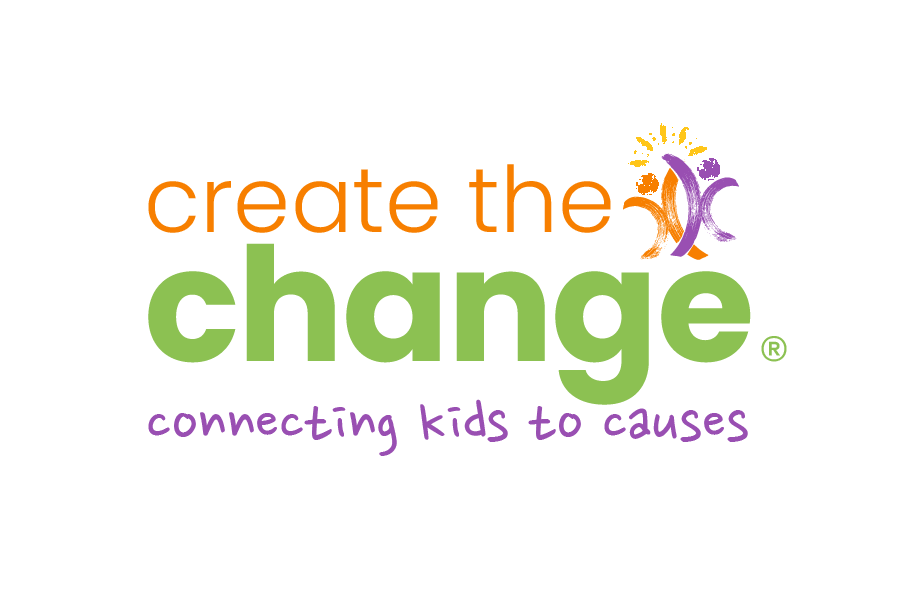




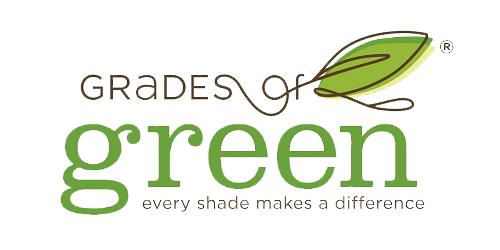















































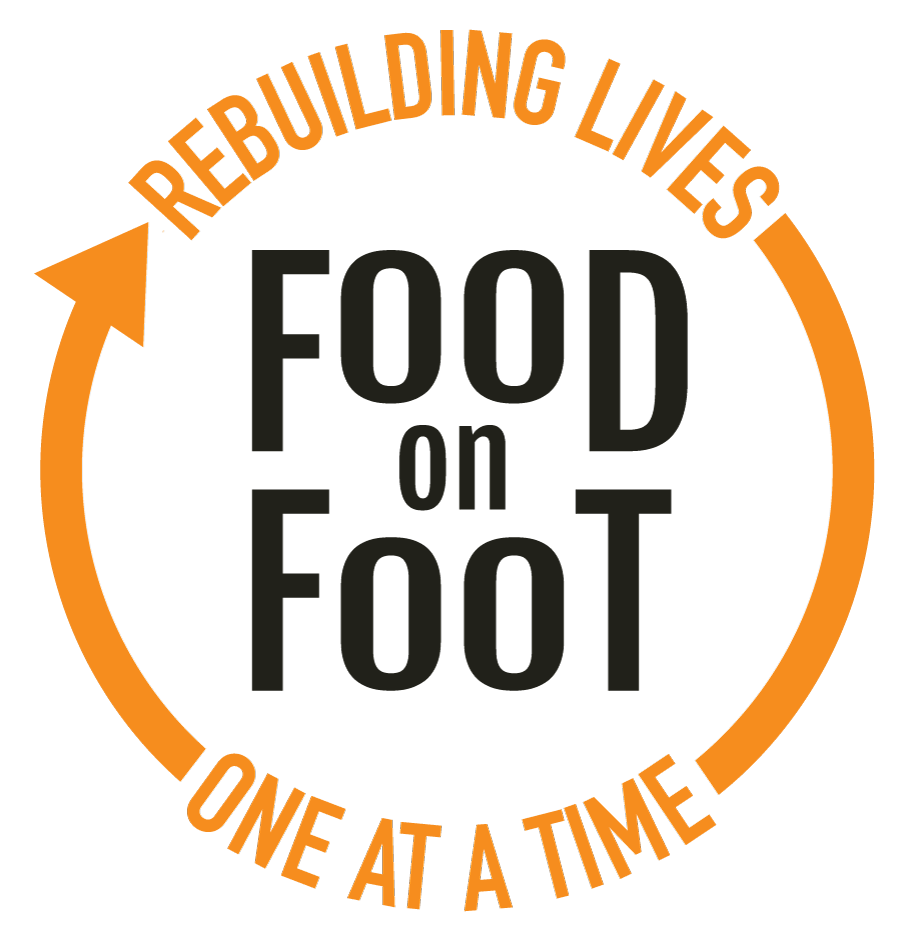





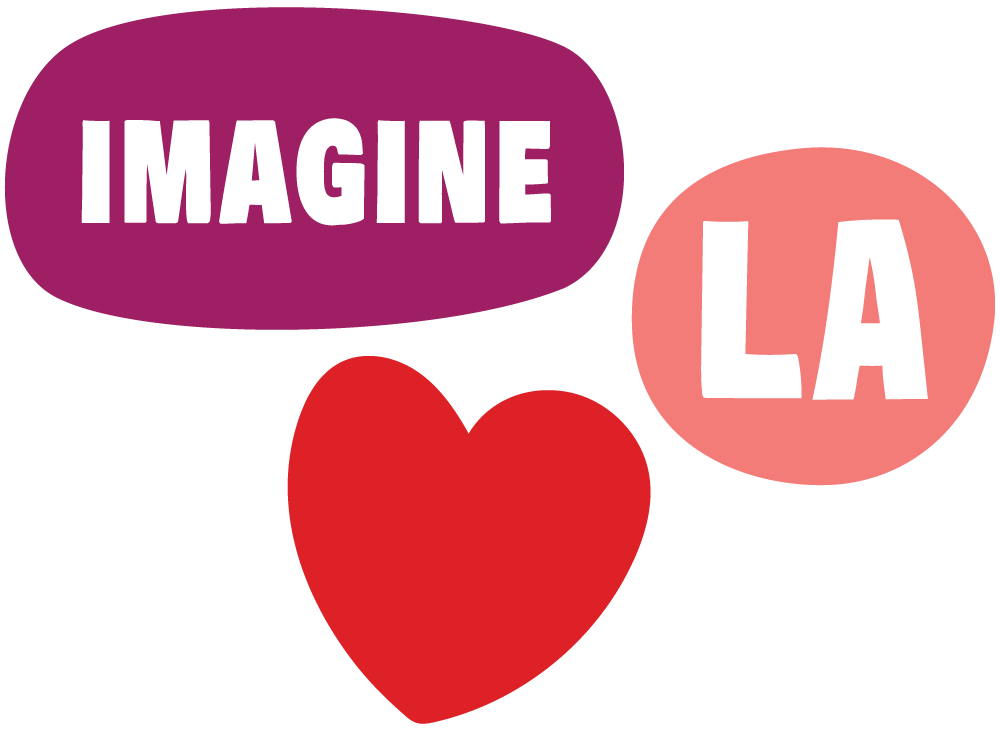
.jpeg)
.png)

.png)




























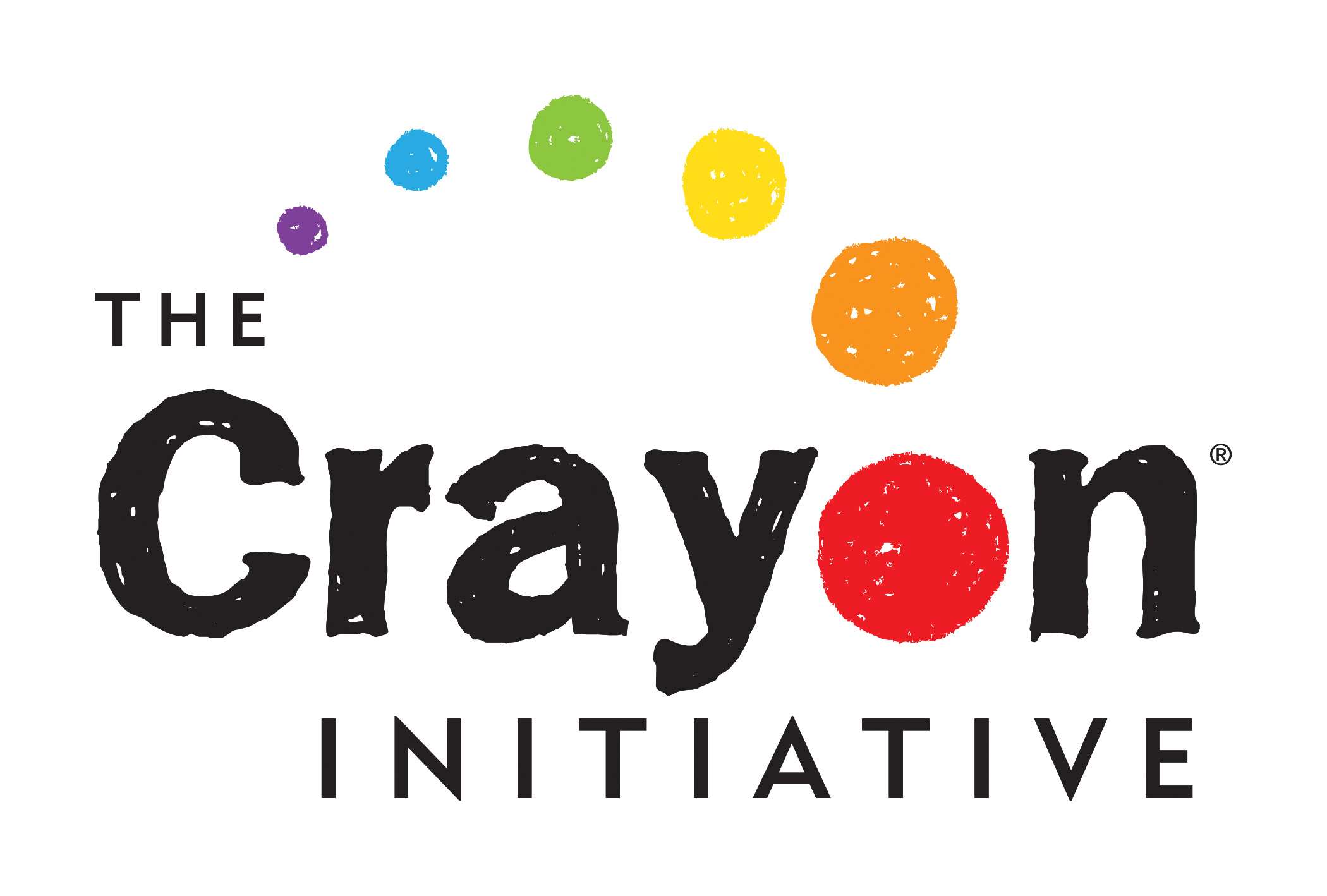


.png)











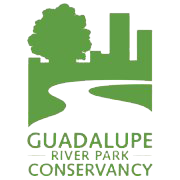

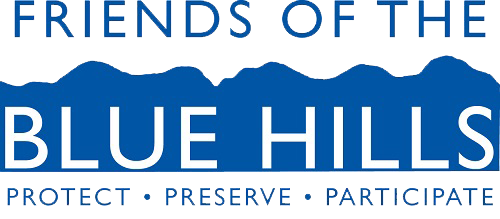



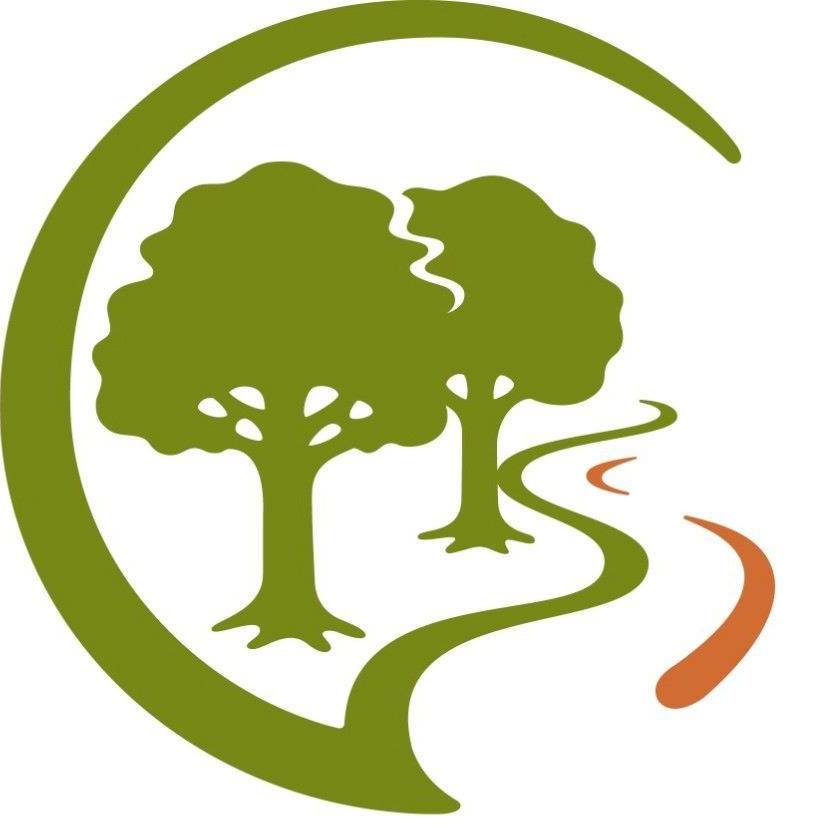






%2c%20Inc..png)




















